Agnibaan - SOrTeD: World’s First 3D-printed Rocket Engine
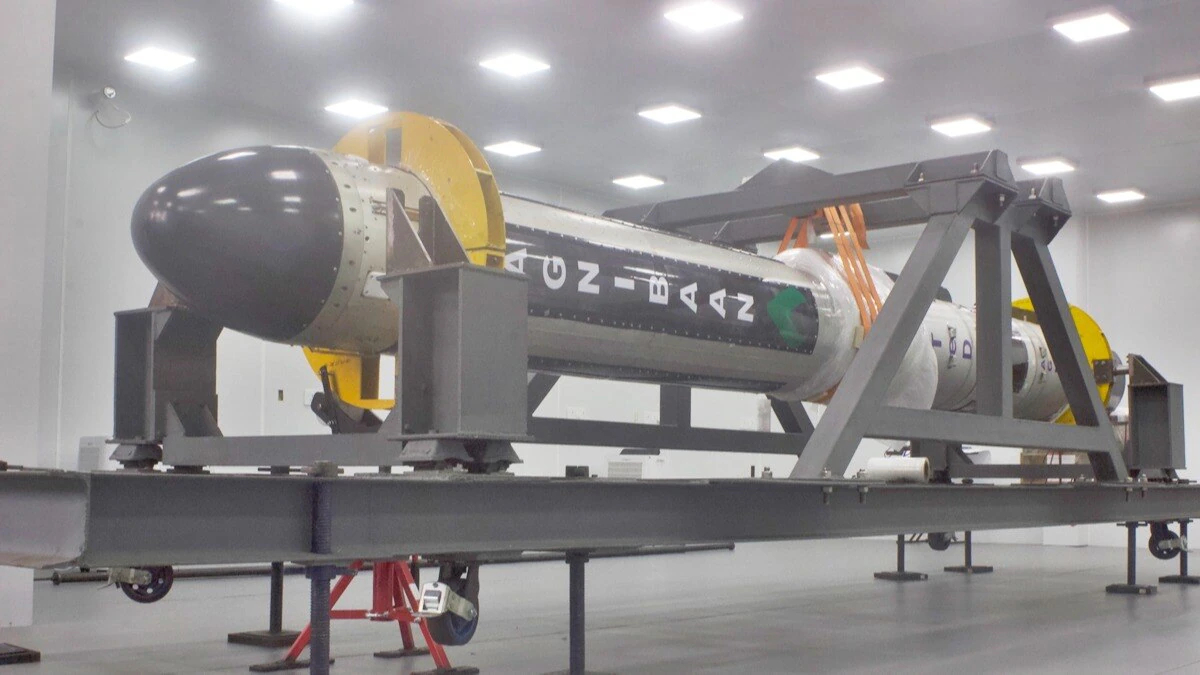
- 31 May 2024
Why is it in the News?
Indian space startup Agnikul Cosmos on Thursday successfully launched its first sub-orbital test vehicle powered by the world’s first single-piece 3D-printed rocket engine, after calling off its launch at least four times previously.
What is Agnibaan - SOrTeD?
- Agnibaan SOrTeD is a sub-orbital technological demonstrator of the Agnibaan launch vehicle, manufactured by Indian space startup Agnikul Cosmos.
- A sub-orbital launch reaches outer space but does not complete an orbit around Earth, intersecting the Earth's atmosphere or surface without becoming an artificial satellite or reaching escape velocity.
- This marks Agnikul’s fifth launch attempt since March 22. With this launch, AgniKul became the second private company to achieve a rocket launch in India, following Skyroot's successful flight in 2022.
Features:
- It is a customizable, two-stage launch vehicle capable of carrying up to 300 kg into an orbit approximately 700 km above Earth.
- Semi-Cryogenic Engine: Utilizes a combination of liquid and gaseous propellants, operating at temperatures higher than cryogenic engines but lower than traditional liquid rocket engines.
- Uses refined kerosene, which is lighter and can be stored at normal temperatures, allowing more propellant to be carried. When combined with liquid oxygen, kerosene provides higher thrust.
- The test flight aims to demonstrate in-house, homegrown technologies, gather crucial flight data, and ensure the optimal functioning of systems for AgniKul's orbital launch vehicle, Agnibaan.
- The rocket is designed for accessing both low and high-inclination orbits and is completely mobile, enabling launches from more than 10 ports.
Agnibaan Acheivments:
- World’s First 3D-Printed Engine: Agnibaan is the first rocket to use a 3D-printed engine.
- First Semi-Cryogenic Engine-Powered Rocket Launch: Pioneering the use of semi-cryogenic engines in rocket launches.
- India’s First Private Launchpad Rocket Launch: The first Indian rocket launch conducted from a private launchpad.
- Unique Engine Configuration: Powered by the only engine in India that uses both gas and liquid fuel (liquid oxygen/kerosene).
Significance:
- Typically, rocket engine parts are manufactured separately and assembled later.
- The 3D-printed manufacturing process is expected to lower launch costs and reduce vehicle assembly time, offering affordable launch services for small satellites.
About 3D Printing:
- 3D printing, also known as additive manufacturing, creates three-dimensional objects from digital models by adding material layer by layer.
- This process, which uses materials like plastic, composites, or bio-materials, allows for efficient and customized production, contrasting with traditional subtractive manufacturing methods.
Notable Examples of 3D Printing:
- Industry Applications: 3D printing is widely used in industries such as healthcare, automotive, and aerospace.
- Aerospace: In May, Relativity Space launched a test rocket made entirely from 3D-printed parts, standing 100 feet tall and 7.5 feet wide.
- However, the rocket experienced a failure shortly after takeoff.
- Healthcare: During the peak of the COVID-19 pandemic in 2020, 3D printers were utilized to produce essential medical equipment, including swabs, face shields, masks, and parts for ventilators.
Urban Heat Island Effect
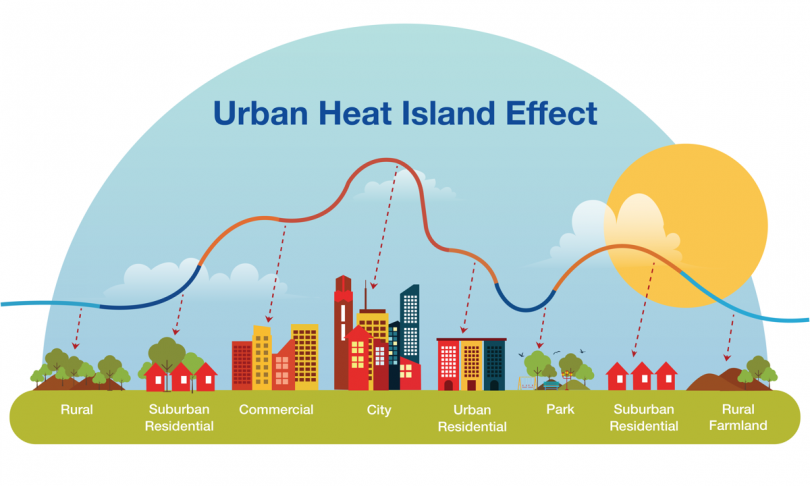
- 31 May 2024
Why is it in the News?
Large parts of the country are witnessing a searing and longer-than-usual heatwave, with record-breaking day temperatures.
What is an Urban Heat Island?
- An urban heat island occurs when a city experiences much warmer temperatures than nearby rural areas.
- The difference in temperature between urban and less-developed rural areas has to do with how well the surfaces in each environment absorb and hold heat.
What is the Urban Heat Island Effect?
- Structures made of concrete — buildings, pavements, roads, and other infrastructure — absorb and re-emit the sun’s heat more than natural features like trees and water bodies.
- Cities, where these structures are concentrated, and greenery is limited, thus become “islands” of higher temperature compared to surrounding, greener, areas.
- This is called the urban heat island effect. And since heat is trapped in built-up structures, greater urbanisation has a direct correlation with the rise in night temperatures.
How do humidity and warm nights impact the human body?
- The rise in temperatures, humidity, and warmer nights together make the summer more deadly for human beings.
- Humans regulate their body temperatures by sweating, the evaporation of sweat from the skin cools our bodies.
- However high humidity prevents this from happening, which can take a toll on the body.
- Reacting to heat, “the heart starts pumping more blood to our skin.
- This activates the sweat glands which help regulate body temperature.
- But as a result of sweating, other organs get less blood flow.
- In humid conditions, the body continues to sweat with little avail.
- This not only leads to dehydration and salt imbalances but also takes a toll on organs due to reduced blood flow.
- And it leads to the body overheating as its temperature-regulation mechanism is not working.
- If the temperatures are too high, the cellular processes in the brain also get affected.
- This can initially lead to fainting, and in more serious cases, effects such as heat stroke and organ malfunction.
At the very basic level, more humidity and warmer nights do not allow our bodies to rest and recuperate”.
Recombinant Proteins
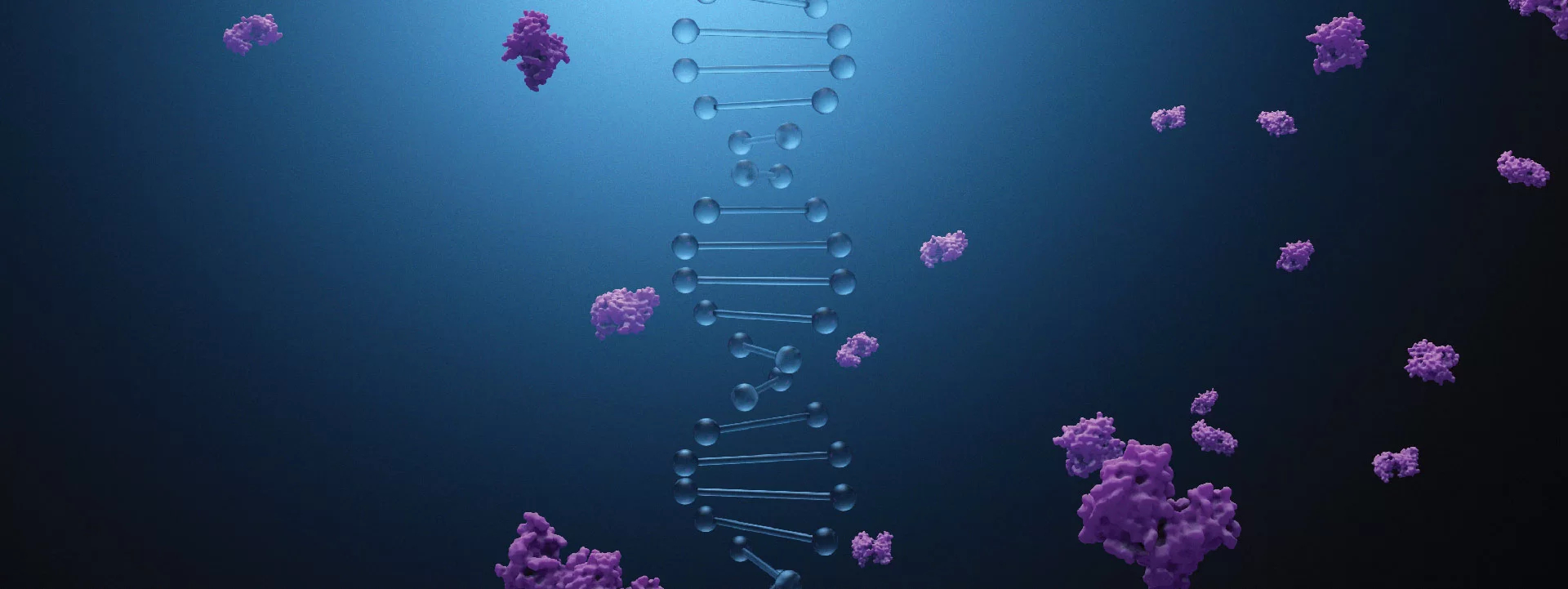
- 31 May 2024
Why is it in the News?
Researchers at the Department of Biochemistry, Indian Institute of Science, have developed a novel method for the production of recombinant proteins.
What are Recombinant Proteins?
- A recombinant protein is a protein that has been produced by the means of recombinant DNA – DNA that has been modified in order to encode the blueprint of a protein of interest.
- Recombinant proteins are produced in host cells, in which recombinant DNA has previously been inserted so that the cells’ ribosomes are instructed to express the recombinant protein instead of what the cells’ original DNA would have encoded.
What are recombinant proteins in biotechnology?
- In biotechnology, recombinant proteins are proteins that have been produced by host cells, according to artificially modified DNA (recombinant DNA) instead of the cells’ own DNA.
- The recombinant DNA is inserted into host cells by means of a suitable vector, after which protein expression commences according to this blueprint.
- Once harvested, recombinant proteins are used for various purposes within life sciences and medicine, e.g. in research, but also the treatment of several diseases.
What are the techniques in recombinant protein production?
- genetic engineering, DNA cloning and vector design
- transfection of host cells (bacterial, yeast, mammalian)
- protein expression and purification
Recombinant protein examples:
-
- human insulin
- human growth factors
- factor VIII – treatment for haemophilia
- therapeutic monoclonal antibodies
- various research reagents
What are recombinant proteins used for?
- Recombinant proteins are widely used in many fields of life sciences, e.g. for research purposes, but also in the treatment of various diseases.
- This is because they are frequently chosen in the production of biopharmaceuticals, for instance when designing monoclonal antibody therapies.
- In the treatment of diabetes, recombinant proteins are also an essential keystone, being used in the production of human insulin.
Benefits of recombinant proteins:
- High Purity: Recombinant proteins can be produced with a high degree of purity, reducing the risk of contamination or impurities in experimental applications.
- Customization: Researchers can design and produce recombinant proteins with specific modifications, tags, or mutations to suit their experimental needs.
- Scalability: The possibility to scale up recombinant protein production makes it suitable for industrial and therapeutic applications.
- Consistency: The production of recombinant proteins can be tightly controlled, ensuring consistent quality and reproducibility in experiments or drug manufacturing.
Cost-Effectiveness: Compared to traditional methods of obtaining proteins from natural sources, recombinant protein production can be more cost-effective, especially for rare or complex proteins.
Global Food Policy Report 2024
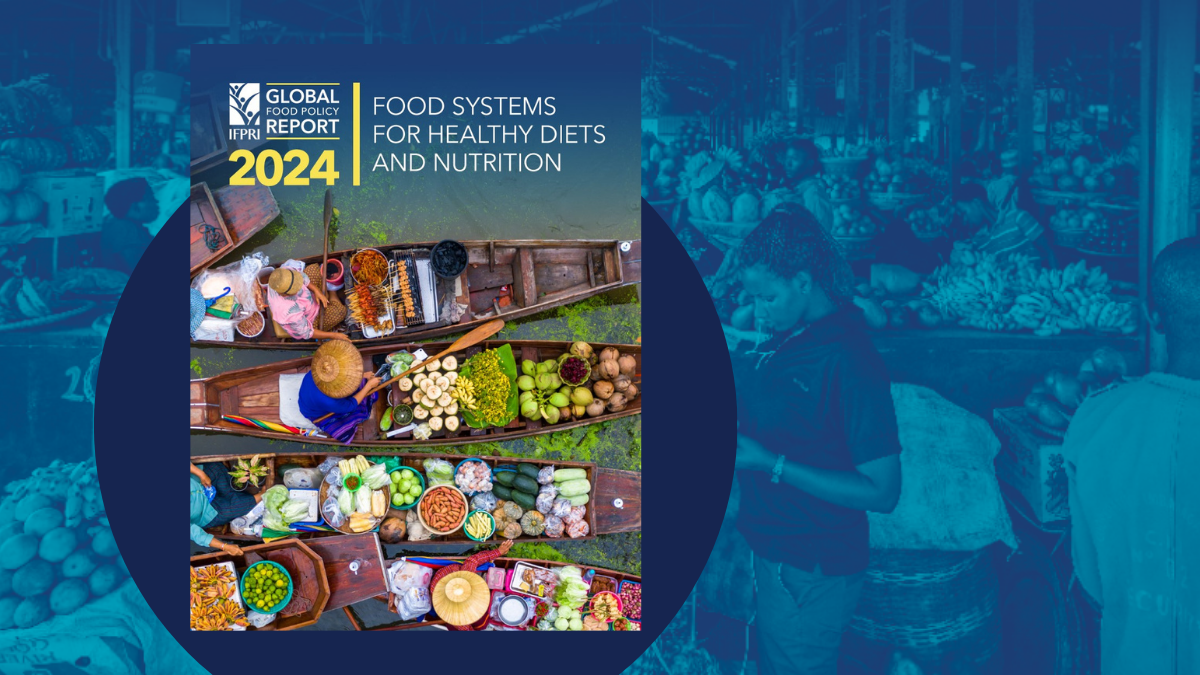
- 31 May 2024
Why is it in the News?
A new global report has raised concerns about dietary habits in India, highlighting a significant increase in the consumption of unhealthy foods compared to nutritious options.
Key Highlights of the Global Food Policy Report 2024:
- Diet Quality in India: At least 38% of the Indian population consumed unhealthy foods, while only 28% ate all five recommended food groups: one starchy staple, one vegetable, one fruit, one pulse/nut/seed, and one animal-source food.
- Trends in Food Consumption: The intake of calorie-dense, nutrient-poor foods is not only high but increasing, whereas the consumption of vegetables and other micronutrient-rich foods remains low.
- Processed Foods in South Asia: In India and other South Asian countries, the consumption of processed foods is on the rise. After cereals and milk, snacks and prepared foods make up a significant portion of Indian food budgets.
- Malnutrition Rates in India: The proportion of the population suffering from malnutrition in India increased from 15.4% in 2011 to 16.6% in 2021.
- Overweight Prevalence: The prevalence of overweight adults in India rose from 12.9% in 2006 to 16.4% in 2016.
- Packaged Foods: The share of household food budgets spent on packaged, highly processed, calorie-dense foods nearly doubled from 6.5% to 12% during this period.
- Cost of Nutrient-Rich Foods: In the South Asian region, micronutrient-rich foods are expensive, while cereals, fats, oils, sugar, and sugary and salty snacks are relatively inexpensive.
About the International Food Policy Research Institute (IFPRI):
- The International Food Policy Research Institute (IFPRI) provides research-based policy solutions to sustainably reduce poverty and end hunger and malnutrition in developing countries.
- Established in 1975, it is a research centre of CGIAR, the world’s largest agricultural innovation network.
Vision and Mission:
- IFPRI’s vision is a world free of hunger and malnutrition.
- Its mission is to provide research-based policy solutions that sustainably reduce poverty and end hunger and malnutrition.
IFPRI’s research focuses on five strategic research areas:
-
- Fostering Climate-Resilient and Sustainable Food Supply
- Promoting Healthy Diets and Nutrition for All
- Building Inclusive and Efficient Markets, Trade Systems, and Food Industry
- Transforming Agricultural and Rural Economies
- Strengthening Institutions and Governance
Headquarters: Washington, D.C
Cryonics

- 31 May 2024
Why is it in the News?
An Australian cryonics company, Southern Cryonics, sparked a widespread debate after successfully freezing their first client, known as ‘Patient One’.
What is Cryonics?
- Cryonics is the practice of preserving human bodies in extremely cold or cryogenic temperatures (−196°C) with the hope of reviving them sometime in the future.
- Cryonics procedures can begin only after the "patients" are clinically and legally dead.
- When a dead body is cryonically preserved, it is packed with ice and injected with anticoagulants, a treatment to stop blood from clotting.
- The body is then transported to one of three cryonic centres in the world.
- There, in a process known as vitrification, the body is drained of its blood, which is then replaced with chemicals and anti-freeze.
- The body is placed in a sleeping bag and housed in a tank of liquid nitrogen at -196 degrees Celsius.
- The premise of cryonics is based on a possibility rather than a probability of success.
- There is no scientific evidence to suggest that it is possible to revive a person back to a living state.
- Cryobiologists hope that with future technology, including nanotechnology, they will be able to repair cells and tissues that are damaged during the freezing process.
Is cryonics ethical?
- There are some arguments in favour of cryonics, the simplest of which is one of free will and choice.
- As long as people are informed of the very small chance of success of future re-animation, and they are not being coerced, then their choice is an expression of their autonomy about how they wish to direct the disposal of their bodies and resources after death.
- In this light, choosing cryonics can be seen as no different to choosing cremation or burial, albeit a much more expensive option.
- However, this case raises several other ethical and problematic concerns.
- There is the issue of potentially exploiting vulnerable people.
- Some might argue vulnerable people are trading hype for hope.
- The cryonic process might work, but imperfectly. During the process of re-animation, there may be some brain damage.
- That would mean rather than waking up, one might be unconscious or trapped in some disordered, uncontrollable painful stream of consciousness.
It might be heaven but it might also be hell. The key issue is that people must be made aware of the risks as well as the benefits, and are not exploited.
AMRUT scheme
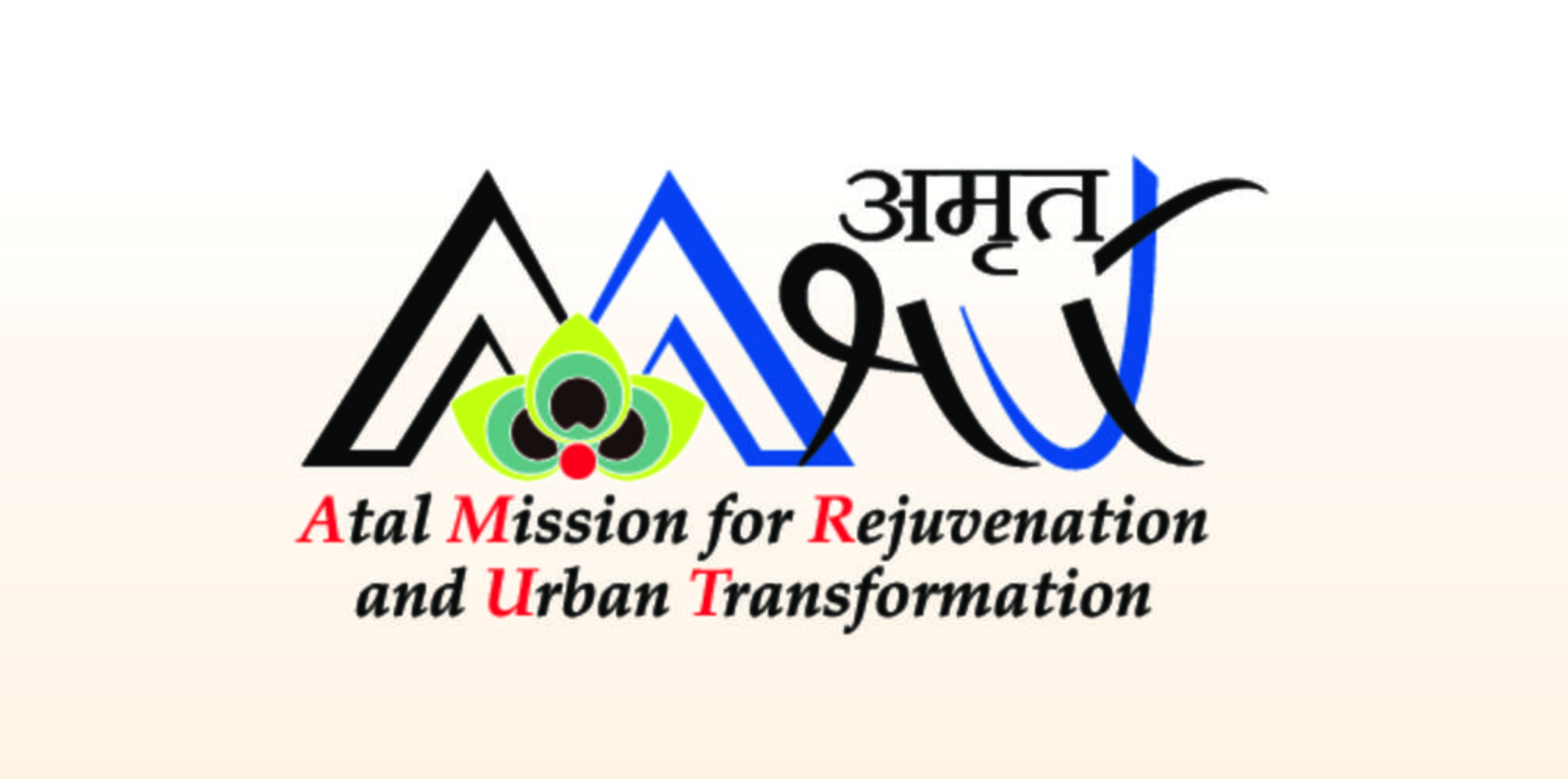
- 30 May 2024
Why is it in the News?
Around 36% of India’s population is living in cities and by 2047 it will be more than 50%. The World Bank estimates that around $840 billion is required to fund the bare minimum urban infrastructure over the next 15 years.
About Atal Mission for Rejuvenation and Urban Transformation (AMRUT):
- AMRUT was launched to enhance the quality of life by providing basic civic amenities, especially benefiting the poor and disadvantaged.
- The mission focuses on infrastructure development to deliver better services to citizens.
- AMRUT covers 500 cities, including all cities and towns with a population of over one lakh that have notified Municipalities.
About AMRUT 2.0:
- AMRUT 2.0 will promote circular economy of water through development of City Water Balance Plan (CWBP) for each city focusing on recycle/reuse of treated sewage, rejuvenation of water bodies and water conservation.
- It will help cities to identify scope for projects focusing on universal coverage of functional water tap connections, water source conservation, rejuvenation of water bodies and wells, recycle/reuse of treated used water, and rainwater harvesting.
- Based on the projects identified in CWBP, Mission envisages to make cities ‘water secure’ through circular economy of water.
The target in the second phase of AMRUT is to:
-
- Improve sewage and septic management
- Make cities water-safe
- Ensure no sewage drains into rivers
- AMRUT 2.0 focuses on enhancing sewerage and septic management to make all Indian cities water secure.
Aim:
- Achieve 100% coverage of water supply to all households in around 4,700 urban local bodies by providing about 2.68 crore tap connections.
- Achieve 100% coverage of sewerage and septage in 500 AMRUT cities by providing around 2.64 crore sewer or septage connections.
Principles and Mechanism:
- Adopt principles of the circular economy to promote conservation and rejuvenation of surface and groundwater bodies.
- Promote data-led governance in water management and leverage the latest global technologies and skills through a Technology Sub-Mission.
- Conduct 'Pey Jal Survekshan' to encourage competition among cities for better water management.
Coverage:
- Extend coverage from 500 cities in the first phase to 4,700 cities and towns.
- Benefit more than 10.5 crore people in urban areas.
Analysis of the AMRUT Scheme:
Performance of the Scheme:
- As of May 2024, the AMRUT dashboard reports that ?83,357 crore has been disbursed. This funding has facilitated:
- 58,66,237 tap connections
- 37,49,467 sewerage connections
- Development of 2,411 parks
- Replacement of 62,78,571 LED lights
Criticism of the Sheme:
Despite these achievements, significant issues persist:
- Approximately 2,00,000 people die annually due to inadequate water, sanitation, and hygiene.
- In 2016, India's disease burden from unsafe water and sanitation was 40 times higher per person than China's, with minimal improvement since then.
- Large volumes of untreated wastewater increase disease vulnerability.
- Around 21 major cities are expected to run out of groundwater. A NITI Aayog report predicts that 40% of India's population will lack access to drinking water by 2030.
- Nearly 31% of urban households lack piped water, and 67.3% are not connected to a piped sewerage system.
- The average urban water supply is 69.25 litres per person per day, far below the required 135 litres.
- Air quality in AMRUT cities and other urban areas continues to worsen.
- While the National Clean Air Programme was launched in 2019 to address air quality, AMRUT 2.0 focuses primarily on water and sewerage issues.
Challenges:
The AMRUT scheme has faced several fundamental challenges:
- Project-Oriented Approach: The scheme adopted a project-oriented rather than a holistic approach.
- Lack of City Participation: It lacked significant involvement from elected city governments, being driven instead by bureaucrats, parastatals, and private companies.
- Governance Issues: Governance was dominated by non-elected officials, violating the 74th constitutional amendment.
- The apex committee was led by the MOHUA secretary, and state committees were headed by chief secretaries, excluding people's representatives.
- Private Nexus: The scheme favored a private nexus of consultants and professionals, sidelining local elected officials.
- Water Management: Effective water management in cities requires consideration of climate, rainfall patterns, and existing infrastructure, which the scheme did not adequately address.
- Inefficient Sewage Treatment: Sewage treatment plants were inefficiently designed, with faecal matter traveling longer distances than the average worker's commute.
- Urban Planning: Driven by private players and real estate developers, urban planning often led to the disappearance of water bodies, disrupted stormwater flows, and a lack of proper stormwater drainage systems.
Way Forward:
To improve the AMRUT scheme:
- Nature-Based Solutions: Implement nature-based solutions.
- Comprehensive Methodology: Adopt a comprehensive methodology that integrates all aspects of urban development.
- People-Centric Approach: Focus on a people-centric approach, involving local communities in decision-making.
Empower Local Bodies: Empower local bodies to take a leading role in governance and implementation.
New Light-based Tool to Detect Viral Infections
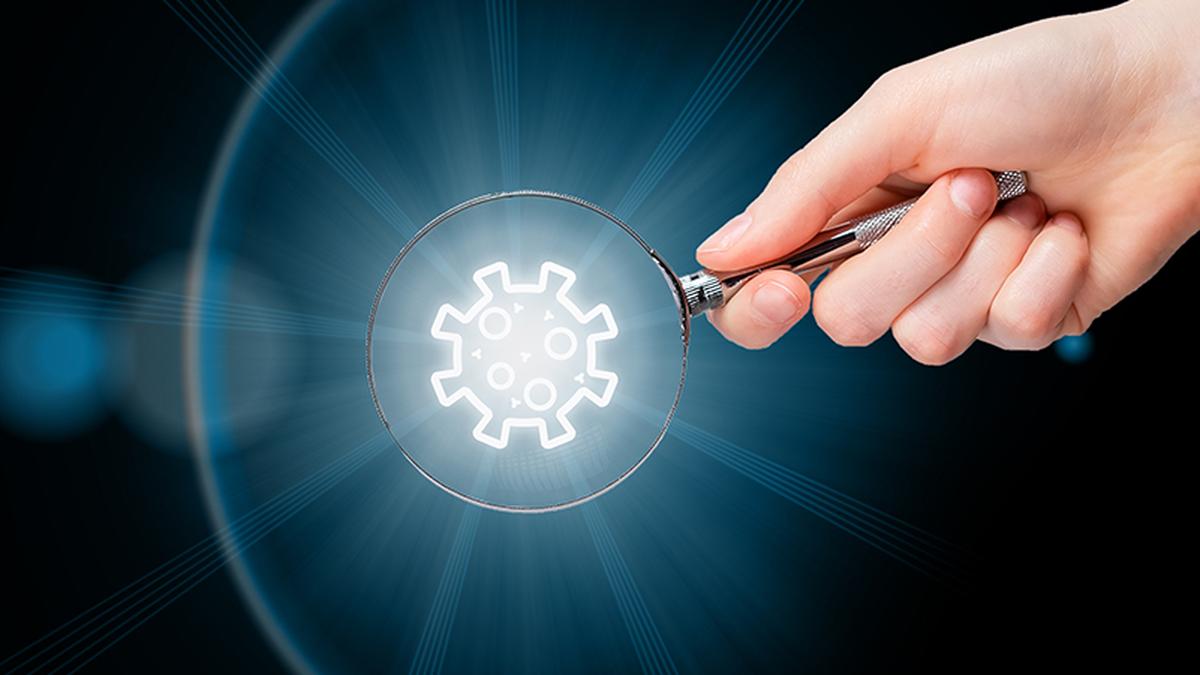
- 30 May 2024
Why is it in the News?
A viral infection can stress cells and change their shapes and sizes. Researchers have built a tool to detect these changes.
About the new Tool:
- A team of researchers has developed an innovative method to detect viral infections in cells using only light and principles of high-school physics.
- The key insight is that viral infections can stress cells, causing changes in their shapes, sizes, and other features.
- As the infection progresses and the body becomes diseased, these changes become more pronounced.
- The researchers have found a way to translate these cellular changes into recognizable patterns that can indicate whether a cell is uninfected, virus-infected, or dead.
- For example, virus-infected cells tend to be elongated and have clearer boundaries compared to uninfected cells.
- By analyzing the patterns of light interacting with cells, this method can non-invasively differentiate between uninfected, virus-infected, and dead cells.
- This approach has the potential to revolutionize viral disease diagnosis and monitoring, providing a simple, cost-effective, and powerful tool for detecting viral infections at the cellular level.
Significance:
- This light-based approach to detecting viral infections offers several significant advantages over the current standard methods:
- Accuracy: The new light-based technique can detect viral infections with equal or even greater accuracy compared to existing standard methods that rely on chemical reagents.
- Cost-effectiveness: The equipment required for this new method costs only around one-tenth of the $3,000 (approximately Rs 2.5 lakh) needed for the standard chemical-based approach, making it a far more affordable option, especially for resource-constrained settings.
- Rapid results: The light-based method can identify virus-infected cells in just about two hours, significantly faster than the 40 hours required by the current standard method.
- This time efficiency can be crucial in situations where rapid detection is essential, such as during a virulent disease outbreak.
- Early detection: By enabling the early detection of viral infections at the cellular level, this new technique could prove invaluable in containing the spread of highly contagious viral diseases, such as a severe influenza outbreak.
What are Viruses?
- Viruses are microscopic organisms capable of infecting various hosts such as humans, plants, animals, bacteria, and fungi.
- Structurally, they consist of genetic material (DNA or RNA) enclosed in a protective shell called a capsid, with some viruses also possessing an envelope.
- Unable to reproduce independently, viruses rely on host cells to replicate by utilizing the cell's machinery.
- Common types include influenza viruses, human herpesviruses, coronaviruses, human papillomaviruses, enteroviruses, flaviviruses, orthopoxviruses, and hepatitis viruses.
- Viruses are responsible for causing illnesses such as flu, the common cold, and COVID-19.
Dag Hammarskjold Medal
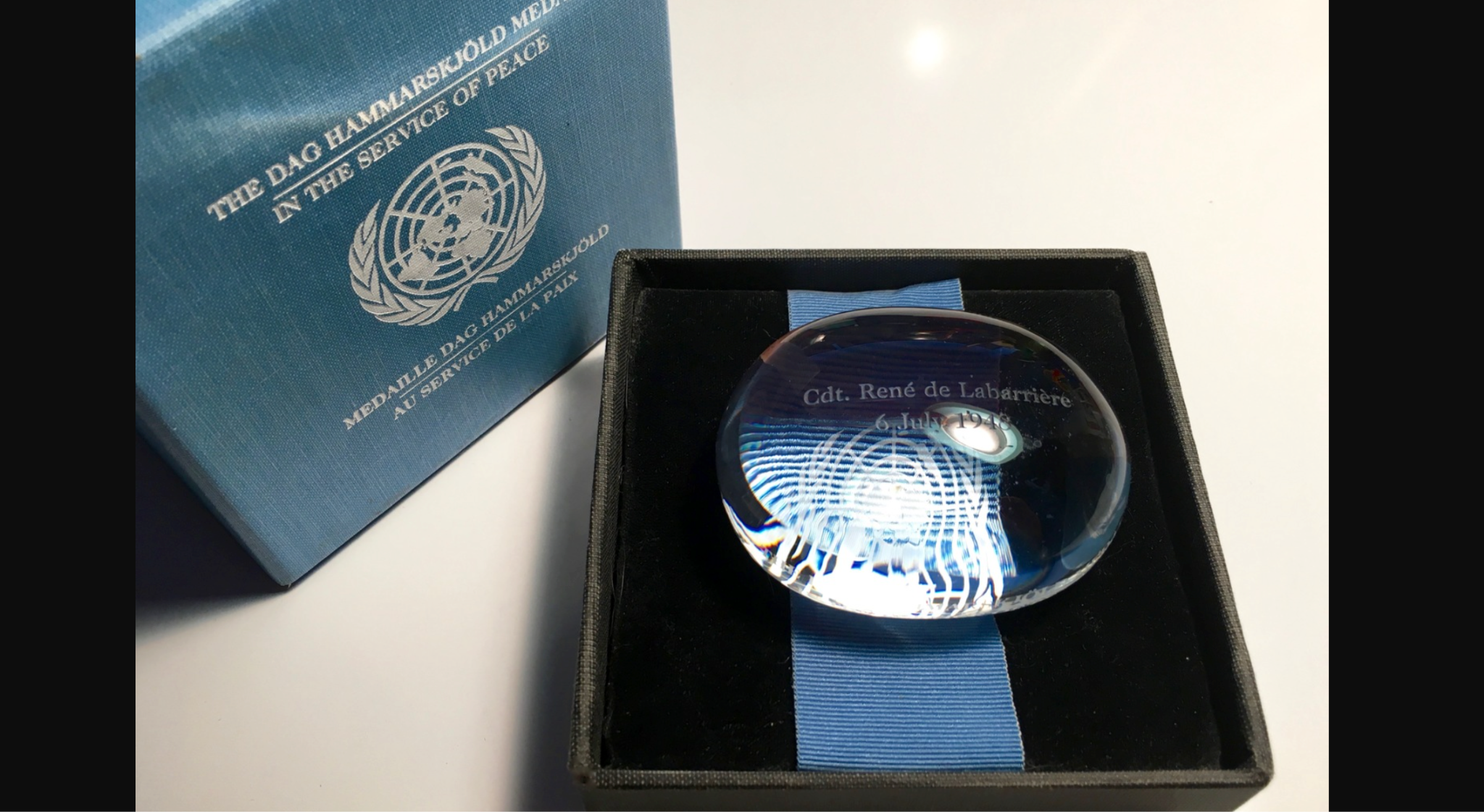
- 30 May 2024
Why is it in the News?
An Indian peacekeeper who lost his life serving under the UN flag is among over 60 military, police and civilian peacekeepers to be honoured posthumously with a prestigious medal for their service and supreme sacrifice in the line of duty.
What is Dag Hammarskjold Medal?
- The Dag Hammarskjold medal is a prestigious honour commemorating the ultimate sacrifice made by United Nations peacekeepers.
- Established in 1997, it pays tribute to those who have lost their lives while serving in UN peacekeeping missions under the organization's operational control and authority.
- This posthumous award is presented annually on Peacekeeper's Day at a solemn ceremony held at the United Nations headquarters in New York.
- Each member state that has had military or police personnel perish during peacekeeping duties receives the medal in recognition of their fallen compatriots.
- The medal bears the name of Dag Hammarskjold, the second Secretary-General of the United Nations, whose own life was tragically cut short in 1961 while working to resolve the Congo crisis.
- In naming this honour after him, the UN commemorates both his exceptional leadership and the courageous individuals who have followed in his footsteps by making the ultimate sacrifice for the cause of global peace and security.
India’s Role in Peacekeeping:
- India is currently the second largest contributor of uniformed personnel to UN Peacekeeping after Nepal.
- India is followed by Uganda with 5,764 personnel, and Bangladesh with 5,393.
- These personnel are deployed across 12 UN peacekeeping missions across the world.
- Traditionally, India has always been among the biggest contributors of UN peacekeepers.
- Since 1950, approximately 2, 86,000 Indian soldiers have served in the UN across the globe.
- UN peacekeeping missions are mandated under Article 99 by which the Secretary-General is granted the authority to independently address potential global conflicts or threats.
- Also seen as a very robust diplomatic tool, it is also a way in which the Secretary-General flags the issue to the UN Security Council.
- The functions of UN peacekeeping operations range from maintaining peace and security to escorting humanitarian relief, upholding human rights, supporting the fight against gender-based violence to assist in the restoration of the rule of law and facing the complex crises of today from climate change to pandemic.
Microcephaly
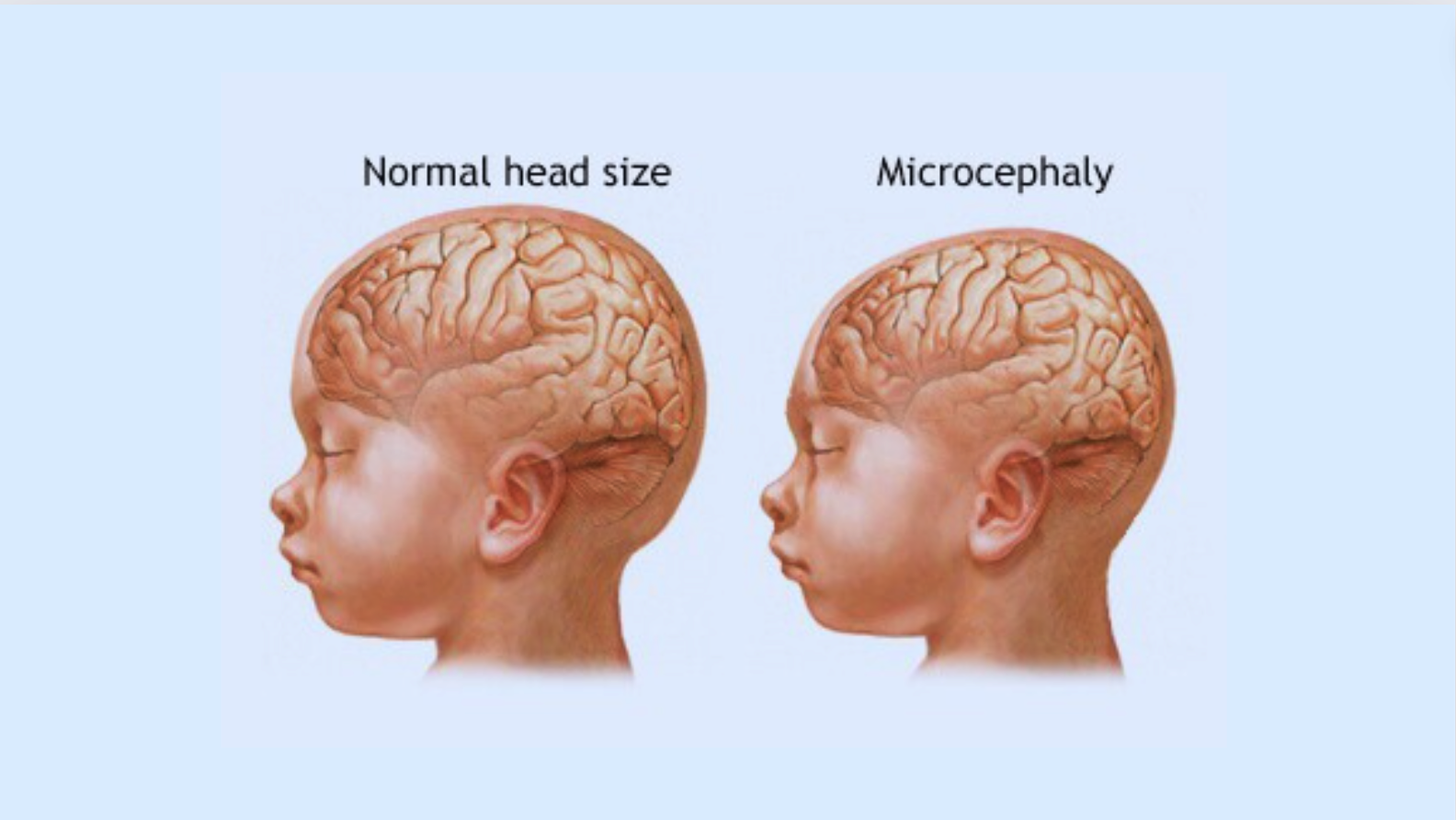
- 30 May 2024
Why is it in the News?
A study recently revealed that a gene called SASS6 and its variants have been implicated in a developmental process that causes microcephaly.
What is Microcephaly?
- Microcephaly is a condition where a baby's brain and head do not develop properly during pregnancy or after birth.
- While rare, it can have profound impacts on a child's cognitive and physical abilities.
- Several factors can disrupt normal brain growth, including infections the mother contracts while pregnant, exposure to toxic substances, genetic disorders, lack of proper nutrition, and injuries before or around the time of birth.
- Infants with microcephaly are born with abnormally small heads compared to others of the same age and sex.
- This small head size indicates an undersized brain.
- As they grow older, many children with microcephaly experience significant developmental delays and disabilities.
- Common symptoms include intellectual disability, impaired motor skills and speech, vision and hearing problems, seizures, and unusual facial features.
- Some cases may show no obvious symptoms at birth, only for challenges to emerge over time.
- Treatment: Unfortunately, there is no cure for microcephaly itself.
- However, early intervention programs, therapies, and educational supports can help manage symptoms and maximize the child's developmental potential within their abilities.
- While microcephaly's causes are varied, maintaining good health before and during pregnancy gives a baby the best chance for proper brain growth.
Preventing prenatal infections, avoiding toxins, getting prenatal screening for disorders, and ensuring adequate nutrition all reduce microcephaly risk.
eMigrate Project
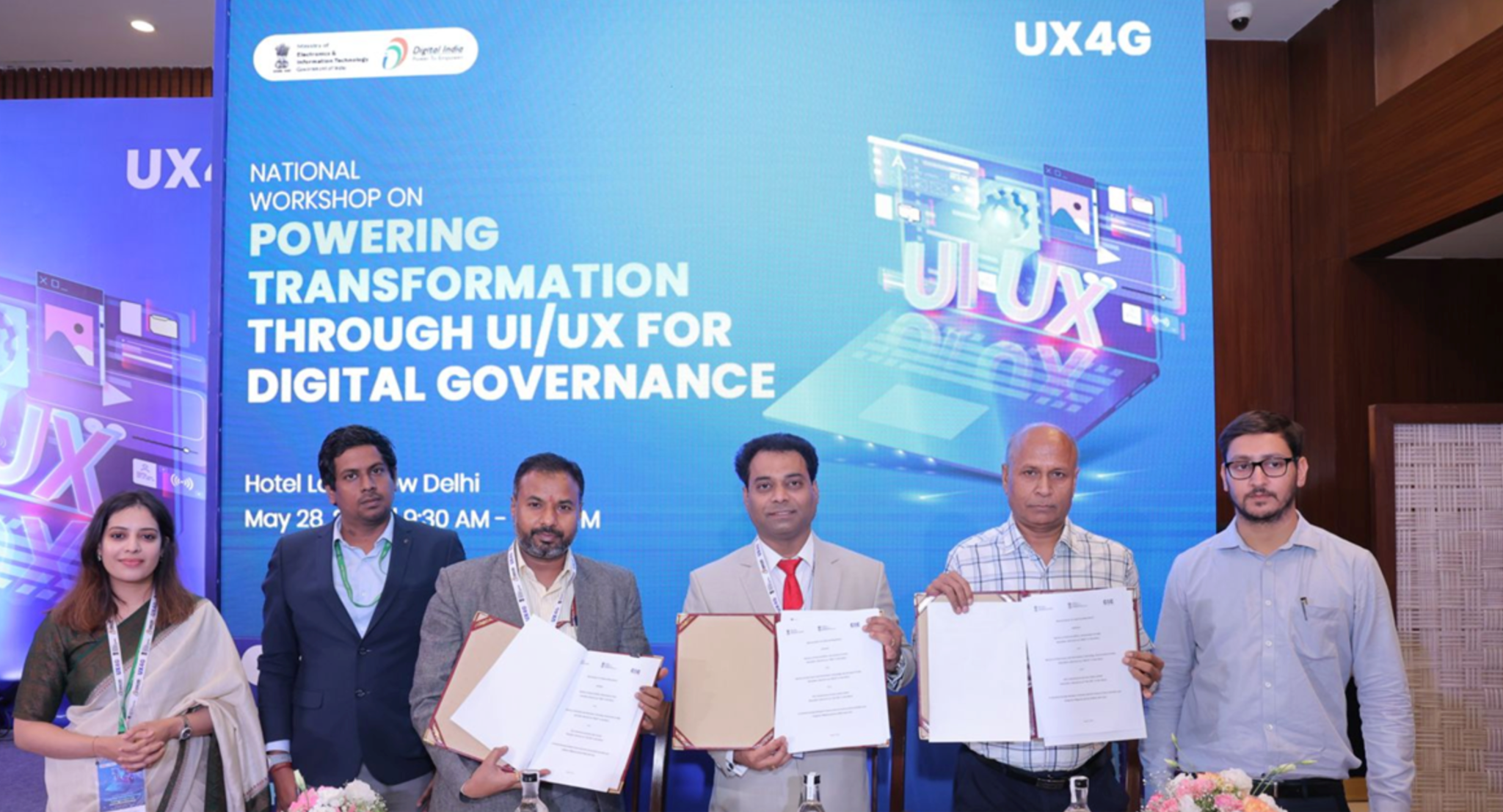
- 30 May 2024
Why is it in the News?
External Affairs Ministry, Ministry of Electronics and Information Technology and Common Services Centers eGovernance Services India Limited have signed a Memorandum of Understanding today to provide the eMigrate services through CSC in the country.
What is the eMigrate Project?
- eMigrate project is undertaken to assist mainly the blue-collar workers going to Emigration Check Required (ECR) countries.
- The project was conceptualized to address issues faced by migrant workers by making the emigration process online seamless and also to bring foreign employers registered recruitment agents and insurance companies on one common platform aimed at promoting safe and legal migration.
- Over the years, the number of Indians going abroad for employment has been increasing as well as the contribution of remittances sent by them has been significant.
- Under this MoU, the eMigrate Portal of MEA would be integrated with CSC’s portal, to provide the following eMigrate services to the citizens through CSCs:
- Facilitate registration of applicants on the eMigrate portal through CSCs.
- Facilitation of uploading and processing of the required documents for the applicants on the eMigrate portal through CSCs.
- Facilitate and support booking for medical and other services required by migrant workers or applicants registered on the eMigrate portal through CSC.
- Creating awareness about eMigrate services amongst citizens across India.
About Common Service Centre (CSC):
- Common Services Centers (CSCs) are an integral part of the Digital India mission.
- The CSCs are frontend service delivery points for the delivery of digital services to the citizens, especially in rural and remote areas across the country.
- This helps in contributing towards the fulfilment of the vision of Digital India and the government’s mandate for a digitally and financially inclusive society.
- Currently, more than 5.50 lakh CSCs are delivering more than 700 digital services to citizens in assisted mode with enhanced ease and convenience.
- Apart from delivering essential government and public utility services, CSCs also deliver a range of social welfare schemes, financial services, educational courses, skill development courses, healthcare, agriculture services, digital literacy, etc.
Landslides in India
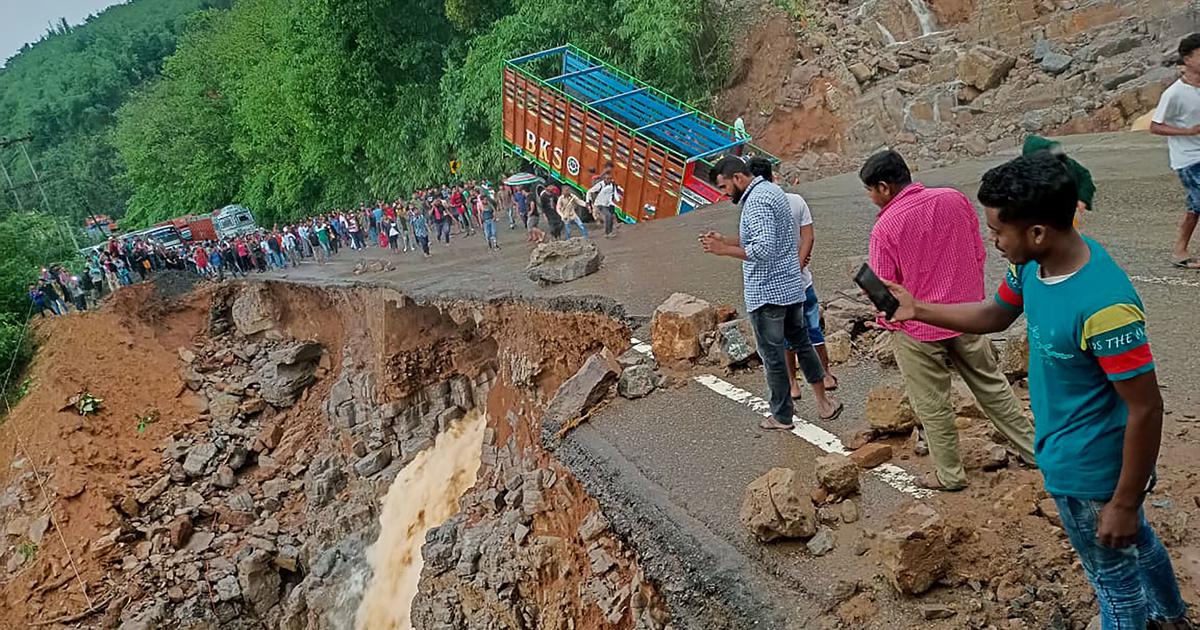
- 29 May 2024
Why is it in the News?
At least 36 people were killed in heavy rains and landslides in four northeastern states on Tuesday under the impact of Cyclone Remal while normal life came to a grinding halt in all the eight states of the region with road and rail links affected.
What are Landslides?
- Landslides in India are one of the major hydro-geological hazards affecting large parts of the landmass of the country.
- It refers to the gravitational movements of a mass of rock, debris, or earth down a slope.
- Landslides are a type of "mass wasting," which denotes any down-slope movement of soil and rock under the direct influence of gravity.
- As per a report from the Geological Survey of India (GSI), 13% of the total land area in India is prone to landslides.
- This covers almost all the hilly regions in the country.
- About 0.18 million square km, or 42% of this vulnerable area is in the Northeastern region, where the terrain is mostly hilly.
What Causes a Landslide in India?
- Deforestation: Removal of trees reduces the binding properties of soil and rocks. This enables the water to seep into the sub-surface, making the topsoil vulnerable.
- For example, the Himalayan region has become more vulnerable to landslides due to the indiscriminate cutting of trees.
- Shifting Cultivation: Shifting cultivation is common in hilly regions and Northeast areas. Every year, residents burn the forests for cultivation purposes.
- However, this deteriorates the quality of topsoil, causing erosion during heavy rainfall. This makes such regions more vulnerable to landslides.
- Heavy Rainfall and Earthquakes: Heavy rainfall and earthquakes often cause landslides.
- For example, heavy rain caused landslides in Talai village of Maharashtra in 2021.
- Mining: Human activities like mining or quarrying remove the vegetation cover and soil gravel. This lowers the groundwater retention capacity. Also, it increases the risk of flooding.
- Therefore, landslides occur due to loose debris or excess floods during an earthquake and heavy rainfall, respectively.
- Urbanisation: Intensive urbanisation and urbanization activities such as establishing commercial housing projects and road construction reduce the vegetation cover which leads to an increasing frequency of landslides.
What Are the Different Types of Landslides?
Landslides in India are divided into four categories:
- Topples: This occurs due to fractures in rocks. It causes tilting for gravitational pull without collapsing.
- Falls: This involves the collapse of rocks or debris from a cliff or slope. It results in the collection of debris at the base of a hill.
- Spread: It occurs in gentle slopes where soft debris or other materials are widely available.
- Slides: It occurs when debris, rocks or soil slide through a slope.
What Are the Impacts of Landslides in India?
- Mud, debris and rocks slide from the slope during landslides.
- This restricts human movement and creates a traffic barrier on highways and railway lines.
- Loss of human lives is one of the severe effects.
- Landslide is the primary factor behind the Joshimath sinking crisis which led to mass evacuation in January 2023.
- It damages houses, roads and buildings.
- This further creates a financial burden for rebuilding infrastructure to rehabilitate the masses.
- The debris sliding down from slopes blocks the river channel fully or partially.
- This makes it difficult for locals to get the water supply.
- Landslides also increase the risk of floods. This is because the debris increases the river sediment.
- As a result, irregular course rivers become frequent, resulting in floods.
What Are the Measures Required to Prevent Landslides?
- An increase in forest cover is a must in community lands to reduce the hazard of landslides.
- People must store the excess water in catchment areas.
- It will reduce the effect of flash floods and also recharge groundwater levels.
- People must restrict the grazing of their animals.
- Reduce the urbanisation activities such as building dams or other commercial projects.
Implementation of public awareness regarding preventive measures during landslides and other hazard management is necessary.
Kaza TFCA (Kavango Zambezi Transfrontier Conservation Area) Summit
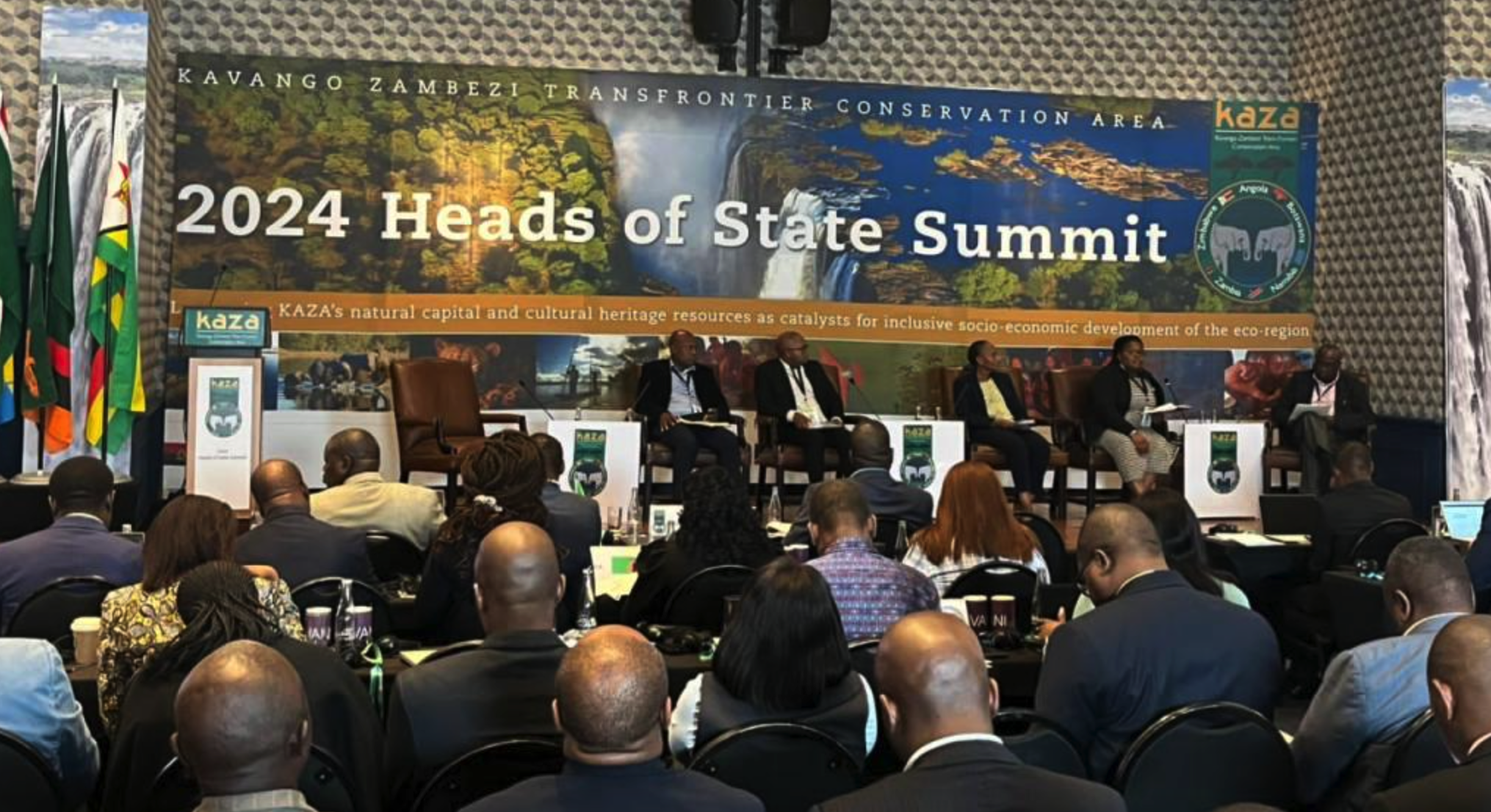
- 29 May 2024
Why is it in the News?
Members states of the world’s largest transnational conservation initiative meet to review progress and strategise the way forward.
About the Kaza TFCA (Kavango Zambezi Transfrontier Conservation Area) Summit:
- The Kaza TFCA (Kavango Zambezi Transfrontier Conservation Area) Summit is a high-level meeting of the heads of state and government representatives from the countries that make up the Kaza TFCA.
- The Kaza TFCA is a conservation area that spans parts of Angola, Botswana, Namibia, Zambia and Zimbabwe.
Some key points about the Kaza TFCA Summit:
- It brings together the political leadership from the five Kaza member countries to discuss issues related to the conservation and sustainable development of the Kaza transfrontier area.
- Topics discussed include wildlife conservation, tourism development, community involvement, and joint management of shared natural resources across international boundaries.
- The Summit aims to strengthen political support, coordination and collaboration among the Kaza partner countries for effective transboundary natural resource management.
- It provides a platform for the member states to review progress made, agree on priorities, and give strategic direction for the Kaza program going forward.
- The Summits are held periodically, with the last one being hosted by Botswana in 2018 in Kasane.
About the Kavango Zambezi Transfrontier Conservation Area:
- The Kavango Zambezi Transfrontier Conservation Area is a 520,000-square-kilometre wetland and spans five southern African countries: Angola, Botswana, Namibia, Zambia and Zimbabwe.
- It is home to a high concentration of wildlife species, including the largest elephant population.
- The KAZA TFCA was formally established on the 18th of August 2011 when the Heads of State of the five governments signed its Treaty in Luanda, Angola, during the SADC Summit for Heads of States.
The KAZA TFCA was established to:
- Conserve the shared natural resources and cultural heritage of this vast area of southern Africa
- Promote and facilitate the development of a complementary and linked network of protected areas that protect wildlife and provide and restore dispersal corridors and migratory routes
- Develop the KAZA TFCA into a world-class tourism destination offering a variety of breathtaking adventures and luxurious relaxation
- Promote the free and easy movement of tourists across borders
- Implement programmes that ensure the sustainable use of natural resources in ways that improve the livelihoods of communities and reduce poverty in the region
- Harmonise conservation legislation and natural resource management of the TFCA
Magellan Mission

- 29 May 2024
Why is it in the News?
After analysing the archived data from the space agency’s Magellan mission, scientists suggest that Venus, the almost Earth-sized planet was volcanically active between 1990 and 1992.
What is the Magellan Mission?
- NASA's Magellan mission to Venus was one of the most successful deep space missions launched from Kennedy Space Center in Florida in the year 1989.
- It was the first spacecraft to image the entire surface of Venus and made several discoveries about the planet.
- Magellan burned up about 10 hours after being commanded to plunge into the Venusian atmosphere.
- Magellan's primary mission was to use a synthetic aperture radar (SAR) to create detailed maps of the surface of Venus.
- The SAR allowed Magellan to penetrate a thick cloud layer which made it challenging to study Venus from Earth.
- By mapping the planet's surface, scientists aimed to investigate the planet's geology and landforms, including its vast plains, steep mountains, and impact craters.
- Magellan was also sent to measure the planet's gravity and magnetic fields.
- This information was considered important to NASA scientists as it would provide more information about the planet's interior structure and composition.
- Because Venus is a planet close to Earth that compares in size and composition, mapping and studying Venus was considered an important mission as it added to understanding the evolution and geology of rocky planets like Earth.
What is the Magellan Spacecraft?
- The Magellan spacecraft was a space probe launched into space on May 4, 1989, by NASA on the Space Shuttle Atlantis.
- NASA named Magellan after the Portuguese explorer Ferdinand Magellan, who was the first documented person to circumnavigate the Earth.
- The Magellan probe aimed to map the planet Venus and collect data about its atmosphere and physical characteristics.
- Venus is the second planet from the sun in the Milky Way solar system and is, along with Mercury, one of two planets that orbit between Earth and the sun.
- Known for being the first spacecraft to map the surface of Venus, Magellan remained in Venus' orbit for four years before being burned up in its atmosphere in October 1994.
What does the study reveal?
- The study identified a 2.2 square kilometre volcanic vent associated with Maat Mons, the second-highest volcano on Venus, located in the Atla Regio near the planet's equator.
- The vent showed signs of drained lava, and the radar images indicated that it had doubled in size over eight months, with the lava lake seeming to have reached the rim. These changes suggested that the vent had been actively erupting and spewing lava.
This discovery provides new insights into the geology and activity of Venus and highlights the importance of studying the planet's surface features to better understand its history and evolution.
Vivekananda Rock Memorial
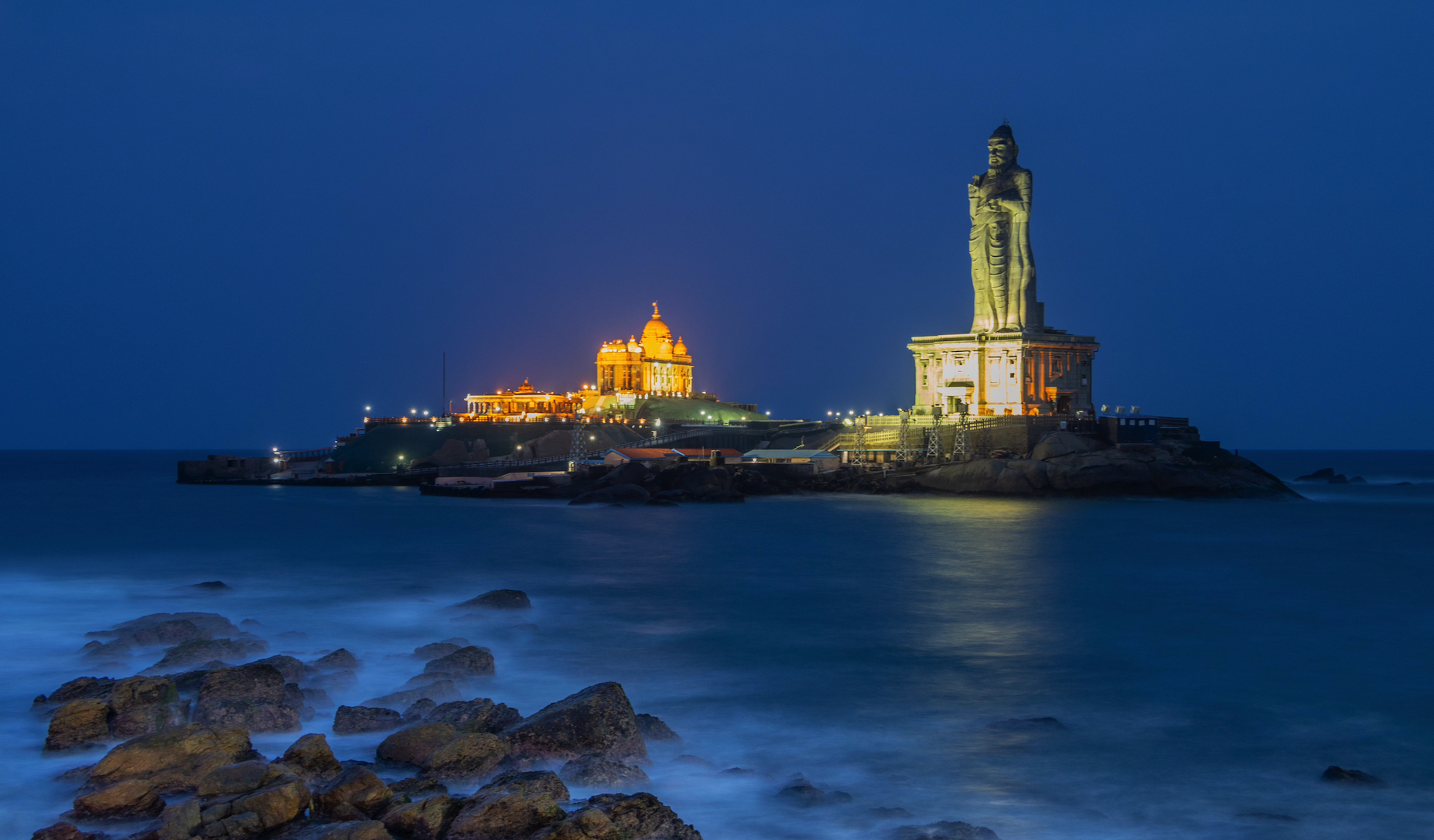
- 29 May 2024
Why is it in the News?
Prime Minister Narendra Modi will be visiting the Vivekananda Rock Memorial in Kanyakumari, to meditate between May 30 to June 1, to mark the culmination of the 2024 Lok Sabha polls.
About the Vivekananda Rock Memorial:
- The Vivekananda Rock Memorial is a monument and a popular tourist destination located approximately 500 metres off the mainland of Vavathurai, Kanyakumari in the state of Tamil Nadu.
- Situated on a big rock, it is surrounded by three water bodies – the Arabian Sea, the Bay of Bengal, and the Indian Ocean.
- Vivekananda is said to have arrived here after wandering across the country.
- It is believed that the monk and the philosopher meditated on the rock and attained a vision for a developed India.
- The memorial, designed by renowned architect Eknath Ranade and completed in 1970, is located at the southernmost point of India in Kanyakumari.
- This is where the eastern and western coastlines of India converge.
- The memorial features two primary structures:
- The Vivekananda Mandapam, which houses an impressive bronze statue of the revered Swami Vivekananda, and
- The Shripada Mandapam contains footprints believed to belong to Goddess Kanyakumari.
- This site holds profound cultural and spiritual significance, with legendary tales of Goddess Kanyakumari praying to Lord Shiva on this rock.
- This memorial is right next to a huge monolithic statue of Tamil poet and philosopher Thiruvalluvar which was created by the Indian sculptor V Ganapati Sthapati.
About Swami Vivekananda:
- Swami Vivekananda (1863–1902), born Narendranath Datta, was a renowned Hindu monk and spiritual leader.
- A foremost disciple of Sri Ramakrishna Paramhamsa, he was recognized as a meditation expert by his guru.
- Vivekananda sought to integrate Indian spirituality with Western material progress, viewing them as complementary.
- He emphasized self-purification through helping others and advocated for selfless service and societal betterment.
- His teachings covered the four yogas, the harmony of religions, the divinity of the soul, and serving humanity as God.
- He gained international recognition by representing Hinduism at the 1893 World's Parliament of Religions in Chicago.
Upon returning to India, he founded the Ramakrishna Order at Belur in 1897.
Golden Rice
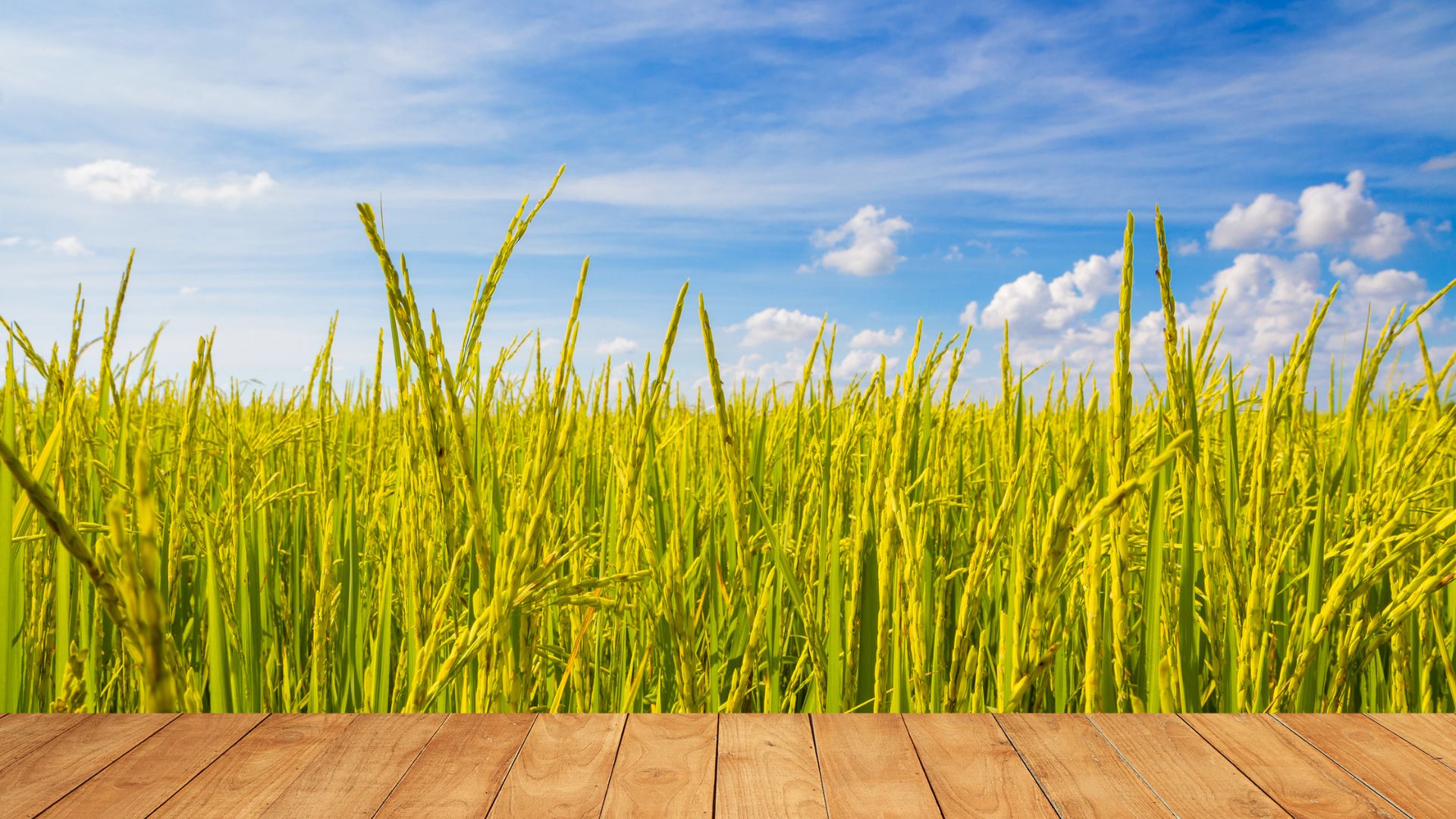
- 29 May 2024
Why is it in the News?
A court in the Philippines recently revoked biosafety permits for commercial propagation of genetically modified golden rice and Bt eggplant.
What is Golden Rice?
- In the late 1990s, German plant scientists Ingo Potrykus and Peter Beyer developed Golden Rice to combat vitamin A deficiency, a leading cause of infant blindness and increased mortality from infectious diseases like measles.
- Golden Rice is a type of rice that produces beta-carotene, giving it a golden colour, unlike white rice, which lacks these nutrients.
- Vitamin A deficiencies are prevalent in countries where rice is a staple food.
- The widespread use of Golden Rice is expected to improve health by reducing rates of preventable blindness and mortality, especially among children and pregnant women.
Golden Rice and Vitamin A Deficiency:
- Potrykus and Beyer added two genes to white rice in 2004, creating Golden Rice, which they donated to impoverished nations as a solution to vitamin A deficiency (VAD).
- Governments approve Golden Rice cultivation only after ensuring it is safe for the environment, humans, and animals.
- Golden Rice can replace the daily intake of white rice without adverse effects, providing a natural source of vitamin A and beta-carotene to combat VAD.
Efficacy of Golden Rice:
- Adequate vitamin A levels in mothers support vision, immune health, and fetal development through the placenta and breastfeeding.
- Vitamin A deficiency is the leading cause of childhood blindness and weakens the body’s ability to fight common diseases, leading to high mortality rates among young children and their mothers.
- Natural sources of vitamin A include animal products like milk, butter, cheese, eggs, and liver, while plants do not contain vitamin A directly, they contain beta-carotene, which the body can convert into vitamin A.
- White rice is rich in carbohydrates but lacks beta-carotene, an antioxidant and precursor to vitamin A.
- Golden Rice, containing beta-carotene, can help prevent millions of deaths and alleviate suffering from VAD and micronutrient malnutrition in impoverished regions.
Additionally, expanding the cultivation of genetically modified, bio-fortified crops like Golden Rice could further address vitamin deficiencies in developing countries.
Denotified, Nomadic and Semi-Nomadic Tribes

- 28 May 2024
Why is it in the News?
Denotified and Nomadic Tribes, a group of marginalised communities across Andhra Pradesh, have been silently suffering neglect and caste-based discrimination for centuries.
Who are Denotified, Nomadic, and Semi-Nomadic Tribes?
- Denotified, Nomadic and Semi-Nomadic Tribes are among the most vulnerable and deprived communities in India.
- Denotified Tribes (DNTs): These communities were labelled as 'born criminals' under British colonial laws, starting with the Criminal Tribes Act of 1871.
- The Independent Indian Government repealed these Acts in 1952, thereby 'de-notifying' these tribes.
- Nomadic and Semi-Nomadic Tribes: These groups are characterized by their mobility, moving from place to place rather than settling permanently.
- Historically, they have not had access to private land or home ownership.
Social and Historical Context:
- Categorization: Many DNTs are classified within Scheduled Castes (SC), Scheduled Tribes (ST), and Other Backward Classes (OBC), but some remain uncategorized in these groups.
Historical Commissions:
- Criminal Tribes Inquiry Committee (1947): Investigated the status of these tribes in the United Provinces (now Uttar Pradesh).
- Ananthasayanam Ayyangar Committee (1949): Led to the repeal of the Criminal Tribes Act.
- Kaka Kalelkar Commission (1953): The first OBC Commission.
- B.P. Mandal Commission (1980): Made recommendations concerning these communities.
- National Commission to Review the Working of the Constitution (NCRWC, 2002): Highlighted the wrongful stigmatization and exploitation of DNTs, chaired by Justice M.N. Venkatachaliah.
Population and Distribution:
- South Asia: Hosts the largest nomadic population in the world.
- India: Approximately 10% of the population is comprised of Denotified and Nomadic Tribes.
- There are about 150 Denotified Tribes and around 500 different Nomadic Tribes in India.
Challenges Faced by Nomadic Tribes:
- Lack of Basic Infrastructure: Nomadic tribes often lack access to essential facilities such as drinking water, shelter, sanitation, healthcare, and education.
- Stigma and Treatment: Historically labelled as criminals, these communities still face discrimination and harsh treatment from local authorities and police.
- Lack of Social Security: Due to their frequent movement, nomadic tribes do not have permanent settlements, which makes it difficult for them to obtain social security documents like Ration Cards and Aadhaar Cards.
- This exclusion prevents them from accessing government welfare schemes.
- Unclear Caste Categorization: The classification of these tribes varies across states, with some being categorized as Scheduled Castes (SC) and others as Other Backward Classes (OBC).
- Many individuals lack caste certificates, hindering their ability to benefit from government programs.
Developmental Efforts for Nomadic Tribes:
- Dr Ambedkar Pre-Matric and Post-Matric Scholarship for DNTs: Launched in 2014-15, this centrally sponsored scheme supports DNT students not covered under SC, ST, or OBC categories.
- The pre-matric scholarship promotes education among DNT children, especially girls.
- Nanaji Deshmukh Scheme of Construction of Hostels for DNT Boys and Girls: Also launched in 2014-15, this scheme is implemented through state governments, UT administrations, and central universities.
- It provides hostel facilities for DNT students not covered under SC, ST, or OBC categories, enabling them to pursue higher education.
- Scheme for Economic Empowerment of DNTs: Aim to offer free competitive exam coaching, health insurance, housing assistance, and livelihood initiatives.
- Allocates Rs. 200 crores to be spent over five years starting from 2021-22.
The Development and Welfare Board for De-notified, Nomadic, and Semi-Nomadic Communities (DWBDNC) is responsible for its implementation.
Onset of Monsoon
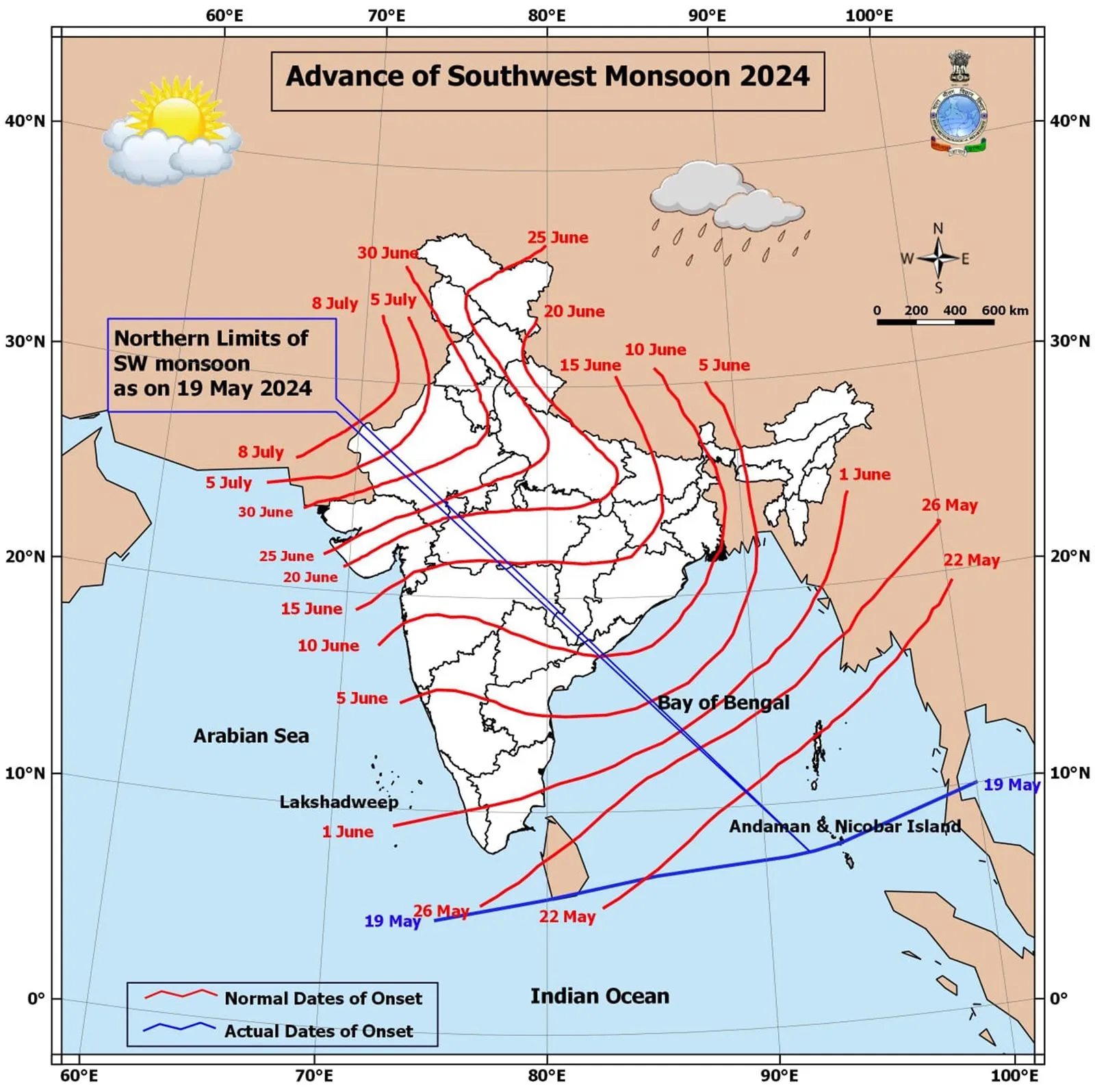
- 28 May 2024
Why is it in the News?
The southwest monsoon is progressing normally, and conditions are suitable for its onset on the Kerala coast in the next five days, the India Meteorological Department (IMD) said on Monday (May 27).
What does the ‘onset of monsoon’ Mean?
- The onset of the monsoon over Kerala marks the beginning of the four-month, June-September southwest monsoon season over India, which brings more than 70% of the country’s annual rainfall.
- The onset of the monsoon is a significant day in India’s economic calendar.
- According to the IMD, the onset of the monsoon marks a crucial transition in the large-scale atmospheric and ocean circulations in the Indo-Pacific region, and the Department announces it only after certain defined and measurable parameters, adopted in 2016, are met.
Onset & Advance of Monsoon:
- Broadly, the IMD checks for the consistency of rainfall over a defined geography, its intensity, and wind speed.
- Rainfall: The IMD declares the onset of the monsoon if at least 60% of 14 designated meteorological stations in Kerala and Lakshadweep record at least 2.5 mm of rain for two consecutive days at any time after May 10. In such a situation, the onset over Kerala is declared on the second day, provided specific wind and temperature criteria are also fulfilled.
- The 14 enlisted stations are Minicoy, Amini, Thiruvananthapuram, Punalur, Kollam, Alappuzha, Kottayam, Kochi, Thrissur, Kozhikode, Thalassery, Kannur, Kasaragod, and Mangaluru.
- Wind field: The depth of westerlies, prevailing winds that blow from the west at midlatitudes — should be up to 600 hectopascals (1 hPa is equal to 1 millibar of pressure) in the area bound by the equator to 10ºN latitude and from longitude 55ºE to 80ºE.
- The zonal wind speed over the area bound by 5-10ºN latitude and 70-80ºE longitude should be of the order of 15-20 knots (28-37 kph) at 925 hPa.
- Heat: According to IMD, the INSAT-derived Outgoing Longwave Radiation (OLR) value (a measure of the energy emitted to space by the Earth’s surface, oceans, and atmosphere) should be below 200 watts per sq m (wm2) in the box confined by 5-10ºN latitude and 70-75ºE latitude.
- Northern Limit of Monsoon (NLM): Southwest monsoon normally sets in over Kerala around 1st June.
- It advances northwards, usually in surges, and covers the entire country around the 15th of July.
- The NLM is the northernmost limit of monsoon up to which it has advanced on any given day.
In general, the Andaman and Nicobar Islands start receiving monsoon rainfall between May 15 and May 20 every year, and it usually starts raining along the Kerala coast in the last week of May.
Mundra Port
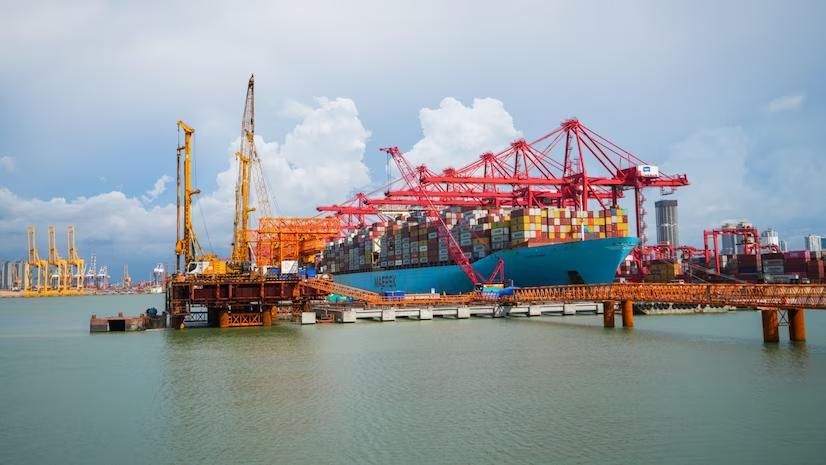
- 28 May 2024
Why is it in the News?
Adani Ports and Special Economic Zone Ltd (APSEZ) on Sunday said its flagship Mundra Port has created yet another record by welcoming the largest container ship to call at an Indian port.
About Mundra Port:
- Mundra Port is the largest private and container port in India.
- It is situated on the northern shores of the Gulf of Kutch, near Mundra in the Kutch district of Gujarat.
- It is a deep-draft, all-weather port and a designated special economic zone (SEZ).
- Mundra Port handles 33% of India's container traffic and is a critical hub for the nation's trade.
Ownership and Operations:
- Adani Ports and Special Economic Zone Limited (APSEZ), India's largest commercial port operator, oversees nearly one-fourth of the country's cargo movement.
Handling Capacity:
- Capacity: The port has a capacity of 260 million metric tons (MMT) and handled over 155 MMT in the fiscal year 2022-23, which represents nearly 11% of India’s maritime cargo.
- Facilities: Equipped with 26 berths and two single-point moorings, Mundra Port can accommodate a diverse range of vessels and cargo types, including containers, dry bulk, break bulk, liquid cargo, and automobiles.
- Coal Terminal: It hosts the country's largest coal import terminal, ensuring rapid cargo processing with minimal turnaround time.
- Connectivity: The port's rail network connects seamlessly with the national rail system, facilitating cargo transportation to any location in India.
What is MSC Anna?
- MSC Anna is the largest container ship ever to dock at an Indian port.
- Size: The vessel measures 399.98 meters in length, approximately the length of four football fields, making it one of the largest container ships globally.
- Capacity: MSC Anna can carry up to 19,200 TEUs (20-foot equivalent units).
With an arrival draft of 16.3 meters, it can only be accommodated at Adani Ports' Mundra Port, as no other port in India has the capability to berth such a deep-draft vessel.
ZIG Currency
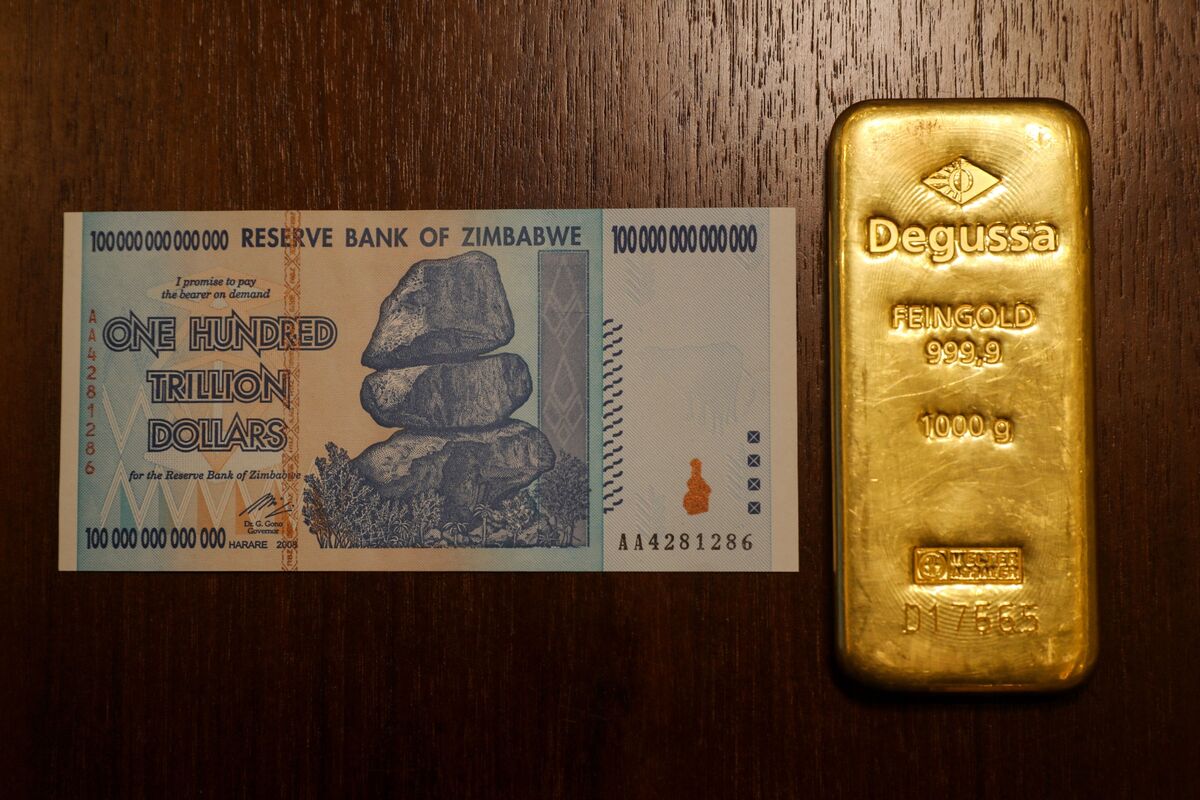
- 28 May 2024
Why is it in the News?
To address its long-standing economic instability, the Reserve Bank of Zimbabwe (RBZ) has launched a new gold-backed currency called the ZiG, short for Zimbabwe Gold, replacing the Zimbabwean dollar on April 5, 2024.
What is a ZiG Currency?
- Zimbabwe Gold, or ZIG, is the world's newest currency that was introduced by Zimbabwe to replace the Zimbabwe dollar in April.
- It is backed by the country's gold reserves and was launched in an effort to reduce currency instability and hyperinflation.
- It is the sixth currency Zimbabwe has used since the 2009 collapse of the Zimbabwe dollar amid hyperinflation of 5 billion per cent.
Features of ZiG currency:
- Gold-Backed: The ZiG is unique as it is backed by gold reserves, ensuring its value is supported by the physical gold held by the government.
- Denominations: ZiG notes and coins are issued in denominations of 1ZiG, 2ZiG, 5ZiG, 10ZiG, 20ZiG, 50ZiG, 100ZiG, and 200ZiG. This gold backing aims to provide stability and prevent currency devaluation.
Reasons for Launching a New Currency:
- High Inflation: Zimbabwe has struggled with extreme inflation, with rates exceeding 500% in recent years.
- Currency Instability: The Zimbabwean dollar, introduced in 1980, lost its value due to hyperinflation. The country's reliance on various foreign currencies, mainly the US dollar, has limited economic control.
- Historical Collapse: The collapse of the Zimbabwean dollar in 2009, with hyperinflation peaking at 5 billion per cent, is one of the worst currency crashes in history.
Economic Control: Converting the previous national currency, the Zimbabwe dollar, into ZiGs is intended to simplify monetary matters and provide certainty and predictability in the financial system.
Eucalyptus Tree
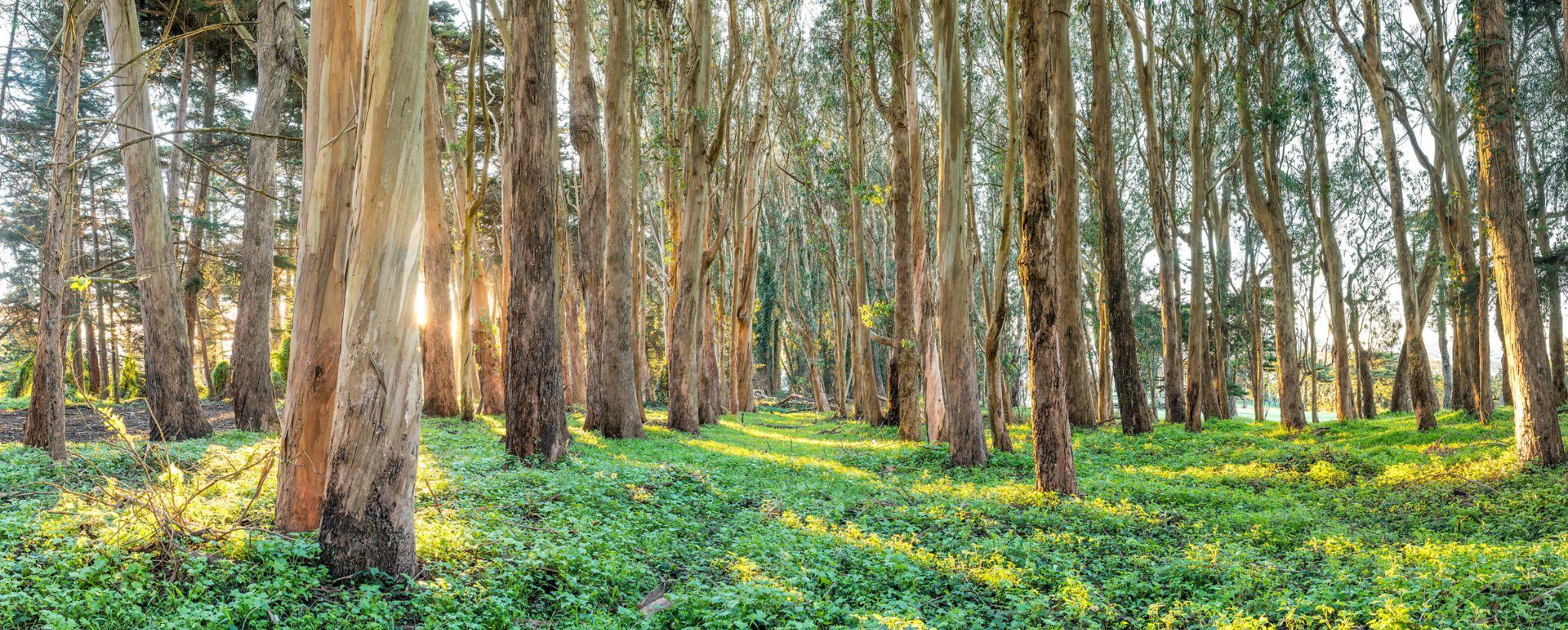
- 28 May 2024
Why is it in the News?
The Kerala government issued an order allowing the Kerala Forest Development Corporation (KFDC) to plant eucalyptus trees for its financial sustenance in 2024-2025.
What is the Eucalyptus Tree?
- Eucalyptus is an evergreen tree, one of the most widely cultivated trees native to Australia.
- In Australia, they are commonly referred to as gum trees or stringybark trees.
- The eucalyptus, which is an invasive species of flora, was planted in large numbers by the British in the areas surrounding Nilgiris.
- Many eucalyptus species are cultivated globally as shade trees and in forestry plantations.
Features:
- Bark: Eucalyptus trees have gum-infused bark.
- Leaves: They feature long stems and circular leaves, which are difficult to digest if eaten whole.
- Flowers: Small flowers grow on eucalyptus trees, available in various colours including white, yellow, and shades of red.
- Capsules: Eucalyptus produces small woody capsules that contain seeds.
Uses of Eucalyptus:
- Medicinal Properties: Eucalyptus is widely valued for its medicinal benefits. Some species' leaves contain oil with a strong aroma, primarily composed of cineole (eucalyptol), along with flavonoids and tannins, which have anti-inflammatory and antioxidant properties.
- Respiratory Relief: Eucalyptus oil is well-known for relieving congestion and easing breathing during colds.
- Pain Relief: The oil is also used as a topical treatment for sore muscles, aching joints, and rheumatism, improving blood circulation when applied.
- Wood: Eucalyptus wood is tough and durable, making it ideal for building furniture and fences.
Eucalyptus Plantations in India:
- Species: The most widely planted eucalypts in India are Eucalyptus tereticornis and Eucalyptus hybrid.
- Regions: It is extensively grown in Tamil Nadu, Andhra Pradesh, Gujarat, Haryana, Mysore, Kerala, and the Nilgiri Hills.
- Growing Conditions: Eucalyptus thrives in deep, fertile, well-drained loamy soil with adequate moisture.
Dangers of Eucalyptus Tree:
- Water: Eucalyptus trees have a terrible reputation as extensive water users and significant contributors to soil depletion.
- While they do need copious quantities of water, their colossal taproot can find moisture even in the most barren areas.
- This voracious appetite helps maintain their incredibly rapid growth.
- Toxicity: Eucalyptus plant foliage is toxic to animals and humans if ingested.
- Exploding: Eucalyptus oil gives off flammable fumes, and these fumes can be ignited by lightning, flying sparks, and cinders, causing the tree to explode.
Fireballs: During brush or forest fires, the eucalyptus species releases great quantities of flammable gas that mix with air to produce fireballs full of sparks and embers exploding out in front of the fire.
WHO Pandemic Treaty
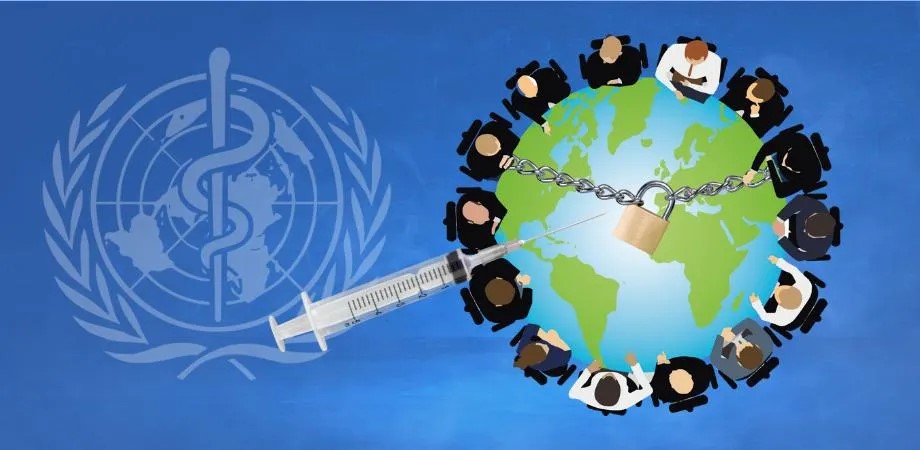
- 27 May 2024
Why is it in the News?
Health officials from the 194 member states of the World Health Organization hope next week to complete more than two years of negotiations on new rules for responding to pandemics when they gather in Geneva.
What is the Pandemic Treaty?
- The "Pandemic Treaty" or "Pandemic Accord" refers to an ongoing process at the World Health Organization (WHO) to negotiate an international agreement or convention on pandemic prevention, preparedness, and response.
- The idea was proposed in late 2020 amid the COVID-19 pandemic to strengthen global coordination and solidarity in addressing future pandemic threats.
- The WHO already has binding rules known as the International Health Regulations (2005) which set out countries’ obligations where public health events have the potential to cross national borders.
- These include advising the WHO immediately of a health emergency and measures on trade and travel.
- Adopted after the 2002/3 SARS outbreak, these regulations are still seen as functional for regional epidemics such as Ebola but inadequate for a global pandemic.
Key points about the proposed Pandemic Treaty/Agreement:
- Objective: To establish a global framework and rules to ensure better cooperation, data sharing, and coordinated response during future pandemics.
- Legal Status: It would be a legally binding international instrument, like a treaty or convention, requiring ratification by WHO member states.
- Core Elements: Likely to include provisions on equitable access to countermeasures, strengthening health systems, information sharing, One Health approach (human-animal-environment interface), and funding mechanisms.
- Negotiation Process: In December 2021, the World Health Assembly established an intergovernmental negotiating body to draft and negotiate the instrument through a member-state-led process.
- The goal is to learn from COVID-19 experiences and create a binding global framework that facilitates a more coherent, better-coordinated international response to potential future pandemic threats.
How will the Global Health Rules change?
- The updates to the International Health Regulations (IHR) include:
- A new alert system to provide different risk assessments for future outbreaks, addressing criticisms that the current system delayed the COVID-19 response.
- Introducing an intermediary alert stage called “early action alert,” in addition to the existing Public Health Emergency of International Concern (PHEIC).
- Considering a “pandemic emergency” designation for the most severe health threats, filling a gap in the current system which does not use the term "pandemic."
- Strengthening state obligations to inform the WHO of public health events, changing the language from “may” to “should.”
How Do Countries View the Pact?
- Negotiations have been marked by significant differences between wealthy and poor countries.
- The talks missed a key May 10 deadline, nearly collapsing and prompting WHO Director-General Tedros to call an emergency meeting to boost morale. Contentious issues include:
- The sharing of drugs and vaccines.
- Financing, with debates over setting up a dedicated fund versus using existing resources like the World Bank’s $1 billion pandemic fund.
- Political pressure, particularly from right-wing groups and politicians concerned about sovereignty, which the WHO denies.
What Happens Next?
- The new IHR rules and the pandemic accord are intended to complement each other, but opinions vary on whether one can exist without the other.
- Sources indicate that IHR negotiations are more advanced and likely to pass, with changes taking effect automatically after 12 months unless countries opt-out.
- In contrast, the pandemic treaty requires ratification, potentially taking years.
Virupaksha Temple Hampi
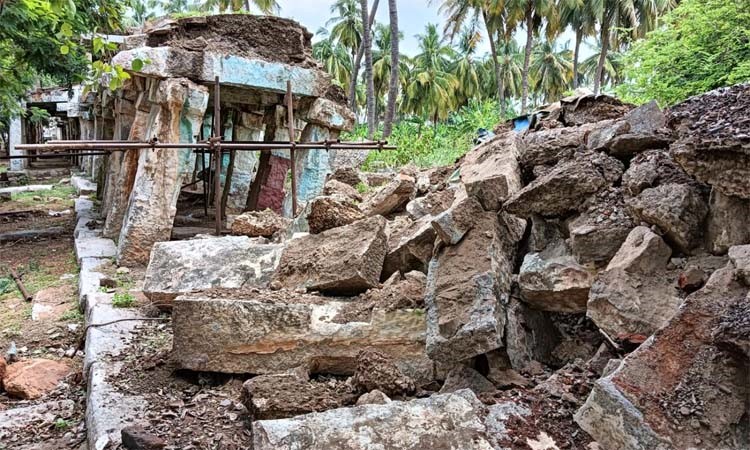
- 27 May 2024
Why is it in the News?
The historical Saalu Mantap (pillar line), located on the premises of the Virupaksha Temple in Hampi, a UNESCO World Heritage Site, collapsed after heavy rain lashed the region on Tuesday night.
What is the Historical Significance of Virupaksha Temple?
- The Virupaksha temple gained prominence and underwent extensive expansion in the 14th century during the Vijayanagara Empire (1336 to 1646).
- Founded by Harihara I of the Sangama dynasty, the Vijayanagara Empire expanded from a strategic position on the banks of the Tungabhadra River to become one of the most powerful kingdoms of its time.
- The temple was built by Lakkan Dandesha, a nayaka (chieftain) under the ruler Deva Raya II, also known as Prauda Deva Raya of the Vijayanagara Empire.
- The temple flourished under the patronage of the Vijayanagara rulers, who were great builders and patrons of art.
- It became a vital centre for the religious and cultural activities of its time.
- It is a prime example of Dravidian temple architecture, characterised by its grand gopurams (towering gateways), the shikhara towering over the sanctum sanctorum, its intricate carvings and pillared halls.
- Richly adorned with carvings and sculptures, the gopuram depicts various deities, mythological scenes and animals.
- The sanctum sanctorum houses the Shiva lingam, the main object of worship.
- Historians say all temples had pavilions where traders sold articles, such as those used in worship.
- Sometimes devotees visiting the temple also camped under the pavilions.
- With several other temples and structures located there, Hampi was the empire’s capital city and stands today as evidence of what is known as the last ‘great Hindu empire’ of South India.
- UNESCO also recognised its uniqueness and categorised the Group of Monuments at Hampi as a World Heritage Site.
Zero Debris Charter
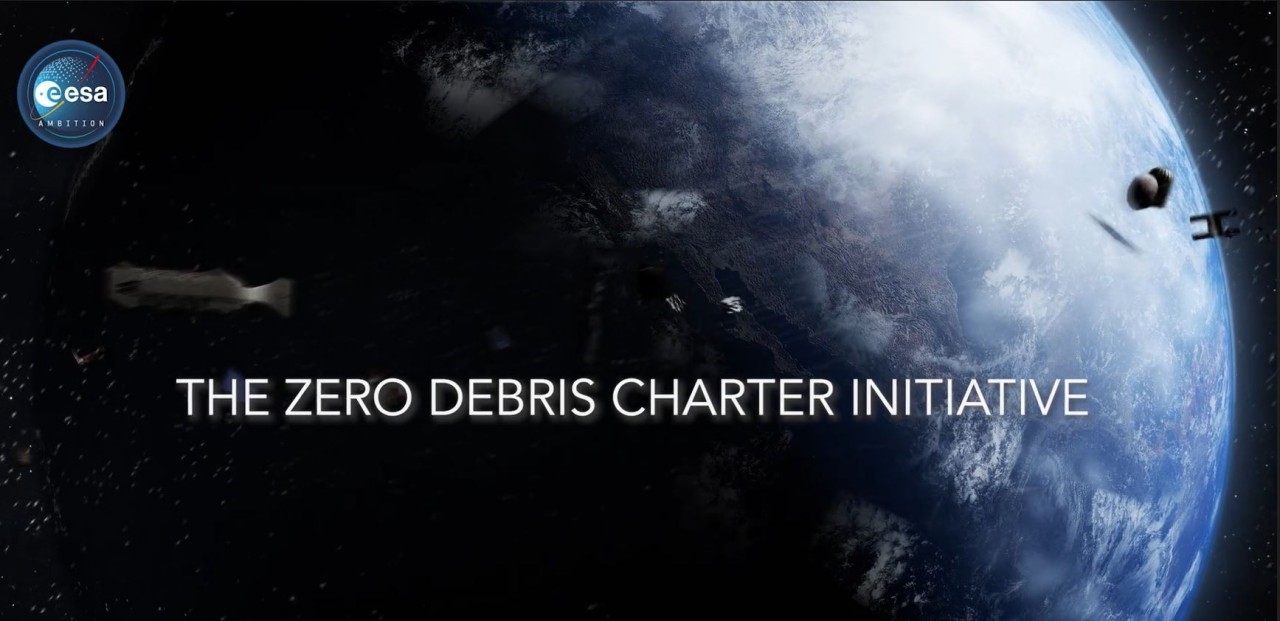
- 27 May 2024
Why is it in the News?
Twelve nations have signed the Zero Debris Charter at the ESA/EU Space Council, solidifying their commitment to the long-term sustainability of human activities in Earth orbit.
What is the Zero Debris Charter?
- The Zero Debris Charter is an initiative of the European Space Agency (ESA) and a non-legally binding, technically driven and community-building instrument.
- It is a world-leading effort to become debris-neutral in space by 2030.
- It outlines high-level guiding principles and sets ambitious, collectively defined targets to realize the goal of Zero Debris.
- The charter has been endorsed by countries including Austria, Belgium, Cyprus, Estonia, Germany, Lithuania, Poland, Portugal, Romania, Slovakia, Sweden, and the United Kingdom.
What are Space Debris?
- Space debris encompasses all non-functional, man-made objects in Earth's orbit or re-entering the Earth's atmosphere.
- This category includes decommissioned satellites, spent rocket bodies, fragments resulting from spacecraft breakups or collisions, and debris from anti-satellite weapon tests.
- Presently, there are over one million pieces of space debris larger than one centimetre orbiting Earth.
What are the Concerns with Space Debris?
- Threat to Space Infrastructure: Collisions with operational satellites can disrupt navigation and communication systems on Earth.
- Kessler Syndrome: The uncontrolled accumulation of debris can trigger an escalating cascade of collisions, exacerbating the problem.
- Risk on Earth: Large space debris re-entering the atmosphere uncontrollably poses risks to the population on the ground.
- Increased Cost: Expensive collision avoidance manoeuvres must be performed to protect valuable space assets.
Initiatives for Space Debris Mitigation:
Global:
- Inter-Agency Space Debris Coordination Committee (IADC): A global entity that coordinates activities related to space debris among various space agencies worldwide.
- Space Debris Mitigation Guidelines: Established by the Committee on the Peaceful Uses of Outer Space (COPUOS), these guidelines provide recommendations for reducing the generation of space debris and promoting the long-term sustainability of outer space activities.
India:
- Debris-Free Space Missions (DFSM): An initiative by ISRO aimed at achieving debris-free space missions by 2030, implemented through the ISRO System for Safe & Sustainable Space Operations Management (IS4OM).
- Project NETRA (NEtwork for Space Object Tracking and Analysis): A project focused on enhancing space situational awareness to monitor and manage space debris.
Astronomical Transients

- 27 May 2024
Why is it in the News?
Recently the Indian-American astronomer Shrinivas Kulkarni was awarded the Shaw Prize for Astronomy in 2024 for his work on the physics of astronomical transients.
What are Astronomical Transients?
- Astronomical transients refer to celestial events or phenomena that occur suddenly, brighten or flare up for a brief period of time, and then fade away.
- These events are temporary and transient in nature, lasting from a few seconds to a few years.
Some examples of astronomical transients include:
- Supernovae: These are explosions that mark the end of a massive star's life cycle. They can briefly outshine an entire galaxy before fading away over several weeks or months.
- Gamma-ray bursts (GRBs): These are extremely energetic bursts of gamma-ray radiation that can last from a few milliseconds to several minutes.
- They are believed to be associated with the collapse of massive stars or the merging of compact objects like neutron stars or black holes.
- Novae: These are smaller explosive events on the surface of a white dwarf star in a binary system, caused by the accretion of material from a companion star.
- Tidal disruption events (TDEs): These occur when a star passes too close to a supermassive black hole and is torn apart by the black hole's gravitational forces, leading to a flare of electromagnetic radiation.
- Fast radio bursts (FRBs): These are intense bursts of radio waves that last only a few milliseconds and originate from distant galaxies. Their exact sources are still being investigated.
- Gravitational wave transients: These are transient events detected as gravitational waves, such as the merging of binary black holes or neutron stars, which produce a brief burst of gravitational radiation.
- Comets and asteroids: The close approach or impact of comets and asteroids can produce transient phenomena like outbursts, flares, or even temporary atmospheres around them.
- Astronomical transients are important for understanding various astrophysical processes, the evolution of celestial objects, and for studying the properties of the universe on different timescales.
Small Island Developing States
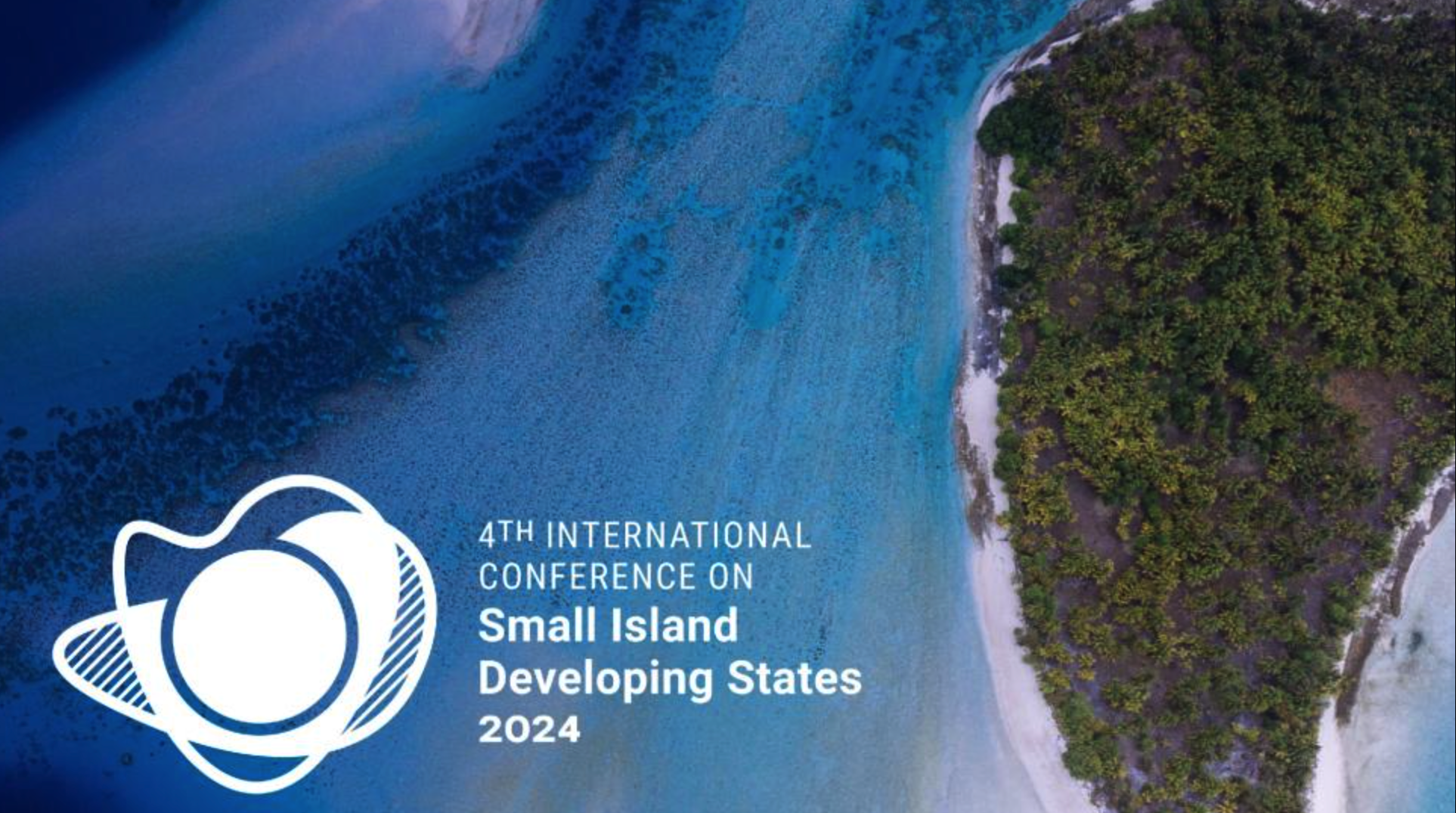
- 27 May 2024
Why is it in the News?
The Fourth International Conference on Small Island Developing States (SIDS-4) will be convened from May 27-30, 2024.
About Small Island Developing States (SIDS):
- Small Island Developing States (SIDS) are a distinct group of 39 States and 18 Associate Members of United Nations regional commissions that face unique social, economic and environmental vulnerabilities.
- The three geographical regions in which SIDS are located are:
- The Caribbean
- The Pacific
- The Atlantic, Indian Ocean and South China Sea (AIS)
- SIDS were recognized as a special case both for their environment and development at the 1992 United Nations Conference on Environment and Development held in Rio de Janeiro, Brazil.
- The aggregate population of all the SIDS is 65 million, slightly less than 1% of the world’s population, yet this group faces unique social, economic, and environmental challenges.
- SIDS face a host of challenges including for many, their remote geography.
- As a result, many SIDS face high import and export costs for goods as well as irregular international traffic volumes.
- For SIDS, the Exclusive Economic Zone (EEZ)—the ocean under their control—is, on average, 28 times the country’s land mass.
- Thus, for many SIDS the majority of the natural resources they have access to comes from the ocean.
- Factors like small population size, remoteness from international markets, high transportation costs, vulnerability to exogenous economic shocks and fragile land and marine ecosystems make SIDS particularly vulnerable to biodiversity loss and climate change because they lack economic alternatives.
- Climate change has a very tangible impact on SIDS.
- Slow onset events such as sea level rise pose an existential threat to small island communities, requiring drastic measures such as relocation of populations, and the related challenges this poses.
- These challenges are compounded by limited institutional capacity, scarce financial resources and a high degree of vulnerability to systemic shocks.
- Industries like tourism and fisheries can constitute over half of the GDP of small island economies.
- However, the importance of these natural resources extends beyond the economy; biodiversity holds aesthetic and spiritual value for many island communities.
- For centuries, these communities have drawn benefits from biodiversity in the form of food supply, clean water, reduced beach erosion, soil and sand formation, and protection from storm surges.
- At the regional level, SIDS are also supported by inter-governmental organisations, primarily the?Caribbean Community (CARICOM),?the?Pacific Islands Forum (PIF)?and the Indian Ocean Commission (IOC).
Kazi Nazrul Islam
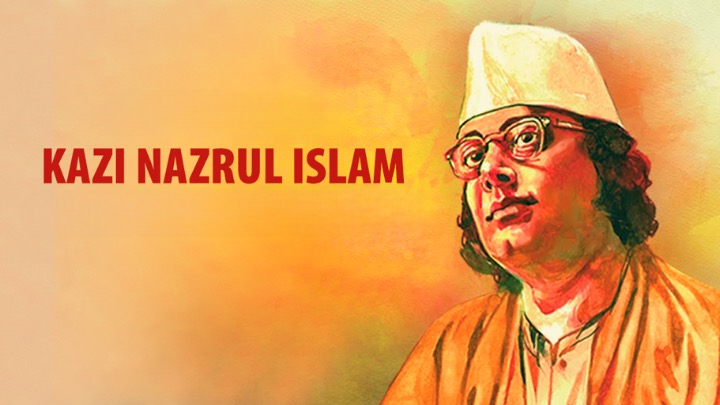
- 25 May 2024
Why is it in the News?
One hundred and twenty-five years ago on May 25, 2024, a ‘rebel poet’ was born in undivided Bengal who would go on to create about 4,000 songs and several stories to remind his warring and impoverished country folks of the power of humanity to tide over hunger, poverty and disintegration of society.
Who was Kazi Nazrul Islam?
- Kazi Nazrul Islam (1899-1976) was a Bengali poet, writer, and musician whose oeuvre, Nazrulgeeti (Songs of Nazrul), constitutes a musical genre that is perhaps second in popularity to only Rabindrasangeet, the compositions of Rabindranath Tagore.
- He enjoys iconic status in West Bengal, Bangladesh, and the Bengali diaspora around the world, and is revered as the National poet of Bangladesh.
- Nazrul is known as the Bidrohi Kobi (Rebel Poet) because most of the more than 4,000 songs that he wrote and composed are songs of protest and revolution, which inspired the freedom fighters of Bengal in their struggle against colonialism and imperialism.
- In 1923, the British arrested Nazrul because of the strongly anti-British content of a magazine that he founded and edited.
- His first poem was published when he was still in Karachi, in the Bangiya Mussalman Sahitya Patrika.
- Some of the poems he had composed and contributed in Moslem Bharat included Shatil Arab, Moharram, Korbani, Fatiha, Doazdaham, Badal Prater Sharab, and Kheya Parer Tarani, amongst others.
- The political conditions in which Nazrul Islam eventually began his career as a writer were ones conditioned by extreme tensions and conflict including the Jallianwala Bagh massacre and launch of the Non-Cooperation Movement following the special session of the Indian National Congress, and especially in the context of the “divide and rule” policy which was adopted by the British.
- Several issues that the populace of the subcontinent had to deal with included economic backwardness, racial prejudices, and social inequality.
- In such circumstances, he joined a Bengali newspaper called Naba-Yug (New Era).
- His writings were later compiled and published as a book Yugabani (Message of the Age) which was immediately banned by the British government.
- Apart from writing and working for several other newspapers of the times, including Sevak, he had also started his own political weekly in 1922, named, Dhumketu (The Comet).
- The paper explicitly voiced their opinions against the British government and played an important role in steering the rebellious attitude and voices of the populace.
- As a result, Nazrul was charged with charges of sedition and he was sentenced to 1 year of rigorous imprisonment in 1923.
- On this occasion, Rabindranath Tagore had also dedicated a newly composed dance-drama Basanti to Nazrul, which was performed in Calcutta.
- Nazrul Islam was a prolific poet and composed several poems on various themes including themes of social messages, and resistance against the colonial government.
- He had effectively used his poems as a literary conduit to voice his opinions against British colonial rule.
- The highest point of his career as a poet was when he composed the poem Bidrohi (The Rebel).
- The poem was highly appreciated and established him as a well-respected poet.
- The poem was characterized by a revolutionary spirit and rife with heroic sentiments.
- It portrayed a revolutionary who had called upon the marginalized sections of the society to rise up and face the British despots.
- The compositions of Kazi Nazrul Islam in the form of songs, poems, and other forms of literature formed a very strong and powerful weapon against British colonial rule.
- The revolutionary themes which were explicit in his writings played an important role during the freedom movement.
- He consistently raised his voice against communalism, imperialism, fundamentalism and exploitation.
- His literary legacy is remembered and acknowledged to this date.
- He had earned the respect of not only his contemporaries but also of the later generations.
- His contributions thus are not limited to the efflorescence of Bengali literature but also extended to the cause of freedom during the Indian Independence Movement.
Gliese 12b
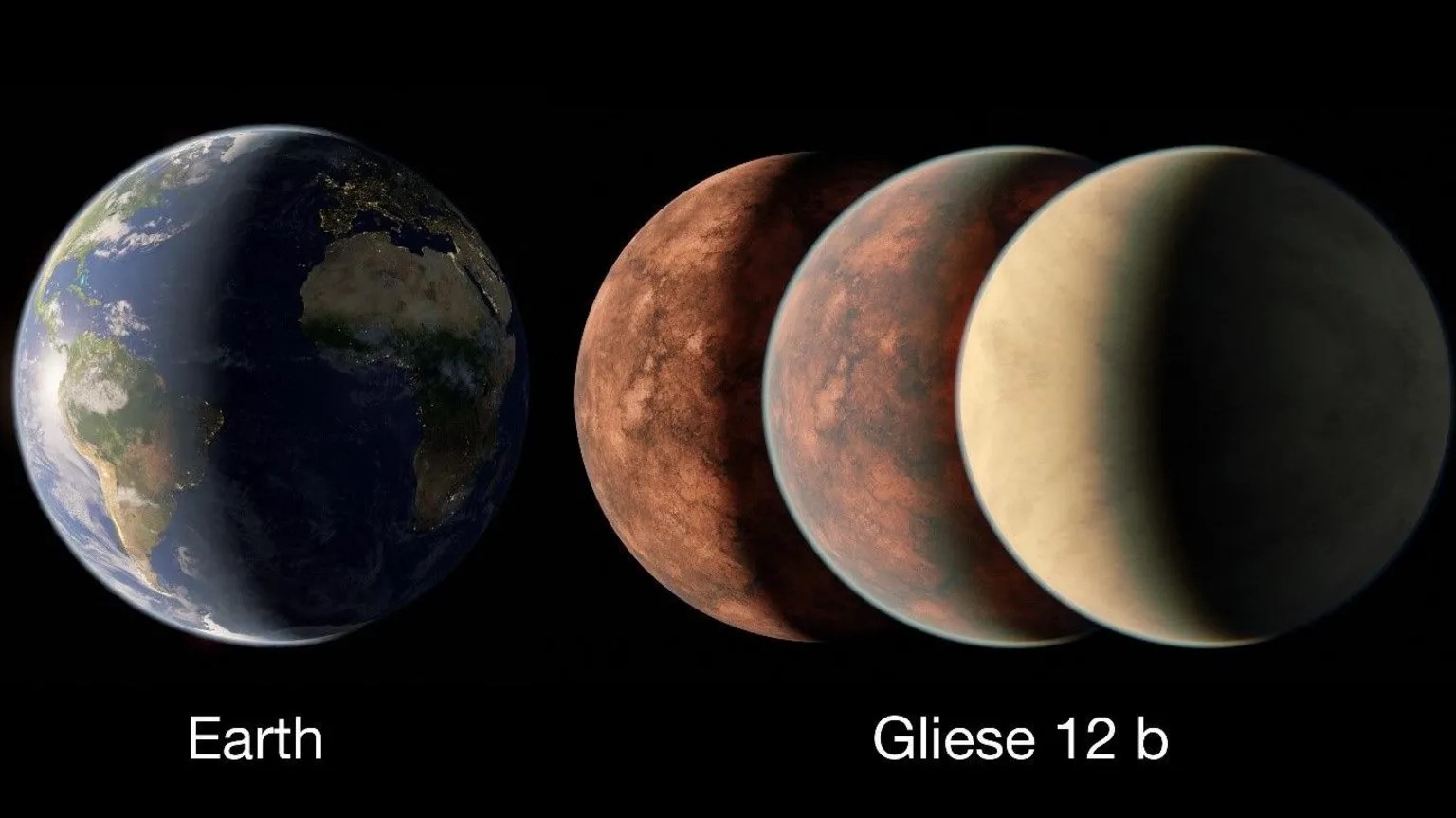
- 25 May 2024
Why is it in the News?
Recently, scientists have discovered a new planet that they say could "potentially support human life."
What is Gliese 12b?
- Gliese 12 b is a rocky planet just 40 light-years away from Earth.
- It orbits around a star called Gliese 12, a cool red dwarf in the constellation Pisces.
- This star is only 27 per cent of the size of our sun, with about 60 per cent of its surface temperature.
- But it's this lower temperature that makes Gliese 12 b theoretically habitable for humans.
- Gliese 12 b is one of the few known rocky planets where humans could theoretically survive according to scientists.
- The planet was discovered by an international team, in collaboration with NASA and the European Space Agency, using data from NASA's Transiting Exoplanet Survey Satellite (TESS) and ESA's Characterizing Exoplanet Satellite (CHEOPS).
- Gliese 12 b falls into this "Goldilocks zone," with an average temperature of 107 degrees Fahrenheit and a size somewhere between Venus and Earth.
- The researchers hope that by learning more about Gliese 12 b's atmosphere we may be able to answer questions about the evolution of our own solar system and other habitable planets.
About the Transiting Exoplanet Survey Satellite (TESS):
- TESS is a NASA mission dedicated to discovering exoplanets around nearby bright stars.
- It was launched on April 18, 2018, aboard a SpaceX Falcon 9 rocket from Cape Canaveral.
- TESS operates in a unique high Earth orbit with a period of 12 to 15 days.
- This orbit is designed to keep the telescope's view largely unobstructed by Earth and the Moon.
- The prime mission concluded on July 4, 2020, but TESS continues to operate on an extended mission.
- TESS has identified a wide range of exoplanets, from small rocky worlds to giant planets, highlighting the diversity of planetary systems in our galaxy.
- TESS uses the transit method to find exoplanets. It monitors stars for periodic dips in brightness, which occur when a planet crosses in front of the star along our line of sight.
- The size of the dip indicates the planet's diameter and the duration of the transit provides information about the planet's orbit.
- The transit method allows scientists to determine the diameter and orbital size of exoplanets.
- Orbits within certain ranges fall into the "habitable zone," where conditions may allow liquid water to exist on the surface of Earth-like worlds.
World Intellectual Property Organization (WIPO) Meeting 2024
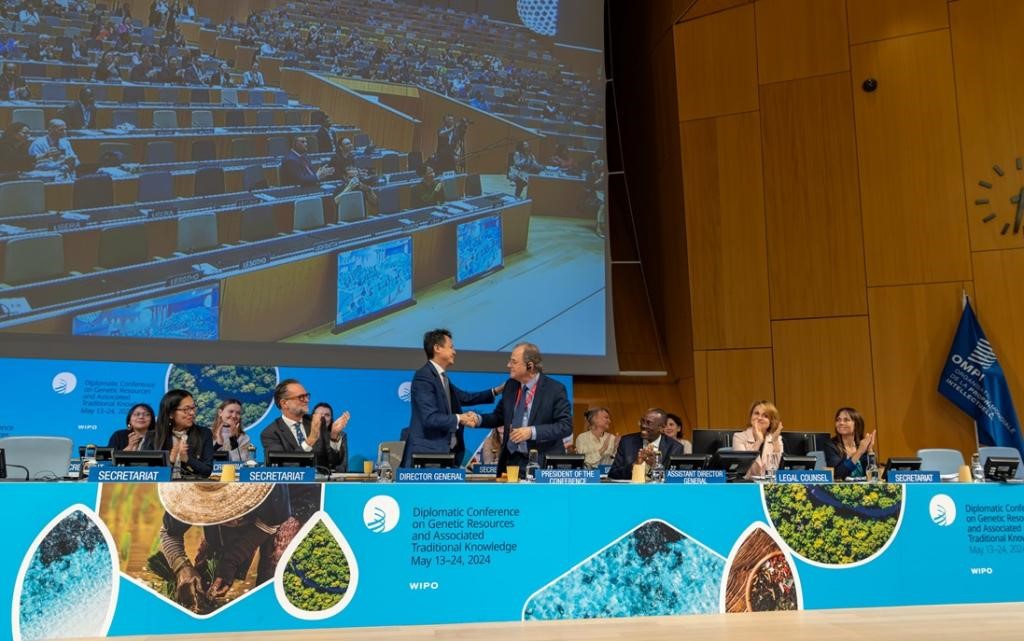
- 25 May 2024
Why is it in the News?
The Treaty on Intellectual Property, Genetic Resources and Associated Traditional Knowledge was adopted at the Diplomatic Conference held under the aegis of the World Intellectual Property Organization (WIPO) at its headquarters in Geneva recently.
What is the WIPO Meeting 2024?
- The World Intellectual Property Organization (WIPO) Meeting 2024 focuses on final-stage negotiations for a proposed treaty on intellectual property, genetic resources, and associated traditional knowledge.
- The aim is to protect the rights of communities that conserve genetic resources and hold traditional knowledge of their use.
- The main goal of the treaty is to enhance the efficacy, transparency, and quality of the patent system regarding genetic resources and traditional knowledge.
- It aims to prevent patents for non-novel or non-inventive inventions and ensure proper disclosure of genetic resources and traditional knowledge in patent applications.
Key challenges in the negotiations:
- Key challenges include reaching a consensus on mandatory disclosure requirements, addressing biopiracy, deciding on the inclusion of DSI in the treaty, and defining traditional knowledge.
- Countries like the United States, Japan, and South Korea generally oppose mandatory disclosure requirements, adding complexity to the negotiations.
What are genetic resources and traditional knowledge associated?
- Genetic resources are genetic material of actual or potential value found in plants, animals, and microorganisms.
- These resources are essential in fields like agriculture, pharmaceuticals, and biotechnology.
- Traditional knowledge associated with genetic resources refers to the knowledge, practices, and innovations of indigenous and local communities, developed and passed down through generations.
- This knowledge is often related to the use and conservation of genetic resources.
What is Biopiracy?
- Biopiracy refers to the unauthorized use and patenting of genetic resources and traditional knowledge without proper compensation or acknowledgement to the communities that developed and conserved them.
- The treaty seeks to address biopiracy by requiring the disclosure of genetic resources and traditional knowledge in patent applications and aligning with international agreements like the Nagoya Protocol.
What is Digital sequence information (DSI)?
- Digital sequence information (DSI) refers to the digital representation of genetic material.
- The treaty currently excludes DSI from its scope, which is a point of contention as it affects the management and protection of genetic resources.
- Including DSI in the treaty is under debate to ensure comprehensive protection.
Outcomes and Significance of this Meeting:
- Expected outcomes include finalizing the treaty's text, agreeing on substantive intellectual property provisions, and administrative issues.
- Once finalized, the treaty will be open for signature and aims to provide a robust framework for protecting genetic resources and traditional knowledge.
- The treaty also aims to protect the rights of indigenous and local communities by ensuring they receive fair compensation and recognition for their genetic resources and traditional knowledge.
- It also promotes the sustainable use and conservation of these resources, benefiting both global and local communities.
- The treaty has broader implications for international intellectual property law, biodiversity conservation, and the rights of indigenous and local communities.
- It aims to balance the interests of patent holders with the need to protect and sustainably use genetic resources and traditional knowledge.
India’s Role:
- India plays a significant role in the negotiations by advocating for strong disclosure requirements and a clear definition of traditional knowledge.
- India's participation helps ensure that the treaty provides sufficient policy space for countries to maintain their current stronger disclosure requirements under national laws.
Taiwan Strait/Formosa Strait
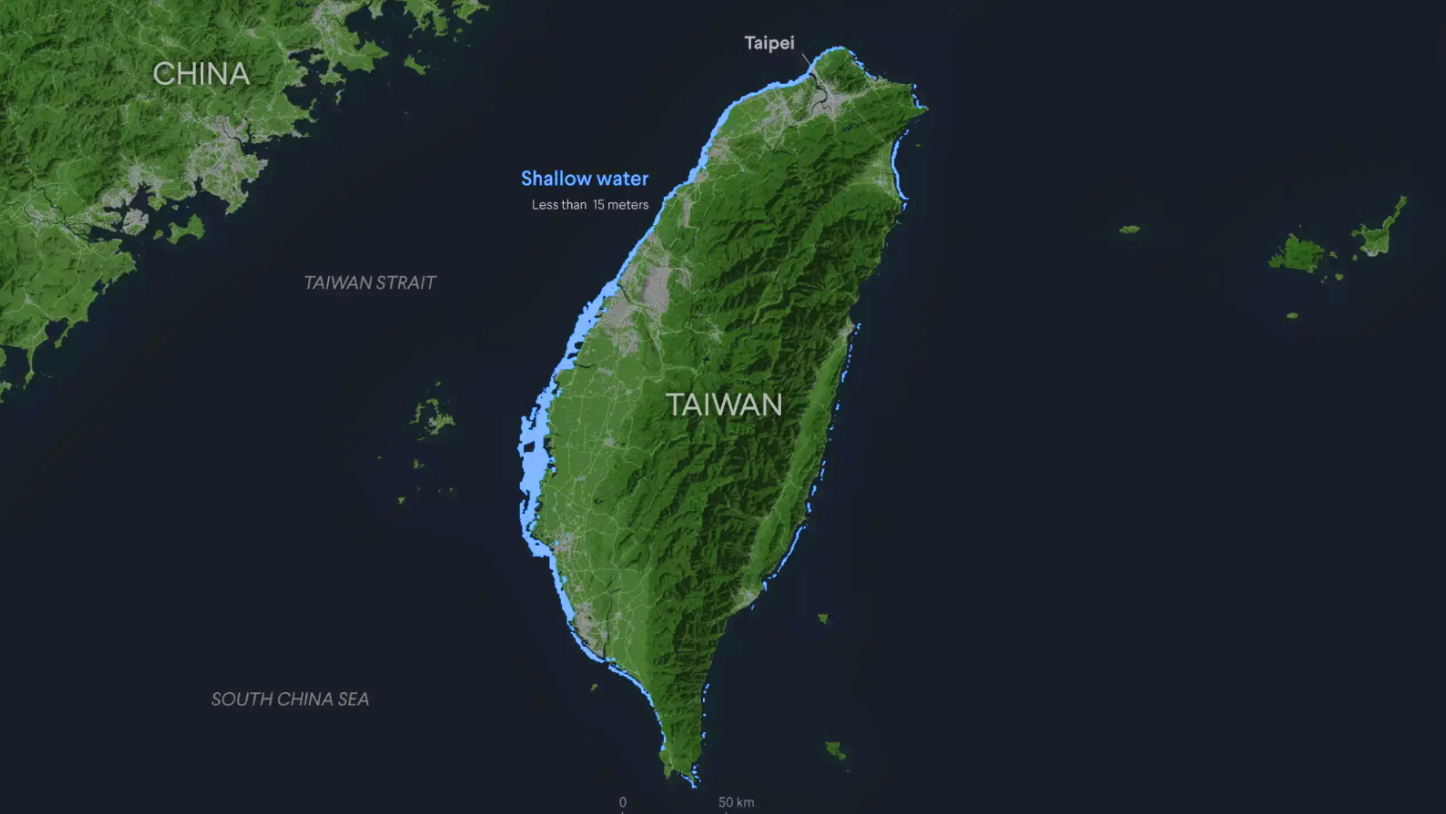
- 25 May 2024
Why is it in the News?
China ended two days of war games around Taiwan, in which it simulated attacks with bombers and practised boarding ships, and Taiwan's defence ministry detailed on Saturday the surge of Chinese warplanes and warships involved.
About the Taiwan Strait:
- Geography: The Taiwan Strait, also known as the Formosa Strait, is a 180 km-wide body of water separating mainland China from the island of Taiwan.
- It lies between the coast of Fujian Province in China and Taiwan.
- Location: The strait is part of the South China Sea and connects to the East China Sea in the north.
- The seafloor is primarily a continental shelf extending from the Asian continent, with Taiwan situated on the outer edge.
- The strait is relatively shallow, with an average depth of about 490 feet and a minimum depth of 82 feet.
- Islands: Major islands on the Taiwan side include Penghu (or Pescadores), Kinmen, and Matsu.
- On the Chinese side, Xiamen and Pingtan are significant islands.
- While Xiamen and Pingtan are administered by the People's Republic of China, Penghu, Kinmen, and Matsu are governed by the Republic of China (Taiwan).
- Shipping Corridor: The Taiwan Strait is a vital global shipping route, with nearly 50 per cent of global container shipping passing through the Taiwan Strait.
- Key ports in the region include Amoy in mainland China and Kao-hsiung in Taiwan.
- Historical Significance: The strait has been a site of military confrontations between the People's Republic of China and Taiwan since 1949, following the Chinese Civil War.
- The Kuomintang forces, led by Chiang Kai-shek, retreated across the strait and established their government in Taiwan.
- Median Line: The median line is an informal dividing line in the Taiwan Strait, established during the Cold War to reduce the risk of military clashes between China and Taiwan.
- Although not formalized by any treaty, it served as a tacit boundary until 2019, when Chinese military aircraft began crossing it.
- Beijing has since increasingly challenged the existence of the median line by frequently sending warplanes over it.
World Health Assembly 2024
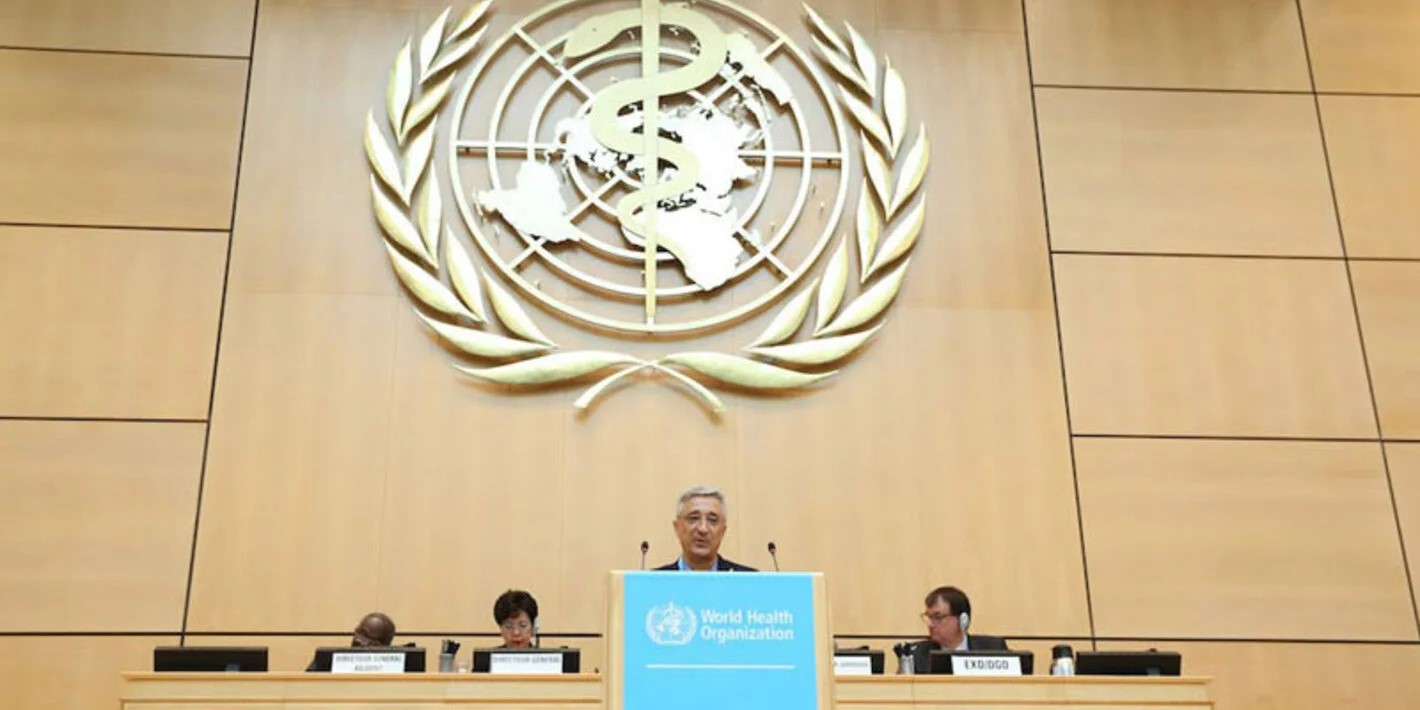
- 25 May 2024
Why is it in the News?
The World Health Assembly will convene from May 27 to June 1 to discuss amendments to the International Health Regulations, aimed at improving the ability of countries to respond to public health emergencies and prepare a potential new pandemic agreement.
What is the World Health Assembly?
- The World Health Assembly is the decision-making body of the World Health Organization (WHO), the United Nations (UN) agency dedicated to promoting the global population's health and access to the highest levels of healthcare provision.
- Its main functions are to determine WHO's policies, elect the Organization's Director-General, supervise financial policies, and review and approve the proposed WHO budget.
- Delegates from WHO member states come together at an annual assembly held at the UN headquarters in Geneva, Switzerland, to focus on a specific healthcare agenda created by the organization's Executive Board.
- The Executive Board comprises 34 technically qualified members, each elected for a three-year term.
- They meet every year in January to agree on the agenda and any resolutions that will be put before the World Health Assembly for consideration.
- Now in its 76th session, the theme for this year’s event is “Health For All: 75 Years of Improving Public Health”.
What does the Assembly do?
- Delegates at the annual World Health Assembly discuss the Executive Board's policy agenda for the coming year and decide which health goals and strategies will guide the WHO's public health work.
- Other functions include voting to appoint the organization's Director-General to serve a five-year term.
- Dr Tedros Adhanom Ghebreyesus holds the post currently, having been re-elected in 2022 to serve a second term as head of the world's leading public health agency.
Why is it important?
- Since its inauguration, the Assembly has presided over WHO policies that have helped eradicate deadly diseases like smallpox and the poliovirus and helped foster international collaborations to develop and distribute vaccines for diseases like malaria and COVID-19.
About International Health Regulations (IHR):
- First adopted by the World Health Assembly (WHA) in 1969, the IHR was last revised in 2005. These regulations aim to maximize collective efforts in managing public health events while minimizing disruptions to travel and trade.
- The IHR has 196 State Parties, including all 194 WHO Member States, plus Liechtenstein and the Holy See.
- The IHR provide a comprehensive legal framework that outlines countries' rights and obligations in managing public health events and emergencies with the potential to cross borders.
- The regulations introduce crucial safeguards to protect the rights of travellers and others, covering the treatment of personal data, informed consent, and non-discrimination in the application of health measures.
- Legally Binding Instrument: As an instrument of international law, the IHR is legally binding on 196 countries.
Sweet Sorghum
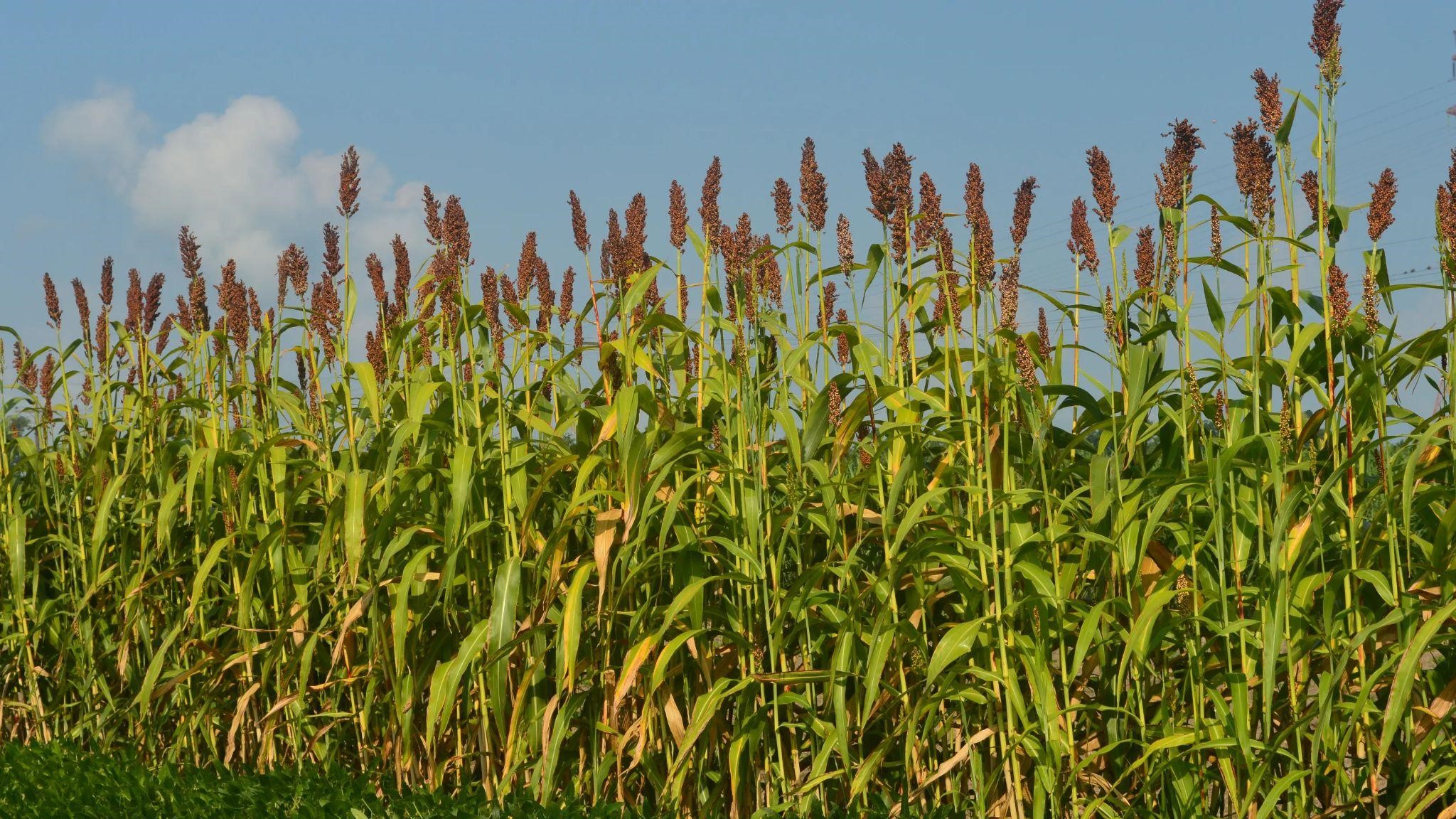
- 24 May 2024
Why is it in the News?
Governments should be using their agriculture extension services to raise awareness among farmers, and consumers about the benefits & practical applications of sweet sorghum in people’s diet.
About Sweet Sorghum:
- Sweet sorghum is the most important millet crop occupying the largest area among the cereals next to rice.
- It is mainly grown for its grain and fodder.
- Alternative uses of sorghum include commercial utilization of grain in the food industry and utilization of stalk for the production of value-added products like ethanol, syrup jaggery and enriched bagasse as fodder and as a base material for cogeneration.
- Sweet sorghum has emerged as a supplementary crop to sugarcane in dry land pockets for the production of ethanol.
- The success rate is high because of the use of existing machinery available in the sugar factories and attached distilleries.
- The advantages of the crop are it can be grown with limited water and minimal inputs and it can be harvested in four months.
Climate and Soil:
- Sweet sorghum can be sown in June with the southwest monsoon, in September-October with the northeast monsoon (500-600 mm rainfall), or in summer with assured irrigation.
- The crop prefers moderate rainfall; excessive moisture or heavy rain after flowering can reduce sugar content.
- With irrigation, early sowing before June can prevent issues with heavy rains during flowering and grain maturation.
- Summer sowing may result in lower biomass and sugar yield. Sweet sorghum thrives in well-drained soils of medium depth (18" and above), with water requirements varying by soil type (red, black, laterite, and loamy).
Multiple Uses of Sweet Sorghum:
- Sweet sorghum is a versatile crop used for grain, animal feed, and sugary juice.
- Its grains are made into steamed bread, porridge, and beer, providing high nutritional value with proteins, carbohydrates, fibre, and essential minerals like potassium, calcium, sodium, and iron.
- Resilient in arid climates, sweet sorghum produces significant biomass, which, along with grains, serves as high-quality animal feed.
- The sugary juice from its stalks is used for bioethanol production, yielding more ethanol per hectare than maize, second only to sugarcane.
- Notably, sweet sorghum is drought-resistant, capable of dormancy during dry periods and resuming growth later.
- Its tolerance to low water, nitrogen inputs, salinity, and drought stress makes it ideal for arid regions, making it popular in the US, Brazil, and China.
Shallow Aquifer Management (SAM)
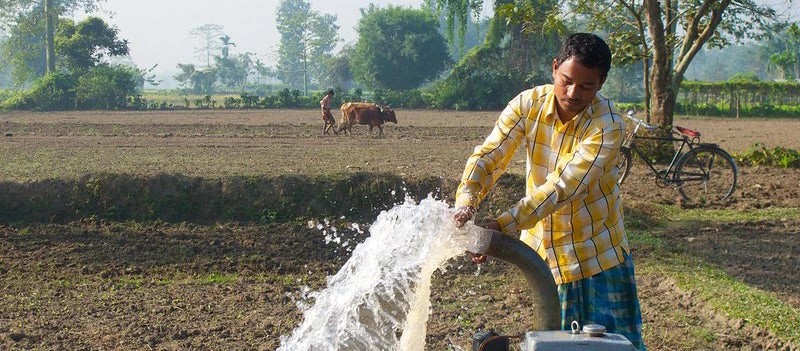
- 24 May 2024
Why is it in the News?
Securing water for the future as the mantra, the Greater Hyderabad Municipal Corporation (GHMC) in the latest intervention has taken up the Shallow Aquifer Management (SAM) model on a pilot basis in the city.
What is an Aquifer?
- An aquifer is a body of porous rock or sediment that is saturated with groundwater.
- Groundwater enters an aquifer through precipitation that seeps down through the soil.
- It can then move through the aquifer and emerge at the surface via springs and wells.
- Aquifers are classified into two types:
- Deep Aquifers
- Shallow Aquifers
What is Shallow Aquifer Management (SAM)?
- In 2022, the Atal Mission for Rejuvenation and Urban Transformation (AMRUT) launched a Shallow Aquifer Management (SAM) pilot program in ten cities across nine states:
- Bengaluru (Karnataka), Chennai (Tamil Nadu), Dhanbad (Jharkhand), Gwalior (Madhya Pradesh), Hyderabad (Telangana), Jaipur (Rajasthan), Kolkata (West Bengal), Pune and Thane (Maharashtra), and Rajkot (Gujarat).
- The SAM pilot is overseen by the National Institute of Urban Affairs (NIUA) and supported by the Advanced Center for Water Resources Development and Management (ACWADAM) in Pune and the Biome Environmental Trust in Bengaluru.
- Under SAM, the Greater Hyderabad Municipal Corporation (GHMC) has identified five municipal parks for implementation this year.
How does it work?
- The project involves drilling shallow water injection borewells to depths of 100-120 feet to extract water from shallow aquifers.
- This process helps recharge the underlying layers during rainfall events by collecting water from the surrounding watershed and directing it through recharge pits.
- Consequently, underground water layers are replenished, leading to a rise in the water table.
Tropical Cyclone Remal
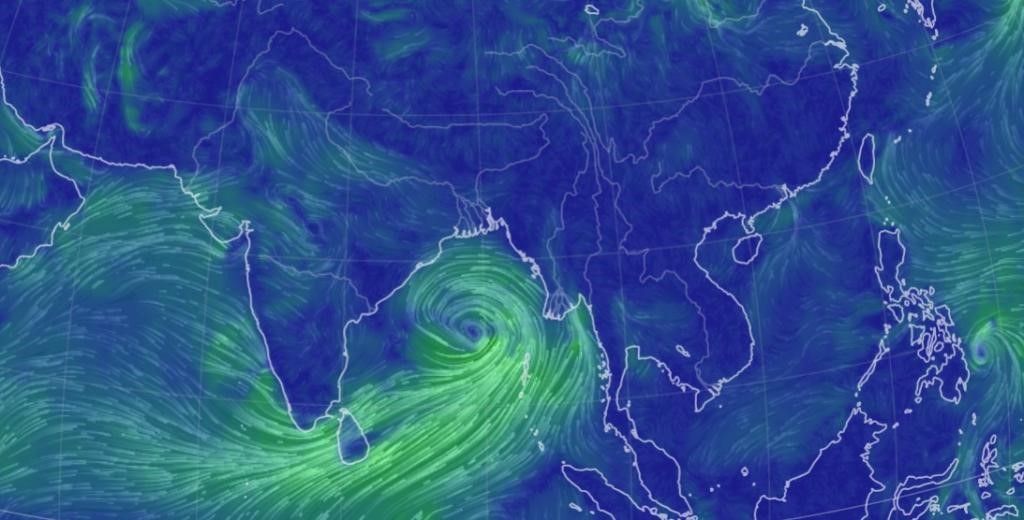
- 24 May 2024
Why is it in the News?
The first cyclone in the Bay of Bengal this pre-monsoon season, Cyclone Remal, is expected to make landfall between Sagar Island in West Bengal and Bangladesh's Khepupara on Sunday midnight.
About Cyclone Remal:
- The IMD has forecasted that a depression in the Bay of Bengal is likely to concentrate into a severe cyclonic storm and make landfall between Sagar Island in West Bengal and Khepupara in Bangladesh around May 26 midnight.
Name of the cyclone:
- If the cyclone is formed, it will be named 'Remal', which means 'sand' in Arabic.
- The cyclone has been named ‘Remal’, according to a system of naming cyclones in the Indian Ocean region.
- A standard naming convention is followed for tropical cyclones forming in the North Indian Ocean, including the Arabian Sea and the Bay of Bengal.
- As the IMD is a part of the Regional Specialised Meteorological Centres (RSMCs), it gives names to the tropical cyclones after consulting 12 other countries in the region.
- The name 'Remal' has been suggested by Oman which means 'sand' in Arabic.
What is a Tropical Cyclone?
- A tropical cyclone is a rapidly rotating storm system characterized by a low-pressure centre, strong winds, and a spiral arrangement of thunderstorms that produce heavy rain.
- These cyclones develop over warm tropical or subtropical waters and can cause significant damage due to high winds, heavy rainfall, and storm surges.
How a Tropical Cyclone is Formed?
- Tropical cyclones form over warm ocean waters near the equator.
- The process begins when warm, moist air rises from the ocean surface, creating an area of low pressure.
- This causes surrounding air with higher pressure to move toward the low-pressure area, warming up and rising as well.
- As this air rises and cools, the moisture condenses to form clouds.
- The system of clouds and wind starts to spin and grow, fueled by the ocean's heat.
- When the wind speeds increase sufficiently, an eye forms in the centre of the cyclone.
Characteristics of a Tropical Cyclone:
- Calm Center: The eye of the cyclone is calm and clear, with very low air pressure.
- High Wind Speeds: The average wind speed of a tropical cyclone is around 120 km/h.
- Closed Isobars: These are lines on a weather map that connect areas of equal atmospheric pressure, leading to greater wind velocity.
- Oceanic Origin: Tropical cyclones develop over oceans and seas.
- Movement: They typically move from east to west under the influence of trade winds.
- Seasonal: Tropical cyclones are seasonal phenomena.
How are Cyclones Classified?
- The Indian Meteorological Department (IMD) classifies cyclones based on wind speeds:
- Depression: Wind speeds between 31–49 km/h
- Deep Depression: Wind speeds between 50-61 km/h
- Cyclonic Storm: Wind speeds between 62–88 km/h
- Severe Cyclonic Storm: Wind speeds between 89-117 km/h
- Very Severe Cyclonic Storm: Wind speeds between 118-166 km/h
- Extremely Severe Cyclonic Storm: Wind speeds between 166-221 km/h
- Super Cyclonic Storm: Wind speeds above 222 km/h
Global Species Action Plan (GSAP) SKILLS Platform
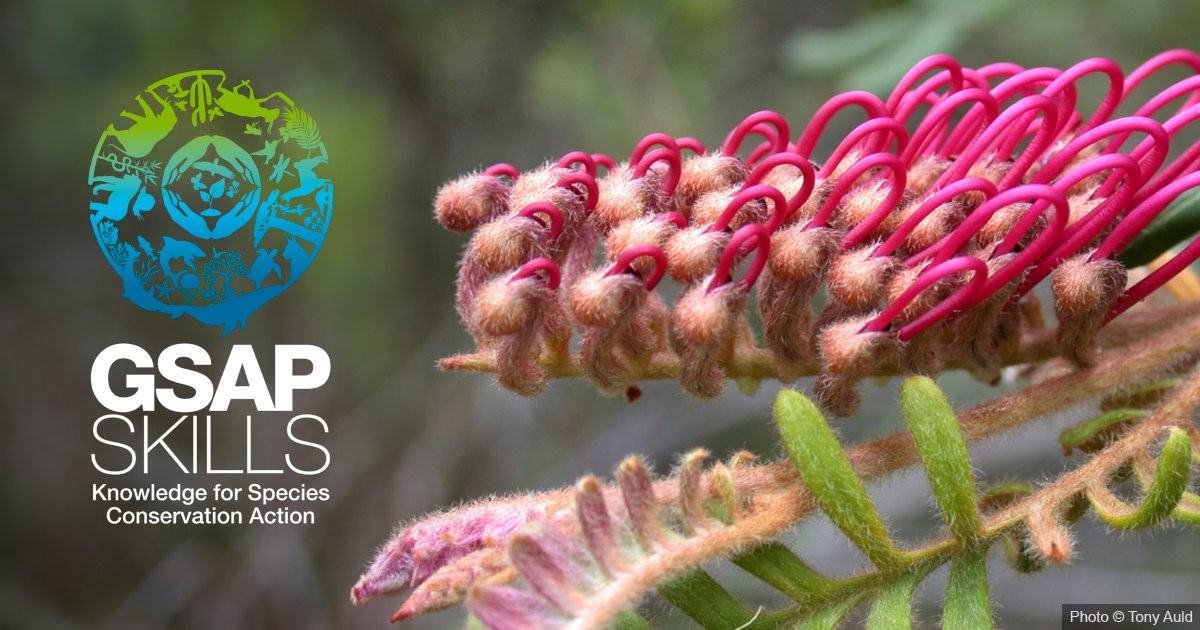
- 24 May 2024
Why is it in the News?
In response to the escalating biodiversity crisis, the Global Species Action Plan (GSAP) is designed to support the implementation of the Kunming-Montreal Global Biodiversity Framework (GBF).
About GSAP SKILLS Platform:
- The Global Species Action Plan (GSAP) SKILLS platform, standing for (Species Conservation Knowledge, Information, Learning, Leverage, and Sharing), brings the GSAP’s content online and enables real-time updates of technical tools and resources.
- This platform aims to facilitate global collaboration and partnership by connecting decision-makers, species conservation practitioners, and experts at all levels.
- It ensures accessibility and relevance by providing real-time updates on technical tools and resources.
- Each target within the Global Biodiversity Framework is accompanied by a summary and rationale for species conservation interventions, actions, and sub-actions, along with the actors involved and the technical tools and resources required, facilitating the scaling-up of implementation efforts.
- Managed proactively by the International Union for Conservation of Nature (IUCN), the platform meets the needs of governments and stakeholders to take decisive action for species conservation.
- The development of the GSAP SKILLS platform has been principally supported by the Ministry of Environment, Republic of Korea, with additional resources from the Tech4Nature Initiative, launched by IUCN and Huawei in 2020.
What is the Global Species Action Plan?
- It has been developed to support the implementation of the Kunming-Montreal Global Biodiversity Framework (GBF) and to address the increasing biodiversity loss worldwide.
- It outlines strategic interventions and actions to conserve and sustainably manage species while ensuring equitable benefits.
About Kunming-Montreal Global Biodiversity Framework:
- The Kunming-Montreal Global Biodiversity Framework (GBF) is an outcome of the 2022 United Nations Biodiversity Conference.
- Its tentative title had been the "Post-2020 Global Biodiversity Framework".
- The GBF was adopted by the 15th Conference of Parties (COP15) to the Convention on Biological Diversity (CBD) on 19 December 2022.
- It has been promoted as a "Paris Agreement for Nature".
- It is one of a handful of agreements under the auspices of the CBD, and it is the most significant to date.
- It has been hailed as a "huge, historic moment" and a "major win for our planet and for all of humanity."
- UN Secretary-General António Guterres speaking at the 2022 biodiversity conference in Montreal which led to this treaty
- The Framework is named after two cities, Kunming, which was scheduled to be the host city for COP15 in October 2020 but postponed and subsequently relinquished the hosting duties due to China's COVID policy, and Montreal, which is the seat of the Convention on Biological Diversity Secretariat and stepped in to host COP15 after Kunming's cancellation.
The League of Arab States (LAS)/Arab League
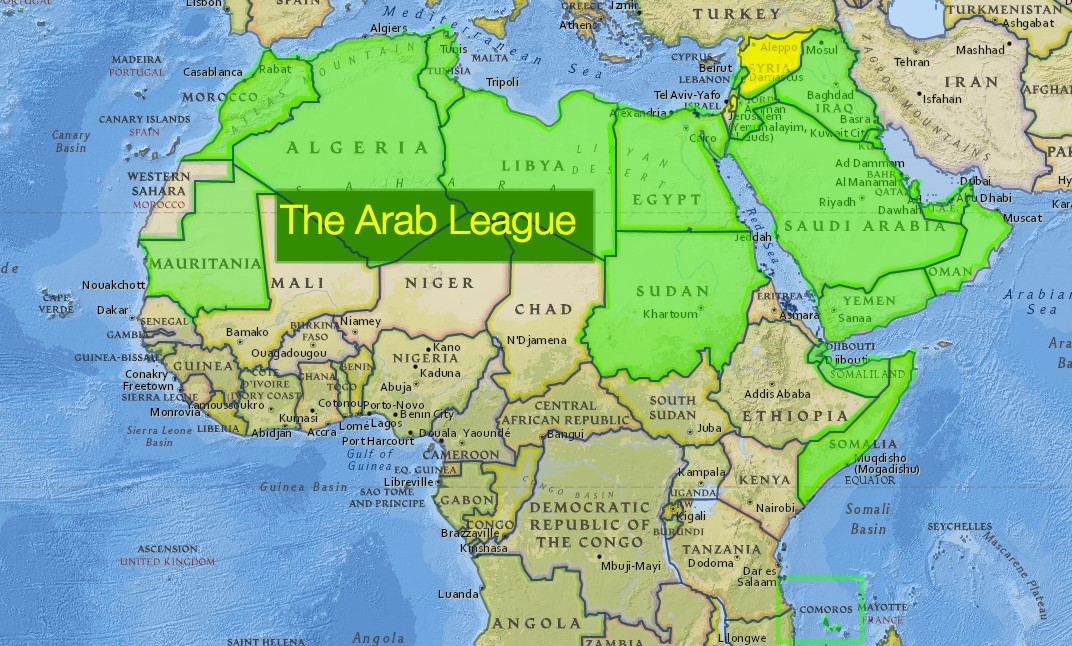
- 24 May 2024
Why is it in the News?
The Arab League called recently for a UN peacekeeping force in the "occupied Palestinian territories" at an international summit dominated by the war between Israel and Hamas.
What is the Arab League?
- The League of Arab States was formed in Cairo on 22 March 1945 with six members: Egypt, Iraq, Transjordan (later renamed Jordan), Lebanon, Saudi Arabia and Syria, with Yemen joining on 5 May 1945.
- It currently has 22 member states; Algeria, Bahrain, Comoros, Djibouti, Egypt, Iraq, Jordon, Kuwait, Lebanon, Libya, Mauritania, Morocco, Oman, Palestinian Authority, Qatar, Saudi Arabia, Somalia, Sudan, Syria, Tunisia, United Arab Emirates and Yemen.
- Four countries have been admitted as observers: Brazil, Eritrea, India and Venezuela.
- Each member state has one vote in the League Council, while decisions are binding only on those states that have voted for them.
- The official language of the Arab League and its 22 member states is Arabic.
- The league seeks to promote the political, social, and military interests of its members.
- The head of the league is known as the secretary-general.
- The secretary-general is appointed to a five-year term by a two-thirds majority of league members.
- Headquarters: Cairo, Egypt.
Goals:
- The overall aim of the league is to promote Arab interests.
- Its main goals are to strengthen and coordinate the political, cultural, economic, and social programs of its members and to try to settle disputes among them or between them and third parties.
- In 1950 the members also agreed to provide military support to help defend each other.
The Arab League Council:
- The League Council is the highest body of the Arab League and is composed of representatives of member states, typically foreign ministers, their representatives, or permanent delegates.
- Each member state has one vote.
- The Council meets twice a year, in March and September. Two or more members may request a special session if they desire.
- The general secretariat manages the daily operations of the league and is headed by the secretary-general.
- The general secretariat is the administrative body of the league, the executive body of the council, and the specialized ministerial councils.
El Niño and La Nina
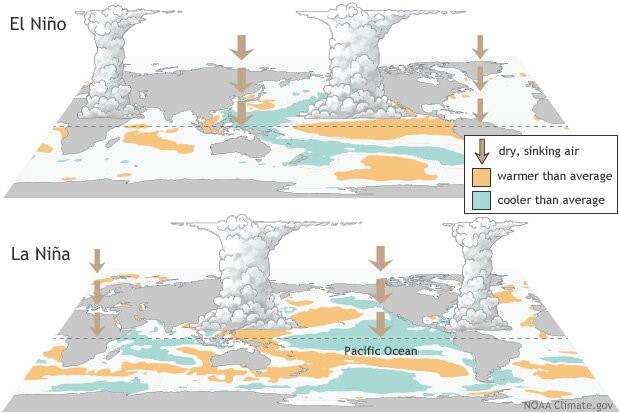
- 23 May 2024
Why is it in the News?
Last month, the India Meteorological Department (IMD) forecasted above-normal rain in the upcoming monsoon season in India, with “favourable” La Nina conditions expected to set in by August-September.
What are El Niño and La Nina?
- El Niño (meaning “little boy” in Spanish) and La Nina (meaning “little girl” in Spanish) are climate phenomena that are a result of ocean-atmosphere interactions, which impact the temperature of waters in the central and eastern tropical Pacific Ocean which affects global weather.
- The Earth’s east-west rotation causes all winds blowing between 30 degrees to the north and south of the equator to slant in their trajectory.
- As a result, winds in the region flow towards a southwesterly direction in the northern hemisphere and a northwesterly direction in the southern hemisphere which is known as the Coriolis Effect.
- Due to this, winds in this belt (called trade winds) blow westwards on either side of the equator.
- Under normal ocean conditions, these trade winds travel westwards along the equator from South America towards Asia.
- Wind movement over the ocean results in a phenomenon called upwelling, where cold water beneath the ocean surface rises and displaces the warm surface waters.
- At times, the weak trade winds get pushed back towards South America and there is no upwelling.
- Thus, warmer-than-usual sea surface temperatures are recorded along the equatorial Pacific Ocean, and this is known as the emergence of El Niño conditions.
- Conversely, during La Nina, strong trade winds push warm water towards Asia.
- Greater upwelling gives rise to cold and nutrient-rich water towards South America.
- Thus, climatologically, El Niño and La Nina are opposite phases of what is collectively called the El Niño Southern Oscillation (ENSO) cycle.
- It also includes a third neutral phase.
- El Niño events are far more frequent than La Nina ones.
- Once every two to seven years, neutral ENSO conditions get interrupted by either El Niño or La Nina.
- Recently, La Nina conditions prevailed between 2020 and 2023.
How could the incoming La Nina impact global weather?
- La Niña, driven by the cooling of ocean waters due to the ENSO (El Niño-Southern Oscillation) cycle, can significantly influence global weather patterns.
- The air circulation loop in the region, affected by these temperature changes, impacts precipitation levels in neighbouring areas and can alter the Indian monsoon.
- Currently, the El Niño event that began in June last year has significantly weakened.
- Neutral ENSO conditions are expected to be established by June.
- Following this, La Niña conditions are anticipated to emerge, with its effects likely becoming apparent from August.
La Nina’s Impact on India:
- With above normal rain forecast, the seasonal rainfall is expected to be 106 per cent of the Long Period Average (LPA), which is 880mm (1971-2020 average).
- Except in east and northeast India, all remaining regions are expected to receive normal or above-seasonal rainfall.
- Heavy rains could result in some regions witnessing riverine and urban flooding, mudslides, landslides and cloudbursts.
- East and northeast India region, during La Nina years, receive below average seasonal rainfall.
- Therefore, there may be a shortfall in water reserves there this year.
- During La Nina years, incidents of thunderstorms generally increase.
- “The east and northern India regions could experience thunderstorms accompanied by lightning.
- With increased farming activities undertaken during the July and August rainy months, which coincides with the season’s enhanced lightning and thunderstorms, there is a high risk of fatalities in these regions.
- In addition to ENSO, there are other parameters that can impact the monsoon.
- However, in a La Nina year, a deficit monsoon over India can be easily ruled out.
La Nina’s Impact on the World:
- Similar to India, Indonesia, the Philippines, Malaysia and their neighbouring countries receive good rainfall during a La Nina year.
- This year, Indonesia has already witnessed floods.
- On the other hand, droughts are common in southern regions of North America, where winters become warmer than usual.
- Canada and the northwestern coast of the United States see heavy rainfall and flooding.
- Southern Africa receives higher than usual rainfall, whereas eastern regions of the continent suffer below-average rainfall.
- ENSO has a huge impact on hurricane activity over the Atlantic Ocean.
- During a La Nina year, the hurricane activity here increases.
- For instance, the Atlantic Ocean churned out a record 30 hurricanes during the La Nina year 2021.
Is Climate Change Affecting ENSO?
- Over India, El Niño is known to suppress the southwest monsoon rainfall and drive higher temperatures and intense heat waves, like the present summer season.
- In the past, monsoon seasons during years following an El Niño were 1982-1983 and 1987-1988, with both 1983 and 1988 recording bountiful rainfall.
- At present too, a similar situation could play out.
- The 2020-2023 period witnessed the longest La Nina event of the century.
- Thereafter, ENSO neutral conditions developed, which soon gave way to El Niño by June 2023 which has been weakening since December last year.
- Scientists say that climate change is set to impact the ENSO cycle.
- Many studies suggest that global warming tends to change the mean oceanic conditions over the Pacific Ocean and trigger more El Niño events.
- The World Meteorological Organization (WMO) has also said that climate change is likely to affect the intensity and frequency of extreme weather and climate events linked to El Niño and La Nina.
Bay of Bengal Initiative for Multi-Sectoral Technical and Economic Cooperation (BIMSTEC)
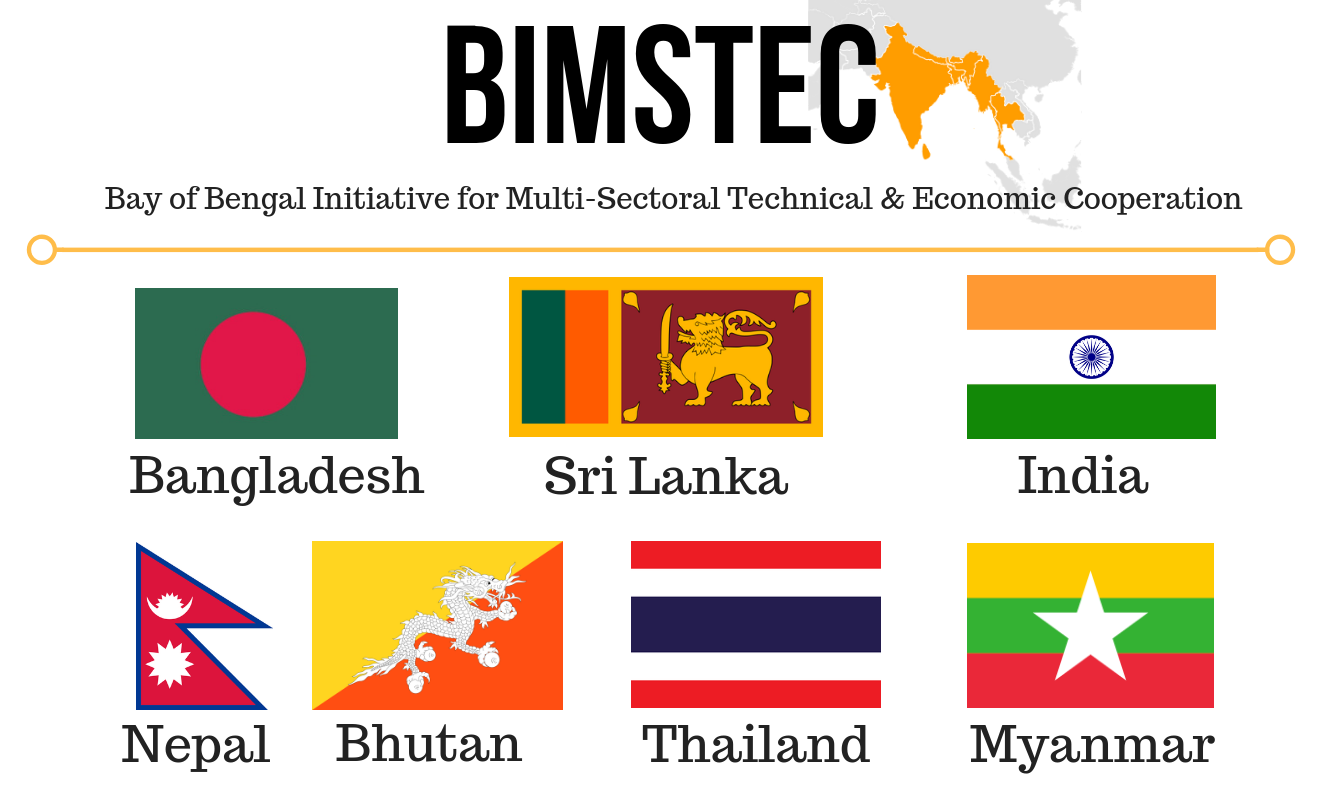
- 23 May 2024
Why is it in the News?
The Bay of Bengal Initiative for Multi-Sectoral Technical and Economic Cooperation (BIMSTEC) will now be open to new members and observers after a historic first charter of the grouping came into force on 20 May.
What is BIMSTEC?
- The Bay of Bengal Initiative for Multi-Sectoral Technical and Economic Cooperation (BIMSTEC) is a multilateral regional organization that brings together seven member states located in the littoral and adjacent areas of the Bay of Bengal, forming a contiguous regional unity.
- Aims: The primary aim of BIMSTEC is to accelerate shared growth and cooperation among littoral and adjacent countries in the Bay of Bengal region.
- Formation: The organization was initially founded as BIST-EC in June 1997, following the adoption of the Bangkok Declaration.
- The founding members included Bangladesh, India, Sri Lanka, and Thailand.
- With Myanmar's entry in late 1997, the organization evolved into BIMST-EC (Bangladesh, India, Myanmar, Sri Lanka, and Thailand Economic Cooperation).
- In 2004, the inclusion of Nepal and Bhutan led to the formation of BIMSTEC, as we know it today.
- The current member states comprise five South Asian nations: Bangladesh, Bhutan, India, Nepal, and Sri Lanka, and two Southeast Asian nations: Myanmar and Thailand.
- BIMSTEC's Permanent Secretariat is situated in Dhaka, Bangladesh, serving as a hub for regional cooperation and coordination among member states.
Areas of cooperation:
- BIMSTEC functions as a sector-driven cooperative organization, initially focusing on six key sectors: Trade, Technology, Energy, Transport, Tourism, and Fisheries.
- Over time, the scope of cooperation has expanded, and as of now, BIMSTEC has identified 14 priority areas of cooperation.
- The inclusion of Climate Change in 2008 marked the 14th priority area.
- Within these priority areas, each member country takes responsibility for leading specific sectors.
- This allows for focused efforts and utilization of regional expertise.
- India, for example, is the leading country in several crucial areas, including Transport & Communication, Tourism, Environment & Disaster Management, and Counter-Terrorism & Transnational Crime.
- This leadership role involves coordinating initiatives, sharing best practices, and driving collaborative efforts within these sectors to enhance regional development and cooperation.
Planetary Alignment
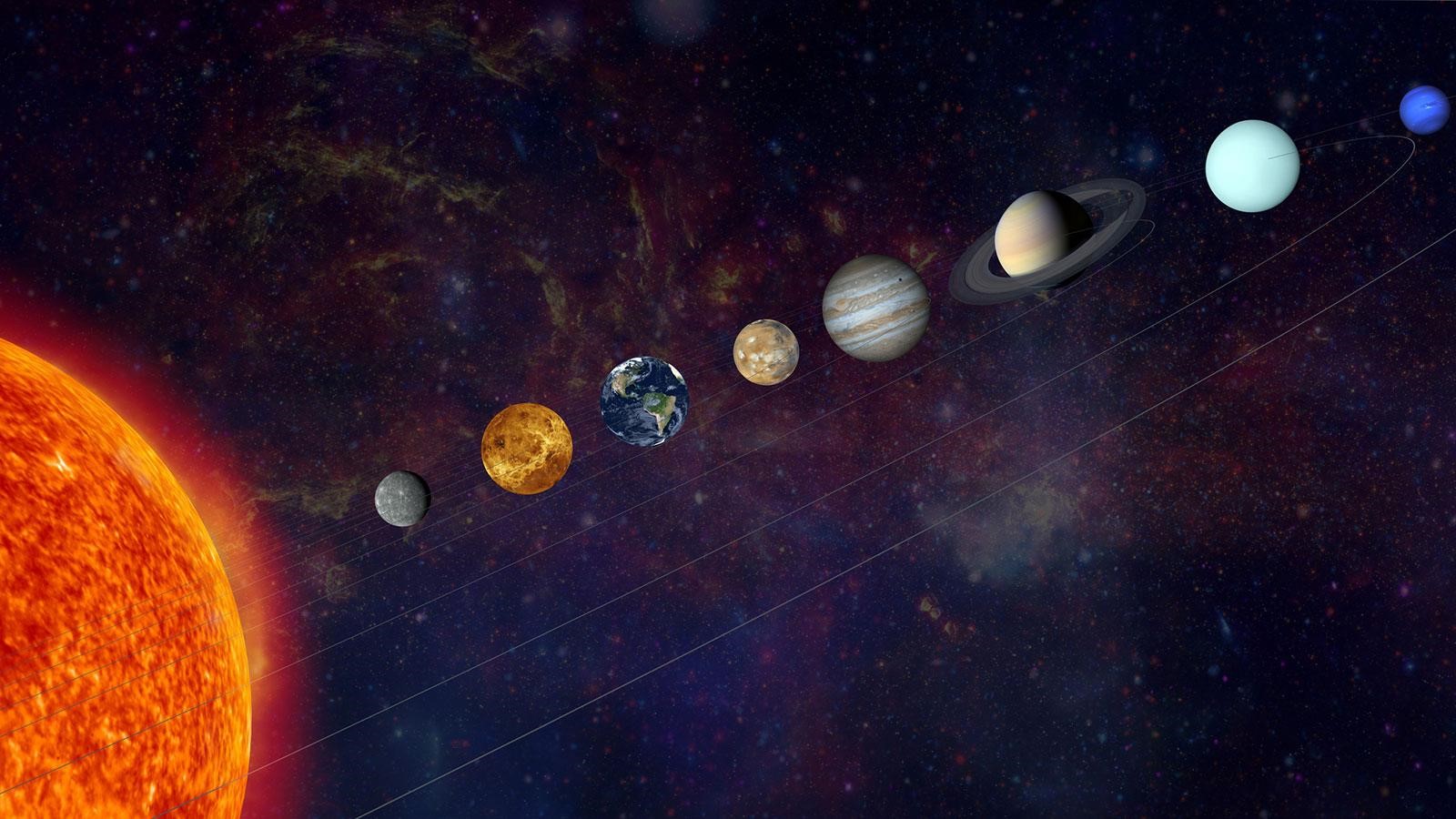
- 23 May 2024
Why is it in the News?
Next month, on June 3, there will be a planetary alignment that may actually allow you to witness six planets align in the sky.
What is a Planetary Alignment?
- Planetary alignment is a term used to describe the positioning of planets in the solar system such that they appear to be in a straight line or close to one when viewed from a specific vantage point, for us that's Earth.
- It is an astronomical event that happens when, by coincidence, the orbits of several of the planets of the Solar System bring them to roughly the same side of the Sun at the same time.
- This phenomenon is more an illusion of perspective rather than the planets being in a perfect line in space.
- It’s important to emphasise that the planets aren’t forming a straight line in space – that’s a much rarer astronomical event called a syzygy.
- However, because all the planets, including the Earth, orbit around the Sun in roughly the same orientation (moving in which we call the “Plane of the Ecliptic”), when they’re on the same side of the Sun as each other, they appear to form a line in the sky when we view them from Earth.”
- Planetary alignments are rather common within themselves, especially when two, three, or even four planets align in the sky.
- Five or more planets aligning, however, is less common.
- April 8, 2024, was the last time the planets were all in alignment.
Which planets will align?
- Mercury, Mars, Jupiter, Saturn, Uranus, and Neptune will form a near-straight line, offering an extraordinary opportunity to witness this cosmic phenomenon.
Which planets will be visible?
- While six planets align, not all of them will be visible to the naked eye, due to their vast distance from Earth.
- Meanwhile, the Moon will also play a spoilsport as it distorts the visibility.
- Mercury and Jupiter will be tricky to see in the sky due to their proximity to the Sun in their orbit.
- However, Mars and Saturn will be visible to the naked eye, though very dim.
- Meanwhile, keen observers will need telescopes or high-powered binoculars to spot the distant planets Uranus and Neptune.
Economic Capital Framework (ECF)
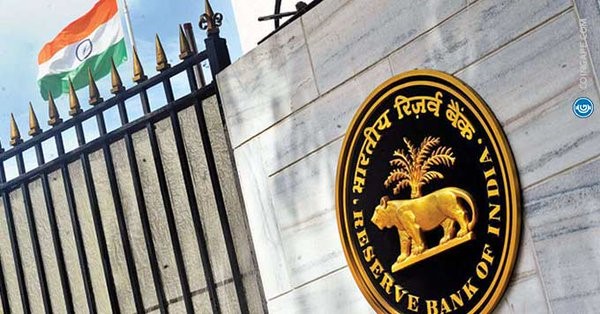
- 23 May 2024
Why is it in the News?
The Central Board of the Reserve Bank of India (RBI) has approved a record surplus transfer of Rs 2.11 lakh crore to the Central government for the fiscal year 2023-24, determined based on the Economic Capital Framework (ECF).
What is the Economic Capital Framework (ECF)?
- The Economic Capital Framework (ECF) is an objective, rule-based, transparent methodology for determining the appropriate level of risk provisions (fund allocation to capital reserve) that is to be made under Section 47 of the Reserve Bank of India Act.
- The Reserve Bank of India (RBI) developed an Economic Capital Framework (ECF) for determining the allocation of funds to its capital reserves so that any risk contingency can be met as well as to transfer the profit of the RBI to the government.
- There are two clear objectives for the ECF.
- First, the RBI as a macroeconomic institution has the responsibility to fight any disorder especially a crisis in the financial system. Here, to meet such a crisis, the RBI should have adequate funds attached under the capital reserve.
- Second, is transferring the remaining part of the net income to the government.
- The process of adding funds to the capital reserve is a yearly one where the RBI allots money out of its net income to the capital reserve.
- How much funds shall be added to the capital reserve each year depends upon the risky situation in the financial system and the economy.
- The process of allocation of funds is technically called as provisioning (risk provisioning etc.,) to the reserves.
- After allotting money to the capital reserve, the remaining net income of the RBI is transferred to the government as profit.
- Since the government is the shareholder of the RBI, the latter’s income (means profit) should be transferred to the Government (Section 47 of the RBI Act).
- Previously, there were several attempts to frame an ECF for the RBI. However, under the changed circumstances, the RBI central board constituted a new committee (under Bimal Jalan) to design an ECF in 2018.
What is a Bimal Jalan Committee?
- The Reserve Bank of India (RBI) in November 2018 had constituted a six-member committee, chaired by former governor Dr Bimal Jalan, to review the current economic capital framework (ECF), after the Ministry of Finance asked the central bank to follow global practices.
What did the Bimal Jalan Committee Recommend?
- According to the Committee, a better distinction between the two components of RBI's economic capital, realised equity and revaluation balances, was needed.
- The realised equity can be used as a buffer in meeting losses, whereas the revaluation balances will be used only during market risks as they are unrealised valuation gains and cannot be distributed.
- The Committee has recommended the adoption of Expected Shortfall (ES) under stressed conditions for measuring the RBI’s market risk and asked to adopt a target of ES 99.5 per cent confidence level.
- It also asked to maintain a Contingent Risk Buffer (CRB) within 6.5 per cent and 5.5 per cent of RBI's balance sheet.
- The Jalan Committee recommended a surplus distribution policy that follows the realised equity maintained by the RBI.
- The panel also suggested that the RBI’s ECF should be reviewed every five years.
- In August 2019, the Central Board of the RBI, chaired by Governor Shaktikanta Das, finalised the RBI’s accounts for 2018-19 using the revised framework to determine risk provisioning and surplus transfer. According to the reports, the RBI had over Rs 9 trillion of surplus capital with it.
Personality Rights
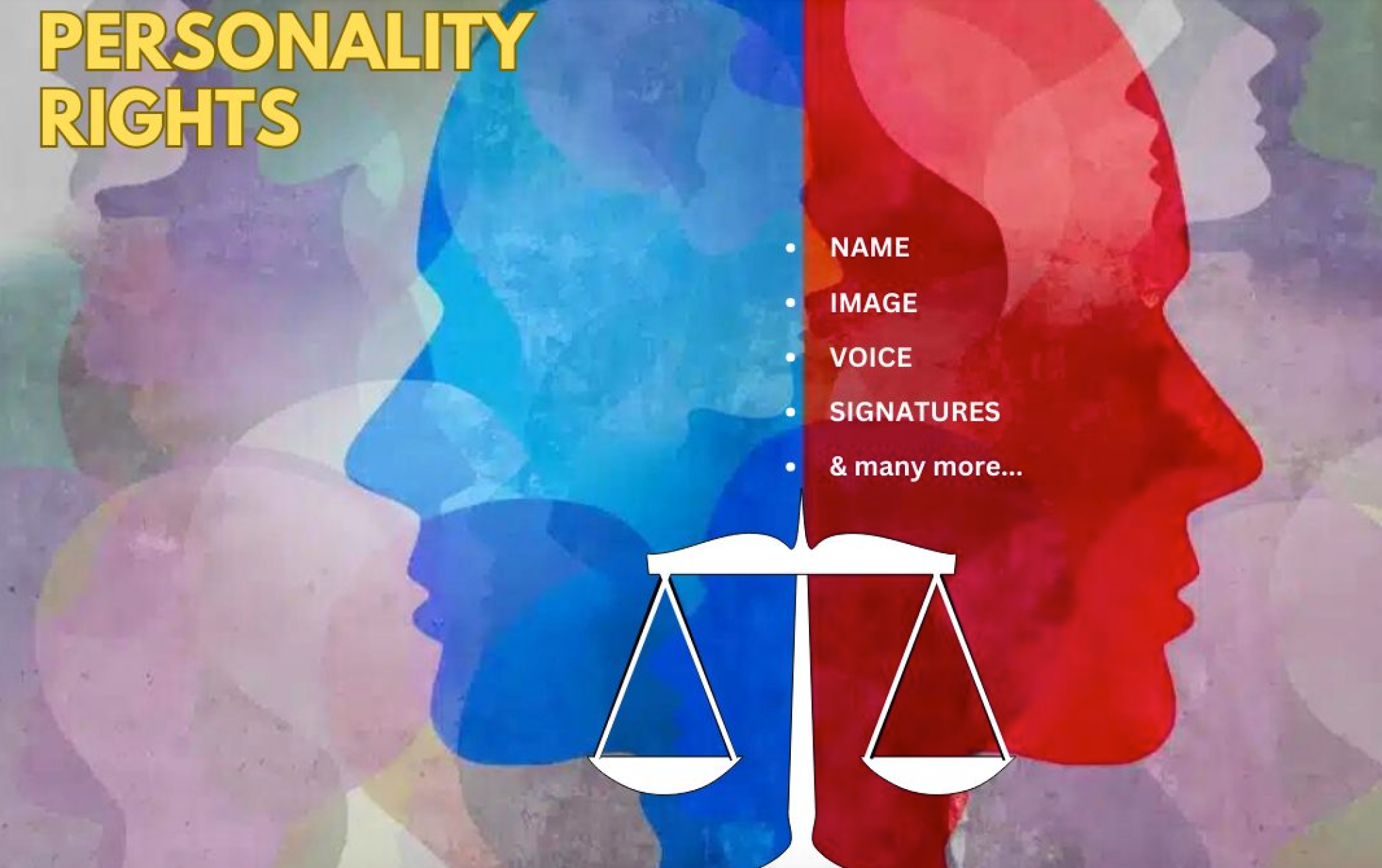
- 23 May 2024
Why is it in the News?
Hollywood actress Scarlett Johansson has said she was “shocked” and “angered” to hear the voice of GPT-4o, OpenAI’s latest AI model, as it sounded “eerily similar” to her own voice.
What are Personality Rights?
- Personality rights or publicity rights are a subset of “celebrity rights” – a much broader term used to refer to certain rights enjoyed by celebrities.
- Besides personality rights, celebrities also have “privacy rights”, which include the right to be left alone.
- The name, voice, signature, images, or any other feature easily identified by the public are markers of a celebrity’s personality and are referred to as “personality rights.”
- These could include poses, mannerisms, or any other distinct aspect of their public persona.
- Several celebrities register aspects of their personalities as trademarks to use them commercially.
- For instance, footballer Gareth Bale trademarked the heart shape he makes with his hands as part of goal celebrations.
- The rationale behind such rights is that only the creator or owner of the unique features can gain commercial benefit from them.
- Therefore, unauthorised use could lead to revenue losses.
- In India, actors such as Rajnikanth, Anil Kapoor and Jackie Shroff have approached the courts over “personality rights” in India.
- Recently, the Delhi HC protected the personality and publicity rights of actor Jackie Shroff while restraining various e-commerce stores, AI chatbots, and social media from misusing Shroff’s name, image, voice, and likeness without his consent.
How are Personality Rights Protected in India?
- Although personality rights or their protection are not explicitly defined in Indian statutes, they usually fall under the right(s) to privacy and property.
- Concepts in intellectual property rights cases, such as passing off and deception, are usually applied in such cases while ascertaining if protection is warranted.
- Protection can be given through damages and injunctions.
International Criminal Court (ICC)
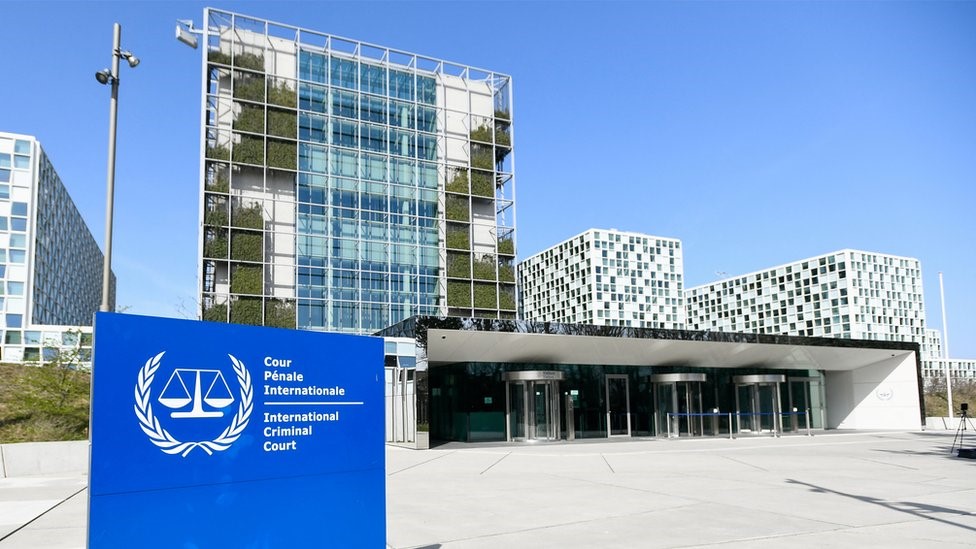
- 21 May 2024
Why is it in the News?
International Criminal Court (ICC) Chief Prosecutor recently announced that he has applied for arrest warrants against Israeli Prime Minister Benjamin Netanyahu and Defence Minister Yoav Gallant for crimes against humanity in the ongoing Gaza war.
What is the International Criminal Court (ICC)?
- The International Criminal Court (ICC) in The Hague (Netherlands) is a permanent global court established in 2002.
- The ICC was created as a result of the Rome Statute, a treaty established at a United Nations conference in Italy and signed in 1998 by 120 countries — giving the ICC its power.
- The ICC is independent of the United Nations (UN) but is endorsed by the UN General Assembly.
- It also maintains a cooperation agreement with the UN.
- It has the power to prosecute individuals and leaders for genocide, crimes against humanity and war crimes.
- Unlike the International Court of Justice (ICJ), which is an organ of the UN, the ICC does not prosecute states.
The Court does not have universal jurisdiction:
- Its jurisdiction only applies to crimes committed by nationals of States Parties or Non-States Parties that have recognized its jurisdiction through declaration and crimes committed in such States.
- The Court may also exercise its jurisdiction for crimes that have been referred to it by the United Nations Security Council, in accordance with a resolution adopted under Chapter VII of the Charter of the United Nations.
The Court’s jurisdiction is governed by the principle of complementarity:
- It does not relieve States of their primary responsibility and only intervenes when the States have been unable or did not wish, to try crimes under their jurisdiction.
- The Court is not a United Nations body. However, it is part of the international system to fight against impunity and prevent and handle crises.
How is the ICC governed?
- The Rome Statute created three bodies:
- The International Criminal Court
- The Assembly of States Parties
- The Trust Fund for Victims
- The Assembly of States Parties (ASP) is made up of representatives of States Parties.
- It provides general guidelines while respecting the independence of the Court and makes decisions relating to how it operates (in particular by electing judges and the Prosecutor and by approving the ICC’s budget).
- The Trust Fund for Victims was created by the ASP to grant individual reparations to victims by executing reparations orders handed down by the Court.
- It also contributes to their rehabilitation through psychological and physical recovery and material support.
- The Fund has financed projects in Uganda, the Central African Republic and the Democratic Republic of the Congo.
The International Criminal Court is made up of four bodies:
- The Presidency (made up of three judges) is responsible for external relations with States, organizes the Divisions’ judicial work and supervises the administrative work of the Registry;
- The Judicial Divisions – the Pre-Trial Division, the Trial Division and the Appeals Division – carry out judicial proceedings;
- The Office of the Prosecutor carries out preliminary analyses, investigations and prosecutions;
- The Registry carries out non-judicial activities related to safety, interpretation, information and outreach or support to lawyers for the defence and victims.
The recruitment process for judges at the ICC:
- Every three years, the ASP elects six new judges, a third of the 18 ICC judges, for a term of nine years.
- The candidates for the position of judge at the ICC are presented by the States Parties.
- The election of judges is governed by a unique procedure that aims to ensure, insofar as possible, that there is a balanced bench with regard to legal expertise, geographical representation and gender.
How does the International Criminal Court differ from the International Court of Justice?
International Criminal Court:
1. Part of the United Nations (UN)?
Ans. No, The International Criminal Court is independent but co-operates closely with the UN.
2. What is its aim?
Ans. To try individuals who are suspected of the crime of genocide, war crimes, crimes against humanity or the crime of aggression.
3. Where is it located?
Ans. The Hague
International Court of Justice:
1. Part of the United Nations (UN)?
Ans. No, The International Court of Justice is the principal judicial organ of the United Nations.
2. What is its aim?
Ans. To settle legal disputes between states,and to advise the UN on legal questions.
3. Where is it located?
Ans. The Hague
AI Agents

- 22 May 2024
Why is it in the News?
Known as ‘AI agents’, GPT-4o and Project Astra have been touted as far superior to conventional voice assistants such as Alexa, Siri, and Google Assistant.
What are AI Agents?
- AI agents are sophisticated AI systems that can engage in real-time, multi-modal (text, image, or voice) interactions with humans.
- Unlike conventional language models, which solely work on text-based inputs and outputs, AI agents can process and respond to a wide variety of inputs including voice, images, and even input from their surroundings.
- AI agents are designed to perceive their environment and take actions in order to achieve specific goals.
- They perceive their environment through sensors, process the information using algorithms or models, and then take actions using actuators or other means.
- AI agents can range from simple systems that follow predefined rules to complex, autonomous entities that learn and adapt based on their experiences.
- They're utilized in various fields, including robotics, gaming, virtual assistants, autonomous vehicles, and more.
- These agents can be reactive (responding directly to stimuli), deliberative (planning and making decisions), or even have learning capabilities (adapting their behaviour based on data and experiences).
How are they Different From Large Language Models?
- While large language models (LLMs) like GPT-3 and GPT-4 have the ability only to generate human-like text, AI agents make interactions more natural and immersive with the help of voice, vision, and environmental sensors.
- Unlike LLMs, AI agents are designed for instantaneous, real-time conversations with responses much similar to humans.
- LLMs lack contextual awareness, while AI agents can understand and learn from the context of interactions, allowing them to provide more relevant and personalised responses.
- Also, language models do not have any autonomy since they only generate text output.
- AI agents, however, can perform complex tasks autonomously such as coding, data analysis, etc.
- When integrated with robotic systems, AI agents can even perform physical actions.
What are the Potential Uses of AI Agents?
- AI agents can serve as intelligent and highly capable assistants.
- They are capable of handling an array of tasks, from offering personalised recommendations to scheduling appointments.
- AI agents can be ideal for customer service as they can offer seamless natural interactions, and resolve queries instantly without actually the need for human interventions.
- In the field of education and training, AI agents can act as personal tutors, customise themselves based on a student’s learning styles, and may even offer a tailored set of instructions.
- In healthcare, they could assist medical professionals by providing real-time analysis, diagnostic support, and even monitoring patients.
Risks and Challenges Associated With AI Agents:
- While AI agents showcase immense potential for the future, they are not without risks.
- Privacy and security are a key area of concern as AI agents gain access to more personal data and environmental information.
- Just like any AI model, AI agents can carry forward biases from their training data or algorithms, leading to harmful outcomes.
As these systems become more common, appropriate regulations and governance frameworks should be laid out to ensure their responsible deployment.
Doppler Radar Speed Guns

- 22 May 2024
Why is it in the News?
The Consumer Affairs Ministry has invited public comments by June 11 on draft rules for microwave Doppler radar equipment used to measure vehicle speeds on roads, according to a circular issued by the ministry.
What are Doppler Radar Speed Guns?
- Doppler radar speed guns are tools that use the Doppler effect to measure the speed of moving objects, such as vehicles.
- They consist of a radio transmitter and receiver that send out a narrow beam of radio waves.
- When these waves bounce off a moving object, their frequency changes due to the Doppler effect.
- This phenomenon occurs when the frequency of a wave changes as its source moves relative to an observer.
The Doppler Effect
- The Doppler effect refers to the change in frequency or wavelength of a wave in relation to an observer moving relative to the wave source.
- In the case of a radar speed gun, the waves in question are radio waves.
How do Doppler Radar Speed Guns work?
- As the object moves toward or away from the radar gun, the frequency of the reflected waves is altered.
- If the object is approaching the radar, the frequency increases
- If it's moving away, the frequency decreases
- The radar speed gun analyzes these changes to calculate the object's speed using the following equation:
- v = Δf/f × c/2
- where v is the object's speed, Δf is the frequency shift, f is the transmitted frequency, and c is the speed of light.
- Doppler radar speed guns are commonly used by law enforcement to monitor vehicle speeds, ensuring safety on the roads.
- They can also be found in various other applications, such as aviation, navigation, and meteorology.
Advantages
- Non-Contact Measurement: Measures speed without needing to be in contact with the vehicle.
- Quick and Accurate: Provides rapid speed measurements with high accuracy.
- Versatile: Can be used in various conditions and for different types of moving objects.
Census Begins for Blue Sheep and Himalayan ibex
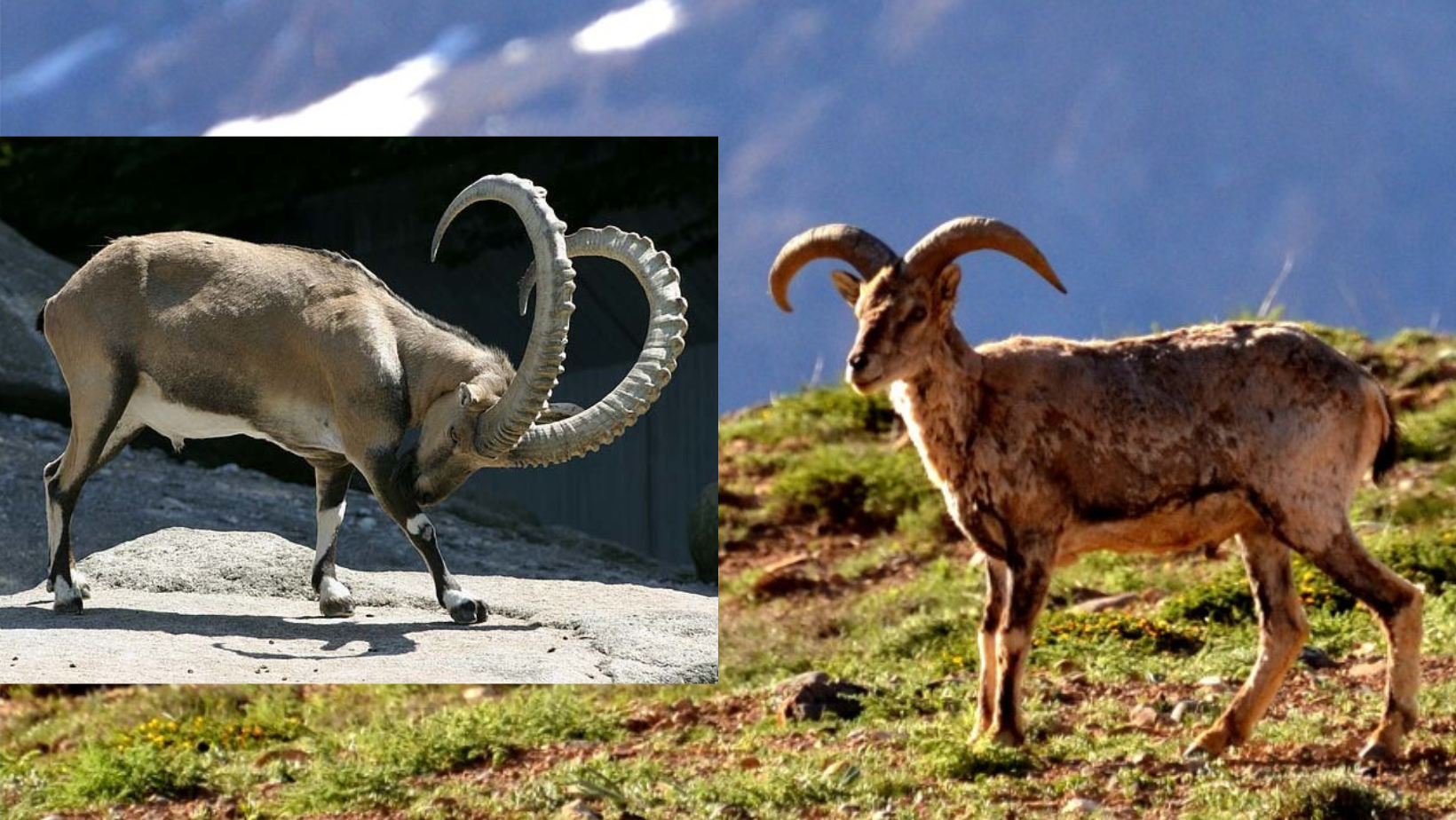
- 22 May 2024
Why is it in the News?
Wildlife authorities in Himachal Pradesh’s high altitude, cold desert district of Lahaul & Spiti have started surveys as part of the census to estimate the population of blue sheep or bharal and the Himalayan ibex, the main prey of the iconic snow leopard.
About Himalayan Ibex:
- The Himalayan ibex, a subspecies of the Siberian ibex, is native to the Himalayan regions of India, Pakistan, Tibet, and Nepal.
- These sure-footed, sturdy wild goats belong to the genus Capra in the family Bovidae and are typically found in mountainous regions across Europe, Asia, and northeastern Africa.
- Scientific Name: Capra sibirica hemalayanus
- Habitat: Himalayan ibex inhabit the high-altitude regions of the Himalayas, including the Trans-Himalayan areas, at elevations between 3,000 and 5,800 meters.
- In India, they are primarily found in the states of Jammu and Kashmir, Himachal Pradesh, and Uttarakhand.
Features:
- Size: Adult Himalayan ibex weighs about 90 kg and stands around 40 inches tall.
- Sexual Dimorphism: Males are larger than females and have large, curved horns with front notches that grow each year.
- Coat: Their coat varies from light brown to reddish-brown with a white belly and distinctive black and white markings on their legs.
- The coat is thick and woolly in winter, shedding in early summer. A darker dorsal stripe is also present.
- Behaviour: They are typically found in small herds, sometimes numbering up to 50 individuals.
- They are agile and can run at speeds of up to 50 km/h.
Conservation Status:
- IUCN Red List: Near Threatened
About Blue Sheep/Bharal:
- The blue sheep, also known as the bharal, is a caprine species native to the high Himalayas.
- Its scientific name is Pseudois nayaur, and it is the sole member of the genus Pseudois.
Distribution:
- The bharal is found in several countries, including India, Bhutan, China (specifically in Gansu, Ningxia, Sichuan, Tibet, and Inner Mongolia), Myanmar, Nepal, and Pakistan.
Features:
- Size: Medium-sized caprids, measuring 115 to 165 cm (45 to 65 in) in length, with tails ranging from 10 to 20 cm (3.9 to 7.9 in).
- They stand 69 to 91 cm (27 to 36 in) at the shoulder.
- Sexual Dimorphism: Males are slightly larger than females.
- Coat: Their short, dense coat is slate grey, often with a bluish shine. The underparts and backs of the legs are white, while the chest and fronts of the legs are black.
- Horns: The horns grow upwards, curve out, and then back, resembling an upside-down arc.
- Behaviour: Bharal are diurnal, alternating between feeding and resting on grassy mountain slopes.
Conservation Status:
- IUCN Red List: Least Concern
- Wildlife Protection Act 1972: Schedule ICoat: Their short, dense coat is slate grey, often with a bluish shine. The underparts and backs of the legs are white, while the chest and fronts of the legs are black.
- Horns: The horns grow upwards, curve out, and then back, resembling an upside-down arc.
- Behaviour: Bharal are diurnal, alternating between feeding and resting on grassy mountain slopes.
Conservation Status:
- IUCN Red List: Least Concern
- Wildlife Protection Act 1972: Schedule I
Aircraft Turbulence
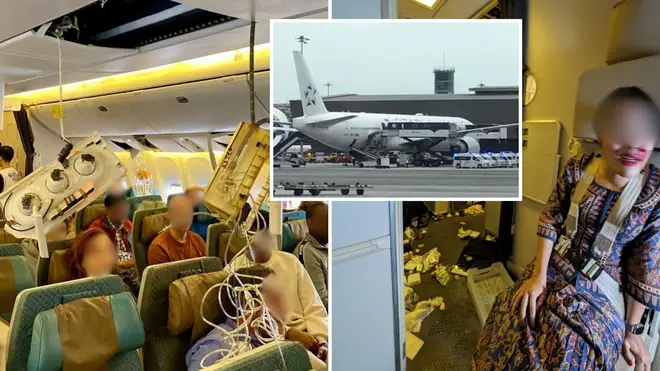
- 22 May 2024
Why is it in the News?
A passenger died and many were injured when a Singapore Airlines’ Boeing 777 headed from London to Singapore “severe turbulence” en route.
What is the Aircraft Turbulence
- Turbulence means disruption of airflow over the wings of an aeroplane, which causes it to enter irregular vertical motion.
- These pockets of disturbed air can have many causes, most obviously the unstable weather patterns that trigger storms.
- It is caused by the relative movement of disturbed air through which an aircraft is flying.
There are at least seven kinds of turbulence that an aircraft can run into:
- Wind Shear: It happens when there is a sudden change in wind direction, whether vertically or horizontally.
- Typically occurs close to thunderstorms, jet streams, etc.; tricky for pilots as tailwinds suddenly change to headwinds or vice versa.
- Frontal: Created in the frontal zone when warm air is lifted by a sloping frontal surface and friction between opposing air masses.
- Most palpable when warm air is moist; intensity increases with thunderstorms. Most commonly close to thunderstorms.
- Convective: When land surface temperature rises, the air above the ground heats up and rises, creating air pockets around it.
- Convection currents cause difficulties during approach as they tend to affect the rate of descent.
- Wake: It forms behind an aircraft when it flies through air-creating wingtip vortices.
- Mechanical: This type of turbulence occurs when tall solid objects such as mountains or highrise constructions disrupt the normal airflow, causing the air for planes to fly through to become dirty.
- Clear Air: It occurs when an aircraft crosses from one air mass to another, which has a different direction.
- Clear air turbulence could also happen when an aircraft moves out of a jet stream. Clear air turbulence is mainly caused by wind or jet streams.
- Mountain View: It is one of the most severe; these are oscillations that form on the downwind side of mountains when strong winds flow towards mountains in a perpendicular fashion.
- Aircraft tracking perpendicularly across, or downwind of a mountain, may experience a sudden loss of altitude followed by a sudden reduction in airspeed.
Are turbulence incidents dangerous?
- It depends on their nature and intensity.
- Aircraft undergo some form of turbulence on a regular basis and pilots are trained to deal with these.
- However, there have been several instances when turbulence has brought down modern jetliners.
Even in these cases, while intense turbulence has been the main cause of an accident, several other factors — such as lack of proper training, and poor dissemination of weather or wind-related information — have contributed to the accident.
Paris Principles on NHRIs
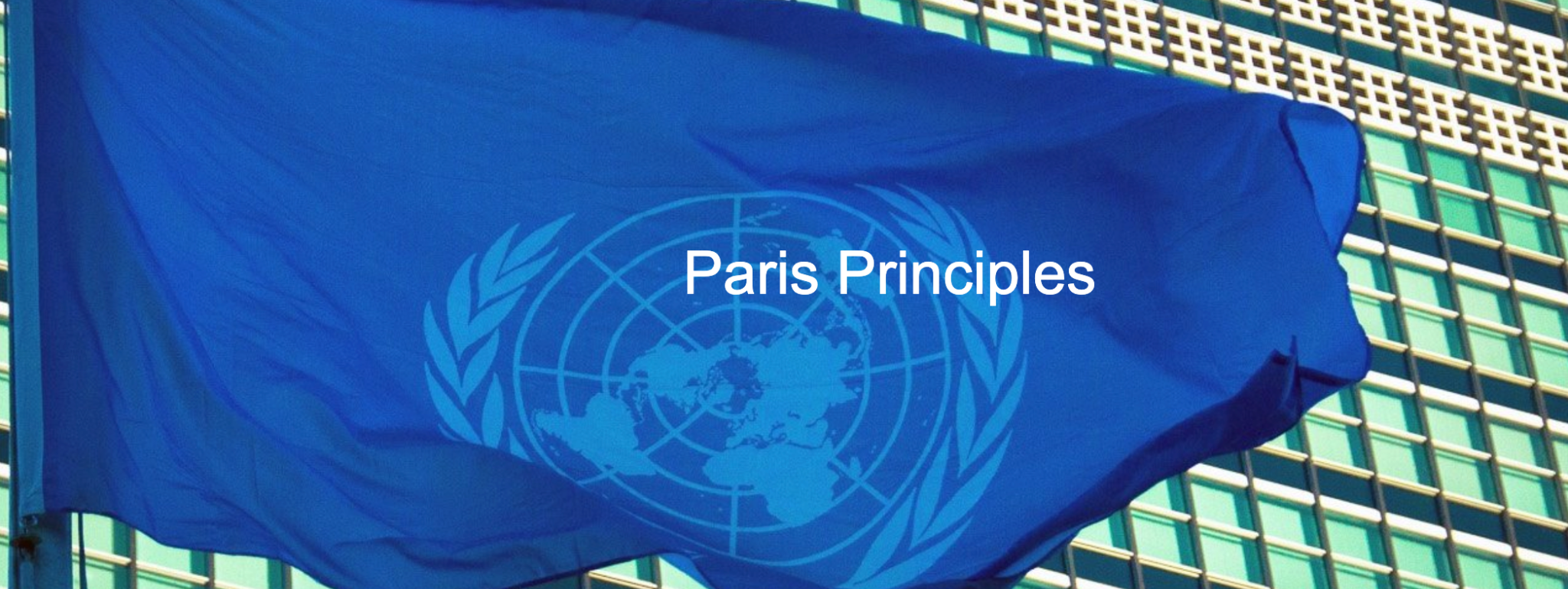
- 21 May 2024
Why is it in the News?
For the second year in a row, an organisation affiliated with the UN human rights office has deferred accreditation for India’s human rights body, the National Human Rights Commission (NHRC).
What are the Paris Principles?
- The Paris Principles, formally Principles Relating to the Status of National Human Rights Institutions, which were adopted by the UN General Assembly on December 20, 1993, set out minimum standards that NHRIs must meet in order to be considered credible and to operate effectively.
- The Paris Principles lay down six main criteria to determine which NHRIs are functioning effectively and would receive accreditation from GANHRI.
- They are
- broad mandate based on universal human rights norms and standards
- autonomy from the government
- independence guaranteed by the statute or Constitution
- pluralism, including membership that broadly reflects their society
- adequate resources and
- adequate powers of investigation
- These Principles also say that NHRIs should be equipped to receive complaints and cases brought by individuals, third parties, NGOs, trade unions, or other organisations representative of professionals such as lawyers and journalists.
Accreditation:
- Global Alliance of National Human Rights Institutions (GANHRI), which represents about 120 national human rights institutions, is responsible for reviewing and accrediting these institutions in compliance with the Paris Principles every five years.
- GANHRI acts through its Subcommittee on Accreditation (SCA), which categorises member NHRIs into two groups, ‘A’ and ‘B’. As of November 29, 2023, 120 NHRIs were accredited by GANHRI, 88 of which were given an ‘A’ rank, indicating full compliance with the Paris Principles; the remaining 32 were put under ‘B’, indicating partial compliance.
Why has India’s Accreditation Been Put on Hold?
- India’s accreditation status was put on hold after the Sub-Committee on Accreditation (SCA) meeting on May 1 in Geneva.
- The SCA, which meets twice a year, scrutinizes each country’s human rights institution.
- The May 1 meeting, chaired by New Zealand with participation from South Africa, Sri Lanka, and Spain, highlighted several concerns about the National Human Rights Commission (NHRC) of India.
- Issues raised include a lack of transparency in NHRC appointments, conflicts of interest with police overseeing investigations, and no minority or female representation on the panel.
- Additionally, nine human rights organizations, including Amnesty International and Human Rights Watch, expressed concerns about India’s human rights record, citing increasing restrictions on civic space and discrimination against minorities.
- UN human rights experts also highlighted “attacks on minorities, media, and civil society” in India.
What Happens if India Loses Accreditation?
- If India loses its 'A' status accreditation, its National Human Rights Institution (NHRI) will face significant limitations. With 'A' status, NHRIs can participate in the UN Human Rights Council, its subsidiary bodies, and some UNGA bodies and mechanisms, and hold full membership in the Global Alliance of National Human Rights Institutions (GANHRI) with voting and governance rights.
- With 'B' status, NHRIs can attend GANHRI meetings but cannot vote or hold governance positions. Without proper accreditation, India’s NHRC cannot represent the country at the UN Human Rights Council, vote, or hold governance roles.
- India’s review has been deferred, and a final decision is yet to be made.
What is India’s Record of Accreditation with GANHRI?
- India’s National Human Rights Commission (NHRC) was established in 1993 and first accredited by the Global Alliance of National Human Rights Institutions (GANHRI) in 1999.
- It achieved 'A' status in 2006 and retained it in 2011.
- However, in 2016, accreditation was deferred due to issues like the appointment of political representatives and lack of gender balance and pluralism in the NHRC staff.
- Despite these concerns, the NHRC regained 'A' status in 2017.
- In 2023, the Sub-Committee on Accreditation (SCA) withheld India’s accreditation again, citing six reasons, including the NHRC’s inability to operate without government interference and the presence of too many government officials and individuals affiliated with the ruling party in the commission.
Rangelands in India
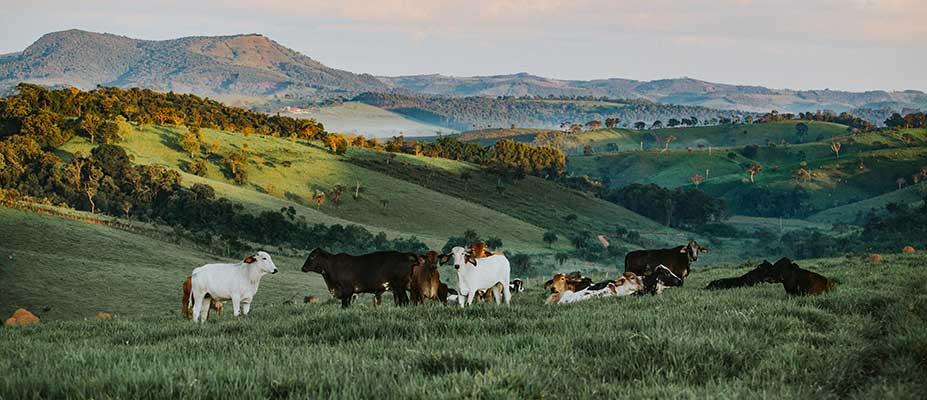
- 21 May 2024
Why is it in the News?
A new report by the United Nations paints a concerning picture of the world’s rangelands, with up to 50 per cent estimated to be degraded.
What are Rangelands?
- A rangeland is an open area that is suitable for grazing livestock.
- Rangelands are home to grass and grass-like plants, shrubs, and scattered trees.
- They are, however, unfit for growing crops due to their aridity and poor soil quality.
- Rangelands cover 80 million square kilometres, or over 54 per cent of the terrestrial surface, constituting the largest land cover/use type in the world but accounting for one-sixth of global food production and representing nearly one-third of the planet’s carbon reservoir.
- According to the Rangelands Atlas, livestock production systems in rangelands cover 45 per cent of the global land surface, almost half of which is situated in drylands.
- In India, rangelands occupy about 121 million hectares and the area used for grazing is estimated at around 40 per cent of the total land surface of India, including grasslands (17 per cent), and forests (23 per cent).
Key Characteristics of Rangelands in India:
- Vegetation: Rangelands in India is primarily covered with grasses and shrubs, such as Dichanthium annulatum (gamhar), Cenchrus ciliaris (buffel grass), and Ziziphus nummularia (ber).
- The presence and type of vegetation vary based on rainfall and soil conditions, with trees being scattered or sometimes entirely absent.
- Climate: These areas experience semi-arid to arid climates with significant seasonal variations in rainfall.
- Droughts are a frequent challenge.
- Soil: Rangeland soils are typically thin and less fertile than those found in agricultural areas.
- Land Use: Rangelands are mainly used for grazing by domestic animals like cattle, sheep, and goats.
- Some of these lands also support wildlife herbivores.
The Significance and Management of Rangelands in India:
- Rangelands play a pivotal role in India's ecosystem, serving as primary grazing areas for livestock, maintaining biodiversity, and providing ecological services such as soil erosion prevention, water flow regulation, and carbon storage.
- These lands are also a crucial source of livelihood for millions through pastoralism, dairy production, and wool production.
- However, rangelands face multiple challenges, including overgrazing, climate change, and encroachment, which negatively impact their health and productivity.
- To address these issues, several management strategies have been employed:
- Rotational Grazing: This approach allows for controlled grazing periods, enabling vegetation to recover and promoting long-term sustainability.
- Reseeding: By reintroducing native grasses and shrubs, the quality of rangelands can be significantly enhanced.
- Community-Based Management: Engaging local communities in the decision-making process fosters sustainable practices and ensures the well-being of both the rangelands and the people relying on them.
- Understanding the significance of rangelands in India is essential for maintaining their vitality, supporting the livelihoods of those dependent on them, and ensuring the continued provision of vital ecological services.
Primary Amoebic Meningoencephalitis (PAM)
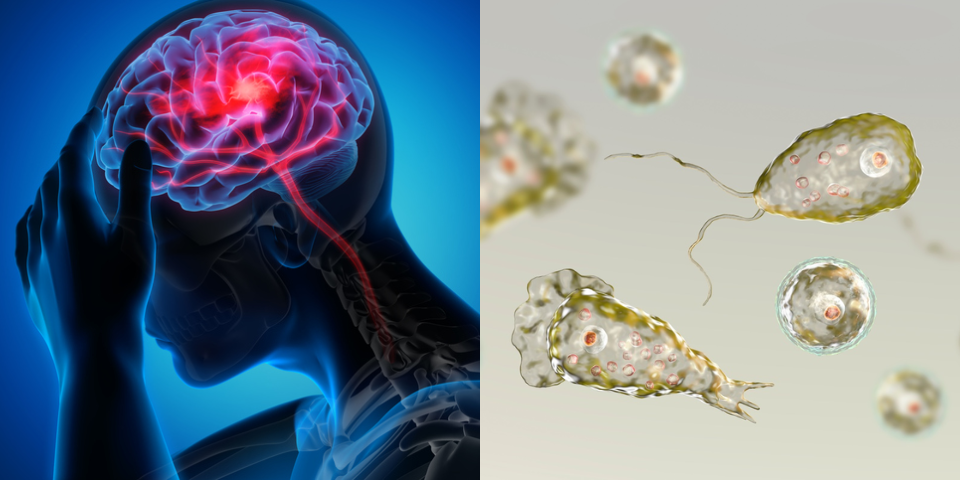
- 21 May 2024
Why is it in the News?
A five-year-old girl from Malappuram district in Kerala who had been undergoing treatment for amoebic meningoencephalitis at the Government Medical College Hospital Kozhikode has died.
What is the Primary Amoebic Meningoencephalitis?
- Primary amebic meningoencephalitis (PAM) is a rare brain infection that is caused by Naegleria fowleri.
- It is a free-living amoeba or a single-celled living organism.
- Naegleria fowleri lives in warm fresh water and soil around the world and infects people when it enters the body through the nose.
- Higher temperatures of up to 115°F (46°C) are conducive to its growth and it can survive for short periods in warm environments.
- The amoeba can be found in warm freshwater, such as lakes and rivers, swimming pools, splash pads, surf parks, or other recreational venues that are poorly maintained or minimally chlorinated.
How does Naegleria fowleri infect people?
- Naegleria fowleri enters the body through the nose, usually when people are swimming. It then travels up to the brain, where it destroys the brain tissue and causes swelling.
- Notably, people cannot get infected with Naegleria fowleri from drinking water contaminated with the amoeba.
- PAM is also non-communicable.
Symptoms of PAM:
- In the initial stage, the symptoms include headache, fever, nausea and vomiting.
- Later on, the patient may have a stiff neck and experience confusion, seizures, hallucinations and slip into a state of coma.
- According to the US Centers for Disease Control and Prevention (CDC), “Most people with PAM die within 1 to 18 days after symptoms begin.
- It usually leads to coma and death after 5 days.”
What is the treatment for primary amoebic meningoencephalitis?
- As earlier reported, scientists haven’t been able to identify any effective treatments for the disease yet.
- At present, doctors treat it with a combination of drugs, including amphotericin B, azithromycin, fluconazole, rifampin, miltefosine, and dexamethasone.
Copernicus Emergency Management Service (CEMS) Programme
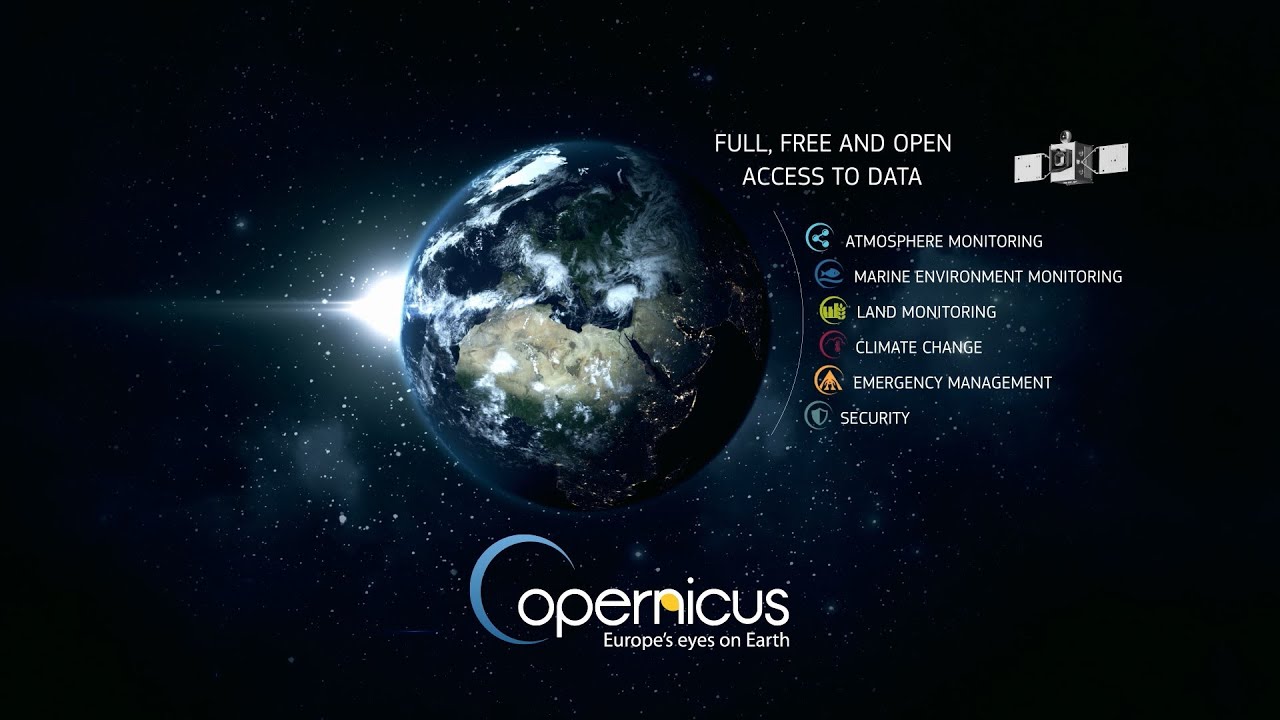
- 21 May 2024
Why is it in the News?
As part of a multi-agency effort to locate a helicopter carrying Iranian President Ebrahim Raisi that crashed in East Azerbaijan province recently, the European Union activated its emergency satellite mapping service at Iran’s request as adverse weather and darkness hampered search and rescue operations.
What is the Copernicus Emergency Management Service (CEMS)?
- The Copernicus Emergency Management Service (CEMS) is part of the Copernicus Programme, the European Union’s Earth Observation Programme.
- CEMS is managed directly by the European Commission via the Joint Research Centre.
- CEMS supports all actors involved in the management of natural or manmade disasters by providing geospatial data and images for informed decision-making.
- CEMS constantly monitors Europe and the globe for signals of an impending disaster or evidence of one happening in real-time.
- The service immediately notifies national authorities of their findings or can be activated on-demand and offers to provide them with maps, time series or other relevant information to better manage disaster risk.
- CEMS products are created using satellite, in-situ (non-space) and model data.
- CEMS comprises two components:
- On-demand Mapping
- Early Warning & Monitoring
- Copernicus EMS Early Warning and Monitoring offers critical geospatial information at European and global levels through continuous observations and forecasts for floods, droughts and forest fires.
- It includes the European Flood Awareness System (EFAS), the European Forest Fire Information System (EFFIS) and the European Drought Observatory (EDO).
- It also links to the global versions of the early warning systems and the Global Disaster Alert and Coordination System (GDACS) for tropical cyclones.
- These versions cover the overseas areas of Europe that are often affected by extreme events.
- The service is provided free of charge to all users either in rush mode, for emergency management activities that require immediate response and/or non-rush mode, to support emergency disaster management activities not related to immediate response, analysing pre-disaster risk assessment and population and asset vulnerability or post-disaster recovery and reconstruction.
- It can be activated only by designated authorised users.
R21/Matrix-M Vaccine
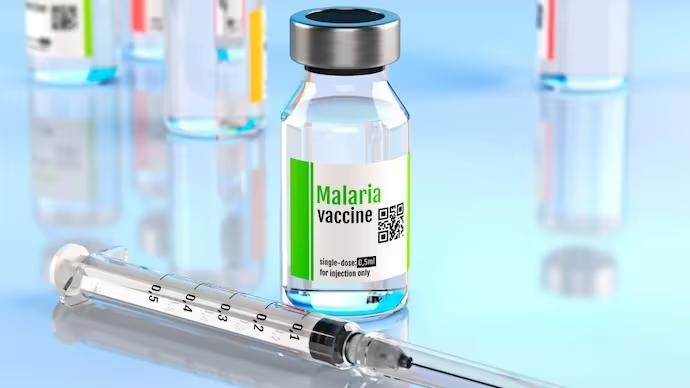
- 21 May 2024
Why is it in the News?
Vaccines manufacturer Serum Institute of India (SII) recently said it has started exports of the 'R21/Matrix-M' malaria vaccine to Africa as part of the global fight against the disease.
What is R21/Matrix-M Vaccine?
- The R21/Matrix-M vaccine is a newly approved preventive measure against malaria in children, marking the second malaria vaccine recommended by the World Health Organization (WHO) after the RTS, S/AS01 vaccine in 2021.
- Developed by the Jenner Institute at Oxford University and the Serum Institute of India, the vaccine received support from the European and Developing Countries Clinical Trials Partnership (EDCTP), the Wellcome Trust, and the European Investment Bank (EIB).
- This low-cost, high-efficacy vaccine is already licensed in several African countries.
How the R21/Matrix-M Vaccine Works?
- Vaccines work by presenting an antigen—a component of the virus or bacteria that the immune system can recognize and respond to—to immune cells.
- The R21/Matrix-M vaccine targets the plasmodium 'sporozoite', the initial form of the malaria parasite entering the human body.
- Infected mosquitoes inject only a few sporozoites (10-100) before the parasite multiplies, making them an ideal target for a vaccine.
- R21 is a subunit vaccine that delivers parts of a protein secreted by the sporozoite, combined with a component of the hepatitis B virus known to trigger a strong immune response.
- Additionally, the vaccine contains Matrix-M, an "adjuvant" that enhances the immune system’s response, making it more potent and long-lasting.
Key Facts about Malaria:
- Malaria is a life-threatening disease caused by parasites that are transmitted to people through the bites of infected female Anopheles mosquitoes.
- There are five parasite species that cause malaria in humans, with Plasmodium falciparum and Plasmodium vivax posing the greatest threat.
- Malaria is prevalent in tropical areas where it’s hot and humid.
- In 2020, there were an estimated 241 million malaria cases worldwide, resulting in approximately 627,000 deaths. Sub-Saharan Africa bears the heaviest burden, accounting for about 95% of malaria cases and 96% of deaths, primarily among children under five.
- Children under 5 years of age are the most vulnerable group affected by malaria.
- Symptoms include fever, chills, headache, nausea, and muscle pain, which can progress to severe illness and death if untreated.
- Cerebral malaria, the most severe form, can lead to coma and represents about 15% of deaths in children and nearly 20% of adult deaths.
- Malaria is preventable and curable; early treatment often results in full recovery.
- Treatment involves various antimalarial drugs, including chloroquine, hydroxychloroquine, primaquine, artemisinin-based therapy, and atovaquone-proguanil.
- The type of parasite determines the specific medication used.
- Continued efforts are essential to control and ultimately eradicate malaria, with vaccines like RTS, S/AS01 (Mosquirix) and R21/Matrix-M offering promising advances in prevention, especially for children in high-risk regions.
Digital Arrest

- 16 May 2024
Why is it in the News?
With the cases of extortion and ‘digital arrest’ frauds on the rise, the Indian Cyber Crime Coordination Centre (I4C) working under the Union Ministry of Home Affairs issued an advisory asking the citizens to be alert about such frauds.
What is ‘Digital Arrest’?
- ‘Digital arrest’ is a new and innovative tactic employed by cybercriminals to defraud gullible victims and extort money.
- The modus operandi in this cybercrime method is that fraudsters pose as law enforcement officials such as police, Enforcement Directorate, and CBI, among others, and manipulate them into believing that they have committed some serious crime.
- The cyber fraudsters deceive the victim into believing that he or she has been put under ‘digital arrest’ and will be prosecuted if they do not pay the scamsters a huge amount of money.
- The fraudster often uses the tactic of instilling fear and a sense of urgency in the victims, ensuring they part with their money before realizing it's a scam.
- The cyber criminals often force the naive victims to self-arrest or self-quarantine themselves, by tricking them into believing that they have been put under ‘digital arrest’ and cannot leave their house unless they pay up.
Modus Operandi of Digital Arrest Scams:
- Initial Engagement: Fraudsters initiate contact with unsuspecting individuals through various digital communication channels, such as phone calls, WhatsApp, or Skype.
- Fear and Urgency Manipulation: The scammers employ psychological tactics to instil fear and a sense of urgency in their victims.
- They present fabricated evidence and falsely claim that the victim is embroiled in criminal activities or is facing an imminent arrest warrant.
- Elaborate Scams: To enhance the legitimacy of their scheme, the scammers create elaborate setups, including simulated police stations, virtual interrogations, and video calls with individuals posing as senior police officers.
- Layered Interrogations: Victims are subjected to multiple rounds of “interrogations,” with the scammers assuming different roles, such as a “constable,” a “sub-inspector,” and finally a “DCP-level officer.”
- This layered approach aims to convince victims of the gravity of the situation and increase their susceptibility to the scam.
- Financial Exploitation: Under the imminent threat of arrest, victims are coerced into transferring substantial sums of money into designated accounts.
- The scammers deceitfully claim that these funds are necessary to clear the victim’s name or resolve the alleged criminal charges.
Actions Taken by the Centre:
- Intelligence agencies have determined that the incidents are part of a coordinated online economic crime network operated by transnational crime syndicates.
- The Indian Cyber Crime Coordination Centre (I4C), overseen by the Ministry of Home Affairs, has collaborated with Microsoft to block over 1,000 Skype IDs associated with such illicit activities.
- Additionally, efforts are underway to block SIM cards, mobile devices, and "mule" accounts utilized by cybercriminals.
- Money mules, also known as "smurfers," are individuals unwittingly used by fraudsters to launder stolen or illegal money through their bank accounts.
- Following reports of such incidents, these individuals often become the focus of police investigations due to their involvement, as highlighted in a security advisory by HDFC Bank.
- The Home Ministry is collaborating with other ministries, their agencies, the Reserve Bank of India (RBI), and various organizations to combat these criminal activities.
- I4C is actively providing technical support and inputs to the police forces of states and union territories to identify and investigate cases.
- I4C has leveraged its social media platform Cyberdost, along with its presence on platforms like Twitter, Facebook, and Instagram, to disseminate infographics and videos aimed at raising awareness about cybercrime.
- Citizens are urged to remain vigilant and help spread awareness about cybercrime.
- They are encouraged to report any such incidents promptly to the cybercrime helpline at 1930 or through the website http://www.cybercrime.gov.in.
- Additionally, filing a complaint and notifying the local police is advised.
India VIX

- 16 May 2024
Why is it in the News?
India VIX, which is an indicator of the market’s expectation of volatility over the near term, surged past the 21 mark recently.
What is India VIX?
- India VIX is a volatility index computed by the NSE based on the order book of NIFTY Options.
- For this, the best bid-ask quotes of near and next-month NIFTY options contracts, which are traded on the F&O segment of NSE are used.
- India VIX indicates the investor’s perception of the market’s volatility in the near term i.e. it depicts the expected market volatility over the next 30 calendar days.
- The higher the India VIX values, the higher the expected volatility and vice versa, as per NSE.
- ‘VIX’ is a trademark of the CBOE, and Standard & Poor’s has granted a license to NSE, with permission from the CBOE, to use such a mark in the name of the India VIX and for purposes relating to the India VIX.
What is the Volatility Index?
- The Volatility Index, VIX or the Fear Index, is a measure of the market’s expectation of volatility over the near term.
- Volatility is often described as the ‘rate and magnitude of changes in prices’ and in finance often referred to as risk.
- Usually, during periods of market volatility, the market moves steeply up or down and the volatility index tends to rise.
- As volatility subsides, the Volatility Index declines.
- The Volatility Index is a measure of the amount by which an underlying index is expected to fluctuate in the near term, (calculated as annualised volatility, denoted in percentage e.g. 20 per cent) based on the order book of the underlying index options.
- The Chicago Board of Options Exchange (CBOE) was the first to introduce the volatility index for the US markets in 1993 based on S&P 100 Index option prices.
- In 2003, the methodology was revised and the new volatility index was based on S&P 500 Index options.
- Since its inception, it has become an indicator of how market practitioners think about volatility.
- Investors use it to gauge market volatility and base their investment decisions accordingly.
Global Report on Internal Displacement 2024 (GRID-2024)
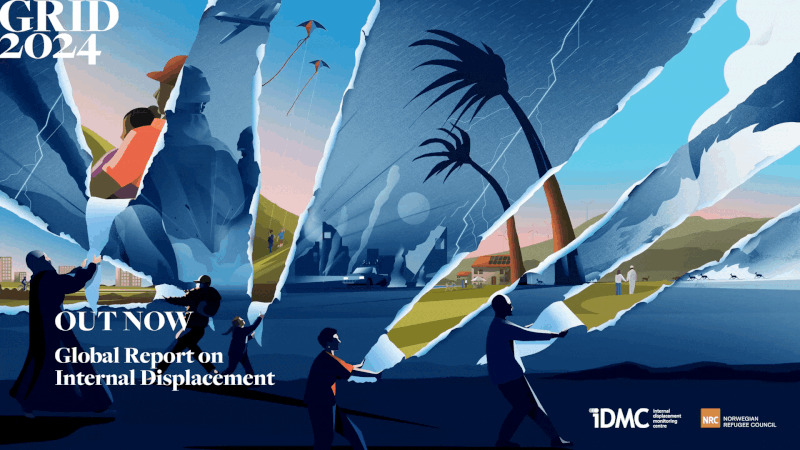
- 16 May 2024
Why is it in the News?
Floods, cyclones, earthquakes and other disasters triggered over half a million internal displacements in India in 2023, according to Geneva-based Internal Displacement Monitoring Centre (IDMC).
About Global Report on Internal Displacement 2024:
- The Global Report on Internal Displacement (GRID) 2024, published by the Internal Displacement Monitoring Centre (IDMC) based in Geneva, Switzerland.
- It is the authoritative source for data and analysis on the state of internal displacement for the previous year.
- Each year, IDMC presents the validated estimates of internal displacements by conflict and disasters, and the total cumulative numbers of IDPs worldwide.
- The GRID also provides an overview of the year’s most significant internal displacement situations, highlighting potential measures to address the issue across the humanitarian, development, disaster risk reduction and climate change agendas.
- The 2024 Global Report on Internal Displacement (GRID) report presents the data and analysis behind the 75.9 million people living in internal displacement as of the end of 2023.
- It is the ninth edition of the GRID and includes global and regional insights into the risk, scale and impacts of internal displacement.
Highlights of the GRID 2024:
- Rising Numbers of (IDPs): In 2023, the number of internally displaced persons (IDPs) reached 75.9 million, up from 71.1 million the previous year.
- Causes of Displacement: Disasters contributed to 7.7 million displacements, with earthquakes being responsible for one-fourth of these.
- Conflict and violence led to 68.3 million displacements.
- High-Displacement Countries: Sudan, Syria, the Democratic Republic of Congo (DRC), Colombia, and Yemen account for almost half of the world's IDP population.
- Significant Increases: Sudan had the highest number of IDPs recorded for a single country in 2023, reaching 1 million.
- The majority of new displacements occurred in Sudan, the Palestinian territories, and the DRC, accounting for nearly two-thirds of all cases.
- South Asia Displacement: Approximately 3 million people across South Asia experienced internal displacement due to conflict and violence, with 80% of them located in Afghanistan.
- Manipur violence resulted in 67,000 displacements, marking the highest number of conflict and violence-related displacements in India since 2018.
- Impact of Natural Disasters: There was a notable decrease in internal displacement due to natural disasters in India in 2023, dropping from 2.5 million in 2022 to 528,000.
About Internal Displacement Monitoring Centre (IDMC):
- Established in 1998, the IDMC is the leading source of information and analysis on internal displacement.
- It was created to address a significant gap in knowledge on global patterns and scales of internal displacement.
- IDMC defines internal displacement as the number of forced movements of people within their own country over a given year.
- The IDMC is a part of the Norwegian Refugee Council (NRC), an independent, non-governmental humanitarian organization.
- Primary Roles: The IDMC serves as a global monitor and advocate for evidence-based policy and action.
- It aims to influence governments, UN agencies, donors, international organizations, and NGOs.
- As the official repository of data and analysis on internal displacement, the IDMC's GRID provides critical insights into the global internal displacement crisis and aids in developing informed solutions.
Extra-pulmonary TB
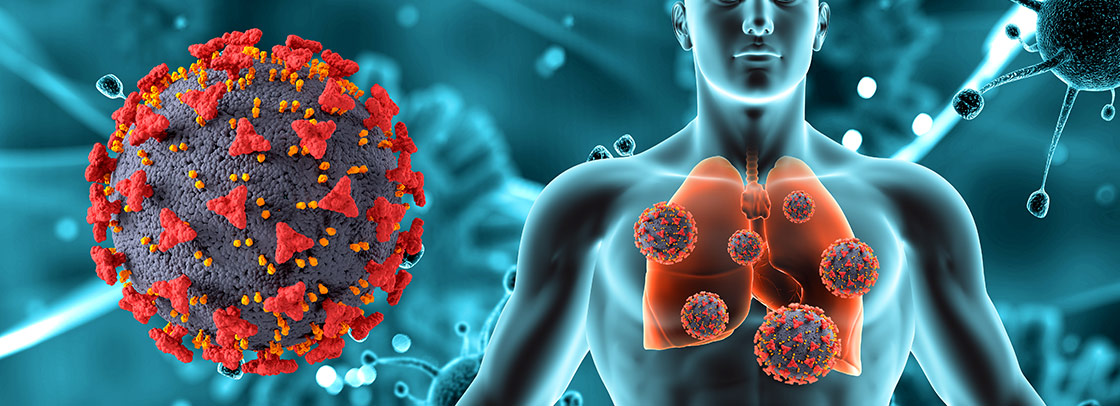
- 16 May 2024
Why is it in the News?
Approximately 20% of tuberculosis (TB) patients suffer from Extra-pulmonary TB, yet the majority remain undiagnosed. Even among those diagnosed, access to appropriate care is limited to specialized health facilities, posing a challenge to effective treatment.
What is Extra-pulmonary TB?
- Extra-pulmonary tuberculosis (EPTB) is a form of tuberculosis (TB) that affects organs outside the lungs, such as the lymph nodes, pleura, bones, joints, and central nervous system.
- EPTB accounts for a significant portion of active TB cases, ranging from 20% to 40%, and occurs more frequently in immunosuppressed individuals and young children.
- In HIV-positive individuals, EPTB is present in more than 50% of cases.
- EPTB diagnosis remains challenging due to the difficulty in accessing affected sites and the low sensitivity of diagnostic tests.
- A combination of mycobacteriology and histopathologic examinations, along with molecular techniques such as polymerase chain reaction, can aid in the diagnosis.
- Biochemical markers, like adenosine deaminase or gamma interferon, can be useful adjuncts in diagnosing TB-affected serosal fluids.
Treatments:
- Treatment of EPTB typically involves standard anti-TB drug therapy, but the ideal regimen and duration have not yet been established.
- While the disease usually responds to treatment, complications and paradoxical responses may occur, necessitating the distinction from other causes of clinical deterioration.
- Surgery may be required to obtain diagnostic specimens or manage complications.
Challenges with EPTB:
- EPTB infections may leave disease markers lingering even after treatment, posing concerns about relapse.
- Standardized diagnosis and treatment protocols for various affected organs are lacking, complicating management.
- A lack of awareness among both patients and physicians, along with the absence of precise diagnostic and treatment criteria, adds to the challenge.
- Even after completing anti-TB therapy, some EPTB patients may experience lingering effects of the disease.
- The existing INDEX-TB guidelines, formulated over a decade ago, require updating to incorporate the latest insights and experiences.
Kadar Tribe
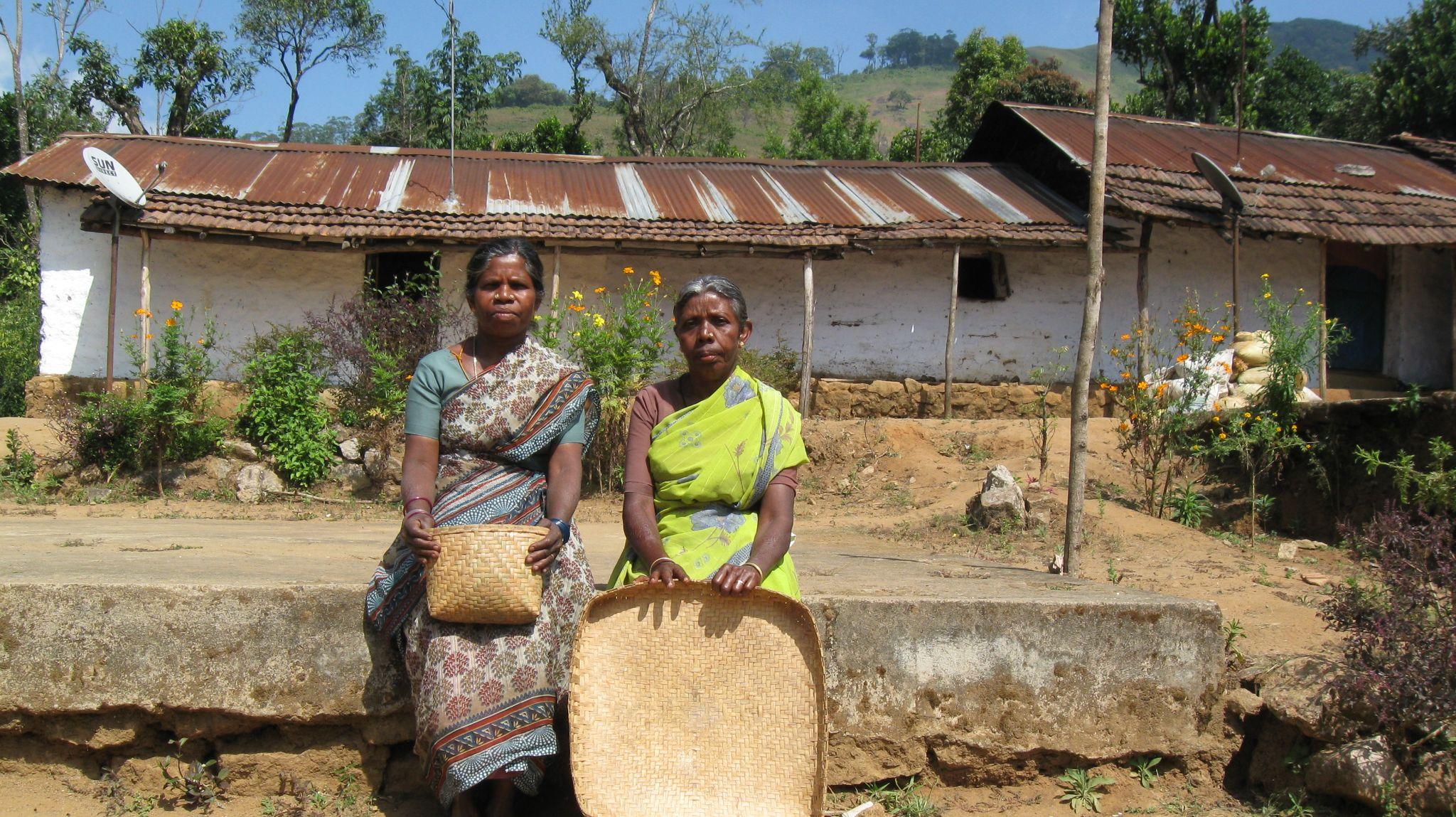
- 16 May 2024
Why is it in the News?
The recent death of a Kadar tribesman in Tamil Nadu’s Anamalai Tiger Reserve in an elephant attack has left the indigenous community and conservationists in shock as Kadars are known to co-exist with wild elephants for ages.
About Kadar Tribes:
- The Kadar tribes are a small indigenous tribal community residing in South India, primarily along the hilly border between Cochin in Kerala and Coimbatore in Tamil Nadu.
- Traditionally, they are forest dwellers who rely on forest resources for their livelihood, opting not to practice agriculture.
- Their shelters are typically thatched with leaves, and they frequently shift locations based on their employment needs.
- Rather than subsisting solely on gathered food, they prefer rice obtained through trade or wages.
- With a long history of specialization, the Kadars are known for collecting various forest products like honey, wax, sago, cardamom, ginger, and umbrella sticks, which they trade with merchants from the plains.
- They maintain a symbiotic relationship with nature, emphasizing the coexistence of Kadar and Kaadu (forest), and have established traditional protocols for the sustainable use of forest resources.
- Every resource collection practice, such as honey extraction, firewood gathering, resin tapping, or herb picking, is conducted with regeneration time in mind.
- The population of the Kadars was estimated to be around 2,000 individuals in the early 21st century, and they primarily speak Dravidian languages like Tamil and Kannada.
- Their religious beliefs include worshipping jungle spirits, a kindly creator couple, and local forms of Hindu deities.
- While recognized as a Particularly Vulnerable Tribal Group (PVTG) in Kerala, they do not hold the same status in Tamil Nadu.
About Anamalai Tiger Reserve:
- Anamalai Tiger Reserve is a protected area located in the Anamalai Hills of Pollachi and Coimbatore District of Tamil Nadu, India.
- Annamalai Tiger Reserve was originally called Anamalai Wild Life Sanctuary notified in the year 1974 and established in the year 1976.
- Later, it was renamed as Indira Gandhi Wildlife Sanctuary & National Park in honour of former Prime Minister Indira Gandhi's visit in 1961.
- According to the National Tiger Conservation Authority, the sanctuary was declared as Anamalai Tiger Reserve in 2007.
- The sanctuary presently includes a core area of 958.59 sq. km and a buffer area of 521.28 sq. km forming a total area of 1479.87 sq. km.
- It is located at an altitude of 1400 m in the Anamalai Hills of the Western Ghats.
Solar Storms
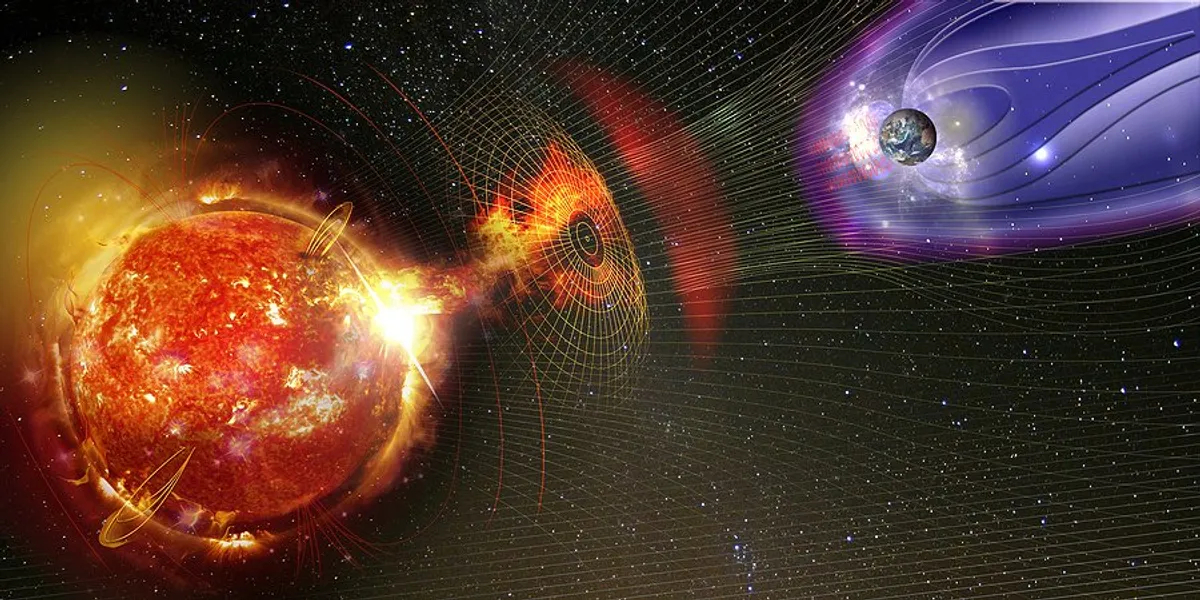
- 15 May 2024
Why is it in the News?
According to the Indian Space Research Organisation (ISRO), Indian satellites did not suffer any major outages due to the multiple powerful earth-bound solar storms recently.
What is a Solar Storm?
- Solar storms are a normal part of our Sun's solar cycle.
- It occurs when the Sun emits huge bursts of energy in the form of solar flares and coronal mass ejections.
- These phenomena send a stream of electrical charges and magnetic fields toward the Earth at a speed of about three million miles per hour.
- When a solar storm strikes the Earth, it often produces a dazzling “northern lights" display in parts of the atmosphere that can be seen in areas close to the Arctic Circle.
- Solar storms start with a huge explosion on the Sun.
- These explosions — called solar flares — can be about as powerful as billions of nuclear bombs!
- Solar flares usually go hand-in-hand with the release of huge streams of charged plasma that travel at millions of miles per hour.
- These streams are called coronal mass ejections, or CMEs.
- When CMEs hit the Earth, they can cause geomagnetic storms that disrupt satellites and electrical power grids.
- For example, in 2017 two massive solar flares fired out from the surface of the Sun disrupted devices such as GPS navigation systems on Earth.
How often do solar storms happen?
- Scientists who study solar storms have discovered that the frequency of solar flares appears to follow an 11-year solar cycle.
- At times of peak activity, there could be several solar storms each day.
- At other times, there might be less than one solar storm per week.
What is the Impact of Solar Storm?
- It majorly interferes with several services, including GPS navigation, weather forecasting, communication, and other satellite-dependent services.
- Besides that, it also has a significant impact on satellite networks and communication.
- They can create geomagnetically induced currents (GICs), which can overload electrical systems and cause damage to transformers, issues with voltage regulation, and widespread power outages.
- Furthermore, because solar storms increase the amount of solar and cosmic radiation that reaches the top regions of Earth's atmosphere, they also pose health concerns to people, especially aircraft crew and passengers, especially on flights at high latitudes.
- These storms have the potential to disrupt infrastructure in near-Earth orbit and on Earth's surface, affecting communications, the electric power grid, navigation, radio, and satellite operations.
Humboldt Glacier
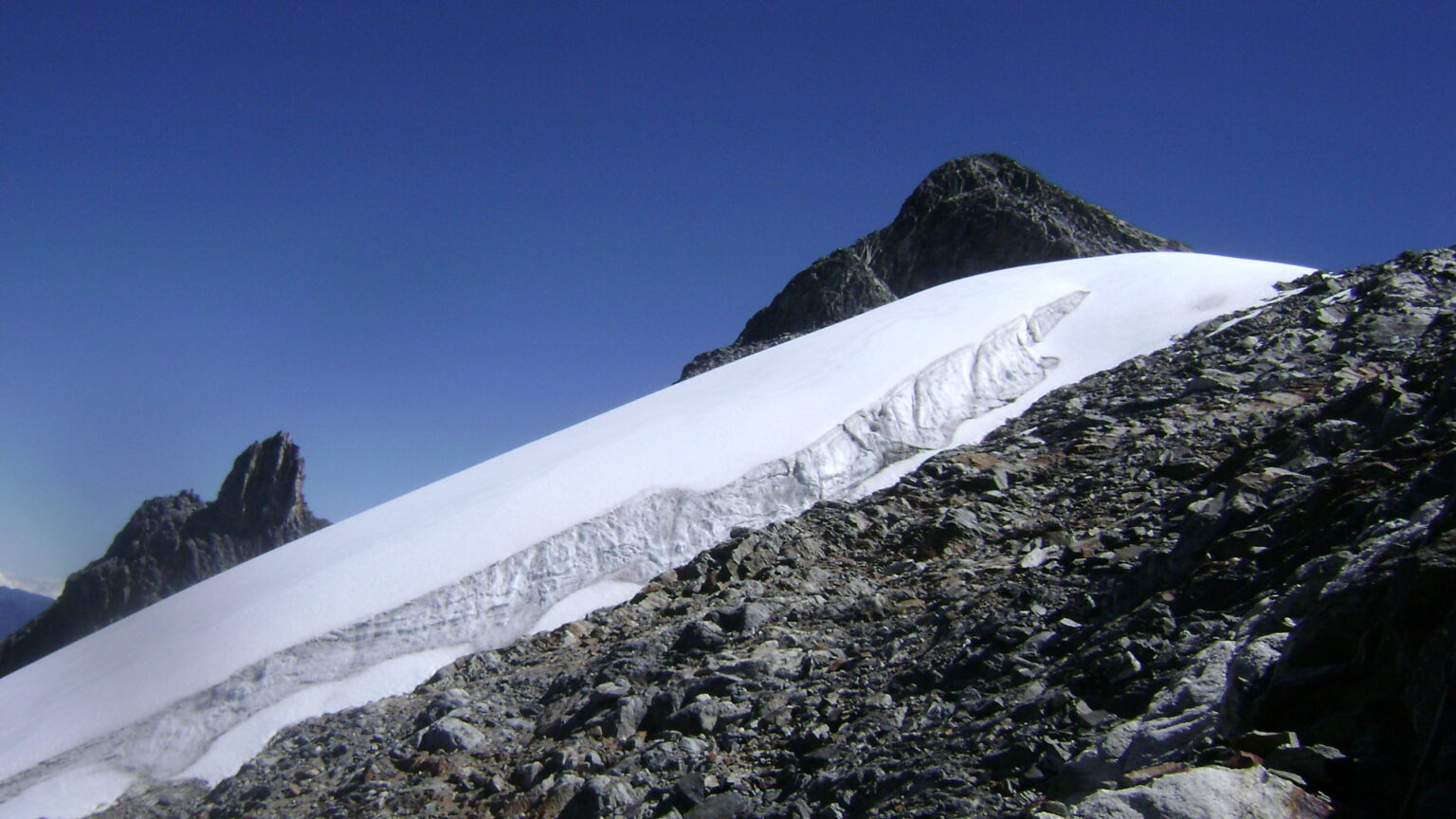
- 15 May 2024
Why is it in the News?
Venezuela is thought to be the first nation in modern times to have completely lost all of its glaciers.
About Humboldt Glacier:
- Venezuela's Humboldt Glacier, also known as La Corona, held great significance as the country's last remaining glacier.
- Located in the Sierra Nevada de Mérida mountain range in the Andes, at an altitude of approximately 5,000 meters, the Humboldt Glacier was part of a group of six glaciers that once covered an area of 10 square kilometres.
- However, due to the accelerated melting caused by climate change, five of these glaciers had vanished by 2011, leaving Humboldt as the sole remnant.
- Humboldt Glacier's deterioration continued at an alarming pace in subsequent years.
- Recent studies conducted by the International Cryosphere Climate Initiative (ICCI), a scientific advocacy organization, revealed that the glacier had shrunk to an area of less than 2 hectares.
- As a result, it was downgraded from a glacier to an ice field, marking Venezuela as the first country in modern history to lose all of its glaciers.
- The demise of Humboldt Glacier serves as a stark warning of the global consequences of climate change.
- It exemplifies the rapid loss of ice in tropical regions, which not only impacts local ecosystems and water resources but also contributes to rising sea levels and exacerbates the effects of climate change worldwide.
About the International Cryosphere Climate Initiative (ICCI):
- International Cryosphere Climate Initiative (ICCI) was formed in 2009 following COP-15 in Copenhagen.
- It is a network of senior policy experts and researchers working with governments and organizations to create, shape and implement initiatives designed to preserve as much of the Earth’s cryosphere as possible.
- CCI's work focuses on three major areas of the cryosphere:
- The Arctic
- The Antarctic
- High mountain regions
- By connecting cutting-edge science to a variety of policy-making forums and supporting integrated projects worldwide to protect the cryosphere, ICCI advances climate action.
- ICCI programs target the unique climate dynamics at work in the cryosphere, while at the same time lending increased urgency to global climate efforts aimed at CO2 and other greenhouse gases by communicating the unexpected rapidity and global implications of cryosphere warming.
NISAR Satellite Can Monitor Earth’s Tectonic Movements

- 15 May 2024
Why is it in the News?
ISRO Chairman S. Somanath recently announced that the NISAR satellite has the capability to accurately monitor tectonic movements and complete full mappings of the Earth twice a month.
About the NISAR Satellite:
- NISAR is a joint Earth-observing mission between NASA and the Indian Space Research Organization (ISRO).
- It is a Synthetic Aperture Radar satellite with two bands.
- It will be launched into a polar Sun-synchronous dawn-dusk orbit.
- One is the S-band and the other is the L-band.
- The S-band payload has been made by the ISRO and the L-band payload by the U.S.
- The U.S. will contribute to the large deployable antenna.
- This being a dual-band polarizable radar, it can do a lot of things.
- First, because it has a large deployable antenna with an 18-metre diameter, it has a very high swath.
- It can fully cover the earth in approximately 14 to 15 days, according to radar.
- It can monitor various aspects in very high resolution.
- For example, it can monitor the tectonic movements to centimetre accuracy.
- It can do measurements of water bodies accurately.
- It can look at water stressing on the earth, wherever there is a deficiency of water.
- It can ground-penetrate to a certain depth.
- It is capable of monitoring the vegetation cover and snow cover.
- It, therefore, basically looks at the whole of the earth in terms of surface, water, greenery and all of that.
- It measures accurately and gives repetitive, full coverage of the earth two times a month.
- It means it is capable of a lot of observation and this data will be available to both India and the U.S.
- We can study the water-stressing, climate change-related issues, and agricultural changes through patterns, yield, desertification and continental movements precisely with respect to annual water cycle movements.
- It can measure tectonic plate movements accurately.
- So a lot of geological, agricultural and water-related observations can be obtained from this satellite.
Mission Objectives:
- The primary goal of NISAR is to provide precise measurements of tectonic plate movements, enabling comprehensive observations in geology, agriculture, and water-related domains.
- Additionally, it aims to analyze water stress, climate change impacts, agricultural shifts, desertification, and continental shifts with accuracy, particularly concerning annual water cycle variations.
- NISAR's data will facilitate global resource and hazard management, while also aiding scientists in comprehending climate change dynamics and its effects.
Launch Schedule:
- Initially planned for July, the launch is now expected in October-November due to issues on the U.S. side requiring corrections.
Memory of the World (MoW) Programme
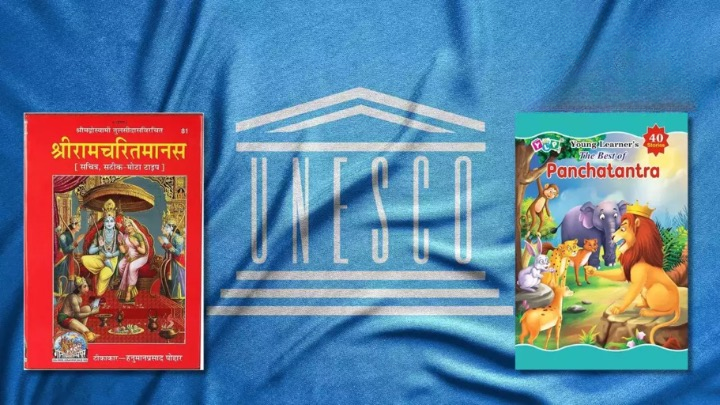
- 15 May 2024
Why is it in the News?
Three Indian literary works, Ramcharitmanas, Panchatantra, and Sah?dayaloka-Locana, were added to UNESCO’s Memory of the World Asia-Pacific Regional Register during the tenth meeting of the Memory of the World Committee for Asia and the Pacific (MOWCAP).
About Memory of the World Programme:
- The Memory of the World (MoW) Programme is an international initiative by UNESCO launched in 1992 aimed at preserving and recognizing the world's significant documentary heritage.
- The program's objective is to identify and protect important documents in a manner similar to how UNESCO's World Heritage Convention and World Heritage List recognize significant natural and cultural sites.
The Memory of the World Programme aims to:
-
- Facilitating the preservation of documentary heritage, particularly in conflict-affected areas or regions impacted by natural disasters.
- Enabling universal access to documentary heritage worldwide.
- Enhancing public awareness about the significance of documentary heritage among the wider public.
Governance Body:
- The International Advisory Committee (IAC) serves as the main governing body for the MoW Programme, providing guidance to UNESCO on its planning and implementation.
- The IAC comprises 14 members appointed by UNESCO's Director-General, who are chosen for their expertise and authority in the field of documentary heritage.
Nominations for MoW:
- Nominations for inscription on the Asia Pacific Register are called every two years, alternating with the International Register.
- In even-numbered years, nominations are accepted for the Asia Pacific Register.
India has three items included in the Memory of the World Register:
- Ramcharitmanas: Written by Tulasidas in the 16th century in the Awadhi dialect, this text holds immense cultural and literary significance in the regions of Lucknow, Prayagraj, and Ayodhya.
- Panchatantra: This ancient Indian collection of fables, originally written in Sanskrit, consists of five sections that revolve around specific principles.
- It is widely believed to have been authored by Vishnu Sharma.
- Sah?day?loka-Locana: A Sanskrit commentary on the Dhvanyaloka, Sah?day?loka-Locana holds significant historical and literary value within India's rich cultural landscape.
- Through the Memory of the World Programme, UNESCO continues to protect and celebrate the diverse documentary heritage of humanity, ensuring its preservation and accessibility for future generations.
Indian Cyber Crime Coordination Centre (I4C)
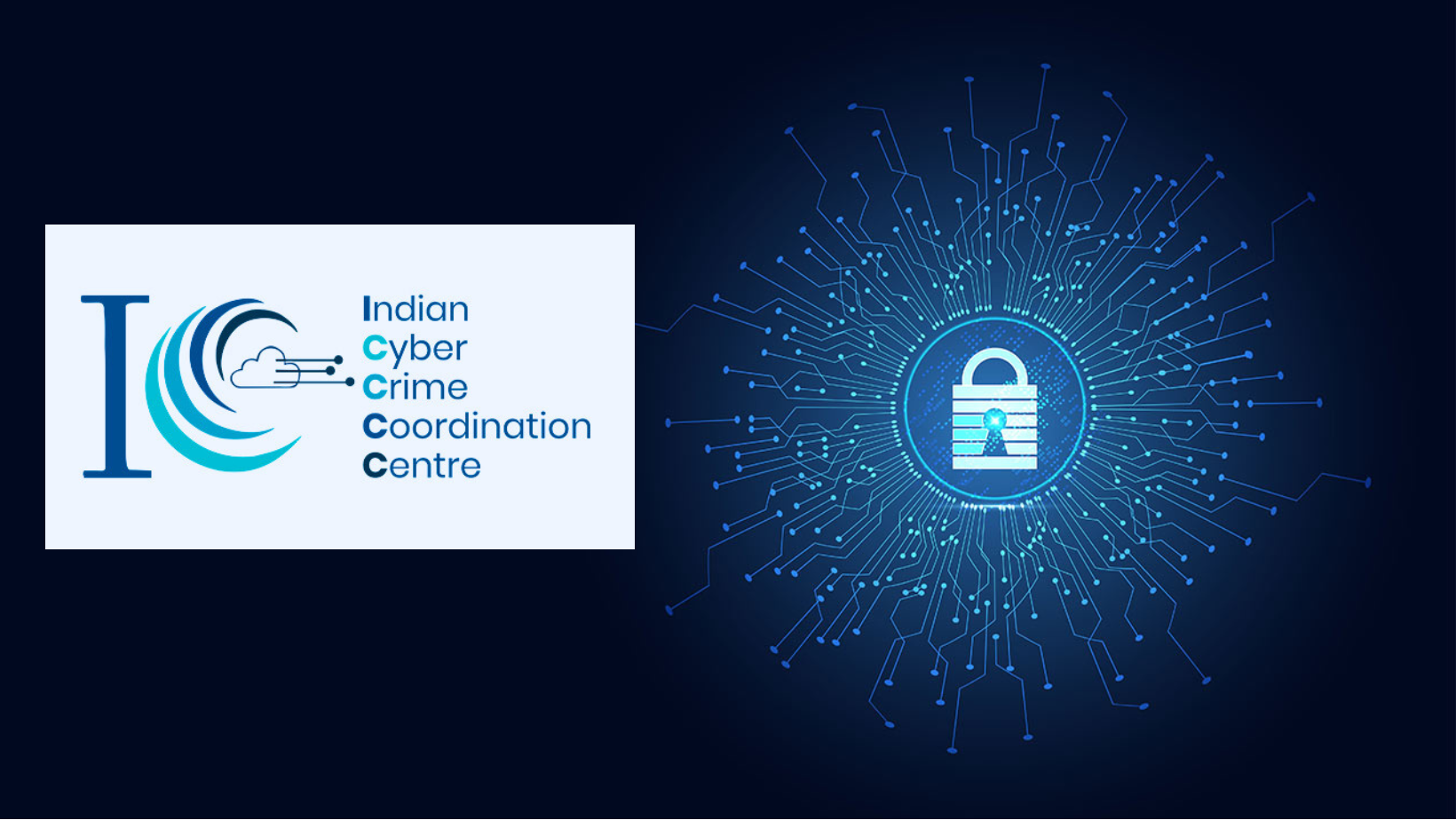
- 15 May 2024
Why is it in the News?
The Indian Cyber Crime Coordination Centre (I4C), in collaboration with Microsoft, has blocked more than 1,000 Skype IDs involved in blackmail, extortion, and “digital arrests” by cybercriminals posing as police and law enforcement authorities.
About Indian Cyber Crime Coordination Centre (I4C):
- The Indian Cyber Crime Coordination Centre (I4C) is a comprehensive initiative to address cybercrime in India.
- It has been established under the Ministry of Home Affairs (MHA) Govt. of India.
- With a focus on improving coordination between various Law Enforcement Agencies (LEAs) and stakeholders, I4C serves as a nodal point in the fight against cybercrime.
- It is located in New Delhi.
Its primary functions include:
- Acting as the central hub for tackling cybercrime and coordinating efforts among LEAs.
- Identifying research needs and collaborating with academia and research institutes within India and abroad to develop new technologies and forensic tools.
- Preventing the misuse of cyberspace by extremist and terrorist groups.
- Suggesting amendments to cyber laws to keep pace with evolving technologies and fostering international cooperation.
- Coordinating activities related to the implementation of Mutual Legal Assistance Treaties (MLAT) with other countries concerning cybercrimes, in consultation with the concerned nodal authority in MHA.
Key Components of the Indian Cyber Crime Coordination Centre (I4C):
- The I4C is comprised of several specialized units designed to tackle various aspects of cybercrime:
- National Cybercrime Threat Analytics Unit (TAU): Regularly reports on cybercrime threats and provides crucial insights to support the nation's cybersecurity efforts.
- National Cybercrime Reporting Portal (NCRP): Offers a unified platform for citizens to report various cybercrime complaints around the clock from anywhere in India.
- National Cybercrime Training Centre (NCTC): Imparts essential training to government officials, primarily focusing on state law enforcement agencies.
- National Cybercrime Research and Innovation Centre: Conducts research and develops indigenous tools for preventing cybercrimes.
- Platform for Joint Cyber Crime Coordination Team: Facilitates coordination, sharing of cybercrime modus operandi, and data/information exchange among state/UT LEAs.
- Cybercrime Ecosystem Management Unit: Focuses on creating mass awareness regarding cyber hygiene and prevention of cybercrimes.
- National Cybercrime Forensic Laboratory (Investigation) Ecosystem: Assists LEAs in cyber forensics investigations.
- In addition to these components, the I4C also fosters collaboration between academia, industry, the public, and government entities in the prevention, detection, investigation, and prosecution of cybercrimes.
- Through the Cyber Crime Volunteers Program, the I4C unites passionate citizens who are committed to serving the nation and contributing to the fight against cybercrime.
Convention on Biological Diversity (CBD)
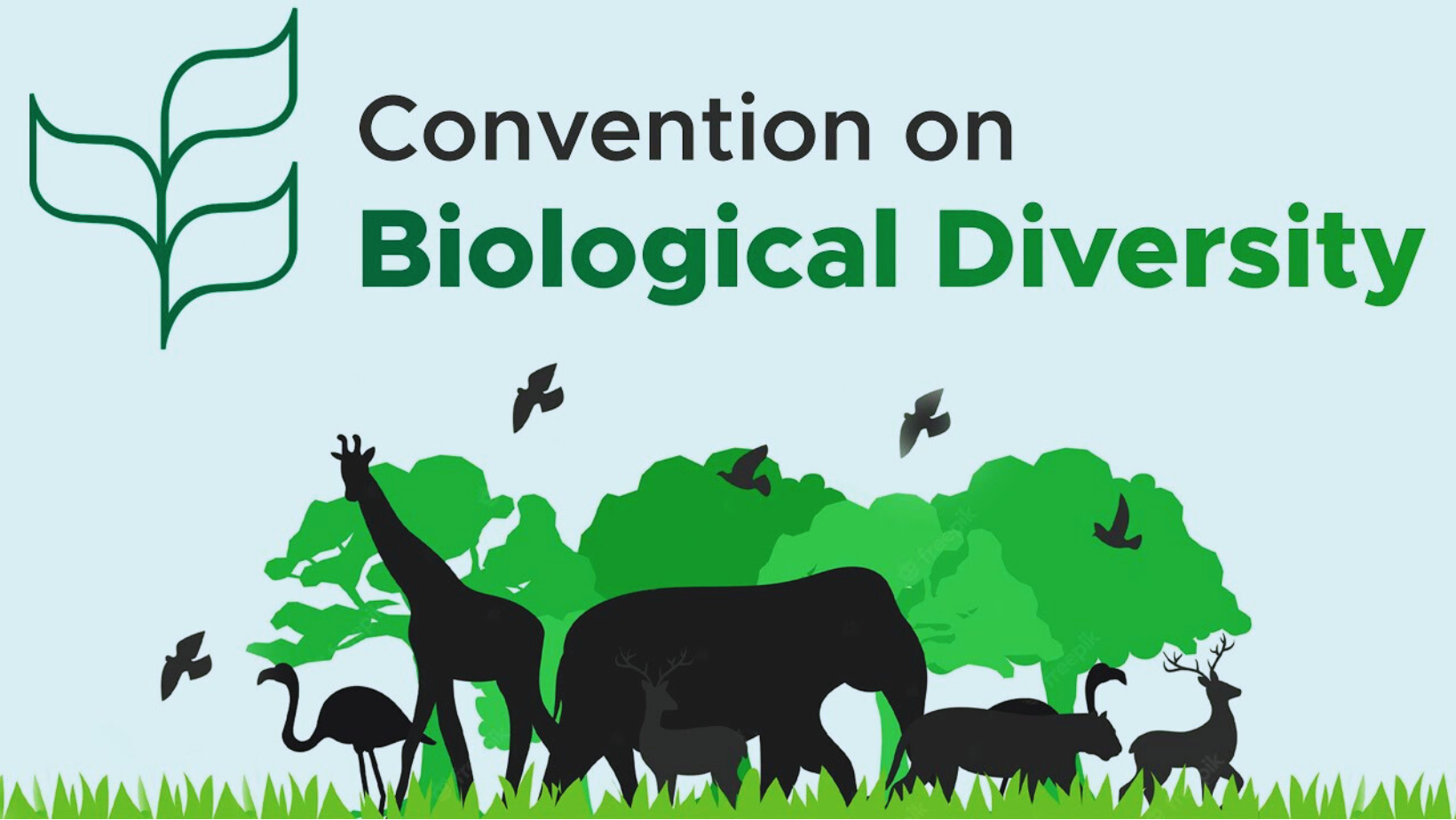
- 14 May 2024
Why is it in the News?
Technical experts from across the world are gathered at the United Nations headquarters in Kenya in preparation for the 16th Conference of Parties to the Convention on Biological Diversity (COP16).
About the Convention on Biological Diversity (CBD):
- The Convention on Biological Diversity (CBD), known informally as the Biodiversity Convention, is a multilateral treaty that has the main objective of developing national strategies for the conservation and sustainable use of biological diversity.
- It is a multilateral treaty established in 1992 at the United Nations Conference on Environment and Development (also known as the Earth Summit) held in Rio de Janeiro, Brazil.
- Signed by 150 government leaders, the Convention on Biological Diversity is dedicated to promoting sustainable development.
- Conceived as a practical tool for translating the principles of Agenda 21 into reality, the Convention recognizes that biological diversity is about more than plants, animals and microorganisms and their ecosystems – it is about people and our need for food security, medicines, fresh air and water, shelter, and a clean and healthy environment in which to live.
The CBD has so far produced two important international agreements:
- The Cartagena Protocol on biosafety entered into force in 2003, seeks to protect the environment from the potential risks of Genetically Modified (GM) organisms.
- The Cartagena Protocol on Biosafety to the Convention on Biological Diversity is an international treaty governing the movements of living modified organisms (LMOs) resulting from modern biotechnology from one country to another.
- It aims to ensure the safe handling, transport, and use of living-modified organisms (LMOs) that may have adverse effects on biological diversity, taking into account human health, especially focusing on transboundary movements.
- The protocol was adopted in January 2000 in Cartagena, Colombia, and entered into force on September 11, 2003.
- The Nagoya Protocol on Access to Genetic Resources entered into force in 2014, aims at sharing the benefits arising from the utilisation of genetic resources in a fair and equitable way.
- The Nagoya Protocol on Access to Genetic Resources and the Fair and Equitable Sharing of Benefits Arising from their Utilization is a supplementary agreement to the Convention on Biological Diversity.
- It provides a legal framework for the fair and equitable sharing of benefits arising from the utilization of genetic resources, with a particular focus on ensuring that benefits are shared with the countries and communities that provide those resources.
- The protocol aims to promote the conservation and sustainable use of biodiversity while also respecting the rights of indigenous and local communities over their traditional knowledge and genetic resources.
- It was adopted in Nagoya, Japan, in 2010 and entered into force in 2014.
- The Conference has also implemented many positive decisions that have contributed to the promotion of environmental integrity and the rights of Indigenous Peoples and Local Communities.
- In 2010, the conference in Nagoya adopted a Strategic Plan for Biodiversity, including the Aichi Biodiversity Targets for the 2011-2020 period.
- The convention provides a framework for member countries to develop national strategies and action plans for the conservation and sustainable use of biological diversity.
- As of now, 196 countries have ratified the convention, making it a widely accepted and crucial international agreement for addressing global environmental issues.
Silk Cotton Tree
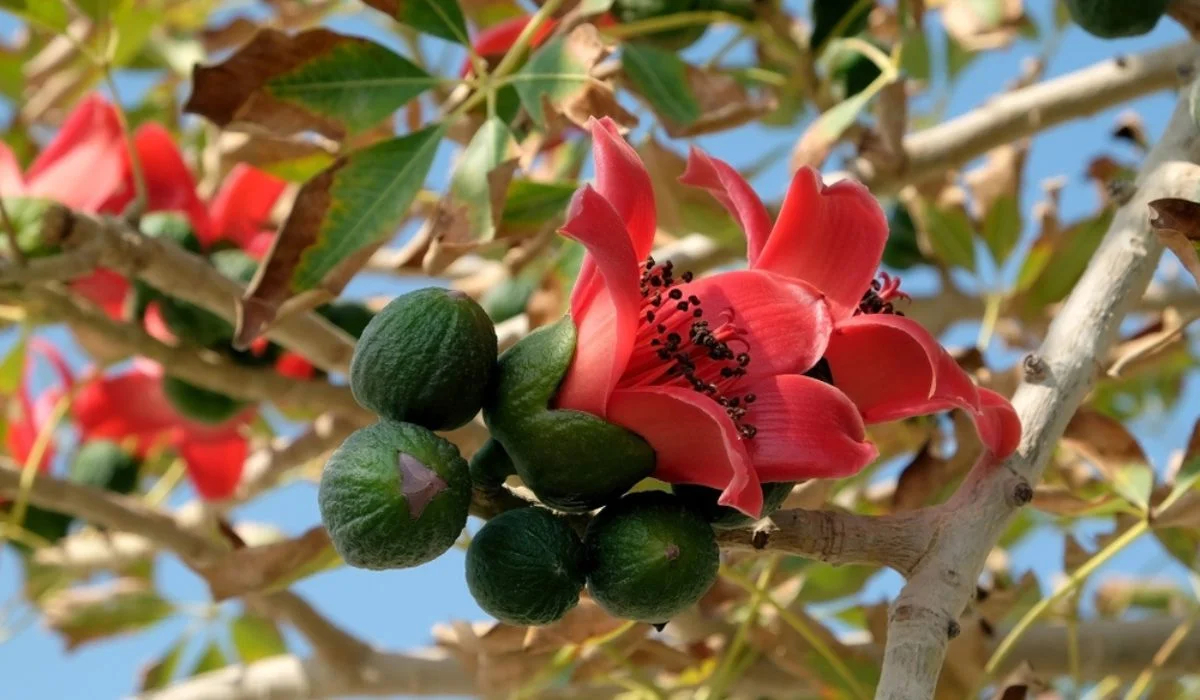
- 14 May 2024
Why is it in the News?
Silk cotton trees are dwindling in south Rajasthan, triggering a chain of detrimental effects on both the forests and the local populace in the region.
About Silk Cotton Tree:
- The silk cotton tree, or the semal tree is a type of native cotton tree with large red flowers.
- The genus name Salmalia is derived from the Sanskrit name Shaalmali.
- Silk cotton trees comprise eight species in the genus Bombax, native to India, tropical southern Asia, northern Australia and tropical Africa.
- These trees bear beautiful red-coloured flowers from January to March and the fruit on maturity appears during March and April.
- These are full of cotton-like fibrous stuff.
- It is for the fibre that villagers gather the semul fruit and extract the cotton substance called "kopak".
- This substance was once used for stuffing pillows, sofas and mattresses.
- The fruit is cooked and eaten and also pickled.
- Semul is quite a fast-growing tree and can attain a girth of 2 to 3 m, and a height of about 30 m, in nearly 50 years or so.
- It thrives in moist deciduous and semi-evergreen forests, as well as in plains, with occasional sightings in coastal areas and up to 1400 m in hilly regions.
- The tree is not particularly frost-tolerant and may get damaged by prolonged exposure to cold temperatures.
- Among the Garasia tribe in Rajasthan, the tree holds cultural significance, with some believing their lineage traces back to semal trees.
Distribution:
- Its distribution spans across various regions in India, including Andaman & Nicobar Island, Assam, Bihar, Kerala, Madhya Pradesh, Maharashtra, Odisha, Punjab, Rajasthan, and Uttar Pradesh.
Importance of the Tree:
- The tree's importance lies in its resistance to fire and its renowned cooling properties, making it valuable for land reclamation efforts.
- It generates abundant biomass each season and aids in carbon sequestration by shedding leaves before flowering.
- The late flowering of the small tree is considered by some researchers as a potential indicator of a hot summer or delayed monsoon.
- The silk cotton tree is known for its medicinal properties.
- The tree’s bark, leaves, and seeds are utilised in traditional medicine to cure various ailments, including fever, diarrhoea and skin conditions.
- The tree is also used as a natural remedy for wounds and cuts.
- The tree also serves as a habitat for rock bees, as its spikes deter sloth bears, and its reddish roots are consumed by tribal communities during the monsoon.
- Furthermore, it offers opportunities for agroforestry and provides essential resources like food, fodder, and fuelwood, with its wood being used by various tribes for crafting musical instruments and utensils.
OpenAI’s GPT-4o
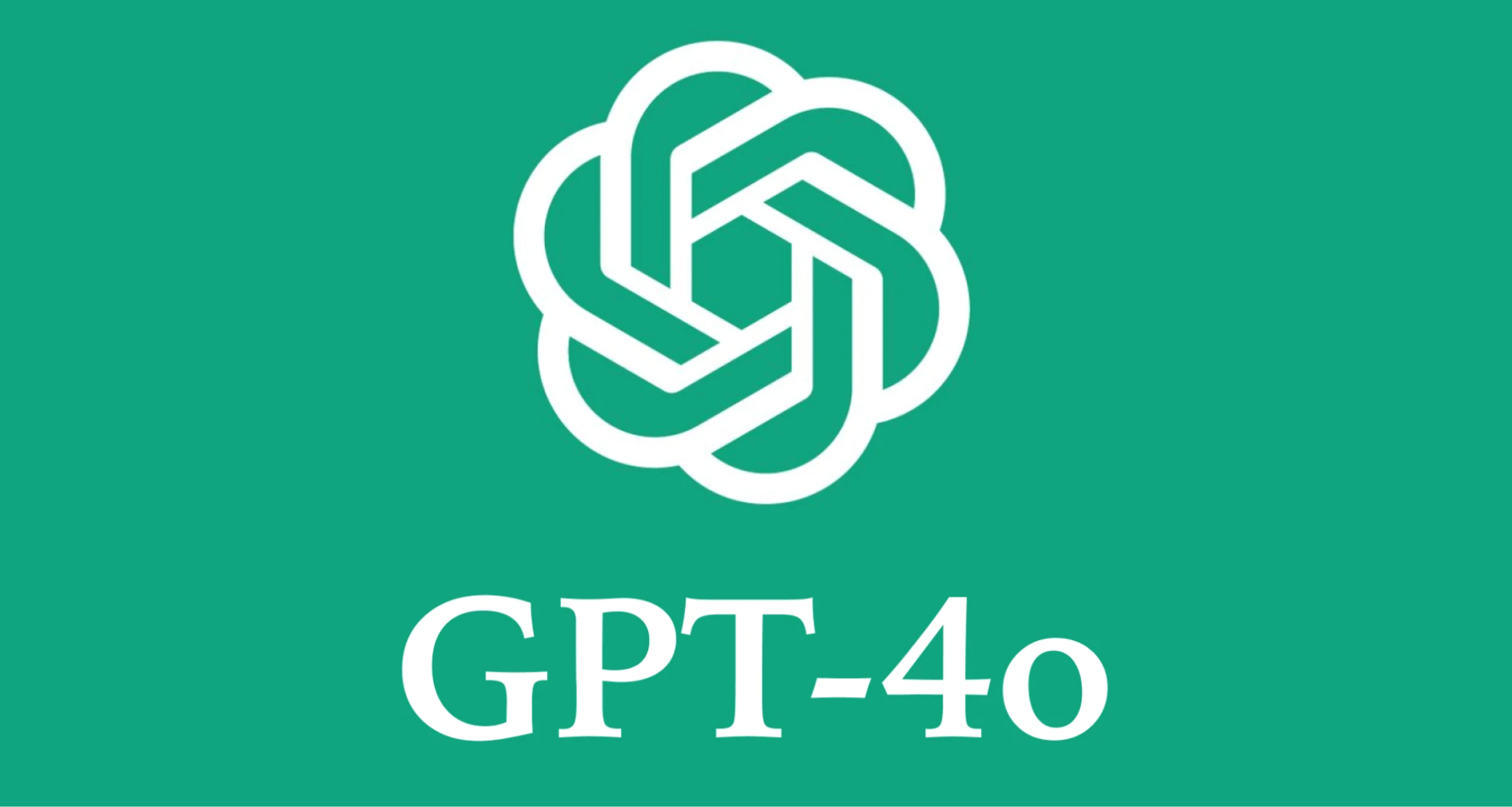
- 14 May 2024
Why is it in the News?
OpenAI introduced its latest large language model (LLM) called GPT-4o recently, billing it as its fastest and most powerful AI model so far.
What is GPT-4o?
- GPT-4o (“o” stands for “Omni”) is a revolutionary AI model by OpenAI, which has been developed to enhance human-computer interactions.
- It lets users input any combination of text, audio, and image and receive responses in the same formats.
- This makes GPT-4o a multimodal AI model – a significant leap from previous models.
- GPT-4o is like a digital personal assistant that can assist users with a variety of tasks.
- From real-time translations to reading a user’s face and having real-time spoken conversations, this new model is far ahead of its peers.
- GPT-4o is capable of interacting using text and vision, meaning it can view screenshots, photos, documents, or charts uploaded by users and have conversations about them.
- The new updated version of ChatGPT will also have updated memory capabilities and will learn from previous conversations with users.
What is the technology behind GPT-4o?
- LLMs are the backbone of AI chatbots. Large amounts of data are fed into these models to make them capable of learning things themselves.
- A large language model (LLM) is a computer program that learns and generates human-like language using a transformer architecture trained on vast text data.
- Large Language Models (LLMs) are foundational machine learning models that use deep learning algorithms to process and understand natural language.
- These models are trained on massive amounts of text data to learn patterns and entity relationships in the language.
- LLMs can perform many types of language tasks, such as translating languages, analyzing sentiments, chatbot conversations, and more.
- They can understand complex textual data, identify entities and relationships between them, and generate new text that is coherent and grammatically accurate.
What are GPT-4o’s limitations and safety concerns?
- GPT-4o is still in the early stages of exploring the potential of unified multimodal interaction, meaning certain features like audio outputs are initially accessible in a limited form only, with preset voices.
- Further development and updates are necessary to fully realise its potential in handling complex multimodal tasks seamlessly.
- Regarding safety, GPT-4o comes with built-in safety measures, including “filtered training data and refined model behaviour post-training”.
International Bullion Exchange (IIBX)

- 14 May 2024
Why is it in the News?
The State Bank of India (SBI) recently announced that it has secured the distinction of being the first bank to become a trading-cum-clearing (TCM) Member of the India International Bullion Exchange at the GIFT City in Gujarat.
What is the International Bullion Exchange (IIBX)?
- India International Bullion Exchange (IIBX) is India's first International Bullion Exchange.
- It is situated within the Gujarat International Finance Tech City (GIFT City) IFSC in Gandhinagar, Gujarat.
- Conceptualized to serve as a premier platform for importing bullion into India, IIBX aims to establish a world-class ecosystem for bullion trading, fostering investment in bullion financial products, and providing top-tier vaulting facilities.
What is Bullion?
- Bullion refers to high-purity physical gold and silver, typically stored in the form of bars, ingots, or coins.
- While sometimes recognized as legal tender, bullion primarily serves as a reserve for central banks and institutional investors.
Key Features:
- Transparent Price Discovery: IIBX prioritizes transparent price discovery mechanisms, ensuring fair and equitable transactions.
- Responsible Sourcing and Supply Chain Integrity: Emphasizing ethical practices, IIBX upholds responsible sourcing and supply chain integrity standards.
- Quality Assurance and Standardization: IIBX maintains rigorous quality assurance protocols and standardized practices to uphold the integrity of traded bullion.
Regulation and Oversight:
- Under the governance of the International Financial Services Centers Authority (IFSCA), IIBX operates under a unified regulatory framework dedicated to the development and oversight of financial products, services, and institutions within IFSCs.
Competitive Advantage:
- Offering a diverse array of products and cutting-edge technology, IIBX provides cost-effective solutions unparalleled by Indian exchanges and global counterparts in major financial hubs like Hong Kong, Singapore, Dubai, London, and New York.
What is the International Financial Services Centers Authority (IFSCA)?
- The International Financial Services Centers Authority (IFSCA) is a regulatory body established in India to oversee and regulate financial products, services, and institutions operating within International Financial Services Centers (IFSCs).
- IFSCA was formed to develop and promote the financial ecosystem within IFSCs, ensuring compliance with international standards and best practices.
- It regulates various entities such as banking, insurance, securities markets, and other financial intermediaries to foster growth and innovation in the financial sector within IFSCs.
- IFSCA's jurisdiction includes Gujarat International Finance Tech City (GIFT City) IFSC in Gandhinagar, Gujarat, which serves as a hub for international financial activities in India.
United Nations Office on Drugs and Crime (UNDOC)
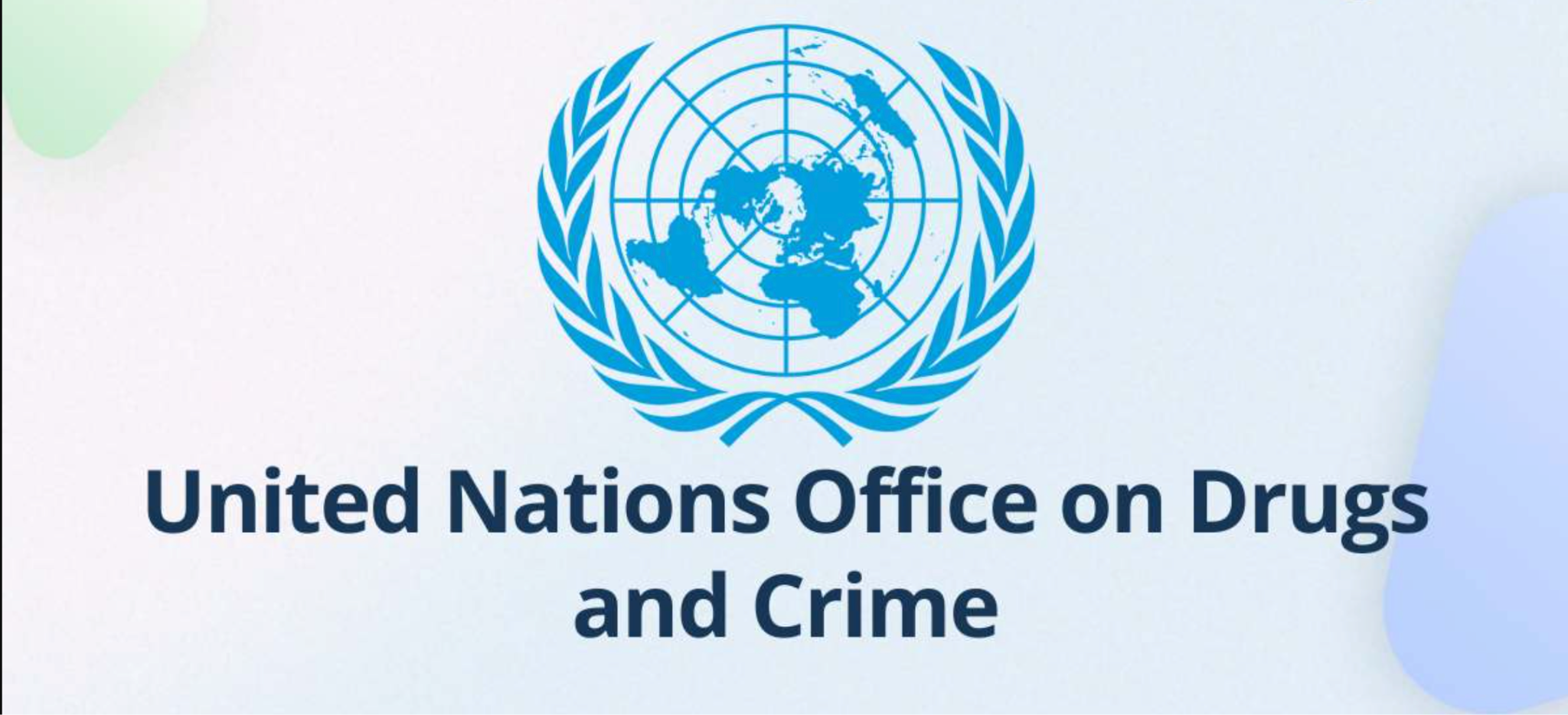
- 14 May 2024
Why is it in the News?
The United Nations Office on Drugs and Crime released the 2024 World Wildlife Crime Report on May 13, 2024.
About the United Nations Office on Drugs and Crime (UNODC):
- The United Nations Office on Drugs and Crime (UNODC) is a global organization that operates under the umbrella of the United Nations and serves as a leading authority in the fight against illicit drugs, organized crime, corruption, and terrorism.
- UNODC works to promote justice, security, and integrity in various areas related to crime prevention and criminal justice.
Objectives:
- The primary objectives of UNODC are to assist member states in their efforts to combat drug trafficking, reduce drug abuse and its associated health and social consequences, dismantle transnational organized criminal networks, prevent and address corruption, counter terrorism, and promote the rule of law and effective criminal justice systems.
History of UNODC:
- It was established in 1997 through the merger of two precursor entities:
- The United Nations Drug Control Programme (UNDCP) - It was founded in 1991 as a response to the growing global drug problem.
- Its primary focus was to coordinate and support international efforts in combating illicit drug production, trafficking, and drug abuse.
- The Centre for International Crime Prevention (CICP) - The CICP, established in 1992, aimed to address a broader range of transnational crimes, including organized crime, corruption, and terrorism.
- The United Nations Drug Control Programme (UNDCP) - It was founded in 1991 as a response to the growing global drug problem.
- The merger of these two entities resulted in the creation of UNODC, which brought together expertise and resources in the fields of drug control and crime prevention under a unified structure.
- Since its inception, UNODC has expanded its mandate and activities to encompass a wide range of global challenges related to drugs, crime, corruption, and terrorism.
The mandate of UNODC:
- The mandate of UNODC is derived from several United Nations General Assembly resolutions and international conventions.
- The organization operates within the framework of the United Nations principles and aims to support member states in implementing these conventions and addressing the various aspects of crime and drug-related challenges.
Funding:
- It relies on voluntary contributions, mainly from governments, to carry out the majority of our work.
- Headquarters: Vienna, Austria
The Main Areas of UNODC's:
- Fighting Drugs: Implementing global drug control conventions, aiding in prevention and treatment, disrupting trafficking networks, and fostering international cooperation.
- Tackling Organized Crime: Helping states build legal frameworks, dismantle criminal networks, strengthen border control, and analyze emerging threats.
- Anti-Corruption Efforts: Supporting UNCAC implementation, establishing commissions, recovering stolen assets, and promoting integrity in public and private sectors.
- Strengthening Criminal Justice: Enhancing law enforcement, judiciary, and prison systems, improving access to justice, supporting rehabilitation, and promoting international legal standards.
- Combating Terrorism: Assisting in legal frameworks, enhancing law enforcement capacities, countering terrorist financing, and addressing online radicalization.
- Addressing Human Trafficking and Migrant Smuggling: Developing strategies, strengthening legislation, aiding victim protection, and fostering international cooperation.
What is the World Wildlife Crime Report?
- The World Wildlife Crime Report, now in its third edition (2024), continues the tradition established by earlier editions published in 2016 and 2020.
- It delves into trends related to the illegal trafficking of protected wildlife species, providing comprehensive analyses of the harms and impacts of wildlife crime.
- Furthermore, it investigates the driving factors behind wildlife trafficking trends and assesses the effectiveness of various interventions aimed at addressing this complex issue.
Xenotransplantation
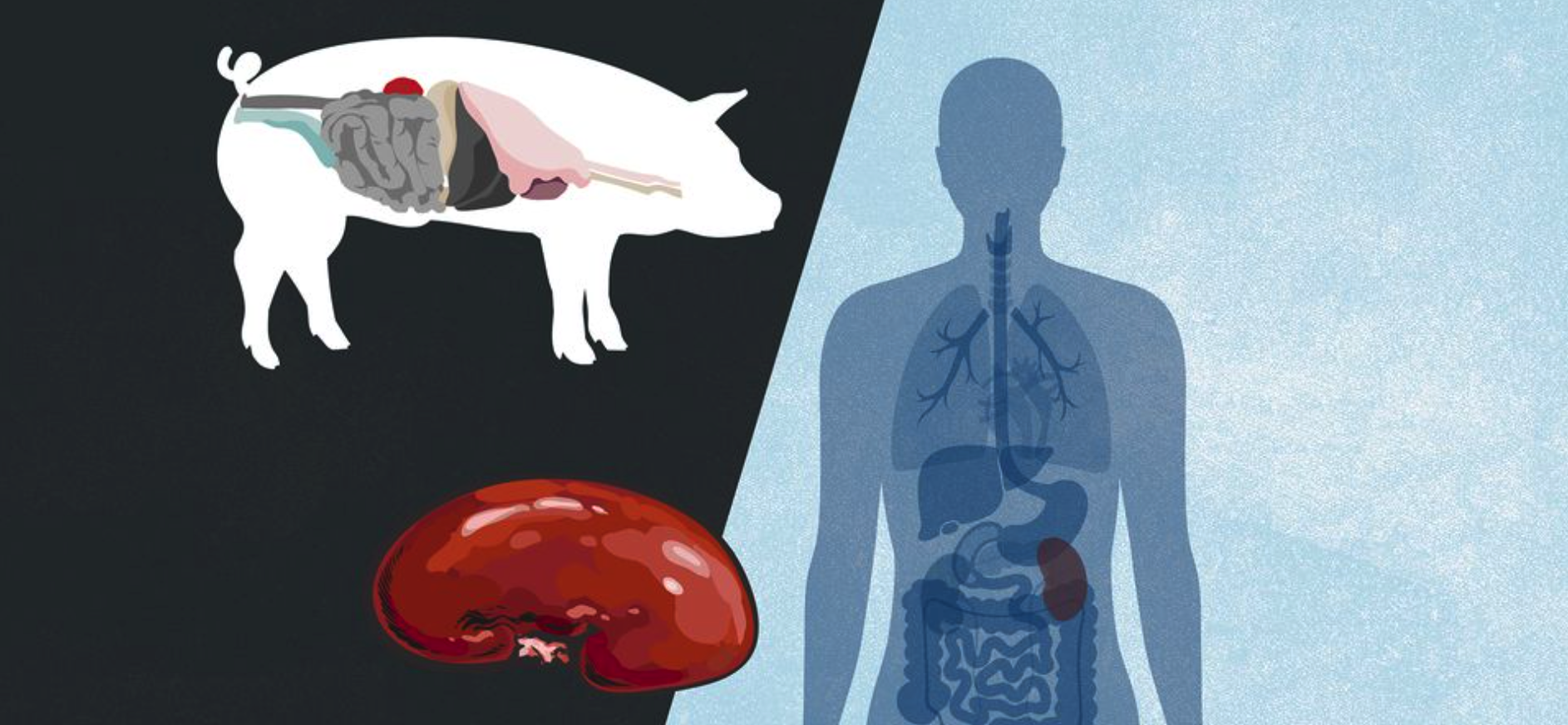
- 13 May 2024
Why is it in the News?
The first recipient of a modified pig kidney transplant passed away recently, around two months after the surgery was carried out.
What is Xenotransplantation?
- Xenotransplantation is the transplantation of organs from different species, such as pigs to humans.
- It is a procedure that involves the transplantation, implantation or infusion into a human recipient of either (a) live cells, tissues, or organs from a nonhuman animal source, or (b) human body fluids, cells, tissues or organs that have had ex vivo contact with live nonhuman animal cells, tissues or organs.
- Essentially, it is the use of animal cells and organs to heal humans.
- Xenotransplantation involving the heart was first tried in humans in the 1980s.
- The need for such a procedure was felt because of the significant gap between the number of transplants needed by patients and the availability of donor organs.
How Does Xenotransplantation Happen?
- The process of implanting a pig kidney into a recipient is akin to a standard transplant procedure, including the use of post-surgery immunosuppressant drugs.
- However, several critical additional steps are involved.
- Firstly, the chosen animal organ undergoes genetic modifications to prevent rejection by the human body.
- Using CRISPR-Cas9 gene editing technology, specific pig genes responsible for producing antibodies reactive to the human immune system are removed. Simultaneously, certain human genes are introduced to enhance the kidney's compatibility with human recipients.
- Even after the surgery, vigilant monitoring is essential to assess the body's response to the transplanted organ.
Why are pigs often used for xenotransplantation?
- Pig heart valves have been used to replace damaged valves in humans for over 50 years now.
- The pig’s anatomical and physiological parameters are similar to those of humans, and the breeding of pigs on farms is widespread and cost-effective.
- Also, many varieties of pig breeds are farmed, which provides an opportunity for the size of the harvested organs to be matched with the specific needs of the human recipient.
What are the Complications of Xenotransplantation?
- Rejection: Despite genetic modifications, the recipient's immune system may still recognize the transplanted organ as foreign and mount an immune response, leading to rejection.
- Infection: Xenotransplantation introduces the risk of transmitting infectious diseases from the donor animal to the recipient, including viruses and bacteria that may not typically affect humans.
- Immunological Challenges: The interaction between the recipient's immune system and the transplanted organ may trigger inflammatory responses, leading to complications such as inflammation and tissue damage.
- Ethical Concerns: Xenotransplantation raises ethical dilemmas related to animal welfare, genetic engineering, and the potential exploitation of animals for human benefit.
- Long-term Health Risks: The long-term effects of xenotransplantation on recipient health, including the development of chronic conditions and the risk of cancer, are still not fully understood and require further research.
Vibrant Village Programme (VVP)
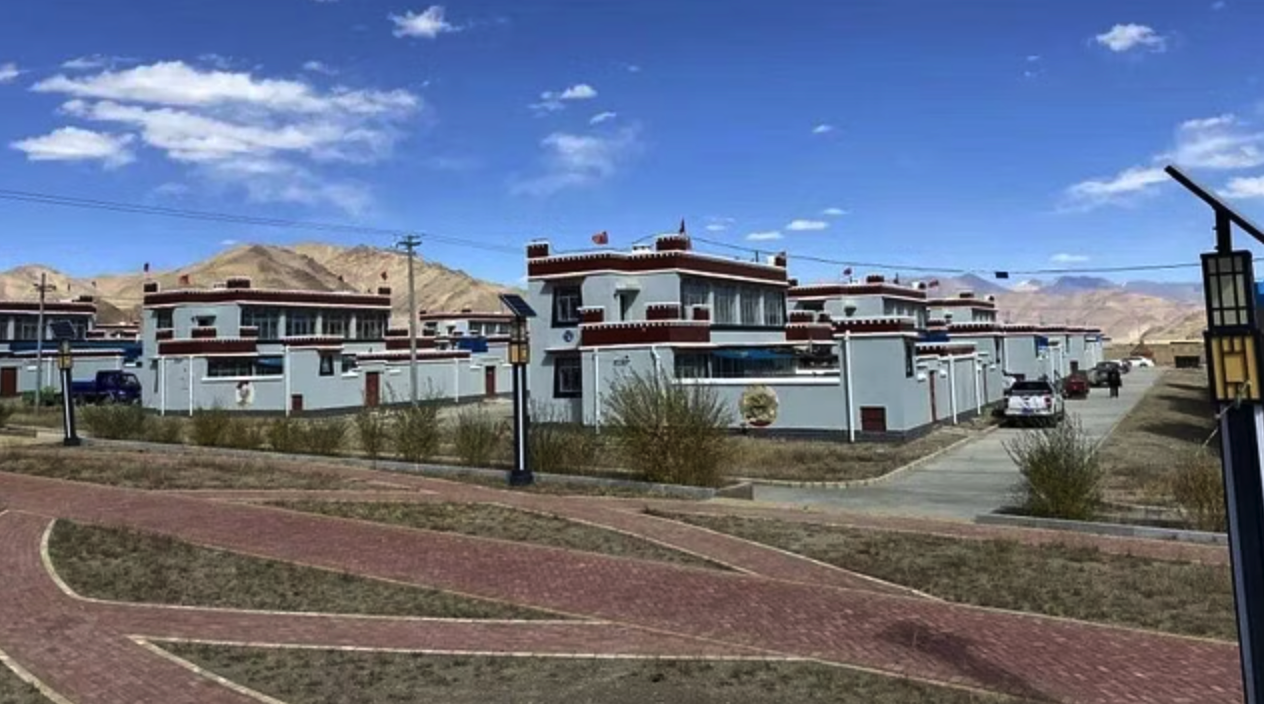
- 13 May 2024
Why is it in the News?
The government is likely to spend over ?2 crore on each kilometre of road to be constructed along the China border in Uttarakhand and Sikkim under the Vibrant Village Programme (VVP), according to the project’s details.
What is the Vibrant Villages Programme (VVP)?
- Vibrant Villages Programme (VVP) is a Centrally Sponsored Scheme approved on 15th February 2023 for the financial years 2022-23 to 2025-26.
Objective:
- For comprehensive development of the select villages in 46 blocks in 19 districts abutting the northern border in the States of Arunachal Pradesh, Himachal Pradesh, Sikkim, Uttarakhand and UT of Ladakh.
- It will aid in raising the standard of living for residents of designated border communities and encouraging them to remain there, reversing the outmigration from these villages and enhancing border security.
- Action plans for identified villages would be prepared by the district administration with assistance from the proper mechanisms at the block and panchayat levels, in order to guarantee complete saturation of federal and state programmes.
- Road connectivity, drinking water, power (including solar and wind energy), mobile and internet access, tourist attractions, multipurpose facilities, healthcare infrastructure, and wellness centres are the intervention areas with the highest priority for village development.
Scheme implementation:
- Scheme implementation involves identifying and fostering economic drivers in border villages along the northern border, following a "Hub and Spoke Model" to establish growth centres.
- This includes promoting social entrepreneurship, empowering youth and women through skill development and entrepreneurship, leveraging local tourism potential, preserving cultural heritage, and fostering sustainable eco-agribusinesses.
- Vibrant Village Action Plans will be developed by district administrations in collaboration with Gram Panchayats, ensuring full coverage of Central and state schemes.
Expected outcomes:
- Key outcomes that have been attempted are connectivity with all-weather roads, drinking water, 24x7 electricity – Solar and wind energy to be given focussed attention, and mobile and internet connectivity.
- Tourist centres, multi-purpose centres and health and wellness Centers.
Rat-Hole Mining
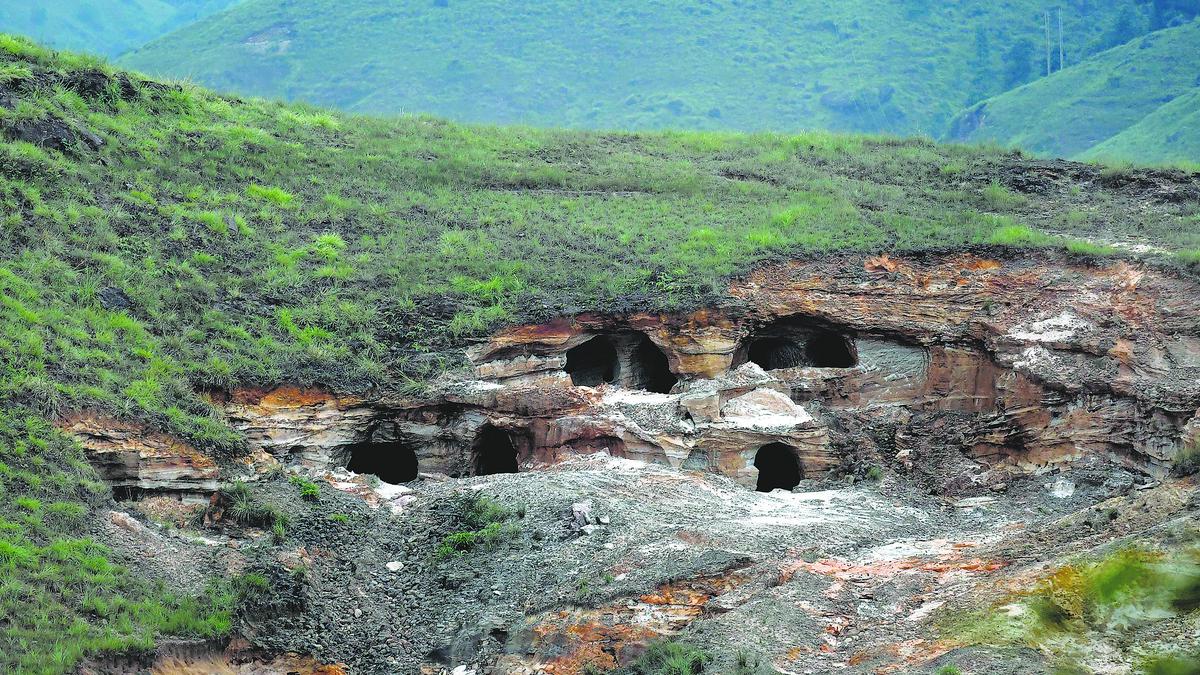
- 13 May 2024
Why is it in the News?
A one-member panel appointed by the High Court of Meghalaya to handle coal-related issues has flagged the lack of progress in restoring the environment damaged by rat-hole coal mining in the northeastern State.
What is Rat-hole Mining?
- Coal reserves are concentrated in Eastern India, spanning states such as Telangana, Madhya Pradesh, Maharashtra, Jharkhand, Chhattisgarh, and West Bengal, with significant deposits also found in the North-Eastern regions like Assam and Meghalaya.
- However, commercial mining isn't prevalent in the North-East due to unsuitable terrain and the nature of coal deposits.
- Open mining faces additional challenges, and the coal in this region often contains high sulfur content, reducing energy efficiency and classifying it as low-quality coal.
- A rat-hole mine involves digging of very small tunnels, usually only 3-4 feet deep, in which workers, more often children, enter and extract coal.
- Once the pits are dug, miners descend using ropes or bamboo ladders to reach the coal seams.
- The coal is then manually extracted using primitive tools such as pickaxes, shovels, and baskets.
- A major portion of these employees are children, who are preferred because of their thin body shape and ease of accessing depths.
- This practice has become very popular in Meghalaya.
- Here there are majorly hilly terrains, which make coal mining very difficult.
- Also, digging a big hole is very difficult because a big hole demands pillars and support.
- Since it’s a good opportunity to extract coal from there for big as well as local investors, because it involves less investment and good returns, people are drawn towards this dangerous business.
- The practice is to not make any professional tunnels, install pillars, and ensure safety measures, but to just dig a small tunnel and put children and labour to work.
- Rat-hole mining is primarily practised only in Meghalaya.
- Such cases are not witnessed in Jharkhand and Chhattisgarh because the coal seems to be thick in Jharkhand and Chhattisgarh while in Meghalaya coal seems to be very thin.
- So, economically it is not a good idea to do open mining, and therefore, they prefer rat-hole mining.
Types of rat-hole mining:
- The rat-hole mining is broadly of two types.
- In the side-cutting procedure, narrow tunnels are dug on the hill slopes and workers go inside until they find the coal seam.
- In the other type of rat-hole mining, called box-cutting, a rectangular opening is made, varying from 10 to 100 sqm, and through that a vertical pit is dug, 100 to 400 feet deep.
- Once the coal seam is found, rat-hole-sized tunnels are dug horizontally through which workers can extract the coal.
Environmental and Safety Concerns:
- Since rat-hole mining is illegal, it is practised behind closed doors, and therefore, no one is ready to invest in infrastructure development.
- Coal is stored near rivers because of a shortage of space which leads to pollution around water bodies.
- The water in the Kopili River (which flows through Meghalaya and Assam) has turned acidic.
- The entire roadsides in and around mining areas are for piling coal.
- This is a major source of air, water and soil pollution.
- Off-road movement of trucks and other vehicles in the area causes further damage to the ecology of the area.
- Due to rat-hole mining, during the rainy season, water gets flooded into the mining areas resulting in the death of many workers due to suffocation and hunger.
- If water has seeped into the cave, the worker can enter only after the water is pumped out.
- Also, the mines are typically unregulated, lacking safety measures such as proper ventilation, structural support, or safety gear for the workers.
When Was It Banned?
- The National Green Tribunal (NGT) banned rat-hole mining in 2014 and retained the ban in 2015.
- The ban was on grounds of the practice being unscientific and unsafe for workers.
- The NGT order bans not only rat-hole mining but all “unscientific and illegal mining.”
- But orders of the Tribunal have been violated without exception since The State Government has failed to check illegal mining effectively.
Caenorhabditis Elegans
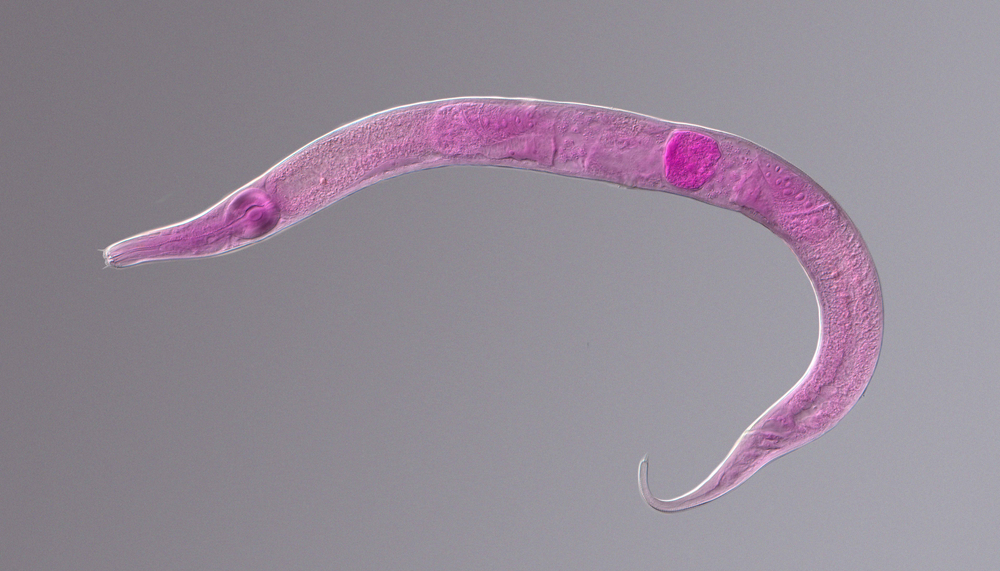
- 13 May 2024
Why is it in the News?
Researchers found that after C. elegans worms ate a disease-causing bacteria, its children knew from birth to avoid making the same mistake.
What is Caenorhabditis Elegans?
- Caenorhabditis elegans is a small, free-living roundworm (nematode) that is widely used as a model organism in various fields of biological research, including genetics, developmental biology, neuroscience, and ageing.
- It was initially discovered in the soil of a nematode-infested plant in the city of Bristol, England, in the early 20th century.
C. elegans has several characteristics that make it an ideal model organism:
- Simple anatomy: The adult hermaphrodite worm consists of precisely 959 cells, allowing for a detailed understanding of its cellular anatomy.
- Rapid life cycle: The worm's life cycle, from fertilized egg to mature adult, takes only about 3 days at 20°C.
- Transparent body: The transparency of its body enables researchers to observe cellular structures and processes directly under a microscope.
- Ease of genetic manipulation: C. elegans is highly responsive to genetic manipulation techniques, facilitating the study of gene function and the effects of mutations.
- Research on C. elegans has led to groundbreaking discoveries, including insights into the molecular basis of cell death, the regulation of gene expression, and the neural basis of behaviour.
- These findings have provided valuable knowledge that can be applied to understanding the biology of more complex organisms, including humans.
What are Nematodes?
- Nematodes are long, thin round worms, so tiny that they can usually only be seen under the microscope.
- Nematodes are incredibly abundant organisms found in various environments worldwide.
- They can be parasites of animals and plants or exist as free-living organisms in soil, freshwater, marine habitats, and even unconventional places like vinegar and beer malts.
- These bilaterally symmetrical creatures are elongated with tapered ends and may possess a pseudocoel, a fluid-filled body cavity.
- Nematodes are ubiquitous, inhabiting diverse ecosystems ranging from deserts and swamps to oceans and even Antarctica.
- In animals, they commonly parasitize organs such as the alimentary, circulatory, and respiratory systems.
ASEAN-India Trade in Goods Agreement (AITIGA)
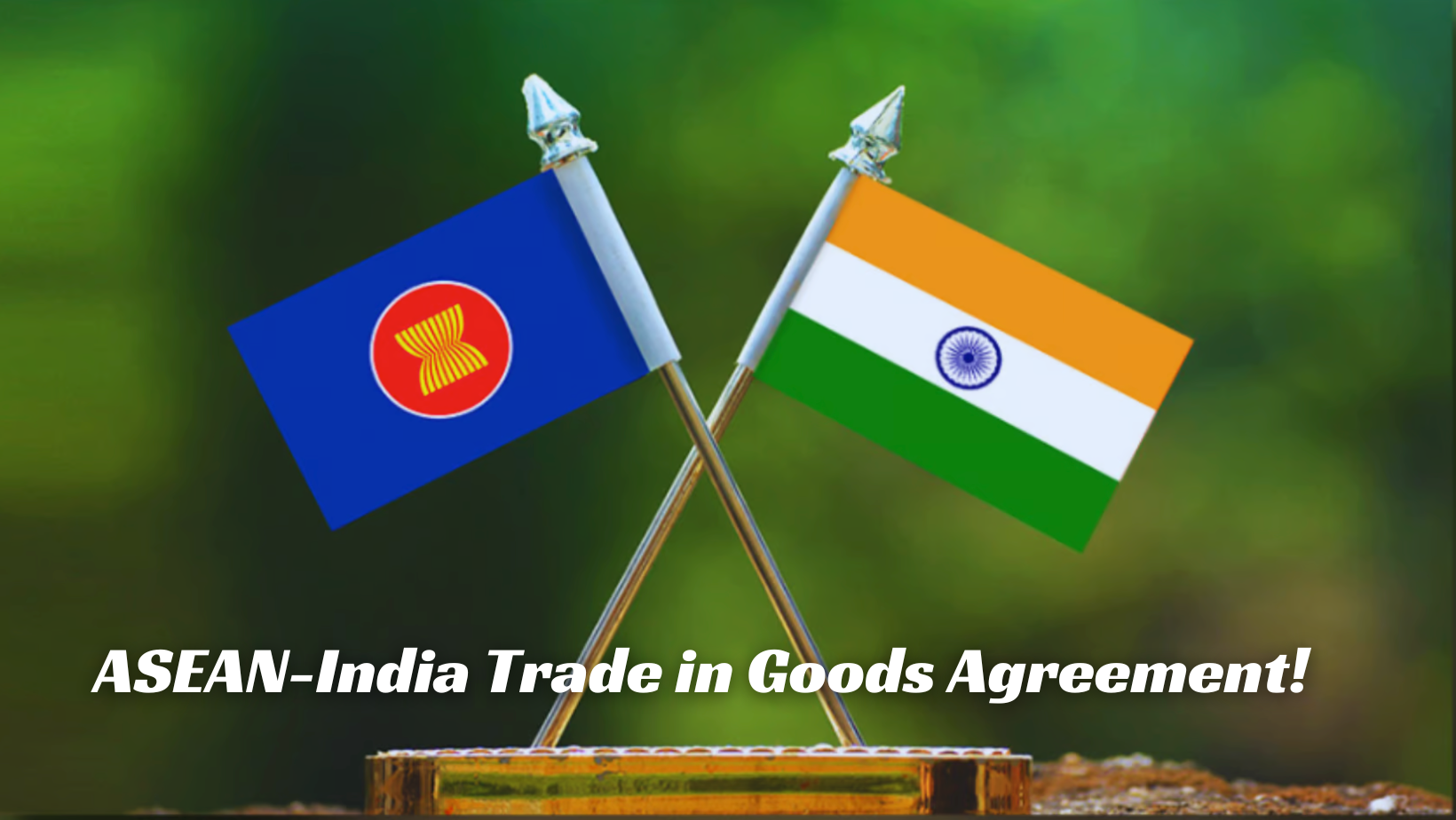
- 13 May 2024
Why is it in the News?
The 4th joint committee meeting for the review of AITIGA (ASEAN-India Trade in Goods Agreement) was held in Putrajaya, Malaysia recently.
About ASEAN-India Trade in Goods Agreement (AITIGA):
- The ASEAN-India Trade in Goods Agreement (AITIGA) is a trade deal between the ten member states of ASEAN and India.
- ASEAN and India signed the Agreement at the 7th ASEAN Economic Ministers-India Consultations in Bangkok, Thailand in 2009.
- The Agreement, which came into effect in 2010, is sometimes referred to as the ASEAN-India Free Trade Agreement.
- The Agreement has led to steadily increasing trade between ASEAN and India since its signing.
- In 2019-20, trade between India and ASEAN was worth US$86 billion.
- Though this represented a decline from US$97 billion in 2018-19 because of the COVID-19 pandemic, it was an increase from US$81.3 billion in the 2017-18 financial year.
- It covers trade in physical goods and products and it does not apply to trade in services.
- ASEAN and India signed a separate ASEAN-India Trade in Services Agreement in 2014.
About the Association of the Southeast Asian Nations (ASEAN):
- The Association of the Southeast Asian Nations (ASEAN) is a geopolitical and economic organization established to accelerate economic growth, social progress and cultural development among its ten (10) member states.
- It also aims to promote peace and stability in the region, active collaboration and mutual assistance on matters of common interest, Southeast Asian studies, and maintain close and beneficial cooperation with other regional and international organizations.
- It was established on 8 August 1967 in Bangkok, Thailand with the signing of the ASEAN Declaration by the founding members of ASEAN, namely Indonesia, Malaysia, the Philippines, Singapore and Thailand.
- Brunei Darussalam then joined in 1984, Viet Nam in 1995, Lao PDR and Myanmar in 1997, and Cambodia in 1999, making up the current 10 Member States of ASEAN.
- The ASEAN Secretariat was set up in February 1976 and is based in Jakarta, Indonesia.
PS4 Engine
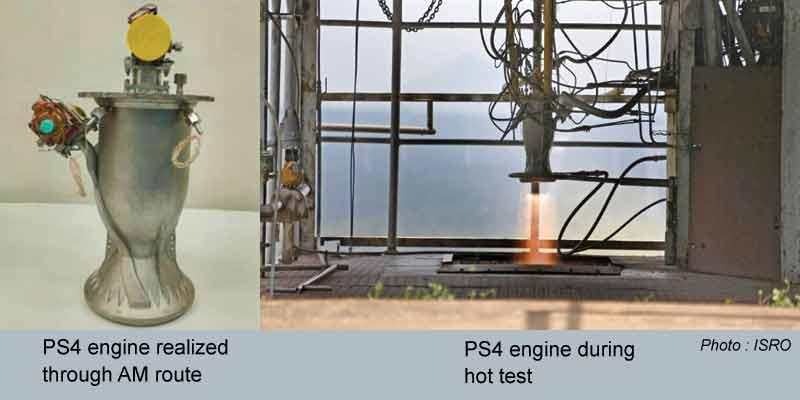
- 11 May 2024
Why is it in the News?
Recently, the Indian Space Research Organisation (ISRO) successfully tested a liquid rocket engine made with the help of additive manufacturing technology — commonly known as 3D printing.
About PS4 Engine:
- ISRO has successfully conducted a long-duration test of its PS4 engine, re-designed for production using cutting-edge additive manufacturing (AM) techniques, also known in common parlance as 3D printing, and crafted in the Indian industry.
- The PS4 engine is the uppermost stage of the Polar Satellite Launch Vehicle (PSLV), comprising two Earth-storable liquid engines.
- The engine uses the earth-storable bipropellant combinations of Nitrogen Tetroxide as oxidiser and Mono Methyl Hydrazine as fuel in pressure-fed mode.
- It was developed by ISRO's Liquid Propulsion Systems Centre (LPSC).
- LPSC redesigned the engine making it amenable to the Design for Additive Manufacturing (DfAM) concept thereby gaining considerable advantages.
- It was developed by ISRO's Liquid Propulsion Systems Centre (LPSC).
- The manufacturing of the engine was done by the Indian industry partner, Wipro 3D, and the engine was hot tested at ISRO Propulsion Complex, Mahendragiri, Tamil Nadu.
Why did ISRO use 3D printing to build the PS4 engine?
- The technology helped ISRO bring down the number of parts in the engine from 14 to a single piece.
- The space agency was able to eliminate 19 weld joints and saved 97% of the raw material.
- It also reduced the overall production time by 60%.
What is 3D Printing?
- 3D printing is a process that uses computer-created design to make three-dimensional objects layer by layer.
- It is an additive process, in which layers of a material like plastic, composites or bio-materials are built up to construct objects that range in shape, size, rigidity, and colour.
How is 3D printing done?
- To carry out 3D printing, one needs a personal computer connected to a 3D printer.
- All they need to do is design a 3D model of the required object on computer-aid design (CAD) software and press ‘print’.
- The 3D printer does the rest of the job.
- 3D printers construct the desired object by using a layering method, which is the complete opposite of the subtractive manufacturing processes.
- The (3D) printers act generally the same as a traditional inkjet printer in the direct 3D printing process, where a nozzle moves back and forth while dispensing a wax or plastic-like polymer layer-by-layer, waiting for that layer to dry, then adding the next level.
- It essentially adds hundreds or thousands of 2D prints on top of one another to make a three-dimensional object.
- Notably, these machines are capable of printing anything from ordinary objects like a ball or a spoon to complex moving parts like hinges and wheels.
- We can print a whole bike, handlebars, saddle, frame, wheels, brakes, pedals and chain–ready assembled, without using any tools.
- It’s just a question of leaving gaps in the right places.
Heatstroke

- 11 May 2024
Why is it in the News?
The Union Health Ministry has issued standardised guidelines for confirming heatstroke and heat-related deaths in the country.
What is a Heatstroke?
- Heatstroke, also known as sunstroke, is a medical emergency resulting from the body overheating due to exposure to high temperatures and humidity or prolonged physical exertion in hot conditions.
- Individuals experiencing heat exhaustion may exhibit symptoms such as fatigue, dizziness, headache, nausea, vomiting, low blood pressure, and increased heart rate.
Criteria for Heatstroke:
- Heatstroke is characterized by body temperatures of 40°C (104°F) or higher, accompanied by delirium, seizures, or coma, posing a potentially fatal condition.
Heatstroke Deaths in India:
- According to analysis of data from the National Crime Records Bureau, over 11,000 people in India died due to heatstroke between 2012 and 2021.
Government Initiatives:
- The Health Ministry released a National Action Plan on Heat-Related Illness in July 2021, outlining strategies to address health challenges posed by heat waves.
- The India Cooling Action Plan (ICAP) aims to mitigate heat impacts by ensuring sustainable cooling and thermal comfort for all by 2037-38.
First Aid Measures for Heatstroke:
-
- Move the affected person to a cool, shaded area.
- Offer water or a rehydrating drink if the person is conscious.
- Fan the person to promote cooling.
- Seek medical attention if symptoms worsen, persist, or if the person loses consciousness.
- Avoid giving alcohol, caffeine, or carbonated beverages.
- Apply a cool, wet cloth to the person's face or body.
- Loosen clothing to improve ventilation.
Key Points from the Guidelines:
- Rationale for the Guidelines: Between 2013 and 2022, there was an 85% increase in estimated annual heat-related mortality compared to 1991–2000, driven by global warming and changing demographics.
- Without significant adaptation progress, annual heat-related deaths could surge by 370% by mid-century if global temperatures continue to rise towards 2°C above pre-industrial levels.
- In light of these projections, enhancing our understanding and surveillance of heat-related health issues is imperative.
Preparation and Authorship:
- The guidelines were developed by the National Programme on Climate Change and Human Health (NPCCHH) in collaboration with the National Centre for Disease Control (NCDC).
Objective:
- The guidelines aim to assist hospitals in identifying criteria for categorizing deaths as heat-related or due to heat stroke, promoting evidence-based medical decision-making.
Autopsy Considerations:
- Decisions regarding autopsy should be based on factors such as the circumstances of death, the age of the deceased, and available resources.
- Where feasible, collecting blood, urine, etc., for toxicological examination is recommended, contingent on the condition of the body.
Challenges in Diagnosing Heat-Related Deaths
- Diagnosing heat-related deaths post-mortem presents several challenges, including:
- Frequently unavailable pre-terminal or terminal body temperatures.
- Non-specific autopsy findings vary based on the duration of survival after heat exposure.
- Reliance on-scene investigation for diagnosing hyperthermia, a condition resulting from the body's inability to regulate heat.
- Consideration of circumstances of death and exclusion of alternative causes.
- It's noted that autopsies are not mandatory for heat-related deaths.
Inter-Services Organisations (ISOs) (Command, Control, and Discipline) Act
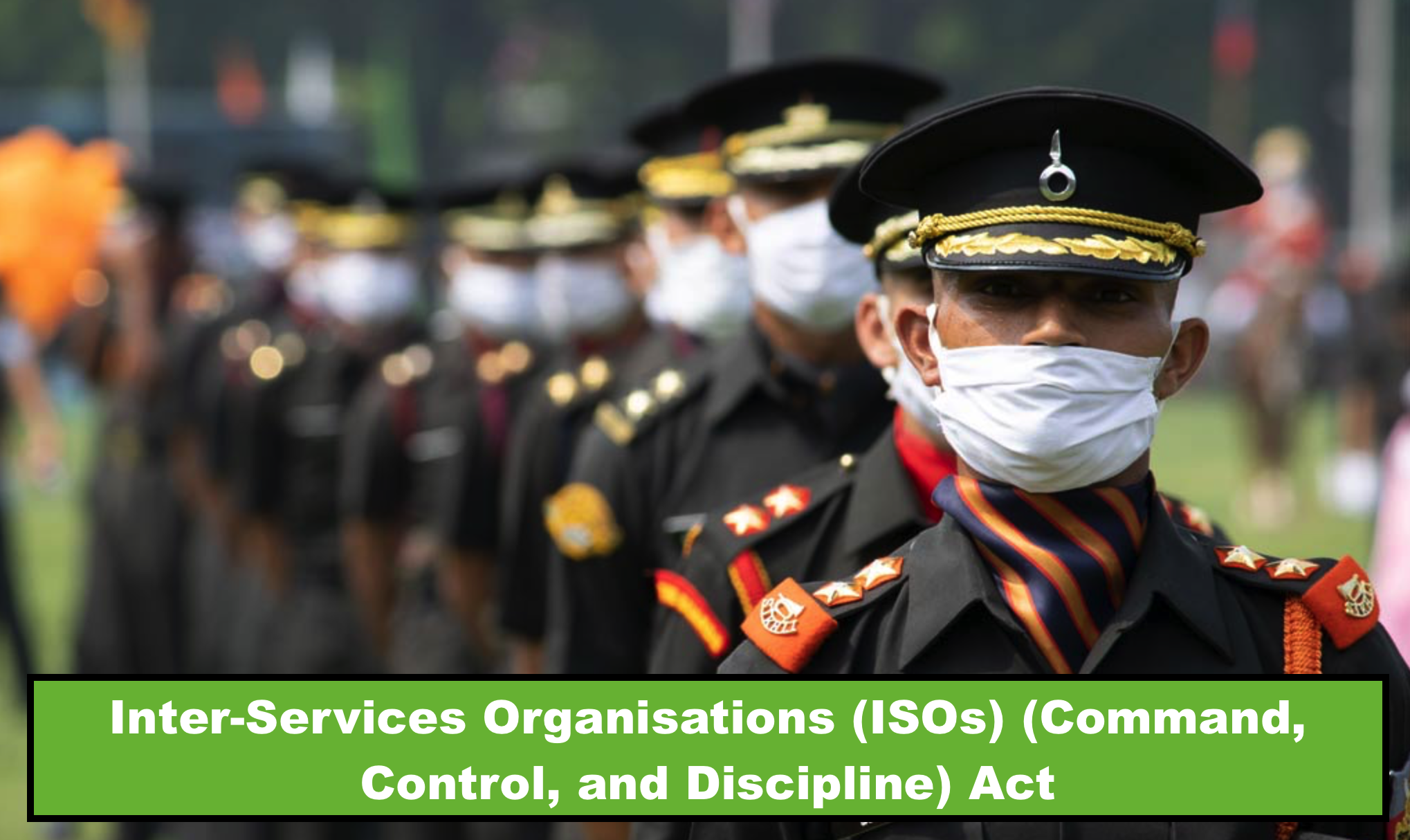
- 11 May 2024
Why is it in the News?
The Inter-Services Organisations (Command, Control and Discipline) Act has been notified in a gazette and has been enforced with effect from May 10, the Defence Ministry said recently.
About Inter-Services Organisations (ISOs) (Command, Control, and Discipline) Act:
- During the Monsoon Session of 2023, both houses of Parliament passed a bill aimed at enhancing the operational efficiency and coordination of Inter-Services Organisations (ISOs).
- These organisations comprise personnel from the Army, Air Force, and Navy, such as joint training institutions like the National Defence Academy, National Defence College (NDC), Defence Services Staff College (DSSC), and the Andaman and Nicobar Command (ANC).
Key Provisions of the ACT:
- Inter-Services Organisation Establishment: Existing Inter-Services Organisations will be considered constituted under the Act.
- The central government may establish an Inter-Services Organisation comprising personnel from at least two of the following services: the Army, Navy, and Air Force.
- Control of Inter-Services Organisations: The Act empowers the Commander-in-Chief or Officer-in-Command of an Inter-Services Organisation to exercise command and control over its personnel.
- They are responsible for maintaining discipline and ensuring the proper discharge of duties by service personnel.
- Supervision of an Inter-Services Organisation will be under the purview of the central government.
- Commander-in-Chief Eligibility: Officers eligible for appointment as Commander-in-Chief or Officer-in-Command include:
- A General Officer of the regular Army (rank above Brigadier),
- A Flag Officer of the Navy (rank of Admiral of the Fleet, Admiral, Vice-Admiral, or Rear-Admiral), or
- An Air Officer of the Air Force (a rank above Group Captain).
- Commanding Officer Appointment: The Act establishes a Commanding Officer responsible for leading a unit, ship, or establishment within the Inter-Services Organisation.
- The Commanding Officer carries out duties assigned by the Commander-in-Chief or Officer-in-Command.
- They have the authority to initiate disciplinary or administrative actions for personnel within the Inter-Services Organisation.
Need for the Act:
- Theaterisation Drive: The enactment aligns with the ongoing push for theaterisation, a vital military reform aimed at optimizing resources for future combat scenarios.
- Existing Framework Challenges: Currently, armed forces personnel are governed by separate laws— the Air Force Act, 1950, the Army Act, 1950, and the Navy Act, 1957—resulting in disjointed disciplinary powers.
- Under the current setup, only officers from the same service possess disciplinary authority over personnel governed by the respective Act, leading to command, control, and discipline challenges.
- Financial Implications: The present framework entails time-consuming processes and financial expenditures for personnel transfers.
- The proposed legislation seeks to remedy these challenges by enhancing discipline enforcement, expediting case resolutions, and potentially saving public funds.
Auroras

- 11 May 2024
Why is it in the News?
The night sky was lit up by northern lights, or aurora borealis, at Hanle village in Ladakh early Saturday morning.
What are Auroras?
- Auroras are essentially natural lights that appear as bright, swirling curtains in the night sky and can be seen in a range of colours, including blue, red, yellow, green, and orange.
- These lights primarily appear near the poles of both the northern and southern hemispheres all year round but sometimes they expand to lower latitudes.
- In the north, the display is called the Aurora Borealis
- In the south, it is known as the Aurora Australis
Why do auroras occur?
- It is due to activity on the surface of the Sun.
- The star continuously releases a stream of charged particles, mainly electrons and protons, and magnetic fields called the solar wind.
- As the solar wind approaches the Earth, it is deflected by the planet’s magnetic field, which acts like a protective shield.
- However, some of the charged particles are trapped in the magnetic field and they travel down the magnetic field lines at the north and south poles into the upper atmosphere of the Earth.
- These particles then interact with different gases present there, resulting in tiny flashes that light up the night sky.
- When solar wind particles collide with oxygen, a green colour light is produced.
- Interaction with nitrogen produces shades of blue and purple.
- Auroras expand to midlatitudes when the solar wind is extremely strong.
- This happens when the activity on the Sun’s surface goes up, leading to solar flares and coronal mass ejections (CMEs), which are essentially extra bursts of energy in the solar wind.
- In such cases, the solar wind is so intense that it can result in a geomagnetic storm, also known as a magnetic storm, a temporary disturbance of the Earth’s magnetic field.
- It is during a magnetic storm that auroras can be seen in the mid-latitudes.
‘Hanooman’ GenAI Platform

- 11 May 2024
Why is it in the News?
Homegrown generative artificial intelligence (GenAI) platform Hanooman went live in 98 global languages, including 12 Indian languages recently.
What is the ‘Hanooman’ Platform?
- Hanooman is India's Gen AI platform, launched in 98 languages including 12 Indian languages such as Hindi, Marathi, Gujarati, Bengali, Kannada, Odia, Punjabi, Assamese, Tamil, Telugu, Malayalam, and Sindhi.
- Abu Dhabi-based AI investment firm 3AI Holding Limited and SML India have built this indigenous platform.
- Named after the revered Hindu deity Hanuman, known for his unparalleled strength, wisdom, and devotion, Hanooman embodies the core principles of intelligence, agility, and resilience.
- The development of Hanooman was driven by a vision to create an AI platform that combines human-like intelligence with advanced machine-learning capabilities to tackle complex problems and drive innovation across diverse domains.
Key Features and Capabilities:
- Natural Language Understanding (NLU): Hanooman boasts advanced NLU capabilities that enable it to understand and interpret human language with remarkable accuracy.
- Whether it's processing text, speech, or multimedia content, Hanooman can analyze and extract meaningful insights to facilitate intelligent decision-making.
- Contextual Awareness: Hanooman is equipped with contextual awareness technology that allows it to understand the context of a given situation and adapt its responses accordingly.
- This enables Hanooman to provide personalized recommendations, anticipate user needs, and deliver tailored experiences across various applications and interfaces.
- Deep Learning and Neural Networks: Leveraging state-of-the-art deep learning algorithms and neural networks, Hanooman is capable of learning from vast amounts of data and continuously improving its performance over time.
- This enables Hanooman to tackle complex problems, such as image recognition, natural language processing, and predictive analytics, with unparalleled accuracy and efficiency.
- Multi-Modal Learning: Hanooman supports multi-modal learning, allowing it to process and integrate information from multiple sources, including text, images, and audio.
- This enables Hanooman to understand and analyze complex data sets more comprehensively, leading to more informed decision-making and actionable insights.
Applications and Uses:
- Healthcare: Hanooman can be used to analyze medical imaging data, diagnose diseases, and develop personalized treatment plans based on individual patient profiles.
- Finance: It can analyze market trends, predict financial risks, and optimize investment strategies to maximize returns and minimize losses.
- Manufacturing: It can optimize production processes, detect anomalies in manufacturing equipment, and improve quality control measures to enhance operational efficiency and reduce downtime.
- Retail: It can analyze customer data, personalize marketing campaigns, and optimize inventory management to drive sales and increase customer satisfaction.
Oleander
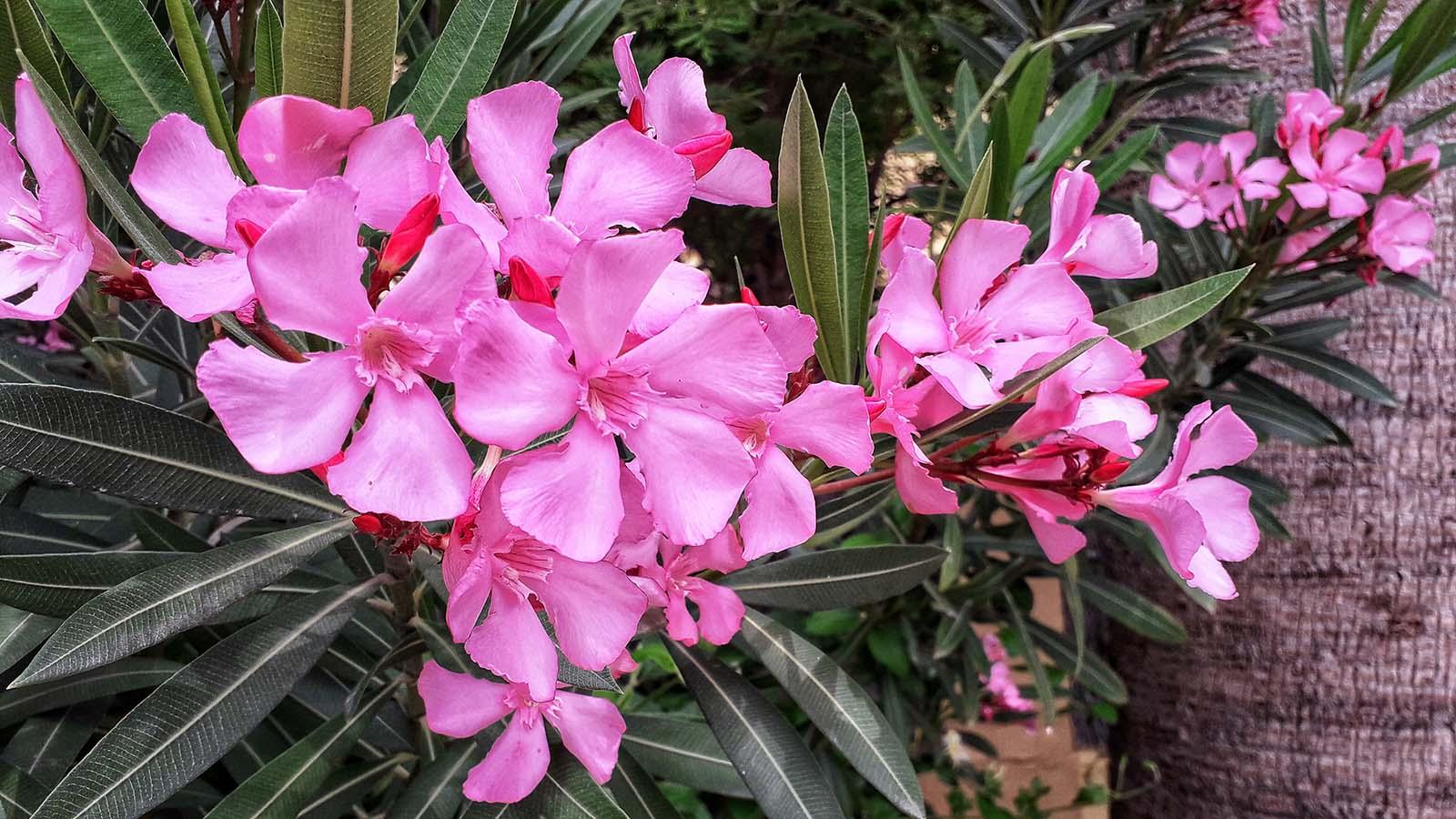
- 10 May 2024
Why is it in the News?
Two Kerala government-controlled temple boards, which together manage 2,500-odd temples in the state, have banned the use of oleander flowers (locally known as arali) in temple offerings after a 24-year-old woman died after accidentally chewing some oleander leaves.
What is Oleander?
- Nerium oleander, commonly known as oleander or rosebay, is a plant cultivated worldwide in tropical, subtropical, and temperate regions.
- Known for its drought tolerance, the shrub is often used for ornamental and landscaping purposes.
- In Kerala, the plant is known by the names of arali and kanaveeram and is grown along highways and beaches as a natural, green fencing.
- There are different varieties of oleander, each with a flower of a different colour.
How is oleander used in traditional medicine?
- The Ayurvedic Pharmacopoeia of India (API), a government document that describes the quality, purity, and strength of drugs used in Ayurveda, mentions oleander.
- According to API, an oil prepared from the root bark can be used to treat skin diseases.
- The plant has been “frequently described in Brihattrayi, Nighantus and other classical Ayurvedic texts.
- Charka [Charak Samhita] has prescribed the leaves of white-flowered variety externally for chronic and obstinate skin diseases of serious nature including leprosy.
How toxic is oleander?
- Even though it is prescribed in some ayurvedic formulations, oleander’s toxicity has also long been recognised across the world.
- The plant has been “exploited therapeutically and as an instrument of suicide since antiquity.
- Moreover, ingestion or inhalation of smoke from burning oleander can also be intoxicating.
- This is due to the properties of cardiac glycosides (a type of chemical) including oleandrin, folinerin, and digitoxigenin, which are present in all parts of the plant.
- Cardiac glycosides are steroidal compounds capable of exerting pharmacological effects on cardiac muscle.
- The primary therapeutic value of these glycosides lies in their ability to exert profound tonic effects on the heart.
- However, the therapeutic window is small and overdose/toxicity is frequently encountered when using these drugs.
- Effects of oleander toxicity include nausea, diarrhoea, vomiting, rashes, confusion, dizziness, irregular heartbeat, slow heartbeat, and, in extreme cases, death.
- Symptoms last for 1 to 3 days and may require a hospital stay.
World Migration Report 2024
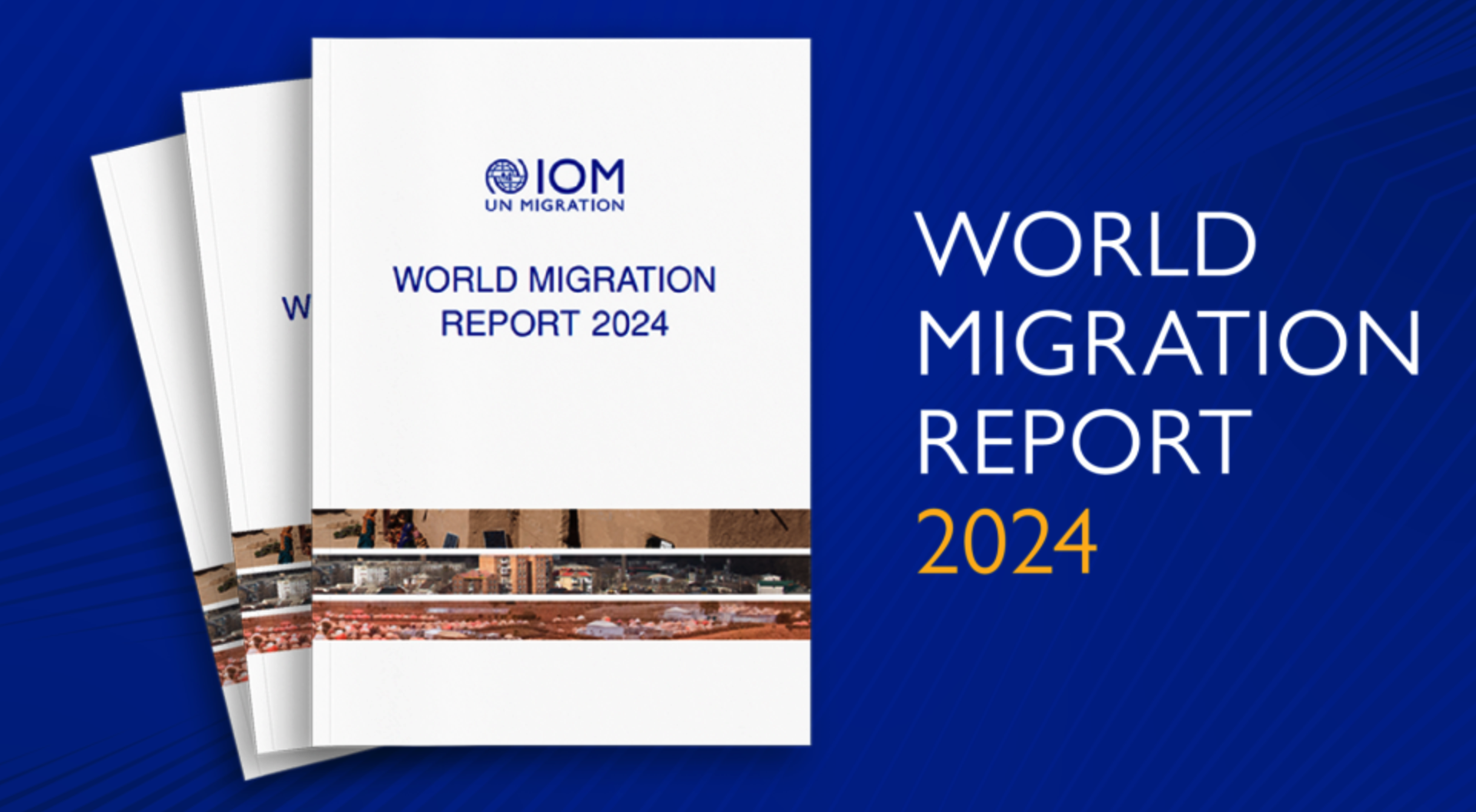
- 10 May 2024
Why is it in the News?
According to the recently released World Migration Report 2024, which is published by the International Organization for Migration (IOM), India has consistently been the top recipient of remittances globally.
Key Highlights of the World Migration Report 2024:
- Resilience Amidst COVID-19: Despite the challenges posed by the COVID-19 pandemic, international migration remains a vital driver of human development and economic progress.
- Notably, there has been a remarkable over 650 per cent surge in international remittances from 2000 to 2022, soaring from USD 128 billion to USD 831 billion.
- This growth defied predictions of a substantial decrease in remittances due to COVID-19.
- Remittances to Low and Middle-income Countries: Out of the total remittances, which amounted to USD 831 billion, a significant portion of USD 647 billion was sent by migrants to low and middle-income countries.
- These remittances play a crucial role in the GDPs of these nations, surpassing foreign direct investment globally.
- Persistent Challenges: While international migration continues to foster human development, the report underscores enduring challenges.
- The global population of international migrants has reached approximately 281 million, while the number of individuals displaced by conflict, violence, disasters, and other factors has surged to a record high of 117 million.
- Urgent action is imperative to address displacement crises effectively.
- Misinformation and Politicization: Despite the fact that most migration is regular, safe, and regionally focused, public discourse has been clouded by misinformation and politicization.
- It is essential to provide a clear and accurate depiction of migration dynamics to counteract this trend.
About the International Organization for Migration (IOM):
- Established in 1951, IOM, the UN Migration Agency, is the leading inter-governmental organization in the field of migration and works closely with governmental, intergovernmental and non-governmental partners.
- IOM works to help ensure the orderly and humane management of migration, promote international cooperation on migration issues, assist in the search for practical solutions to migration problems and provide humanitarian assistance to migrants in need, including refugees and internally displaced people.
- Membership: Currently, IOM counts 175 Member States and 8 states with Observer status.
- India joined as an IOM Member State on June 18, 2008.
- Headquarters: Situated in Geneva, Switzerland, IOM's headquarters serves as a hub for its global operations.
UN Counter-Terrorism Trust Fund
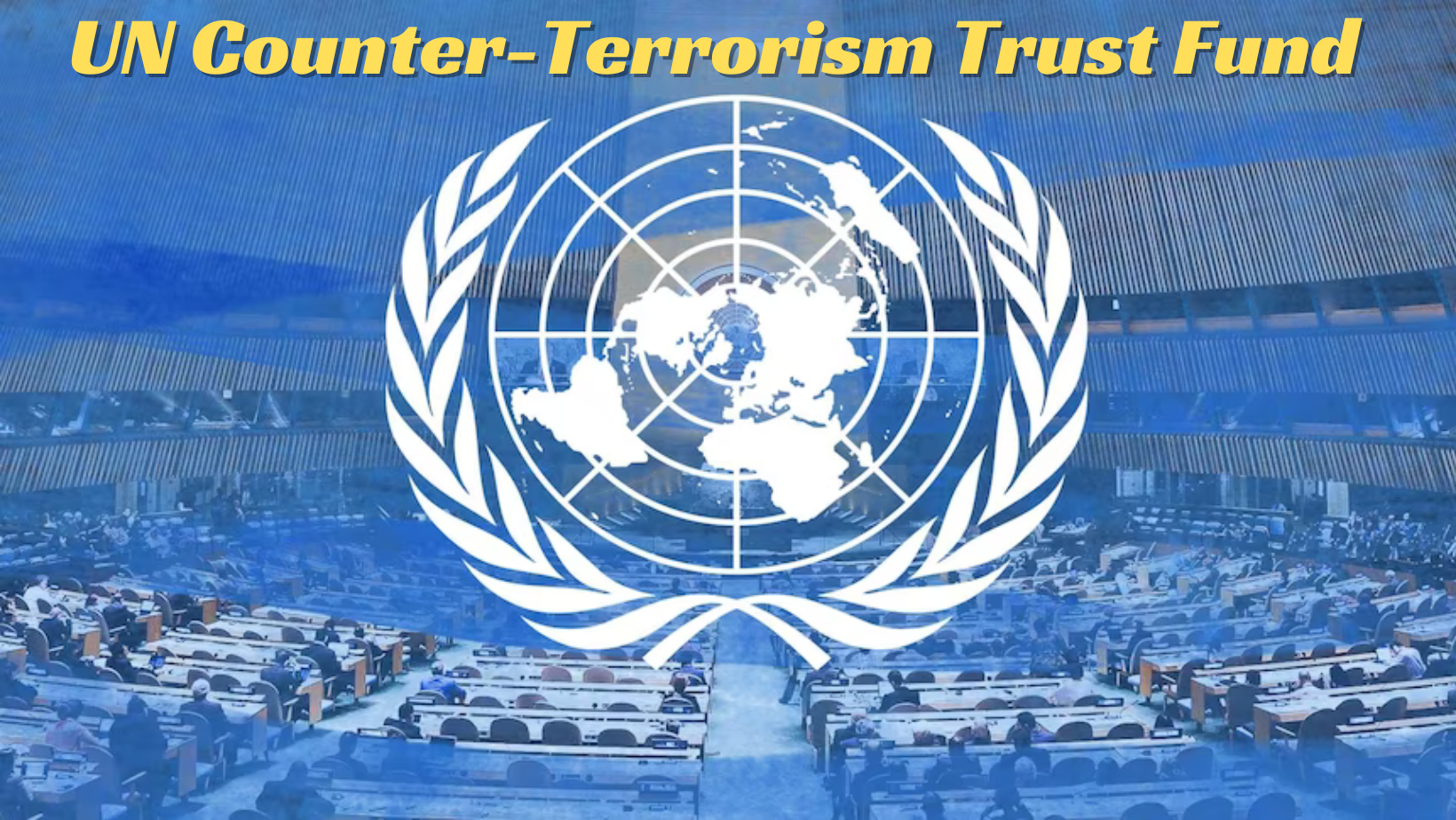
- 10 May 2024
Why is it in the News?
India recently contributed $5,00,000 to the UN Counter-Terrorism Trust Fund, reaffirming its unwavering commitment to the global fight against terrorism.
About the UN Counter-Terrorism Trust Fund:
- The United Nations Counter-Terrorism Trust Fund, founded in 2009 and transferred to the UN Office of Counter-Terrorism (UNOCT) in 2017, plays a crucial role in supporting global counter-terrorism initiatives.
- Contributions: Governments, inter-governmental and non-governmental organizations, private institutions, and individuals can all contribute to the fund.
- Contributions may be unearmarked or earmarked for specific global programmes or initiatives under UNOCT.
- India’s Contribution: India's contribution primarily supports UNOCT's global programmes, specifically focusing on Countering Financing of Terrorism (CFT) and the Countering Terrorist Travel Programme (CTTP).
- These initiatives aim to enhance the capacities of member states in eastern and southern Africa to combat terrorism financing and prevent the movement and travel of terrorists.
Key Facts about the UN Office of Counter-Terrorism (UNOCT):
- Established on June 15, 2017, through a UN General Assembly resolution, UNOCT is mandated to provide leadership and coordination on counter-terrorism efforts across the United Nations system.
- UNOCT's primary functions include enhancing collaboration among entities within the Global Counter-Terrorism Coordination Compact, ensuring a balanced implementation of the four pillars of the UN Global Counter-Terrorism Strategy, and strengthening capacity-building assistance for Member States.
- UNOCT also focuses on improving visibility, advocacy, and resource mobilization for UN counter-terrorism initiatives, while prioritizing the prevention of violent extremism within the broader counter-terrorism framework.
Maillard Reaction

- 10 May 2024
Why is it in the News?
The Maillard Reaction elucidates the intricate chemical processes responsible for the diverse array of flavours, aromas, and textures found in foods.
What is Maillard's Reaction?
- The Maillard reaction is a complex chain of chemical reactions that occurs when heat is exposed to amino acids and reducing sugars.
- The Maillard Reaction, named after the French scientist Louis-Camille Maillard, is a chemical phenomenon observed when amino acids, essential components of proteins, and sugars undergo heating.
- This reaction influences the taste, scent, and consistency of food items.
- It characterizes a non-enzymatic browning process in food, where colour alterations manifest without the involvement of enzymes.
How does the Maillard Reaction Induce Browning in Food?
- The Maillard reaction initiates a complex chemical process that yields various products. Chemist J.E. Hodge first delineated its steps in 1953 to simplify its understanding.
- An array of foods, from meats to bread to vegetables and coffee beans, contain both sugars and protein components.
- When subjected to heat, these sugars and proteins undergo a condensation reaction, forming an unstable compound known as Schiff base.
- This Schiff base undergoes rearrangement and dehydration, yielding diverse intermediate compounds.
- These intermediates further react to generate essential flavour components, enriching the food's aroma.
- Some intermediates undergo rearrangement, resulting in a more stable product. These products serve as vital precursors to melanoidins, pivotal in imparting the food's characteristic brown hue.
- Continued transformation, including condensation and polymerization, culminates in the formation of melanoidins—nitrogen-containing compounds responsible for the food's distinctive brown colouration.
What are the Factors Affecting the Reaction?
- The pace and magnitude of the Maillard reaction hinge on various elements, including temperature, acidity, moisture levels, and the composition of proteins and sugars in the food.
- Optimal Temperature: Temperatures typically fall within the range of 110 to 170 degrees Celsius, with levels surpassing this threshold potentially resulting in food burning and imparting bitter flavours.
- Elevated temperatures generally expedite the reaction, whereas acidic environments and moisture content can impede it.
- Hence, foods tend to brown more rapidly at higher temperatures, and dry items like bread crusts often acquire a rich brown hue during baking.
Non-market Economy Status

- 10 May 2024
Why is it in the News?
Vietnam has been pushing the President Joe Biden administration to quickly change its “non-market economy” classification to “market economy”, in a bid to avoid high taxes imposed by the US on the goods imported from the Southeastern country.
Why does Vietnam Want to Get the ‘Market Economy’ Status?
- Vietnam has argued that in recent years it has implemented enough economic reforms that get its name off the non-market economies list.
- The country does meet a number of criteria for the status to be changed.
- For instance, Vietnam allows foreign investment, wages are determined by free negotiations between workers and management, and most of the means of production are not owned by the state.
- The change in status will also help Vietnam get rid of the anti-dumping duties, making its products more competitive in the US market.
- Vietnam’s Center for WTO and International Trade has said that the method of calculating anti-dumping duties is flawed as it causes “the dumping margin to be pushed up very high” and does not actually reflect the situation of Vietnamese companies.
About Non-market Economy Status:
- Non-market economy status refers to a designation applied to countries by international trade authorities, particularly the World Trade Organization (WTO), based on their economic structure and policies.
- In a non-market economy, the allocation of resources, production decisions, and pricing mechanisms are predominantly influenced by the government rather than by market forces.
- This can include state ownership of key industries, government intervention in setting prices, and restrictions on foreign investment and trade.
- For trade purposes, countries classified as non-market economies may face different treatment in anti-dumping investigations and trade disputes.
- This designation can affect how trade regulations and tariffs are applied to goods originating from these countries.
- The US designates a country as a non-market economy based on several factors which are:
- If the country’s currency is convertible
- If wage rates are determined by free bargaining between labour and management
- If joint ventures or other foreign investments are allowed whether the means of production are owned by the state; and
- If the state controls the allocation of resources and price and output decisions.
- Other factors like human rights are also considered.
- The non-market economy label allows the US to impose “anti-dumping” duties on goods imported from designated countries.
Market Economies:
- Market economies operate based on the interactions between consumers and businesses, guided primarily by the law of supply and demand, rather than by central government policies.
- Theoretical Foundation: Developed by classical economists like Adam Smith, David Ricardo, and Jean-Baptiste Say, market economies emphasize the role of free markets in allocating resources efficiently.
- Modern Market Economies: Often referred to as mixed economies, modern market economies may still involve some government interventions, such as price-fixing, licensing, quotas, and industrial subsidies, but the majority of decisions are market-driven.
- Examples include countries like India, the USA, and the UK, where market forces play a significant role in shaping economic activities.
What is Anti-dumping Duty?
- An anti-dumping duty is a protectionist tariff that a domestic government imposes on foreign imports that it believes are priced below fair market value.
- In order to protect their respective economy, many countries impose duties on products they believe are being dumped in their national market; this is done with the rationale that these products have the potential to undercut local businesses and the local economy.
- While the intention of anti-dumping duties is to save domestic jobs, these tariffs can also lead to higher prices for domestic consumers.
- In the long term, anti-dumping duties can reduce the international competition of domestic companies producing similar goods.
- The World Trade Organization (WTO)–an international organization that deals with the rules of trade between nations–also operates a set of international trade rules, including the international regulation of anti-dumping measures.?
Antarctic Treaty Consultative Meeting (ATCM)

- 09 May 2024
Why is it in the News?
India is working with like-minded countries to promote regulated tourism in Antarctica as a steady increase in the number of tourists threatens to harm the fragile ecology in the White Continent.
About the Antarctic Treaty Consultative Meeting:
- The Antarctic Treaty Consultative Meeting (ATCM) is the annual meeting of the Parties to the 1959 Antarctic Treaty.
- The meeting serves as a platform for the exchange of information, discussion of common interests, and promotion of the principles and purposes of the Antarctic Treaty.
- The first ATCM was held in 1961, and initially occurred every other year, though the frequency has since increased.
- During the ATCM, representatives of the member countries address various issues related to Antarctica, such as environmental protection, scientific research, and tourism regulation.
- Key agenda items include strategic planning for sustainable management of Antarctica and its resources, policy, legal, and institutional operations, and biodiversity prospecting.
- The ATCM is organized by the Antarctic Treaty Secretariat, which is headquartered in Buenos Aires, Argentina, and was established in 2004.
- The Secretariat is responsible for facilitating communication and information exchange among the parties involved in the Antarctic Treaty System.
- In recent years, the ATCM has been hosted by various countries, with India hosting the 46th meeting in 2024.
- The Ministry of Earth Sciences (MoES), Government of India, through the National Centre for Polar and Ocean Research (NCPOR) and the Secretariat of the Antarctic Treaty will jointly organise the 46th Antarctic Treaty Consultative Meeting (ATCM 46) from 20 to 30 May 2024 at the Lulu Bolgatty International Convention Centre (LBICC) in Kochi, India.
What is the Antarctic Treaty?
- The Antarctic Treaty is an international agreement that aims to preserve and protect the Antarctic continent and its surrounding waters for scientific research and peaceful purposes.
- Signed on December 1, 1959, by 12 countries, the treaty came into effect on June 23, 1961.
- The treaty establishes Antarctica as a natural reserve devoted to scientific research, and it designates the area south of 60°S latitude as a region free of military and nuclear activities.
Key aspects of the treaty include:
-
- Freedom of scientific research and exploration, with cooperation among signatory nations
- Exchange of scientific information and personnel between treaty member nations
- Prohibition of military activities, such as the establishment of military bases or weapons testing
- Prohibition of nuclear explosions and disposal of radioactive waste
- Acknowledgement that no new territorial claims can be made on the continent
- Designation of Antarctica as a "Special Conservation Area" to protect its ecosystems and native species
- Currently, 54 countries have ratified the Antarctic Treaty, and 29 of these countries have Consultative Party status.
- Consultative Parties have the right to participate in decision-making processes related to the management and governance of the Antarctic region, while Non-Consultative Parties are encouraged to engage in scientific research and exchange information.
- On 12 September 1983, India became the fifteenth Consultative Member of the Antarctic Treaty.
- It participates in the decision-making process along with the other 28 Consultative Parties to the Antarctic Treaty.
- India’s first Antarctic research station, Dakshin Gangotri, was established in 1983.
- At present, India operates two year-round research stations: Maitri (1989) and Bharati (2012).
- The permanent research stations facilitate Indian Scientific Expeditions to Antarctica, which have been ongoing annually since 1981.
- In 2022, India enacted the Antarctic Act, reaffirming its commitment to the Antarctic Treaty.
Global Electricity Review 2024

- 09 May 2024
Why is it in the News?
In 2023, India overtook Japan to become the world’s third-highest producer of solar power, according to a report by international energy analytics agency Ember recently.
About Global Electricity Review 2024:
- The Global Electricity Review is published by Ember, a leading climate and energy think tank focused on accelerating the global transition to clean energy.
- The Global Electricity Review 2024 offers an in-depth analysis of the global electricity landscape in 2023.
- Drawing from a vast dataset encompassing 80 countries representing 92% of global electricity demand, and historical data from 215 countries, the report provides a robust and comprehensive examination of the current state of the electricity sector.
- The report's objective is to evaluate the progress made in transitioning the world's electricity systems towards cleaner, low-carbon sources, with a focus on limiting global temperature rise to 1.5 degrees Celsius.
Key Findings from the Report:
- Record Solar Energy Generation: Solar energy accounted for a record 5.5% of global electricity in 2023, solidifying its position as the fastest-growing electricity source for the nineteenth consecutive year.
- Renewables Surge: Renewable sources accounted for 30% of global electricity, marking a significant increase from 19% in 2000. Solar and wind power drove this expansion, with low-carbon sources contributing to nearly 40% of global electricity generation in 2023.
- Fossil Fuel Decline Forecast: The report predicts a decline in fossil fuel generation in 2024 and beyond, indicating a possible peak in global fossil fuel production in 2023.
- China's Dominance: China emerged as a significant contributor to renewable energy, accounting for 51% of the global solar generation increase and 60% of new global wind generation in 2023.
India-Specific Insights from the Report:
- India's Rise in Solar Generation: In 2023, India surpassed Japan to become the world's third-largest solar power generator, climbing from its ninth position in 2015.
- While India's installed solar capacity ranks fifth globally, its rapid growth demonstrates significant progress in harnessing solar energy.
- Share of Solar Energy in India's Electricity Mix: India generated 5.8% of its electricity from solar energy in 2023.
- This substantial contribution highlights the increasing role of solar power in meeting the country's energy demands.
- India's Contribution to Global Solar Growth: India experienced the world's fourth-largest surge in solar generation in 2023, adding 18 TWh to its capacity.
- Alongside China, the United States, and Brazil, India accounted for 75% of global solar growth in that year.
- Solar Generation Growth Since 2015: Global solar generation in 2023 was six times higher than in 2015, with India witnessing a remarkable seventeen-fold increase.
- India's Renewable Energy Target: India has committed to tripling its renewable capacity by 2030, aiming for 500 GW of installed renewable energy capacity.
- This ambitious target will require a significant acceleration in annual capacity additions.
AlphaFold 3
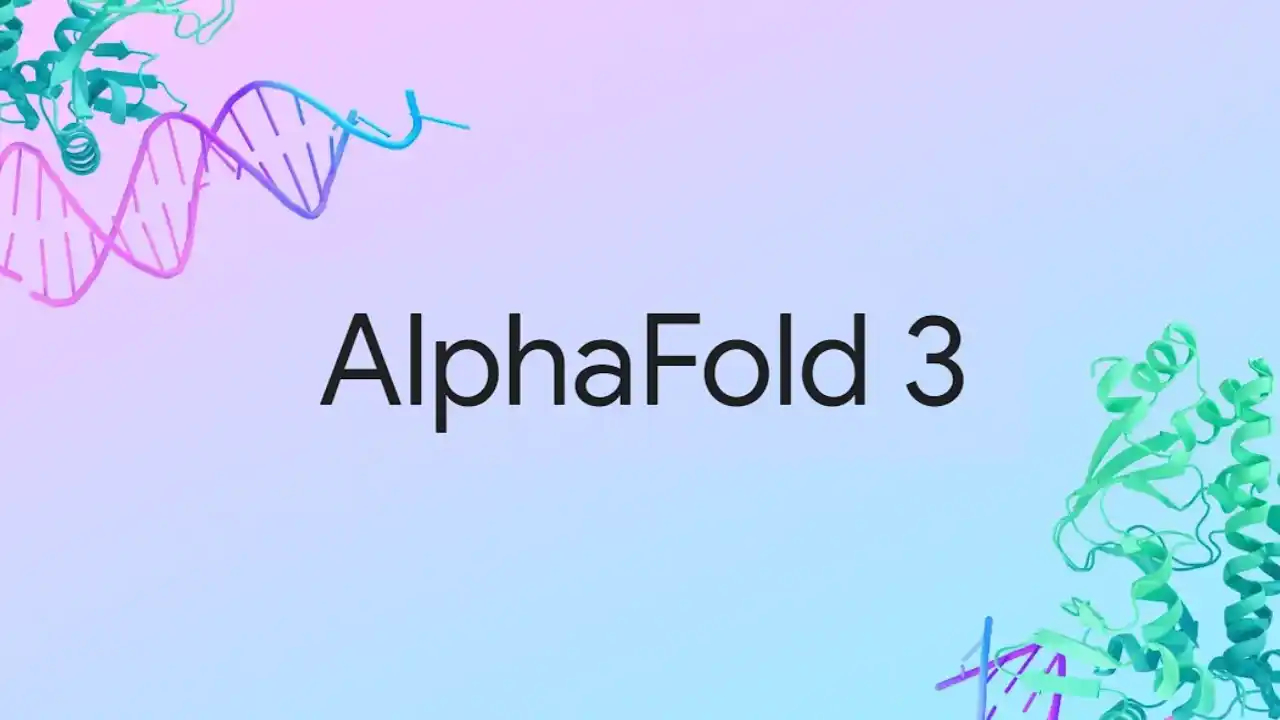
- 09 May 2024
Why is it in the News?
Google Deepmind has unveiled the third major version of its “AlphaFold” artificial intelligence model, designed to help scientists design drugs and target diseases more effectively.
About AlphaFold 3:
- AlphaFold 3 is a major advancement in artificial intelligence created by Google's DeepMind in collaboration with Isomorphic Labs.
- It's essentially a powerful tool that can predict the structures and interactions of various biological molecules such as:
- Predict structures of biomolecules: Unlike previous versions that focused on proteins, AlphaFold 3 can predict the 3D structure of a wide range of molecules, including DNA, RNA, and even small molecules like drugs (ligands).
- This is a significant leap in understanding how these molecules function.
- Model molecular interactions: AlphaFold 3 goes beyond just structure prediction.
- It can also model how these molecules interact with each other, providing valuable insights into cellular processes and disease mechanisms.
The potential applications of AlphaFold 3 are vast. It has the potential to revolutionize fields like:
- Drug discovery: By understanding how drugs interact with their targets, researchers can design more effective medications.
- Genomics research: AlphaFold 3 can help scientists understand the function of genes and how mutations can lead to disease.
- Materials science: By modelling the interactions between molecules, scientists can design new materials with specific properties.
- AlphaFold 3 is a significant breakthrough and is freely available for non-commercial use through AlphaFold Server.
- This makes this powerful tool accessible to researchers around the world, potentially accelerating scientific advancements.
Widal Blood Test
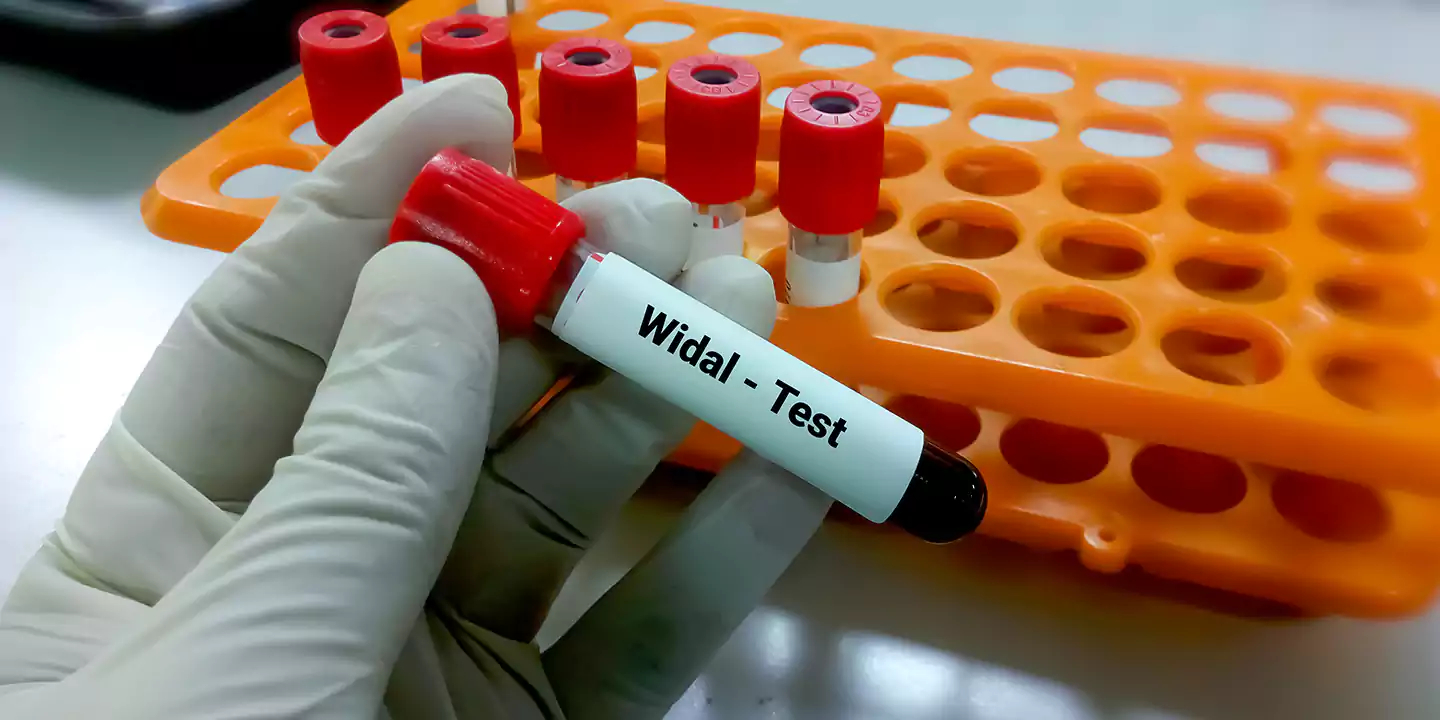
- 09 May 2024
Why is it in the News?
The Widal test's tendency to produce inaccurate results is clouding the understanding of India's typhoid burden, leading to increased costs, and exacerbating antimicrobial resistance risks.
What is the Widal Blood Test?
- A Widal test is a serological diagnostic test for typhoid fever.
- It helps evaluate the level of antibodies produced by the body in response to the Salmonella bacterial infection that causes typhoid fever in patients.
- Widal blood test is also known as a typhoid blood test report, as it is widely used for diagnosing typhoid fever.
- The symptoms of typhoid fever may be similar to those of other diseases, which can make the diagnosis of typhoid difficult without proper testing.
- Typhoid fever is a severe illness caused by a bacterium called Salmonella Typhi.
- This bacterium affects the gastrointestinal system and causes a range of symptoms such as high fever, diarrhoea or constipation, headache, abdominal pain, fatigue, weight loss, and red spots.
- The bacteria usually enter the body through contaminated food or water.
- Typhoid requires prompt treatment to prevent further complications such as severe intestinal perforation or bleeding.
- The Widal blood test is a quick and easy serological test that can help confirm or rule out whether a fever is due to a typhoid infection.
- Typically, typhoid symptoms appear within 6 to 30 days of exposure to the bacterial infection.
- The Widal test is designed to detect antibodies against O (somatic) and H (flagellar) antigens that cause the infection and typhoid fever.
- Infection through these antigens produces specific antibodies in response.
- The Widal blood test analyses the interaction between these two antigens and the antibodies produced in the patient's body through a blood sample.
- Detecting the presence of these antibodies in the Widal blood test indicates a bacterial infection.
- However, it has several limitations and has been phased out in many countries due to its potential for inaccuracy.
- The World Health Organization (WHO) advises against relying heavily on the Widal Test because various factors can influence its results.
- For example, a single positive result does not definitively confirm an active typhoid infection and a negative result does not necessarily rule it out.
- Additionally, obtaining an accurate diagnosis requires testing at least two serum samples taken 7-14 days apart, which can be time-consuming and often impractical.
- In areas with a continuous high burden of typhoid, baseline antibody levels may already be elevated, complicating the interpretation of results without knowing the appropriate cut-off values.
- Furthermore, cross-reactivity with antibodies produced against other infections or vaccinations can lead to false positives.
- Prior antibiotic therapy can also impact antibody levels, resulting in false negatives.
- Despite its accessibility and historical significance, the Widal Test's limitations emphasize the need for more accurate and reliable diagnostic methods for typhoid fever.
African Union (AU)
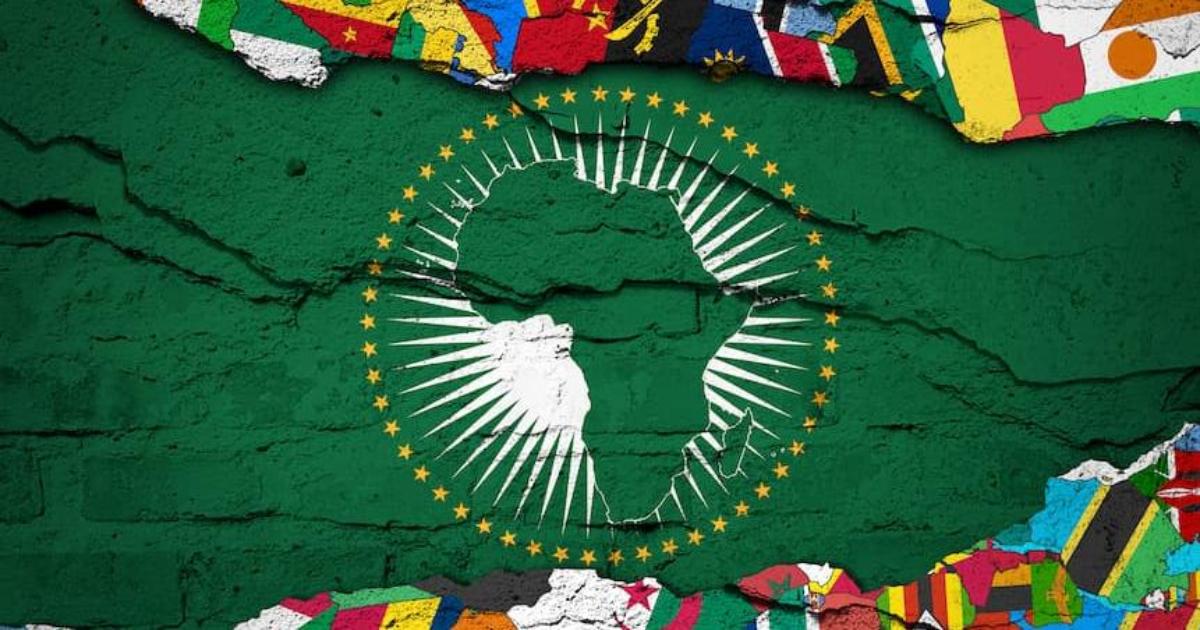
- 09 May 2024
Why is it in the News?
The African Union condemned Wednesday the Israeli military's moves into southern Gaza's Rafah, calling for the international community to stop "this deadly escalation" of the war.
About the African Union (AU):
- The African Union (AU) is a continental organization comprising 55 member states, representing the countries of the African continent.
- Established in 2002, it succeeded the Organization of African Unity (OAU), which was founded in 1963.
- The primary objective of the AU is to promote unity, cooperation, and development among African nations while advancing the continent's global interests.
- Guided by a vision of "An Integrated, Prosperous, and Peaceful Africa, driven by its own citizens and representing a dynamic force in the global arena," the AU plays a critical role in fostering collaboration and progress across the continent.
- To realize its objectives and attain the Pan-African Vision of an integrated, prosperous, and peaceful Africa, the AU developed Agenda 2063, a strategic framework for Africa's long-term socio-economic and integrative transformation.
- This ambitious agenda emphasizes the importance of collaboration and support for African-led initiatives to ensure the aspirations of the African people are achieved.
- The African Union is headquartered in Addis Ababa, Ethiopia, where it functions as a central hub for decision-making and policy development.
The African Union (AU) operates through a structured framework aimed at efficient decision-making and implementation. Its key components include:
- Assembly: Comprising the heads of state and government of member countries, the Assembly serves as the highest decision-making body within the AU.
- Executive Council: Comprised of foreign affairs ministers, the Executive Council focuses on policy matters and offers recommendations to the Assembly.
- AU Commission: Headquartered in Addis Ababa, the AU Commission serves as the administrative arm responsible for executing the decisions of both the Assembly and the Executive Council.
- Peace and Security Council: This council is entrusted with the vital task of preserving peace and security across the continent, addressing conflicts and promoting stability.
- Additionally, the AU structure fosters the active involvement of African citizens and civil society through institutions such as the Pan-African Parliament and the Economic, Social & Cultural Council (ECOSOCC), ensuring broader participation and representation in the union's endeavours.
West Nile Fever
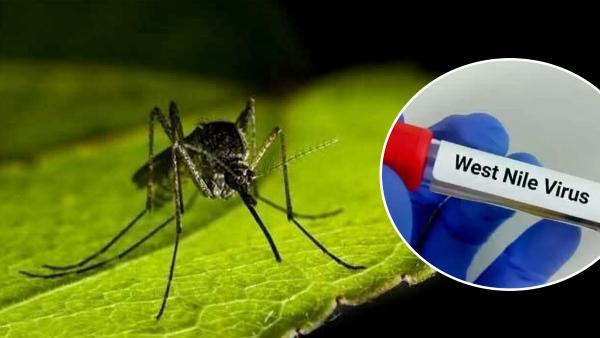
- 08 May 2024
Why is it in the News?
The Kerala health department has issued an alert after cases of West Nile fever were reported in Malappuram, Kozhikode and Thrissur districts.
What is West Nile Fever?
- West Nile Fever is a viral infection transmitted primarily by mosquitoes, caused by the West Nile virus (WNV).
- The virus is commonly found in Africa, Europe, the Middle East, North America, and West Asia.
- Most people infected with the West Nile virus don’t experience any symptoms.
- About 20% of people who become infected with WNV will develop West Nile fever.
- However, for some, particularly the elderly or those with weakened immune systems, symptoms can range from mild flu-like symptoms such as fever, headache, body aches, fatigue etc.
- Transmission occurs when mosquitoes become infected after feeding on infected birds, and then bite humans.
Why is it named West Nile Fever?
- West Nile Virus was first isolated in a woman in the West Nile district of Uganda in 1937.
- According to the World Health Organisation (WHO), It was identified in birds in the Nile Delta region in 1953,
Symptoms:
- West Nile Fever can manifest with a range of symptoms, although the majority of individuals infected with the West Nile virus (WNV) remain asymptomatic.
- For those who do exhibit symptoms, they typically appear within 2 to 14 days after being bitten by an infected mosquito.
- Common symptoms include fever, headache, body aches, and fatigue, which are similar to those of the flu.
- Additionally, individuals may experience nausea, vomiting, diarrhoea, and swollen lymph glands.
- Skin rash and swollen joints are also reported in some cases.
- In more severe instances, West Nile Fever can lead to neurological complications.
- These may include meningitis (inflammation of the membranes surrounding the brain and spinal cord) or encephalitis (inflammation of the brain).
- Signs of neurological involvement may include severe headache, high fever, neck stiffness, disorientation, tremors, seizures, paralysis, and coma.
Treatment:
- While there is no specific treatment for West Nile Fever, supportive care such as pain management, fluids, and rest can help alleviate symptoms and aid recovery.
- Prompt medical attention is crucial, especially for those experiencing neurological symptoms, as these can be life-threatening.
Leber Congenital Amaurosis (LCA)

- 08 May 2024
Why is it in the News?
Scientists utilized a CRISPR-Cas9 tool to restore vision in individuals, including adults and children, afflicted with congenital blindness termed Leber congenital amaurosis (LCA).
What is Leber Congenital Amaurosis?
- Leber Congenital Amaurosis (LCA) is a rare genetic eye disorder where affected infants experience severe vision loss or blindness at birth.
- The condition results from the impaired function of light-gathering cells (rods and cones) in the retina.
Prevalence and Cause:
- LCA affects approximately one in 40,000 people.
- It is caused by a gene mutation that disrupts the proper function of the CEP290 protein, which is critical for vision.
Recent Development:
- Scientists have employed CRISPR-Cas9 gene editing technology to develop a novel therapy called EDIT-101.
- In a clinical trial called "BRILLIANCE," participants received a single dose of EDIT-101.
- The treatment involves cutting out the mutation in the CEP290 gene and replacing it with healthy DNA, restoring the normal function of the CEP290 protein and allowing the retina to detect light.
- This groundbreaking approach offers a promising treatment for individuals affected by LCA.
What is CRISPR-Cas9?
- CRISPR-Cas9 is a unique technology that enables geneticists and medical researchers to edit parts of the genome by removing, adding or altering sections of the DNA sequence.
- It is currently the simplest, most versatile and precise method of genetic manipulation.
How does CRISPR-Cas9 work?
- The CRISPR-Cas9 system operates through two primary molecules:
- Cas9, an enzyme often likened to "molecular scissors," which can precisely cut both strands of DNA at a designated location in the genome.
- Guide RNA (gRNA), a segment of RNA containing a specific pre-designed sequence (about 20 bases long) within a longer RNA scaffold.
- The scaffold binds to DNA, while the pre-designed sequence guides Cas9 to the intended genomic location, ensuring accurate DNA cleavage.
- The guide RNA is tailored to identify and bind to a particular sequence in the DNA, with RNA bases that complement those of the target DNA sequence.
- This specificity ensures that the guide RNA binds solely to the target sequence and avoids other genomic regions.
- Once bound, Cas9 cuts across both DNA strands at the targeted location.
- Subsequently, the cell's repair mechanisms recognize the DNA damage and attempt to rectify it.
- Scientists exploit this DNA repair process to introduce alterations to one or more genes within the genome of a selected cell.
Interactive Voice Response System (IVRS)

- 08 May 2024
Why is it in the News?
Political parties are currently reaching out to voters through Interactive Voice Response System (IVRS) calls on a daily basis.
What is an Interactive Voice Response System?
- Interactive voice response is a technology that allows telephone users to interact with a computer-operated telephone system through the use of voice and DTMF tones input with a keypad.
- IVR or Interactive Voice Response software accepts caller input, either voice or touch-tone, in response to pre-recorded prompts, and provides programmed responses.
- The responses can range from simple call routing to complex actions involving several external systems and data points depending on the software’s sophistication.
- The name, “interactive voice response” is derived from the caller responding to interactive options, offered by a pre-recorded voice.
Functionality:
- IVRS is powered by pre-recorded messaging or text-to-speech technology.
- It features a dual-tone multi-frequency (DTMF) interface.
Types:
- Touch-tone replacement: This system prompts callers to use a touch-tone keypad selection to access information.
- Directed dialogue: Provides specific verbal prompts to callers depending on their inquiry.
- Natural language: Employs speech recognition to better understand user requests.
- Industry Application: IVRS technology has been widely used across multiple industries, including banking, customer service, education, healthcare, and travel.
Benefits:
- Increased customer satisfaction by providing a streamlined experience.
- Improved contact centre operations and KPIs through call volume management.
- Reduced hold times during high call volume periods.
- Cost-effectiveness by reducing the need for customer service representatives.
Indian Ocean Dipole (IOD)
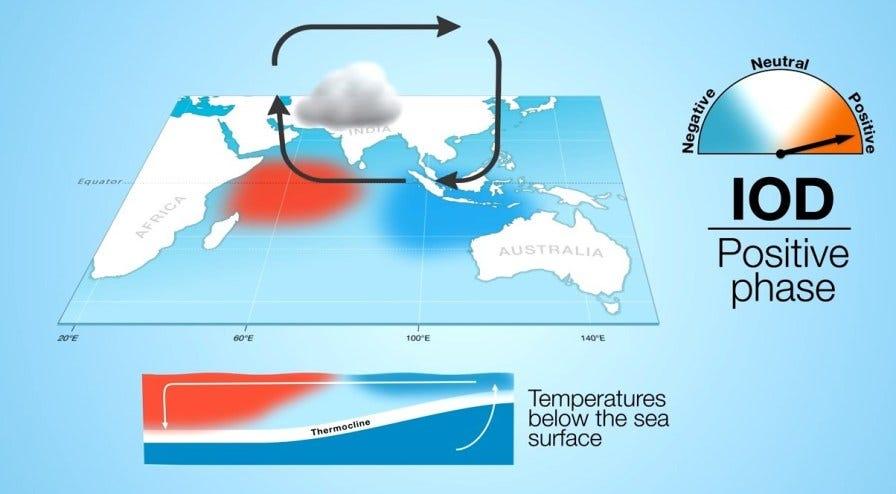
- 08 May 2024
Why is it in the News?
The Positive Indian Ocean Dipole (IOD), also known as the Indian Nino, could potentially resurface for the second consecutive year during the latter part of 2024.
What is the Indian Ocean Dipole (IOD)?
- The Indian Ocean Dipole (IOD) is defined by the difference in the sea surface temperature between the two equatorial areas of the Indian Ocean – a western pole near the Arabian Sea (in western Indian Ocean) and an eastern pole closer to the Bay of Bengal (in eastern Indian Ocean).
- The IOD affects the climate of Southeast Asia, Australia and other countries that surround the Indian Ocean Basin.
- The Indian Monsoon is invariably influenced by the IOD.
- IOD is simply the periodic oscillation of sea surface temperatures, from ‘positive’ to ‘neutral’ and then ‘negative’ phases.
- If the sea surface temperature of the western end rises above normal (0.4°C) and becomes warmer than the eastern end, it leads to a positive IOD.
- This condition is favourable for the Indian Monsoon as it causes a kind of barrier in the eastern Indian Ocean and all the southwesterly winds blow towards the Indian sub-continent.
- Accordingly, the waters in the eastern Indian Ocean cool down, which tends to cause droughts in adjacent land areas of Indonesia and Australia.
- Conversely, during a negative IOD period, the waters of the tropical eastern Indian Ocean are warmer than water in the tropical western Indian Ocean.
- This results in increased rainfall over parts of southern Australia.
Effects on India:
- A positive IOD can boost India's southwest monsoon performance depending on its development timing.
- Example: In 2019, a strong IOD event improved a 30% rainfall deficit during the late monsoon season.
- Benefits for agriculture through recharging water sources and reservoirs.
- The development of IOD likely benefits India's agricultural sector, particularly in areas with precarious water storage levels.
Difference between El Nino and IOD:
- The Indian Ocean Dipole (IOD) and the El Nino are independent climatic phenomena but often co-occur.
- Both IOD and El Nino result in changes in global wind patterns. To know about the change of wind patterns, click here.
- However, the cycle of IOD is shorter, while El Nino condition could last for even two years.
- IOD commences in the month of May and ends with the withdrawal of the Southwest Monsoon in the Indian sub-continent.
LockBit Ransomware

- 08 May 2024
Why is it in the News?
The U.S. Department of Justice has indicted Russian national Dimitry Yuryevich Khoroshev, 31, and announced a $10 million reward for any information leading to his apprehension.
What is LockBit Ransomware?
- LockBit is a type of ransomware involving financial payment in return for decryption.
- It mainly targets businesses and government agencies rather than consumers.
- Its potential targets are the institutions that would be hampered by the inconvenience and have sufficient means to pay a large payment.
- It is developed and operated by a cybercriminal group known as LockBit, which offers ransomware-as-a-service (RaaS) to other malicious actors.
- Formerly known as ABCD ransomware, has evolved into a distinct danger within the spectrum of extortion tools.
- It carries out its attacks mainly via email attachments.
- The cyber assaults through LockBit ransomware can be traced back to September 2019, when it got its first nickname, “abcd virus.”
- The nickname was derived from the filename used when encrypting a victim’s data.
- They are considered one of the most prolific and aggressive organizations in the industry, and their actions are raising anxiety among security professionals worldwide.
How LockBit Ransomware Operates?
- Exploitation: LockBit ransomware breaches systems through social engineering tactics like phishing or brute force attacks on intranet servers.
- Initial breach probes may take only a few days.
- Infiltration: Once inside a network, LockBit uses post-exploitation techniques to escalate privileges and move laterally to assess targets.
- It disables security programs and infrastructure for recovery, making independent recovery difficult.
- Deployment: LockBit spreads across the network, encrypting system files and leaving ransom notes in each folder.
- Payment of the ransom is often seen as the only viable option for victims to regain access to their systems.
How Does LockBit Ransomware Spread?
- LockBit typically spreads via phishing emails with malicious attachments or through drive-by downloading from infected websites.
- It utilizes common Windows tools like Windows PowerShell or Server Message Block, making it challenging for endpoint security systems to detect.
- Additionally, it disguises its encrypting executable file as a common PNG picture file, further evading system defenses.
Takes ransom in Bitcoins:
- LockBit hackers use so-called ransomware to infiltrate systems and hold them hostage.
- They demand payment to unlock the computers they’ve compromised and often threaten to leak stolen data to pressure victims to pay.
- The group typically demands ransom payments in Bitcoin.
Carbon Farming
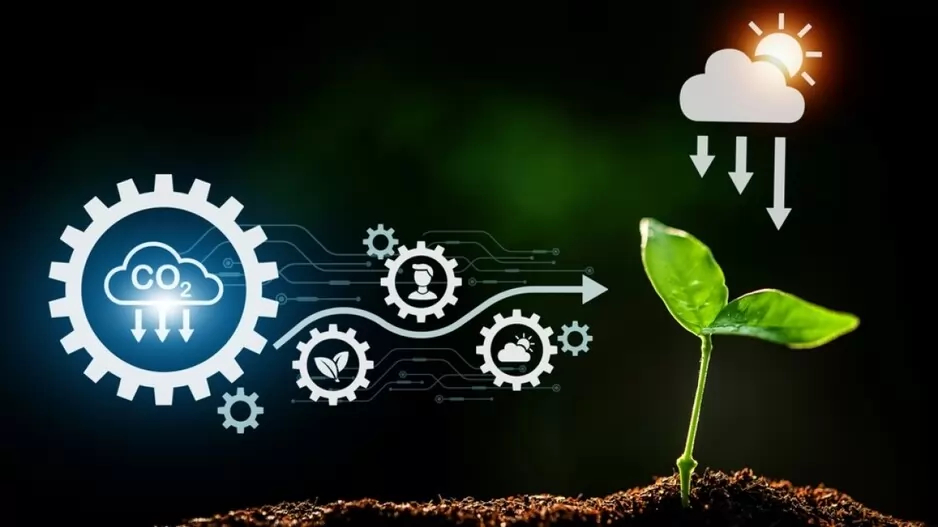
- 07 May 2024
Why is it in the News?
Carbon farming offers a versatile solution applicable across diverse agro-climatic regions, simultaneously addressing issues such as soil degradation, water scarcity, and climate variability challenges.
What is Carbon Farming?
- Carbon farming refers to a set of agricultural practices designed to sequester carbon dioxide from the atmosphere and store it in the soil.
- The primary goal is to mitigate climate change by enhancing carbon capture and reducing greenhouse gas emissions.
- Through strategic land management, farmers can play a crucial role in offsetting carbon emissions and promoting environmental sustainability.
Principles of Carbon Farming:
- Carbon Sequestration: The core principle involves capturing carbon dioxide through photosynthesis and storing it in the soil.
- This is achieved by promoting the growth of plants and trees that absorb carbon from the atmosphere.
- Reduced Emissions: Carbon farming emphasizes practices that minimize greenhouse gas emissions.
- This includes optimizing fertilizer use, adopting no-till farming, and reducing reliance on synthetic inputs.
- Biodiversity Conservation: Integrating diverse crops and promoting agroforestry practices contribute to biodiversity conservation.
- This enhances ecosystem resilience and supports sustainable agricultural systems.
- Soil Health: Improving soil health is fundamental to carbon farming.
- Practices like cover cropping and rotational grazing not only sequester carbon but also enhance soil structure, water retention, and nutrient cycling.
Benefits of Carbon Farming:
- Climate Change Mitigation: The primary benefit is the significant contribution to mitigating climate change.
- Carbon farming helps offset carbon emissions, acting as a natural solution to reduce the concentration of greenhouse gases in the atmosphere.
- Improved Soil Fertility: The focus on soil health leads to increased fertility and productivity.
- Healthy soils contribute to better crop yields, reduced erosion, and enhanced resilience to climate-related challenges.
- Biodiversity Enhancement: Carbon farming practices support biodiversity by creating habitats for diverse plant and animal species.
- This contributes to ecological balance and resilience in the face of environmental changes.
- Economic Opportunities: Farmers engaged in carbon farming may access new revenue streams through carbon offset programs.
- These initiatives incentivize sustainable practices and provide financial benefits to farmers.
Challenges in Carbon Farming:
- Transition Period: Implementing carbon farming practices often requires a transition period, during which farmers may face initial costs and adjustments to new techniques. Financial support and education are crucial during this phase.
- Market Access: Connecting farmers to carbon offset markets can be challenging. Developing transparent and accessible markets for carbon credits is essential for the success of carbon farming initiatives.
- Education and Awareness: Many farmers may not be familiar with carbon farming practices.
- Education and awareness programs are necessary to disseminate information, build capacity, and encourage widespread adoption.
Conclusion
Carbon farming is a dynamic and evolving approach to agriculture that holds immense promise in the fight against climate change. By understanding its principles, benefits, and challenges, farmers and stakeholders can actively contribute to a more sustainable and resilient future. The key terms associated with carbon farming provide a foundation for navigating this innovative landscape and embracing practices that benefit both the environment and agriculture.
Wildlife Corridors
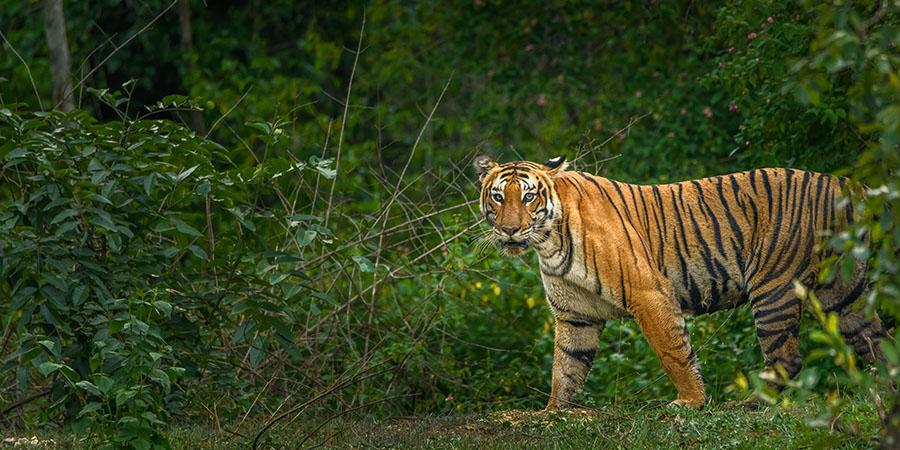
- 07 May 2024
Why is it in the News?
To revive the population of tigers in Sahyadri Tiger Reserve (STR) — the lone tiger reserve in the Maharashtra western region — the state’s forest department will soon translocate tigers from Tadoba-Andhari Tiger Reserve (TATR) in Chandrapur district.
What are Wildlife Corridors?
- Corridors are essentially habitats and pathways that connect wildlife populations, which are fragmented by human settlements and infrastructure works.
- They are crucial for the long-term survival of the tiger population as they help guard against localised extinctions and ensure the exchange of gene flow, which helps in population diversity.
- Tigers have large home ranges and often travel long distances in search of mates and food.
- In doing so, they make use of these wildlife corridors and cross several human-dominated landscapes.
- The role played by corridors in conservation is a well-established one and has been incorporated into policy decisions as well.
- Mitigation measures such as underpasses, and wildlife crossings are now routinely ordered to safeguard tigers and other wildlife in projects where linear infrastructure projects fragment habitats.
- Litigation, advocacy, and policymaking have all contributed to this.
- The construction of an overpass on the National Highway- 7 to protect the migratory route of tigers underneath between the Kanha and Pench Tiger Reserves is one instance of embedding mitigation measures to protect corridors.
- Tigers routinely use the space beneath the elevated stretch of the highway to cross the forests.
- In 2014-15, the National Tiger Conservation Authority and Wildlife Institute of India (WII) mapped 32 major tiger corridors in the country across four broad tiger landscapes – Shivalik Hills and Gangetic plains, Central India and Eastern Ghats, Western Ghats, and the North East Hills.
Is Translocation the Best Approach for Tiger Recovery?
- Tiger translocation projects have been undertaken in India since 2008.
- Sariska Tiger Reserve, in 2008, and Panna Tiger Reserve, in 2009, have witnessed successful tiger reintroduction and translocation projects.
- There have also been failures and shelving of reintroduction plans, like in the case of Satkosia Tiger Reserve in Odisha, which was the country’s first inter-state translocation project.
- However, before choosing translocation, other available options such as habitat improvement, prey augmentation, strengthening of tiger corridors, and vigilance improvement should be assessed.
- Even after translocations, one must ensure that corridors are strengthened and they are free of major disturbances.
- This will ensure the dispersal of tigers to other source population areas.
Sikhs for Justice (SFJ)
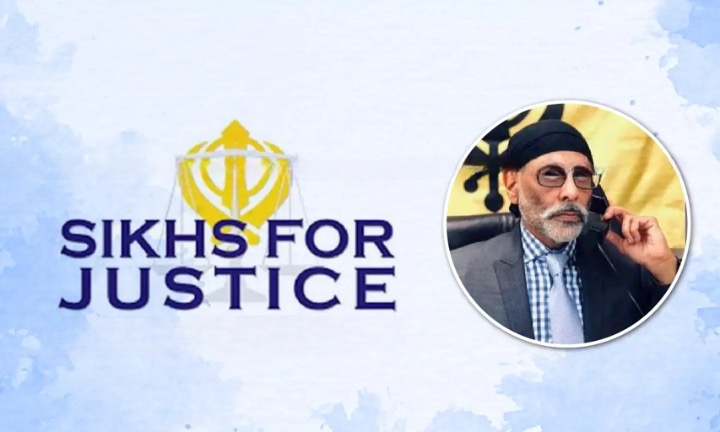
- 07 May 2024
Why is it in the News?
Delhi LG V K Saxena recently recommended a (NIA) probe against jailed Delhi CM Arvind Kejriwal for allegedly receiving political funding from Sikhs for Justice (SFJ), a New York-based pro-Khalistan organisation that is banned in India.
What is Sikhs for Justice (SfJ)?
- Sikhs for Justice (SFJ) formed in 2007, is a US-based group seeking a separate homeland for Sikhs, a “Khalistan” in Punjab.
- Its founder Gurpatwant Singh Pannun, a law graduate from Panjab University and currently an attorney at law in the US, is the face of SFJ and its legal adviser.
- Panun had launched the secessionist Sikh Referendum 2020 campaign, an initiative that eventually became defunct.
- He was among the nine individuals designated as “terrorists” by the Union Ministry of Home Affairs.
- ‘Referendum 2020’, claimed it wanted to “liberate Punjab from Indian occupation”.
- In Pannun’s words, “SFJ in its London Declaration (in August 2018) had announced to hold the first-ever non-binding referendum among the global Sikh community on the question of secession from India and re-establishing Punjab as an independent country.”
Banned in India:
- India refers to Gurpatwant Singh Pannun as a terrorist, and has banned SFJ under the Unlawful Activities (Prevention) Act, 1967.
- The Home Ministry’s 2019 notification issuing the ban says: “In the garb of the so-called referendum for Sikhs, SFJ is actually espousing secessionism and militant ideology in Punjab, while operating from safe havens on foreign soils and actively supported by inimical forces in other countries.”
- Currently, almost a dozen cases are registered against Pannun and SFJ in India.
FLiRT
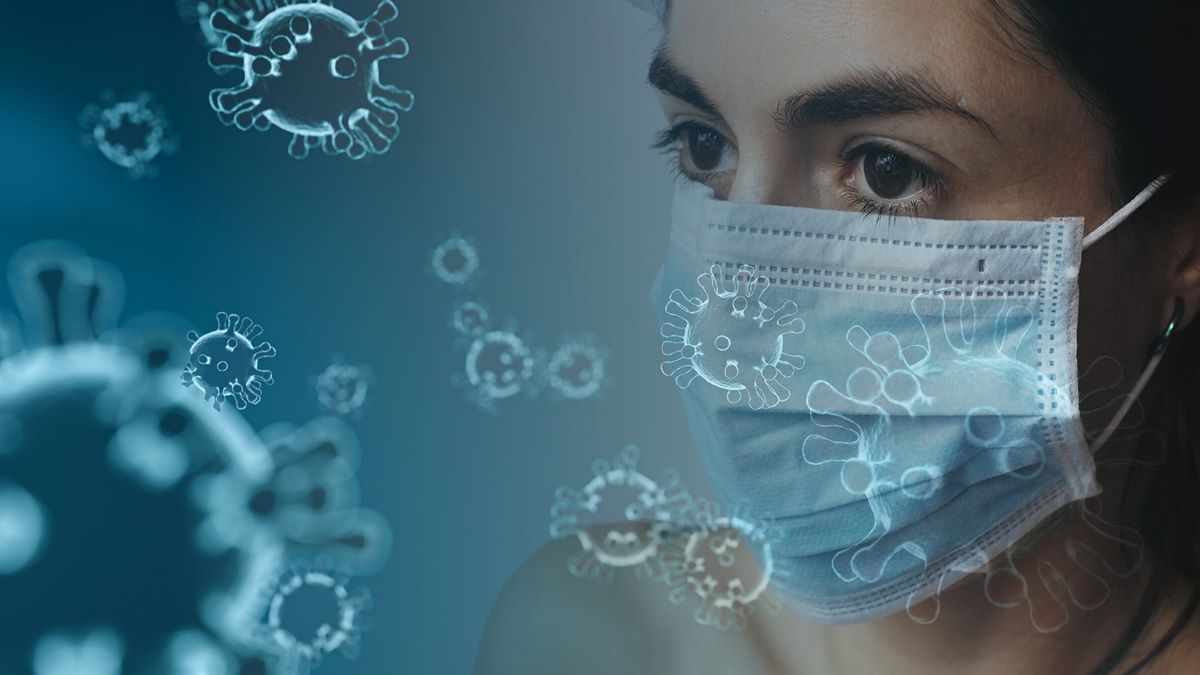
- 07 May 2024
Why is it in the News?
There’s a new group of COVID-19 variants within the Omicron JN.1 lineage “which have demonstrated increased transmissibility and immune resistance” recently detected in the United States.
What is the New Covid-19 Variant FLiRT?
- FLiRT variants are sub-lineages of the Omicron COVID-19 variant.
- Detected in the United States, this variant group has been named Severe Acute Respiratory Syndrome Coronavirus 2 (SARS-CoV-2) FLiRT variant KP.2 and is a spinoff of JN.1.11.1.
- According to the US Centers for Disease Control and Prevention (CDC), FLiRT has led to increased hospitalisation rates, although it has not significantly raised mortality rates.
- Its primary impact is on the upper respiratory tract.
- The rapid emergence and diversification of the JN.1 variant and its descendant, KP.2, which shows significant alterations in spike (S) protein structure and increased resistance to existing vaccines, underscore the necessity for further research to understand the implications for public health and vaccine development.
Where does the name come from?
- The letters of FLiRT variation are derived from the technical names of the mutations:
- F and L are included in one, and R and T which is included in another.
What are the emerging symptoms?
- Symptoms associated with FLiRT are similar to those of other Omicron subvariants, including sore throat, cough, fatigue, nasal congestion, runny nose, headache, muscle aches, fever, and possible loss of taste and smell
Transmissibility:
- This variant is highly transmissible and can impact immunity and overall health.
- This variant spreads via respiratory droplets of the person to others or touching infected surfaces such as faucets, furniture, elevator buttons, and kitchen countertops, or coming in close contact with the person who is sick with this variant
Is there a concern for India?
- Currently, there are no reported cases of FLiRT variants in India, and our immunity is acquired.
- Thus far, no new vaccine is recommended.
Fusobacterium nucleatum
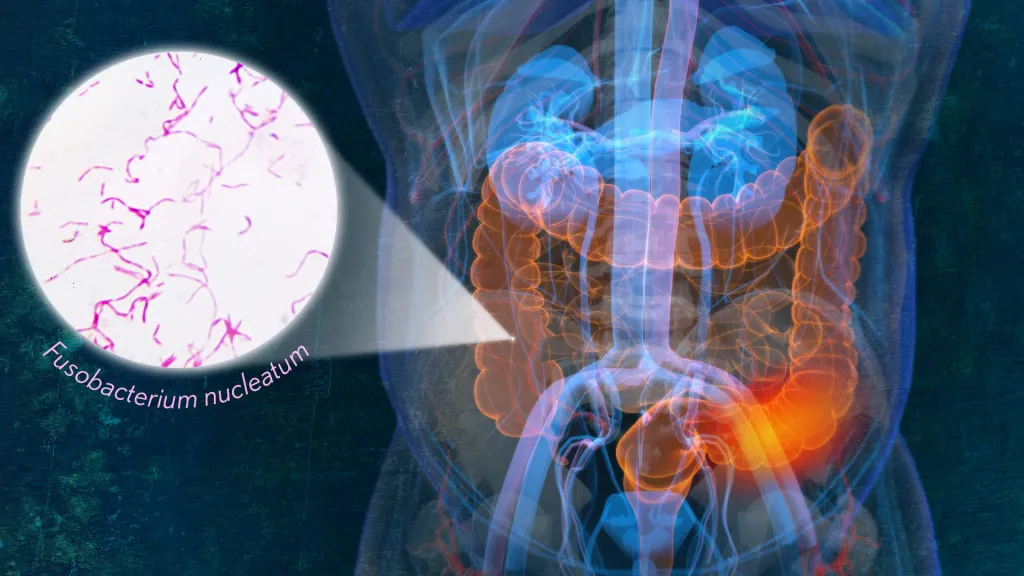
- 07 May 2024
Why is it in the News?
In a recent study, researchers have discovered a unique subtype of Fusobacterium nucleatum that is more prevalent in colorectal cancer (CRC) tumours.
What is Fusobacterium nucleatum?
- Fusobacterium nucleatum is a species of bacteria commonly found in the human mouth and gastrointestinal tract.
- It is a Gram-negative anaerobic bacterium, meaning it does not require oxygen to survive.
- While it is a normal component of the oral microbiota, Fusobacterium nucleatum can also act as an opportunistic pathogen, potentially causing infections in various parts of the body.
- In recent research, specific subtypes of Fusobacterium nucleatum have been associated with colorectal cancer tumours, highlighting its potential role in certain diseases.
- It plays a role in periodontal disease and is often associated with various human diseases and infections, including preterm births.
- F. nucleatum can aggregate with other bacteria species in the oral cavity and is considered a key component of periodontal plaque due to its abundance.
- Detection of F. nucleatum typically involves surgical tissue retrieval, faecal tests, or blood tests in patients showing symptoms, and early detection is crucial for preventing further disease progression.
Highlights of the Recent Research:
- Researchers examined genomes of F. nucleatum types from colorectal tumour samples and individuals without cancer. Among its subspecies, only one, known as Fusobacterium nucleatum animalis (or Fna), was consistently found in tumour samples.
- Further genetic analysis divided Fna into two distinct groups, with only one group, Fna C2, being prevalent in colorectal tumours.
- Fna C2 showed higher acid resistance, potentially allowing it to travel from the mouth to the intestines via the stomach.
- Additionally, Fna C2 demonstrated the ability to hide within tumour cells, evade the immune system, and utilize nutrients found in the gastrointestinal tract.
Boeing Starliner

- 06 May 2024
Why is it in the News?
Boeing’s Starliner spacecraft, carrying two NASA astronauts, will be launched by an Atlas V rocket from the Kennedy Space Center in Cape Canaveral, Florida, to the International Space Station (ISS).
What is Boeing’s Starliner?
- Starliner, a reusable spacecraft, has a pusher abort system.
- This allows the crew to safely escape throughout the launch and the ascent phases of the mission.
- In addition to being software-driven, the Starliner has wireless internet that will help with “crew communication, entertainment and docking with the International Space Station”
- The spacecraft can fly and course-correct on its own.
- It operates like advanced self-driving cars, with features similar to sophisticated cruise control and hands-free driving, allowing astronauts to simply enjoy the ride without intervention.
- It also allows astronauts to choose their level of control.
- Consisting of a crew capsule and a service module, the Starliner aims to revolutionize space travel with its advanced features and capabilities.
Crew Capsule:
- The crew capsule is the heart of the spacecraft, providing housing for astronauts during their journey.
- Designed to withstand the rigours of reentry, the capsule ensures a safe return to Earth for its occupants.
Service Module:
- The service module is equipped with essential systems for astronaut survival, such as air and temperature control, water supply, and sanitation facilities.
- Additionally, it contains the necessary engines and fuel required for manoeuvring the spacecraft in space.
- This module is not reusable and is designed for single use.
Starliner Specifications:
- With a width of over 4 meters, the Starliner can accommodate up to seven astronauts at once.
- The spacecraft boasts a unique weldless structure, making it both durable and reusable, with a potential for up to 10 missions and a six-month turnaround time between launches.
- Furthermore, the Starliner incorporates modern technologies like wireless internet and tablet interfaces for enhanced crew interaction.
Launch Vehicle:
- The Starliner is compatible with the Atlas V rocket, operated by United Launch Alliance (ULA), a joint venture between Boeing and Lockheed Martin.
- This collaboration ensures the seamless integration of the spacecraft and launch vehicle, optimizing mission success.
Why is the mission significant?
- In 2014, NASA selected Boeing and SpaceX to develop spacecraft for transporting astronauts to the International Space Station (ISS).
- While SpaceX has already conducted multiple successful missions with its Dragon crew capsule, the Starliner's success would mark the first time the United States has two domestically produced spacecraft capable of carrying astronauts to space.
- Once operational, Boeing and SpaceX will alternate missions to the ISS, with each crew's expedition lasting up to six months.
- This partnership will continue until the ISS is decommissioned in the next decade.
Air Independent Propulsion (AIP) Technology
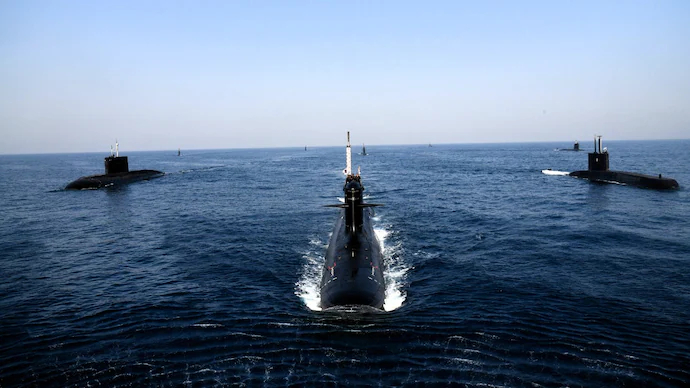
- 06 May 2024
Why is it in the News?
The Indian Navy has initiated trials to modernize its conventional submarine fleet by issuing a Rs 60,000 crore tender for the acquisition of highly advanced submarines equipped with Air Independent Propulsion (AIP) technology.
What is an Air Independent Propulsion (AIP)?
- Air Independent Propulsion (AIP) is a propulsion system used in submarines that allows them to operate underwater for extended periods without the need to surface or snorkel for air.
- Unlike traditional diesel-electric submarines, which rely on diesel engines for surface propulsion and battery-powered electric motors for submerged propulsion, AIP-equipped submarines use a supplementary propulsion system that generates power independently of atmospheric oxygen.
- AIP systems typically employ technologies such as fuel cells, closed-cycle diesel engines, Stirling engines, or other innovative methods to generate electricity or mechanical power for propulsion while submerged.
- Closed Cycle Diesel Engines: These engines use stored liquid oxygen and an inert gas, such as argon, to run the diesel engine while submerged.
- Closed Cycle Steam Turbines: These systems generate steam using stored liquid oxygen and a fuel source, such as diesel or bioethanol, to power a turbine and produce electricity.
- Stirling Cycle Engines: This technology utilizes a closed-cycle heat engine to generate power using a temperature difference between a hot and cold source.
- Fuel Cells: These devices convert chemical energy from a fuel, such as hydrogen, and an oxidizing agent, like stored liquid oxygen, into electrical energy through an electrochemical reaction.
- These systems produce minimal noise and exhaust, allowing submarines to operate quietly and stealthily underwater, making them less vulnerable to detection by sonar and other detection systems.
- The implementation of AIP technology significantly enhances the stealth and endurance capabilities of submarines, enabling them to conduct longer-duration covert missions and remain submerged for extended periods, thereby enhancing their overall operational effectiveness.
- The Defence Research and Development Organisation (DRDO) is pioneering fuel cell-based AIP systems, unique for their hydrogen generation capabilities.
- Developed by the Naval Materials Research Laboratory (NMRL) of DRDO, these systems offer flexibility in operation modes to meet diverse user requirements.
China’s Chang’e-6 Mission

- 06 May 2024
Why is it in the News?
Recently, China launched its second mission to the far side of the Moon. If successful, it will be the world’s first mission to bring back samples from the part of the Moon that the Earth never gets to see.
What is Chang’e-6 Mission?
- China's Chang'e-6 spacecraft launched recently, on a mission to collect samples from the far side of the Moon.
- The mission aims to grab samples containing material ejected from the lunar mantle and thus provide insight into the history of the Moon, Earth, and Solar System.
- It is a 53-day-long mission. After reaching the Moon’s orbit, the mission’s orbiter will circle the natural satellite while its lander will descend into the 2,500-kilometre-wide South Pole-Aitken basin on the lunar surface.
- The impact that created the basin, among the largest in the history of the solar system, is thought to have dug up material from the lunar mantle.
- If that material can be retrieved, scientists can learn more about the history of the Moon’s insides.
- After collecting samples through scooping and drilling, the lander will launch an ascent vehicle, which will transfer the samples to the orbiter’s service module.
- This module will then return to the Earth.
- China is the only country to achieve a soft landing on the far side of the Moon.
- In 2019, its Chang’e-4 mission landed on the region and explored the Moon’s Von Karman crater with the help of a rover.
Why is the Far Side of the Moon Important?
- The Moon’s far side is often referred to as the dark side because it cannot be seen from the Earth, not because it does not catch the Sun’s rays.
- The Moon is tidally locked with the Earth and therefore, we see only one side of the Moon, also known as the near side.
- The far side has been under the spotlight in recent years as it is very different from the near side.
- It has a thicker crust, more craters and fewer maria, or plains where lava once flowed.
- Examining the samples from the far side can help scientists solve mysteries about the origin and evolution of the Moon — till now, scientists have only been able to analyse samples from the near side.
- The far-side samples can also give answers to the longstanding question: why is it different from the near side?
- Going to the far side, getting samples and doing different kinds of geophysical measurements is really important to figuring out this really long, long-standing mystery.
Anthropocene Epoch
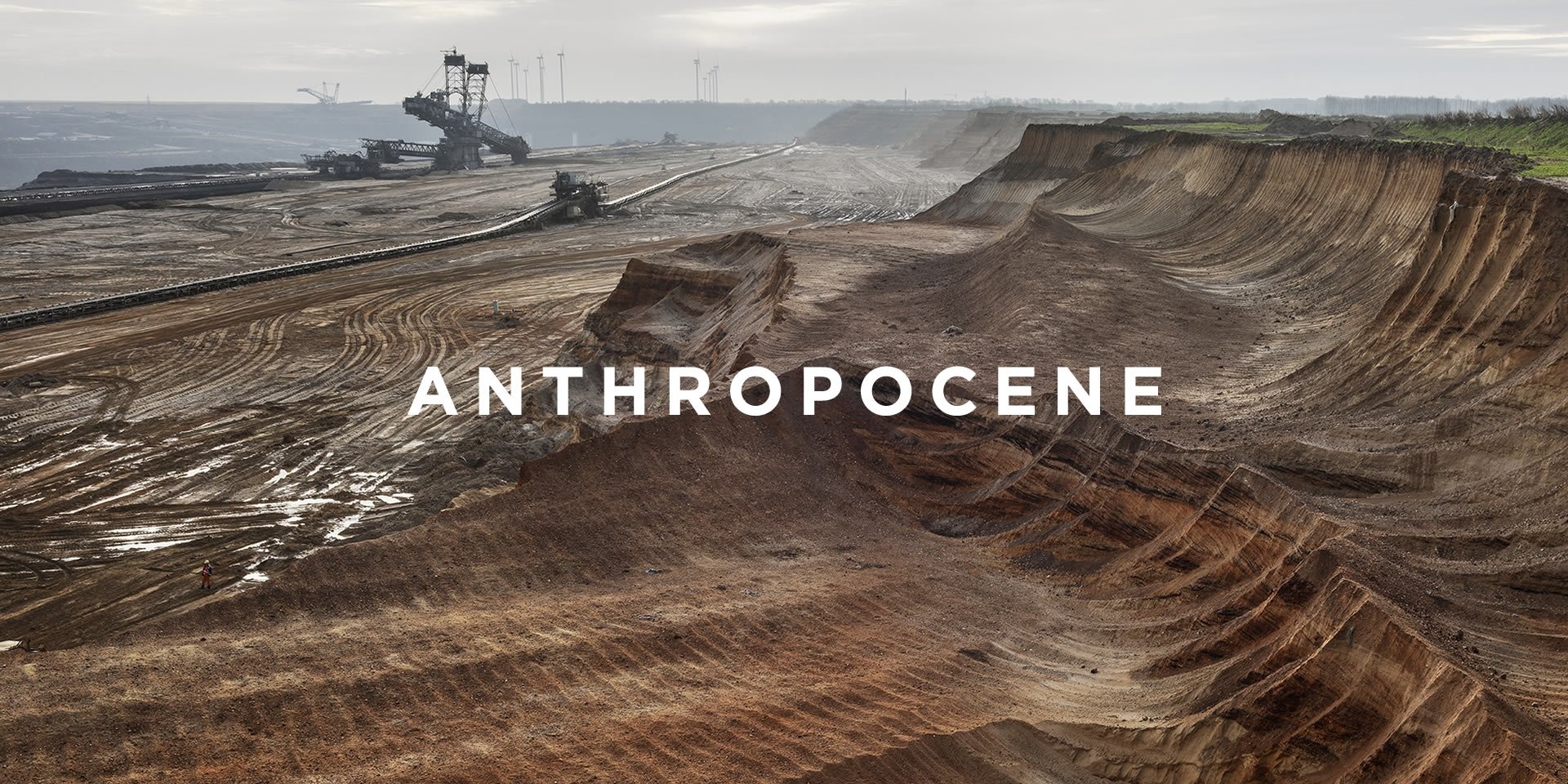
- 06 May 2024
Why is it in the News?
For digital democracies, it is imperative to recognise the potential for self-inflicted social impoverishment by overlooking these long-term challenges of the Anthropocene.
What is an Epoch?
- Epochs form part of the Earth’s official timeline.
- All 4.6 billion years are split into Eons, Eras, Periods, Epochs and Ages - as designated by the International Commission on Stratigraphy.
- The Earth’s current epoch, the Holocene, started at the end of the last ice age, around 12,000 years ago.
- In comparison, the current Eon (in British English Aeon) is the Phanerozoic, which started some 540 million years ago.
What is the Anthropocene Epoch?
- The Anthropocene Epoch is an unofficial unit of geologic time, used to describe the most recent period in Earth’s history when human activity started to have a significant impact on the planet’s climate and ecosystems.
- The term, coined by biologist Eugene Stormer and chemist Paul Crutzen in 2000, combines the Greek words "anthropo" (man) and "cene" (new) to signify the dawn of a new human-centric era.
- Various phenomena characterize this proposed epoch, including global warming, sea-level rise, ocean acidification, mass-scale soil erosion, deadly heat waves, and the deterioration of the biosphere.
- These environmental changes highlight the unprecedented influence of human actions on the Earth's systems.
What is the Geological Time Scale?
- The geological time scale is based on the geological rock record, which includes erosion, mountain building and other geological events.
- Over hundreds to thousands of millions of years, continents, oceans and mountain ranges have moved vast distances both vertically and horizontally.
- For example, areas that were once deep oceans hundreds of millions of years ago are now mountainous desert regions.
- To understand the context of the Anthropocene Epoch, it is essential to explore the geological time scale.
- From longest to shortest, these divisions are called eons, eras, periods, epochs, and ages.
- The study of the correlation between strata and fossils is known as stratigraphy.
Current Epoch and Debate:
- Officially, the current epoch is the Holocene, which started 11,700 years ago after the last major ice age.
- However, there is ongoing debate within the scientific community regarding the distinction between the Holocene and the Anthropocene.
- The International Union of Geological Sciences (IUGS) has yet to formally adopt the term Anthropocene as an official epoch.
- The critical question the IUGS needs to address is whether human influence has significantly altered the Earth's systems to the extent that it is reflected in the rock strata.
- As the debate continues, the Anthropocene Epoch serves as a reminder of the profound impact of human activity on the planet and the urgent need to address environmental challenges for the sake of Earth's future.
GOLDENE
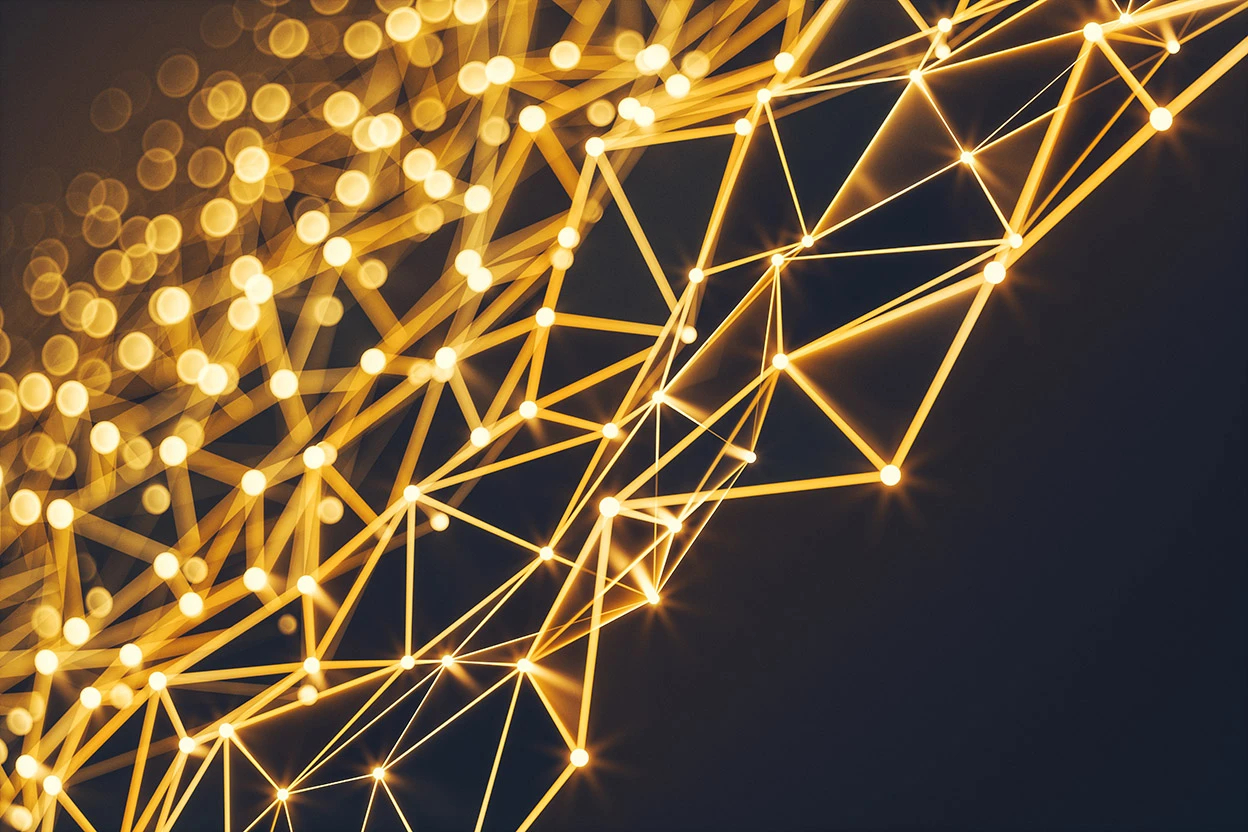
- 06 May 2024
Why is it in the News?
For the first time, researchers have created a free-standing sheet of gold (goldene) that is only one atom thick.
What Is Goldene?
- Goldene is an innovative, free-standing 2D metal with a thickness of just one atom.
- Created through a unique process, Goldene offers a wide range of potential applications in various industries, particularly in electronics and catalysis.
How is it created?
- Scientists first encapsulate an atomic monolayer of silicon between layers of titanium carbide.
- Gold is deposited on this structure, allowing the gold atoms to diffuse and replace the silicon atoms, creating a monolayer of trapped gold atoms.
- Using Murakami's reagent and a Japanese technique employed in forging katanas and high-quality knives, the titanium carbide layers are etched away, leaving a free-standing, one-atom-thick layer of gold.
Dimensions:
- Goldene sheets are approximately 100 nanometres thick, roughly 400 times thinner than the most delicate commercially available gold leaf.
Applications: Goldene's unique properties offer potential applications in various sectors:
- Electronics industry: Goldene's thinness and conductivity can enhance electrical components and circuitry.
- Carbon dioxide conversion: It can potentially aid in transforming carbon dioxide into useful products.
- Hydrogen-generating catalysis: Goldene could be utilized to efficiently produce hydrogen.
- Selective production of value-added chemicals: The material's properties enable the selective generation of chemicals for specific applications.
- Hydrogen production: It can contribute to the clean production of hydrogen.
- Water purification: Goldene could be implemented in water treatment technologies.
Significance:
- Goldene is an economically viable alternative to conventional, thicker gold structures, making it an appealing option for catalytic applications.
- Its unique characteristics position Goldene as a potentially revolutionary material for various industries.
Eta Aquariid Meteor Shower
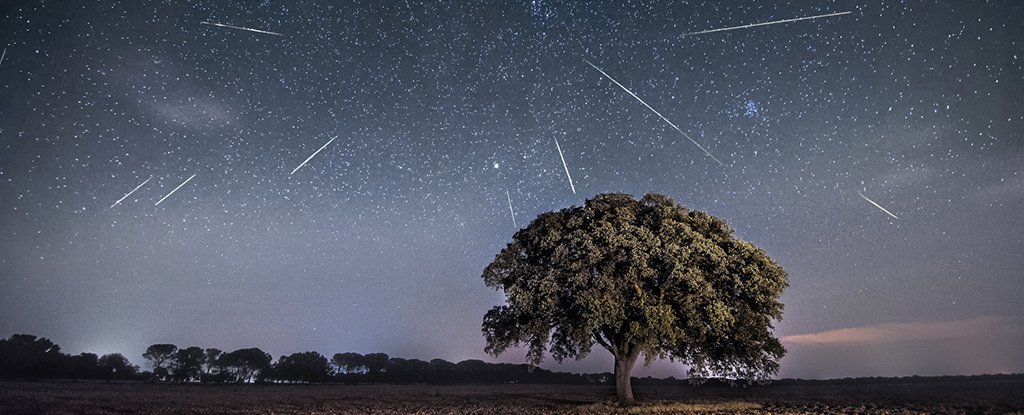
- 04 May 2024
Why is it in the News?
The Eta Aquariid meteor shower, which has been active since April 15, will peak on May 4 and 5.
About Eta Aquariid Meteor Shower:
- The Eta Aquariids are a meteor shower associated with Halley's Comet.
- The shower is visible from about April 19 to about May 28 each year with peak activity on or around May 5.
- It is formed when Earth passes through the orbital plane of the famous Halley’s Comet, which takes about 76 years to orbit the Sun once.
- It seems to be originating from the Aquarius constellation, hence ‘Eta Aquariid’.
- The Eta Aquariid meteor shower is known for its rapid speed.
- This makes for long, glowing tails which can last up to several minutes.
- About 30 to 40 Eta Aquarid meteors can be seen per hour during the peak of the meteor shower if observed from the Southern Hemisphere.
- The number decreases to about 10 meteors per hour if being viewed in the Northern Hemisphere.
- This is due to the location of the “radiant” — the position in the sky where the meteor shower seems to come from.
- In the Northern Hemisphere, Eta Aquarid meteors most often appear as ‘Earthgrazers’ long meteors that appear to skim the surface of the Earth.
- In the South, however, they can be seen higher up in the sky and hence are more visible.
What are Comets?
- Comets are frozen leftovers from the formation of our solar system, some 4.6 billion years ago.
- They are composed of dust, rock and ice and orbit around the Sun in highly elliptical orbits which can, in some cases, take hundreds of thousands of years to complete.
- Billions of them are theorised to be orbiting the Sun beyond Neptune, in the Kuiper Belt and even more distant Oort cloud.
- Comets come in different sizes, although most are roughly 10 km wide.
- However, as they come closer to the Sun, comets “heat up and spew gases and dust into a glowing head that can be larger than a planet.
- This material also forms a tail that stretches millions of miles.
How are Meteor Showers Related to Comets?
- Meteors are simply grains of dust or rock that burn up as they enter the Earth’s atmosphere.
- This burning also creates a brief tail.
- Since most meteors are tiny they completely burn up in Earth’s atmosphere. However, once in a while, a large enough meteor passes through and hits the ground (at which time it is called a meteorite), often causing significant damage.
- A meteor shower can be observed when Earth passes through the clouds of dust left behind in a comet’s orbital plane.
- The sky lights up with small and large meteor tails as the debris left behind by the comet interacts with Earth’s atmosphere.
World Press Freedom Index 2024
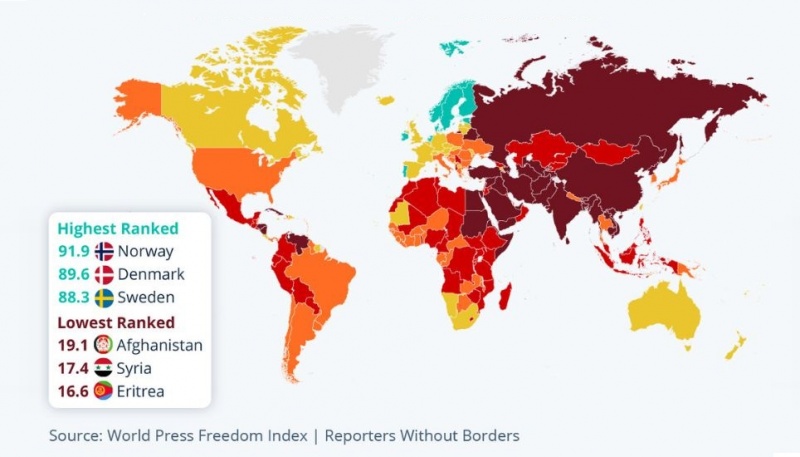
- 04 May 2024
Why is it in the News?
India’s score on the World Press Freedom Index fell over the last year, from 36.62 to 31.28, according to World Press Freedom Index.
About World Press Freedom Index 2024:
- The World Press Freedom Index, an annual report published by Reporters Without Borders (RSF), evaluates the ability of journalists to work and report freely and independently across 180 countries.
- The index ranks nations based on a press freedom questionnaire covering five categories:
- Political context
- Legal framework
- Economic context
- Ssociocultural context, and
- Security
- It is important to note that the index focuses solely on press freedom and does not assess the quality of journalism or human rights violations in general.
Key Findings in the 2024 Index:
- Global decline: The report reveals an overall deterioration in press freedom worldwide, with an average drop of 7.6 points.
- Political repression: There has been a sharp increase in political repression against journalists and independent media outlets.
- Top-ranking countries:
- Norway ranks first, followed by Denmark and Sweden.
- European countries, particularly those within the European Union, continue to demonstrate strong press freedom.
- Regions with the worst performance: The Maghreb and Middle East regions face the most significant restrictions on press freedom imposed by government forces.
- Lowest-ranking countries:
- Eritrea ranks last, followed by Syria and Afghanistan.
India's Ranking:
- Although India's rank slightly improved from 161 in 2023 to 159 in 2024, this change is primarily due to other countries dropping in their rankings.
- India experienced a decline in all indicators except security.
- Notably, India ranks behind Turkey, Pakistan, and Sri Lanka, which hold positions 158, 152, and 150, respectively.
Artificial General Intelligence (AGI)
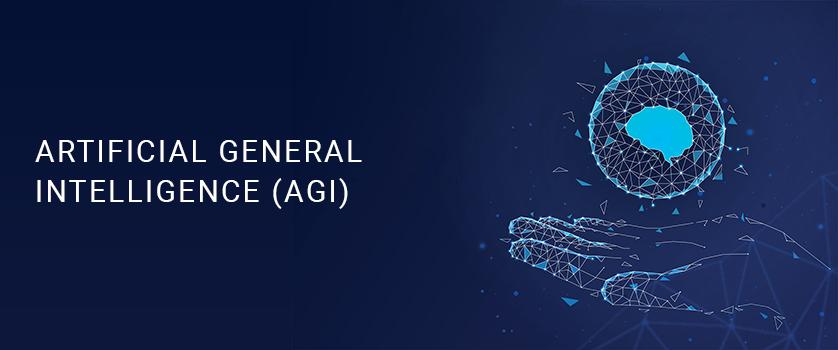
- 04 May 2024
Why is it in the News?
“GPT-4 is the dumbest model any of you will ever have to use again,” said the OpenAI’s CEO Sam Altman at a time when his company is going big on superintelligence or Artificial General Intelligence (AGI).
What Is Artificial General Intelligence (AGI)?
- Artificial general intelligence (AGI) is a team used to define the concept of development of AI to a level that can almost be capable of human intelligence and able to solve complex problems.
- Artificial intelligence (AI) is a broad field that encompasses various domains and applications, such as computer vision, natural language processing, machine learning, robotics, and more.
- AGI is a fictional Super Intelligence system that can match human intelligence.
- In Normal terms, AGI is also called strong AI, full AI, or general intelligent action.
- AGI systems are expected to have human-like or superhuman cognitive abilities, such as reasoning, planning, learning, communication, creativity, and problem-solving.
- AGI systems would be able to perform any task that humans can do, and even tasks that humans cannot do.
What is the Difference Between AI & AGI?
- AI systems are trained to perform specific tasks that require some level of intelligence, such as recognizing faces, translating languages, playing games, or diagnosing diseases.
- However, these systems are not able to generalize their skills and knowledge to other domains or tasks that they were not trained for.
- This is where artificial general intelligence (AGI) comes in.
- Artificial intelligence is an Umbrella containing the science of developing systems and processes that can replicate human intelligence.
- It's an umbrella containing multiple subdomains specifically built to develop such intelligence systems.
- Artificial General Intelligence is more like the system's ability to learn by itself, and behave like human intelligence. It's an evolved system with the help of heavily trained AI over time.
How can AGI Help Humanity?
- In theory, AGI has innumerable positive implications.
- For instance, in healthcare, it can redefine diagnostics, treatment planning, and personalised medicine by integrating and analysing vast datasets, far beyond the capabilities of humans.
- In finance and business, AGI could automate various processes and enhance overall decision-making, offering real-time analytics and market predictions with accuracy.
- When it comes to education, AGI could transform adaptive learning systems that work towards the unique needs of students.
- This could potentially democratise access to personalised education worldwide.
Blue Corner Notice
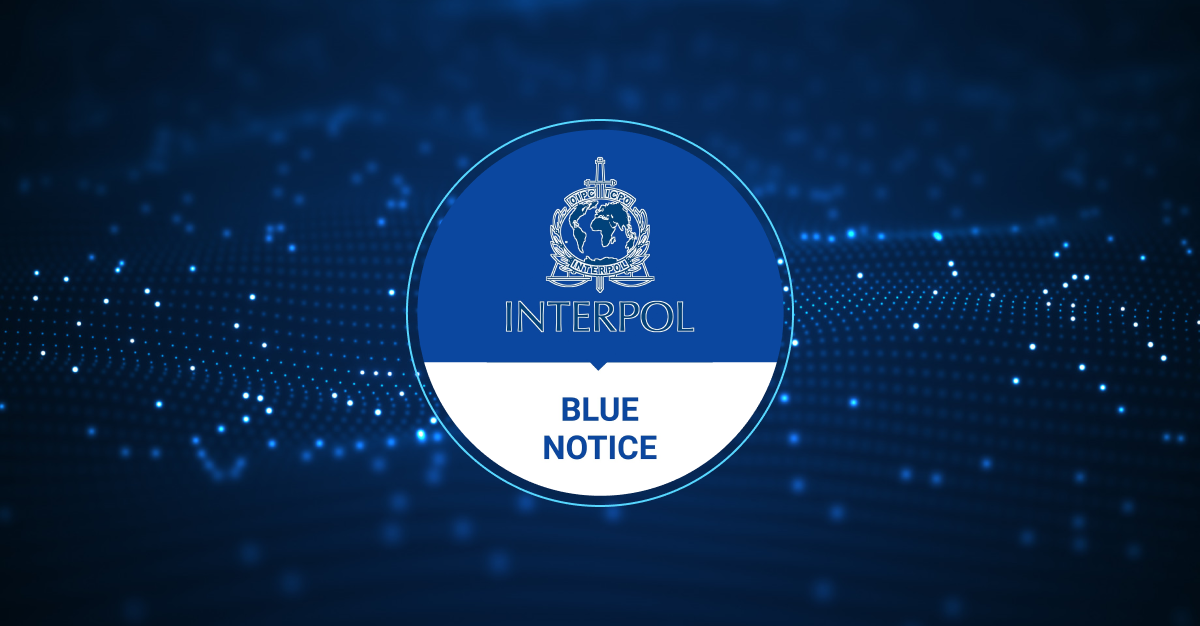
- 04 May 2024
Why is it in the News?
The Central Bureau of Investigation (CBI) is likely to issue a Blue Corner notice against absconding Janata Dal (Secular) MP Prajwal Revanna.
What is Interpol’s Colour-coded Notices?
- A Blue or a Blue Corner notice is a part of Interpol’s elaborate system of colour-coded notices, which enable countries to “share alerts and requests for information [on wanted persons/crimes] worldwide”.
- This sharing of critical crime-related information is crucial for tackling internationally spread-out criminal activities.
- There are seven types of notices — Red Notice, Yellow Notice, Blue Notice, Black Notice, Green Notice, Orange Notice, and Purple Notice. Each has a different implication.
- Red Notice: To seek the location and arrest of persons wanted for prosecution or to serve a sentence.
- Yellow Notice: To help locate missing persons, often minors, or to help identify persons who are unable to identify themselves.
- Blue Notice: To collect additional information about a person’s identity, location or activities in relation to a criminal investigation.
- Black Notice: To seek information on unidentified bodies.
- Green Notice: To provide a warning about a person’s criminal activities, where the person is considered to be a possible threat to public safety.
- Orange Notice: To warn of an event, a person, an object or a process representing a serious and imminent threat to public safety.
- Purple Notice: To seek or provide information on modus operandi, objects, devices and concealment methods used by criminals.
- These notices are issued by Interpol’s General Secretariat at the request of a member country’s Interpol National Central Bureau and are made available for all member countries.
What is Interpol?
- Interpol, or the International Criminal Police Organization, is an intergovernmental organization that facilitates global police cooperation and crime control.
- Founded in 1923, Interpol enables member countries to share data and collaborate on investigating cross-border crimes, such as terrorism, drug trafficking, cybercrime, and human trafficking.
- Interpol is composed of a network of 194 member countries, each having a National Central Bureau (NCB) that serves as the point of contact for international investigations. Key functions of Interpol include:
- Providing a secure communication system for member countries to exchange information on criminal activities.
- Facilitating operational support and assistance for member countries in managing crime-related crises and emergencies.
- Coordinating training and capacity-building initiatives to enhance the capabilities of law enforcement agencies.
- Issuing colour-coded notices (e.g., Red Notice for wanted persons) to alert member countries about international criminals and activities.
- Providing access to databases containing vital data on known criminals, fingerprints, DNA profiles, and stolen and lost travel documents.
- Interpol functions within the framework of international law and operates in accordance with the principle of neutrality, ensuring that it does not interfere in the political, military, religious, or racial affairs of member countries.
- Its main objective is to provide a platform for international police cooperation and create a safer world for all.
Oxytocin
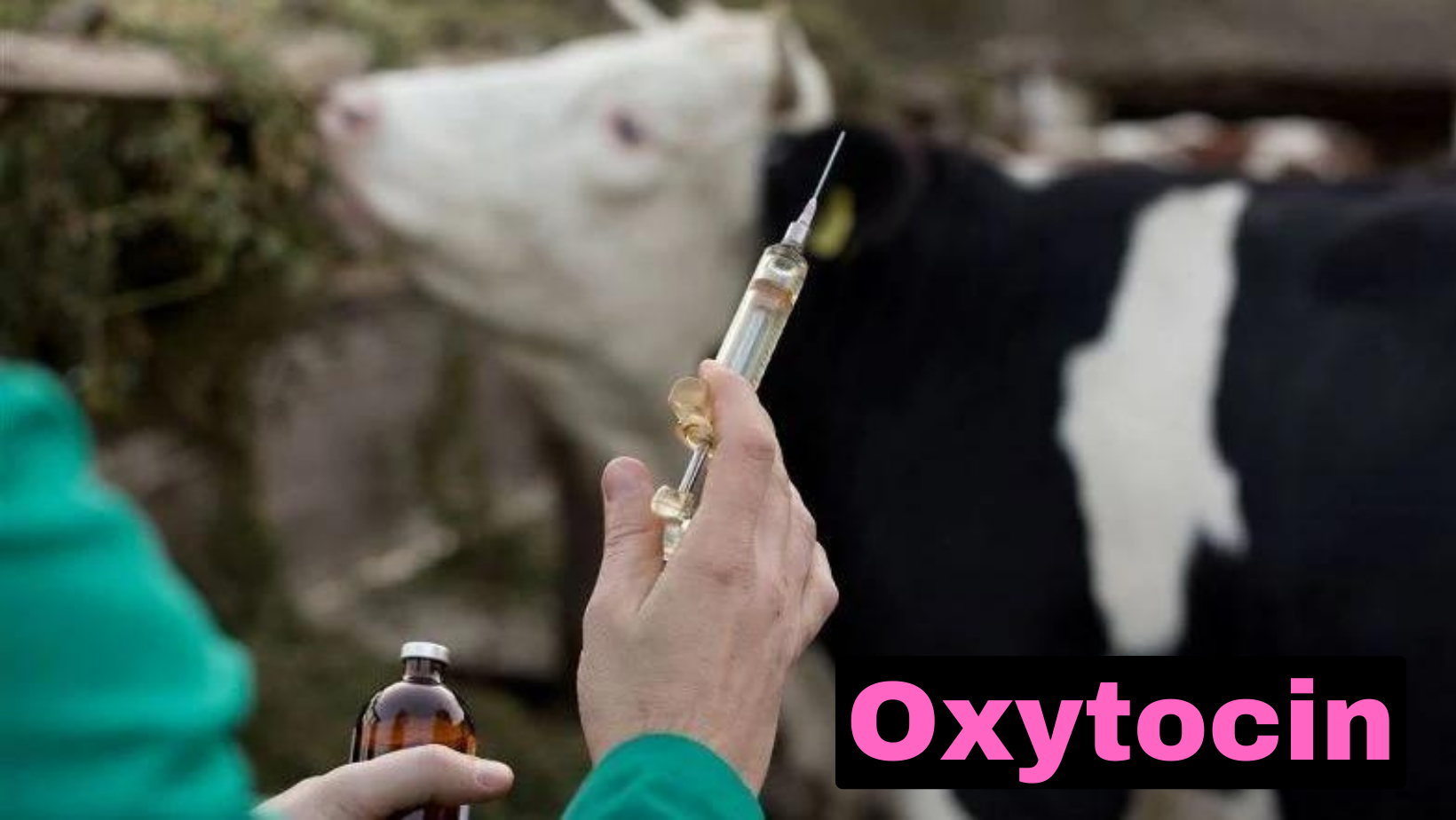
- 04 May 2024
Why is it in the News?
Recently, the Delhi High Court called for action against the 'rampant use of Oxytocin' in dairy colonies.
What is Oxytocin?
- Oxytocin also known as the ‘love hormone’ is secreted by the pituitary glands of mammals during sex, childbirth, lactation, or social bonding.
- It is normally produced in the hypothalamus and released by the posterior pituitary.
- It can be chemically manufactured and sold by pharma companies for use during childbirth.
- It is administered either as an injection or a nasal solution.
Side effects of oxytocin:
- A few side effects of oxytocin in humans would include:
- Allergic reactions on the skin like rashes Itching, hives Swelling, lips, tongue, or throat
- Changes in the heart rhythm causing fast or irregular heartbeat, dizziness, feeling faint or lightheaded
- Pain in the chest
- Breathlessness and trouble breathing
- Nausea Vomiting
- Severe headache
- Blurred vision
- Pounding in the neck or ears
- Jaundice Seizure
- According to doctors, prolonged use of oxytocin injections also causes fertility disorders like poor oestrus signs, reduced lactation period, lower conception rate, and high embryonic mortalities.
- Oxytocin injection given to cattle to boost the delivery of milk production is one of the reasons for the early onset of puberty among girls, the development of breasts in males, and the lack of testosterone production due to hormonal imbalance.
Affects fertility in both men and women:
- Milk adulterated with oxytocin is to be avoided by pregnant women as it can cause abortion and babies may be born with deformities.
- It also increases the risk of haemorrhage in mothers after birth and can also inhibit breastfeeding.
- However, boiling milk can help eliminate traces of oxytocin.
What are Hormones?
- Hormones are special chemicals produced by glands in the endocrine system that act as messengers in the body, regulating various physiological processes like growth, metabolism, reproduction, and mood.
- They travel through the bloodstream to target organs and tissues, where they exert their effects by binding to specific receptors and influencing cellular activity.
Shaksgam Valley
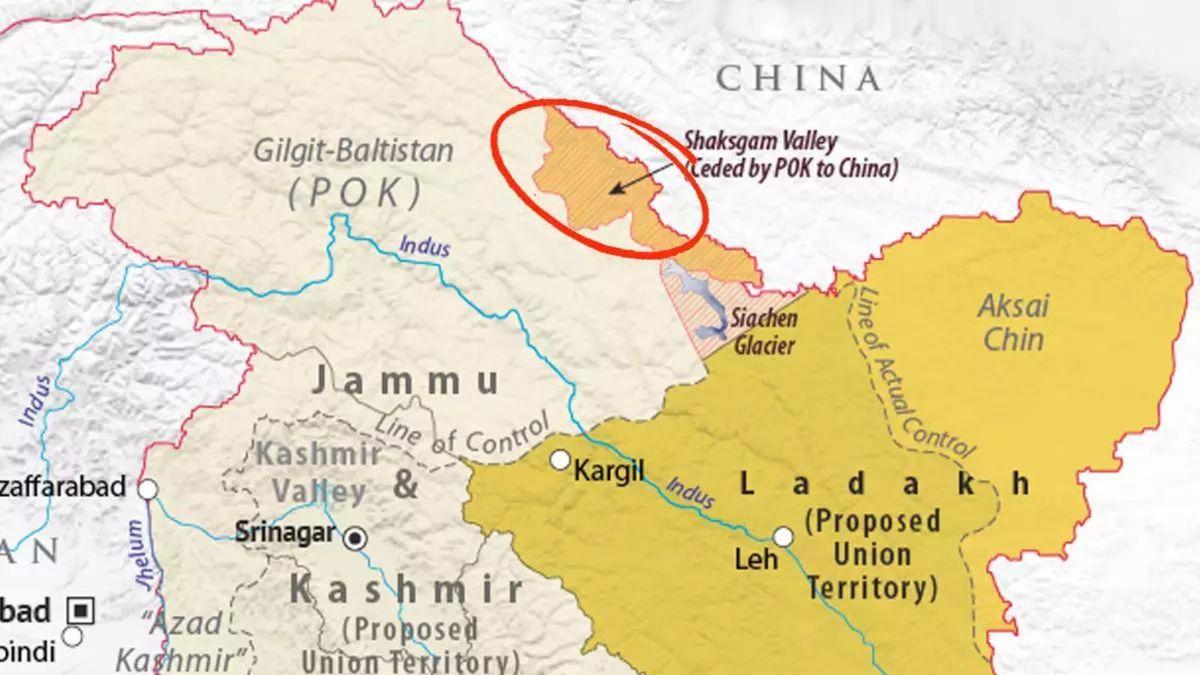
- 03 May 2024
Why is it in the News?
India recently said it has lodged a strong protest with China for carrying out construction activities in the Shaksgam Valley in an "illegal" attempt to alter the situation on the ground.
Context:
- Recently, the Ministry of External Affairs (MEA) said that the Shaksgam Valley is a part of the territory of India amid reports of China building infrastructure in the valley.
- The Shaksgam Valley strategically located region that is now part of Pakistan-occupied Kashmir.
- MEA spokesperson Randhir Jaiswal recently said that India "never accepted the so-called China-Pakistan Boundary Agreement of 1963 through which Pakistan unlawfully attempted to cede the area to China".
- Lodging a strong protest with China for carrying out construction activities, India called it an "illegal" attempt to alter the situation on the ground.
Where is the Shaksgam Valley Located?
- The Shaksgam Valley, or the Trans Karakoram Tract, is part of the Hunza-Gilgit Region of PoK.
- It is bordered by the Xinjiang Province of the People's Republic of China to the north.
- The northern areas of PoK are to its west and south.
- And the Siachen Glacier region to the east.
How did Pakistan cede Shaksgam valley to China?
- In 1963, Pakistan ceded the Shaksgam Valley to China when it signed a border agreement with Beijing to settle their border disputes.
- But, Article 6 of the 1963 agreement clearly stated that “the two Parties have agreed that after the settlement of the Kashmir dispute between Pakistan and India, the sovereign authority concerned will reopen negotiations with the Government of the People's Republic of China, on the boundary as described in Article 2 of the present Agreement, to sign a formal Boundary Treaty to replace the present agreement.”
- The agreement laid the basis for the construction of the Karakoram Highway, which was jointly built by Chinese and Pakistani engineers during the 1970s.
What is the History of Shaksgam Valley?
- When the British asked the Mir of Hunza, a vassal of the Maharaja of Kashmir, to give up his rights to the Taghdumbash Pamirs and the Raskam valley in 1936, the Shaksgam valley to the south-west had remained in his possession.
- This remained the traditional frontier of British India until independence and was inherited by India following Jammu & Kashmir's accession in 1947.
- And, this was the border that Pakistan compromised in its 1963 agreement with China.
- Pakistan established diplomatic relations with the People's Republic of China in 1951.
- Back then, Pakistan was viewed as a member of the non-Soviet block due to its membership in two anti-communist military pacts -- SEATO and CENTO -- led by the United States.
- China was on the opposite side.
- After Chinese troops invaded Tibet in 1950, Pakistan even offered transit facilities to US aircraft so they could supply equipment to Tibetan rebels.
- Chinese troops began to cross the border in eastern Hunza after the Partition of India.
- This started in 1953 and in 1959 they took some livestock out of the area.
- This prompted a furious response from Pakistan, which was determined to protect its borders.
- The then President of Pakistan, Ayub Khan, however, saw an opportunity to appease the Chinese in the late 1950s as India-China relations were rapidly deteriorating.
- Subsequently, Beijing developed closer ties with Islamabad after the India-China War of 1962.
- China went on to support Pakistan diplomatically during the 1965 India-Pakistan war.
- Amid these developments, Pakistan chose to downgrade historical claims made by the Mir of Hunza and signed over the Shaksgam Valley to China in 1963.
What was the Consequence?
- In granting China's claim to a border along the Karakoram Range, Pakistan compromised India's traditional frontier along the KunLun Range to the northwest of the Karakoram Pass.
- It also allowed China to extend a claim eastward along the Karakoram in Ladakh.
- This enabled China to claim all of Aksai-Chin.
Electrolysers
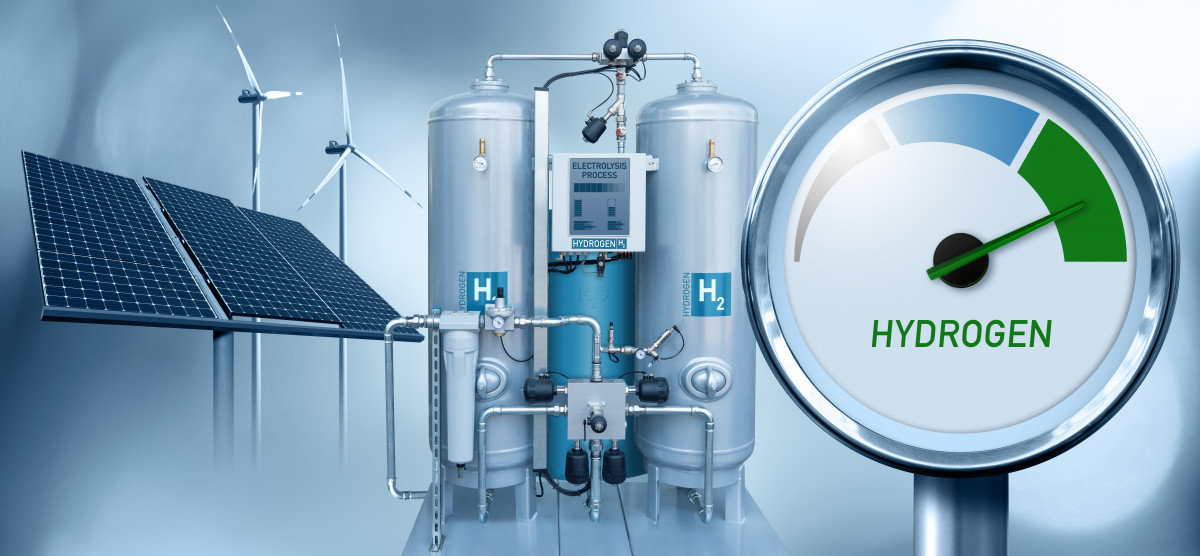
- 03 May 2024
Why is it in the News?
Developing a domestic manufacturing infrastructure for electrolyzers is expected to reduce the cost of green hydrogen and strengthen India's competitive advantage.
What are Electrolysers?
- Electrolysers are devices that produce hydrogen through a chemical process called electrolysis, which splits water molecules into hydrogen and oxygen molecules using electricity.
How do They work?
- These devices consist of a stack of conductive electrodes separated by a membrane, to which a high voltage and current are applied.
- This induces an electric current in the water, causing it to decompose into its constituents: hydrogen and oxygen.
- The generated oxygen is either released into the atmosphere or stored for future use as a medical or industrial gas.
- The hydrogen produced can be stored as a compressed gas liquefied for industrial use or utilised in hydrogen fuel cells, which power various transportation vehicles like trains, ships, and aircraft.
Types of Electrolysers:
- Alkaline Electrolysers: This technology, predominantly used by the fertiliser and chlorine industries, employs thick membranes and nickel-based electrodes.
- It currently represents a significant portion of global electrolyser capacity.
- Proton Exchange Membrane (PEM) Electrolysers: Operating at high pressure, PEM electrolysers utilise thin perfluorosulfonic acid (PFSA) membranes.
- Though they require gold and titanium-plated electrodes and catalysts like platinum, iridium, and ruthenium, they produce high-purity hydrogen and are easy to cool, making them a popular choice.
- Solid Oxide Electrolysis Cell (SOEC) Electrolysers: These devices utilise heat to produce hydrogen from steam and are ideal for locations with available heat sources such as nuclear or industrial facilities.
- Operating at high temperatures ranging from 500 to 850 degrees Celsius.
- Anion Exchange Membrane (AEM) Electrolysers: Operating at significantly lower temperatures of 50 to 60 degrees Celsius, AEM electrolysers combine the less harsh conditions of alkaline electrolysers with the simplicity and high efficiency of PEM electrolysers.
Electrolyzers and Green Hydrogen Production:
- Green hydrogen is renewable hydrogen produced using water electrolysis technology and electricity generated from renewable energy sources, such as solar or wind.
- It is gaining unprecedented momentum globally, and it is believed that it is a key component in accelerating the shift to clean energy.
- The commercialization of electrolyzers can make green hydrogen more readily available and enable energy systems across the globe to undergo fundamental transformations to lower emissions and reduce their negative impact on the environment.
Diplomatic Passport
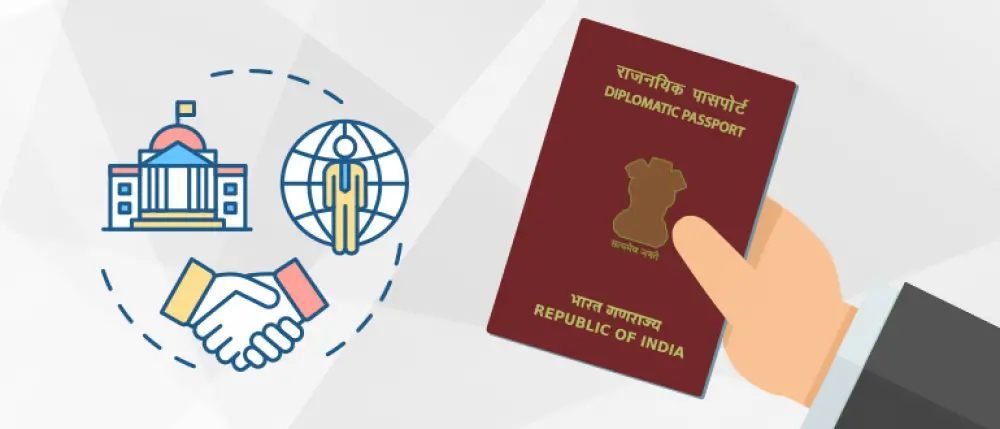
- 03 May 2024
Why is it in the News?
After allegations of sexual abuse by Janata Dal (Secular) MP Prajwal Revanna came to light, the politician fled to Germany on a diplomatic passport.
What is a Diplomatic Passport?
- Diplomatic passports are issued to people holding diplomatic status or deputed by the Government of India for official duty abroad.
- Unlike normal passports, which are valid for 10 years and have a dark blue cover, diplomatic passports are valid for five years or less and have maroon covers.
- Diplomatic passports, also known as 'Type D' passports.
- A diplomatic passport has 28 pages.
- Holders of such passports are entitled to certain privileges and immunities as per international law, including immunity from arrest, detention, and certain legal proceedings in the host country.
Issuing Authority:
- The Ministry of External Affairs’s (MEA) Consular, Passport & Visa Division issues diplomatic passports (‘Type D’ passports) to people falling in broadly five categories:
- Those with diplomatic status;
- Government-appointed individuals travelling abroad for official business;
- Officers working under the branches A and B of the Indian Foreign Service (IFS), normally at the rank of Joint Secretary and above; and
- Relatives and immediate family of officers employed in IFS and MEA.
- Select individuals who are authorised to undertake official travel on behalf of the government”.
- The MEA issues visa notes to government officials going abroad for an official assignment or visit.
What are the Benefits of Having a Diplomatic Passport?
- Official identification: The diplomatic passport serves as an official identification document for individuals representing the Indian government on diplomatic missions.
- It helps in establishing their identity and official status.
- Diplomatic immunity: Diplomatic passport holders are typically entitled to certain privileges and immunities as per international law.
- This includes immunity from arrest, detention, and certain legal proceedings in the host country, safeguarding their ability to perform official duties without hindrance.
- Visa facilitation: Diplomatic passports often enjoy certain privileges when it comes to visa facilitation.
- Many countries offer expedited visa processing or waive visa requirements altogether for diplomatic passport holders, simplifying travel arrangements for official purposes.
- Access to diplomatic channels: The diplomatic passport grants access to diplomatic channels and services provided by Indian embassies, consulates, and other diplomatic missions worldwide.
- This includes assistance with consular services, protection, and support while abroad.
- Priority services: Diplomatic passport holders may receive priority services at airports and during immigration procedures.
- This can include dedicated immigration counters or expedited security and customs clearance, saving time during travel.
- Official representation: The diplomatic passport signifies the official representation of the Indian government and confers a sense of authority and credibility while dealing with international counterparts, foreign officials, and diplomatic communities.
Can Diplomatic Passports be Revoked?
- According to The Passports Act, 1967, the passport authority may cancel a passport or travel document, with the previous approval of the Central government.
- The passport authority can impound or revoke a passport if the authority believes that:
- The passport holder or travel document is in wrongful possession
- If the passport was obtained by the suppression of material information or based on wrong information provided by the individual
- If it is brought to the notice of the passport authority that the individual has been issued a court order prohibiting his departure from India or has been summoned by the court.
- A diplomatic passport can be revoked upon orders from a court during proceedings with respect to an offence allegedly carried out by the passport holder before a criminal court.
Monkeypox (Mpox)
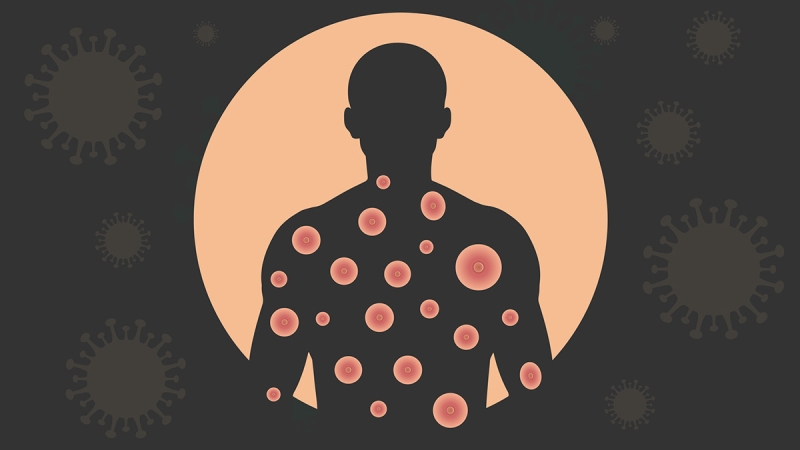
- 03 May 2024
Why is it in the News?
The Democratic Republic of the Congo (DRC) is struggling to contain its biggest Mpox outbreak.
What Is Monkeypox (Mpox)?
- Mpox (formerly known as monkeypox) is a rare viral infection caused by the mpox virus, a member of the orthopoxvirus genus.
- It was first discovered in 1958 in monkeys but can also infect humans and other animals.
- Mpox typically presents with a range of symptoms and can be transmitted through close contact with infected individuals or animals.
Symptoms:
- Mpox symptoms often begin with fever, muscle aches, and sore throat, followed by a rash that starts on the face and spreads across the body.
- The rash evolves over two to four weeks, forming macules, papules, vesicles, and pustules before crusting over.
- Lesions can also appear on the palms of the hands and soles of the feet.
Causes:
- The mpox virus is primarily transmitted through direct contact with the skin lesions, body fluids, or respiratory droplets of infected individuals or animals.
- It can also be contracted through contaminated materials, such as bedding or clothing.
Prevention:
- Preventing mpox involves avoiding contact with infected individuals or animals, practising good hygiene, and disinfecting contaminated surfaces.
- Vaccines are also available for individuals at high risk of contracting the virus.
Treatment:
- There is currently no specific treatment for mpox, but symptoms can be managed with supportive care, such as fever reducers and pain medications. In some cases, antiviral medications may be used.
Five Eyes Intelligence-sharing Network
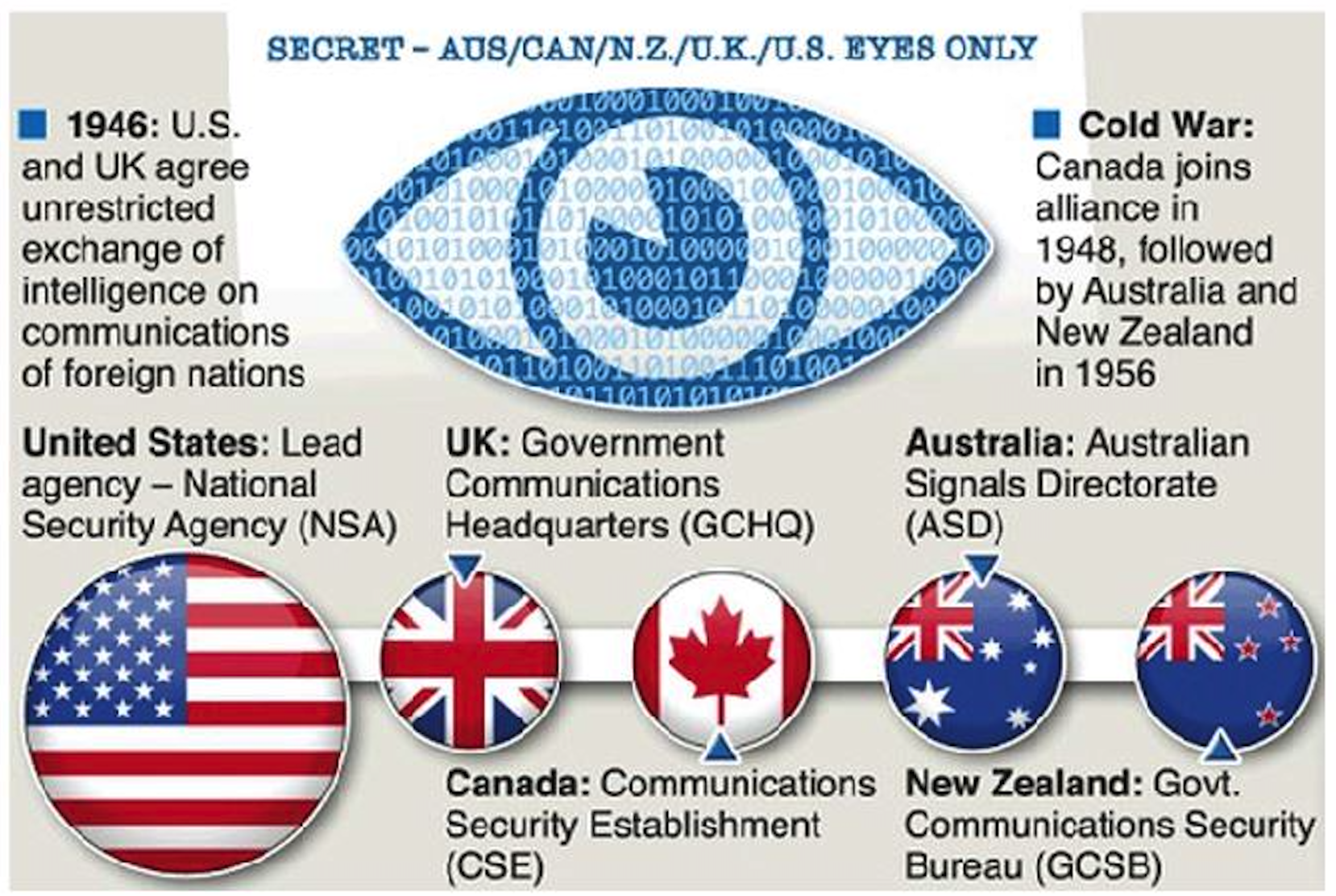
- 03 May 2024
Why is it in the News?
Recently, the Australian Broadcasting Corporation (ABC) reported that “Indian spies” had been “kicked out of Australia” after being caught trying to steal secrets about sensitive defence projects and airport security, as well as classified information on Australia’s trade relationships”.
What is the Five Eyes?
- The Five Eyes is an intelligence alliance comprising Australia, Canada, New Zealand, the United Kingdom and the United States, formed in 1946.
- The alliance is based on a series of bilateral agreements on surveillance and intelligence-sharing.
- These arrangements are commonly known as the United Kingdom-United States Communication Intelligence Act (UKUSA) agreement.
- The UKUSA agreement is a secret pact that, since 1946, has allowed the two countries to share intelligence with each other.
- The UKUSA agreement was so secret that its existence wasn't even acknowledged until 2005.
- Each of the Five Eyes states pursues interception, collection, and decryption activities and shares all intelligence information obtained with the others by default.
- These countries share information with each other through the ultra-sensitive STONEGHOST network, which has been claimed to contain "some of the Western world's most closely guarded secrets".
- The Five Eyes states share integrated programmes, staff, and bases.
Origins of the Five Eyes
- During World War II, informal secret meetings between British and American code-breakers laid the groundwork for establishing the FE alliance.
- After the Cold War, the information-sharing arrangement became formalised under the ECHELON surveillance system in the 1960s.
How does the Five Eyes Alliance operate?
- The alliance facilitates the sharing of signals intelligence among the five countries.
- The countries agree to exchange by default all signals intelligence they gather.
- The bedrock of the Five Eyes Alliance is based on the joint abilities of the United Kingdom's Government Communications Headquarters (GCHQ) and the USA's National Security Agency (NSA) to intercept intelligence.
- These agencies collect and decrypt signal intelligence, called SigInt, which involves internet, telephone, radio and satellite data from across the world.
- The UKUSA Agreement, which was made public in 2010, states:
- "It will be contrary to this agreement to reveal its existence to any third party whatsoever" and "each party will seek the agreement of the other to any action with third parties and will take no action until its advisability is agreed upon."
Supersonic Missile-Assisted Release of Torpedo (SMART) System
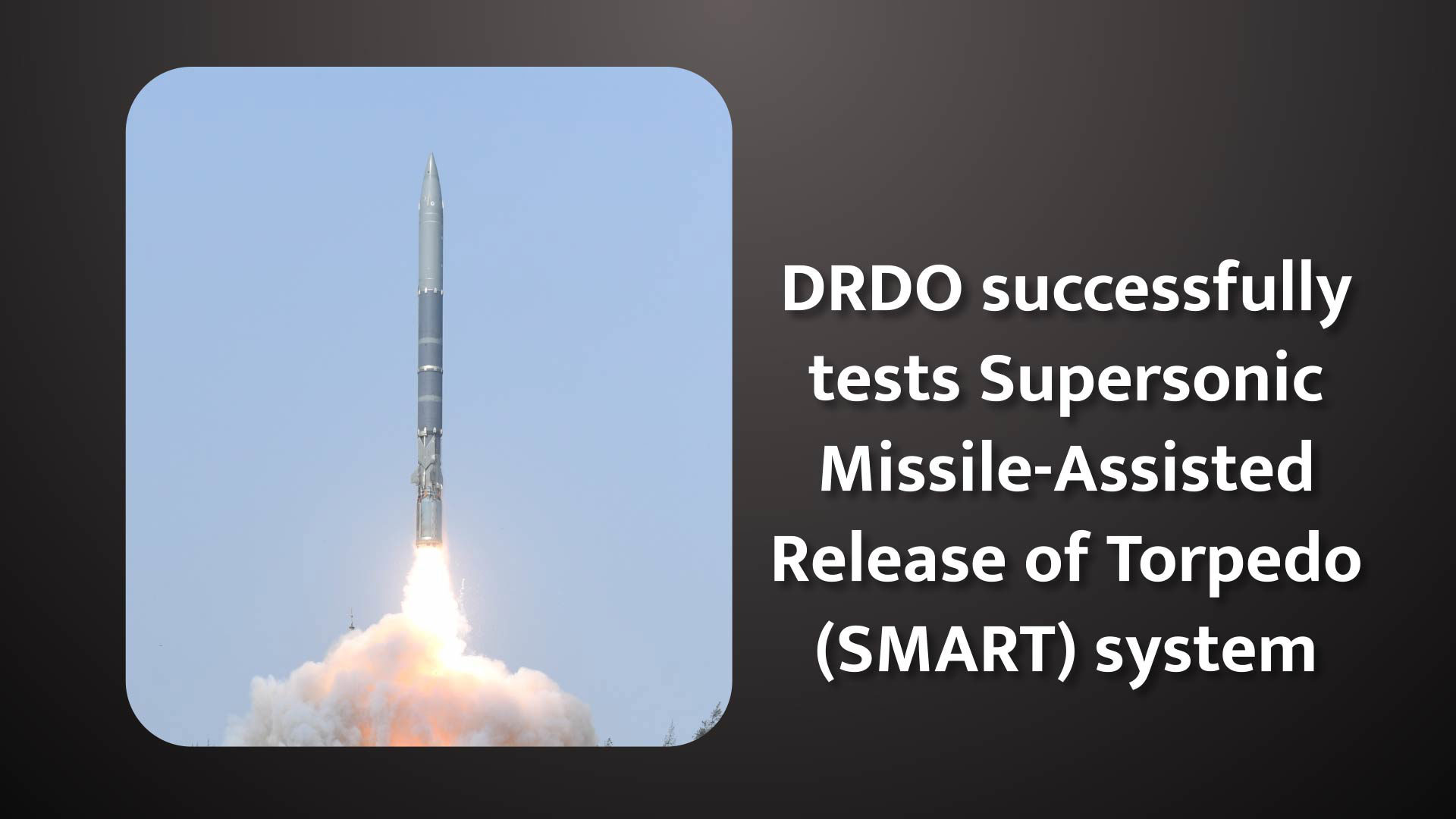
- 02 May 2024
Why is it in the News?
The Defence Research and Development Organisation (DRDO) recently tested a next-generation torpedo release system aimed at boosting the Navy’s anti-submarine warfare capabilities.
What is a SMART System?
- The SMART system, designed to bolster the Indian Navy's anti-submarine warfare capabilities, represents a fusion of cutting-edge technology and indigenous innovation.
- With its supersonic capabilities and torpedo release mechanism, the SMART system offers a formidable deterrent against potential submarine threats, enhancing the Indian Navy's operational readiness and maritime defence posture.
- The SMART system comprises a mechanism by which the torpedo is launched from a supersonic missile system with modifications that would take the torpedo to a far longer range than its own.
- For example, a torpedo with a range of a few kilometres can be sent a distance to the tune of 1000 km by the missile system from where the torpedo is launched.
- The system also gives flexibility in terms of the missile system’s launch platform.
- A number of DRDO laboratories including Defence Research and Development Laboratory (DRDL) and Research Centre Imarat (RCI), both in Hyderabad; Aerial Delivery Research and Development Establishment (ADRDE) in Agra; and Naval Science and Technology Laboratory (NSTL) Visakhapatnam have developed the technologies required for SMART.
Key Features of SMART Anti-submarine Missile System:
- It is a canister-based, long-range anti-submarine missile system.
- It has been developed by the DRDO for the Indian Navy.
- The objective behind the project is to develop a quick reaction system that can launch a torpedo from a standoff distance.
- The missile has a range of 643 km carrying a lightweight torpedo of range 20 km with a 50 kg high explosive warhead.
- SMART uses a two-way data link connected to airborne or ship-based submarine detection and identification systems.
- It can be launched from a surface ship or a truck-based coastal battery.
- The missile is powered by a dual-stage solid-propellant rocket and utilizes electro-mechanical actuators for course correction.
- The missile utilizes sea skimming to reduce detection range.
- The first successful test of SMART was done on 5 October 2020 from Abdul Kalam Island.
Significance:
- This missile-based mechanism to launch lightweight torpedoes can target submarines hundreds of kilometres away — far beyond the conventional range of lightweight torpedoes.
- It will be particularly employed in the absence of other assets for immediate action when an enemy submarine is detected.
Red Colobus
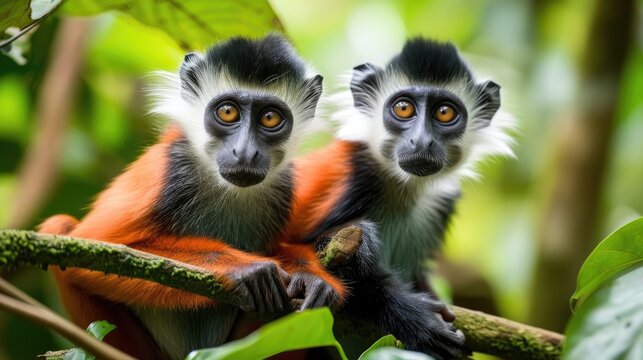
- 02 May 2024
Why is it in the News?
The Red colobus, a rare group of imperilled monkeys spread across Africa, is the primary indicator of biodiversity decline in the continent’s tropical forests.
What is Red Colobus?
- Red colobus monkeys (Piliocolobus spp.), a rare and imperilled group of primates endemic to Africa, serve as crucial indicators of the continent's biodiversity.
- They are part of the broader colobine family, which predominantly consists of leaf-eating species, distinguishing them from the omnivorous cercopithecines.
- Alongside Africa's red colobus monkeys, the colobine group also encompasses langurs found in South and Southeast Asia.
- These distinctive primates are distributed across diverse habitats, ranging from the forests of Senegal to the Zanzibar Archipelago.
- Despite their ecological significance, red colobus monkeys face a dire threat of extinction, with more than half of the known 18 distinct forms listed as Endangered or Critically Endangered on the IUCN Red List.
- Their survival is imperilled by various factors, primarily driven by human activities.
- Hunting for both trade and local consumption poses a significant threat, as does the relentless encroachment on their habitats.
- Habitat loss, degradation, and fragmentation result from activities such as logging, mining, charcoal production, and the conversion of forests into agricultural lands.
- These threats collectively endanger the existence of red colobus monkeys, highlighting the urgent need for conservation efforts to safeguard their future.
Conservation of Red Colobus Monkeys:
- The International Union for Conservation of Nature (IUCN) Species Survival Commission Primate Specialist Group and the African Primatological Society have come together to initiate the Red Colobus Conservation Action Plan.
- This collaborative effort focuses on making red colobus monkeys a priority target in conservation, ultimately contributing to the preservation of Africa's tropical forests and addressing unsustainable hunting practices.
- To effectively implement the action plan, a Red Colobus Working Group (RCWG) has been established.
- This group will provide guidance and ensure that the plan's objectives are met. Additionally, a Red Colobus Conservation Network (RCCN) has been created to promote communication, capacity-building, and monitoring of the conservation efforts for red colobus monkeys.
- Through this joint venture, the IUCN and the African Primatological Society aim to secure the future of red colobus monkeys while safeguarding the ecosystems they inhabit.
Ajrakh from Kutch
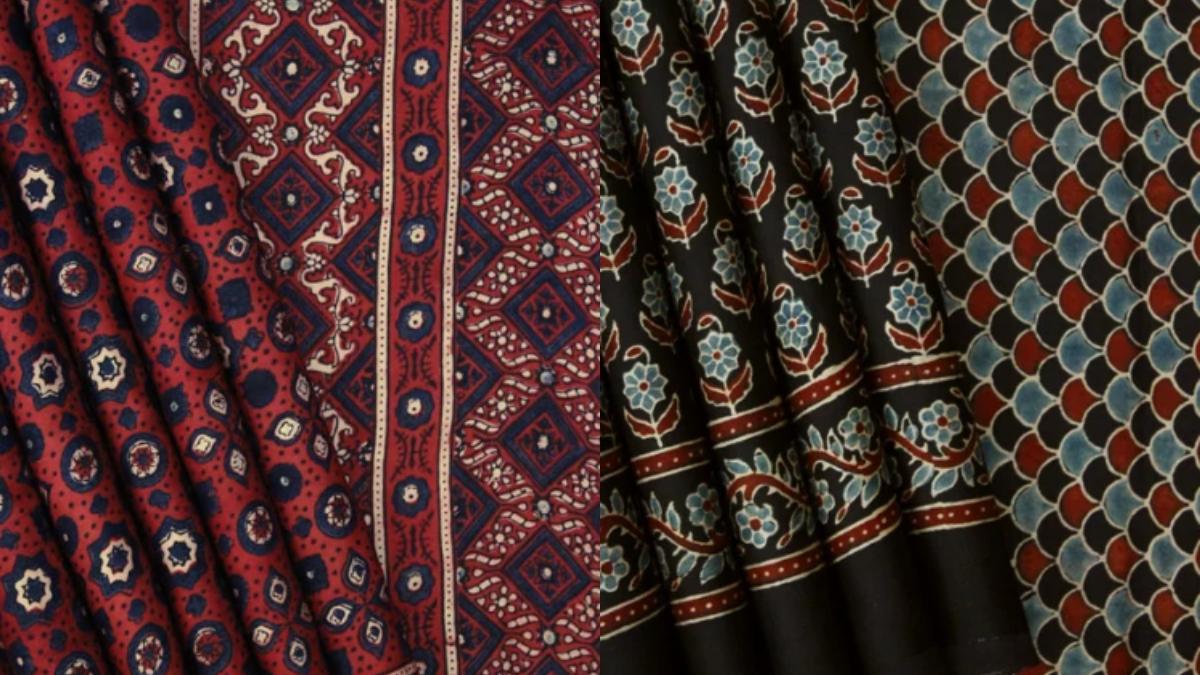
- 02 May 2024
Why is it in the News?
The recent addition of Ajrakh from Kutch to the list of GI-tagged fabrics is a proud moment for India's rich textile heritage.
What is Ajrakh?
- The Ajrakh fabric is a traditional hand-block printing technique that originated in Kutch, Gujarat.
- It uses natural dyes and intricate patterns to create beautiful textiles, which are then used to make sarees, dupattas, stoles, and other garments.
- The unique feature of Ajrakh is its use of geometric patterns and rich earthy colours like indigo, madder, and mustard.
- This fabric has been an integral part of the Kutchi culture for centuries and has now gained recognition on a global level with its GI tag.
What is a GI tag?
- The GI tag is a certification that identifies a product as originating from a specific geographical location and possessing unique qualities due to that region's traditional knowledge and expertise.
- It not only adds value to the product but also protects it from imitation or misuse.
- Ajrakh's GI tag was granted by the Geographical Indications Registry after a long process of documentation and verification of its origin and production techniques.
Some other Indian textiles have received similar recognition.
- Banarasi Silk: The luxurious Banarasi silk sarees from Varanasi have been coveted by women all over the world for their exquisite designs and fine quality.
- This fabric has been granted a GI tag for its uniqueness in design, weaving technique, and use of pure silk and zari.
- The intricate designs of Banarasi silk sarees, inspired by Mughal and Persian art, make them stand out in the sea of Indian textiles.
- Chanderi Fabric: Chanderi, a small town in Madhya Pradesh, is known for its delicate and lightweight fabric.
- Chanderi sarees and suits are made from a combination of cotton and silk, giving them a sheer and lustrous appearance.
- This fabric has been granted a GI tag for its traditional handloom weaving technique, which dates back to the 13th century.
- The motifs used in Chanderi fabrics are inspired by nature and are intricately woven using golden zari.
- Kanjeevaram Silk: The Kanjeevaram sarees from Tamil Nadu are famous for their vibrant colours, fine silk, and intricate zari work.
- This fabric has been granted a GI tag for its traditional weaving technique that uses three shuttles to weave the body, border, and pallu of the saree separately and then join them together.
- The rich gold zari work on Kanjeevaram sarees makes them a must-have in every Indian woman's wardrobe.
- Kota Doria: One of the many varieties of sari clothing produced in Muhammadabad Gohna, Mau in Uttar Pradesh and the surrounding area, as well as in Kota, Rajasthan, is kota doria.
- Pure cotton and silk are used to make sarees, which are adorned with square-like designs called khats.
- Since these sarees were woven in Mysore, they were originally known as Masuria.
- The GI tag was given to Kota Doria in July 2005. Kota Doria cotton sarees are regarded as the lightest in India because of their transparency and low weight.
- Odisha Ikat: One type of ikat, which is a resist dyeing method, comes from Odisha and is called Orissa Ikat.
- It is sometimes referred to as "Bandha of Orissa" and has been an Orissan product since 2007.
- To produce the design on the loom before weaving, the warp and weft threads are tie-dyed.
Antares
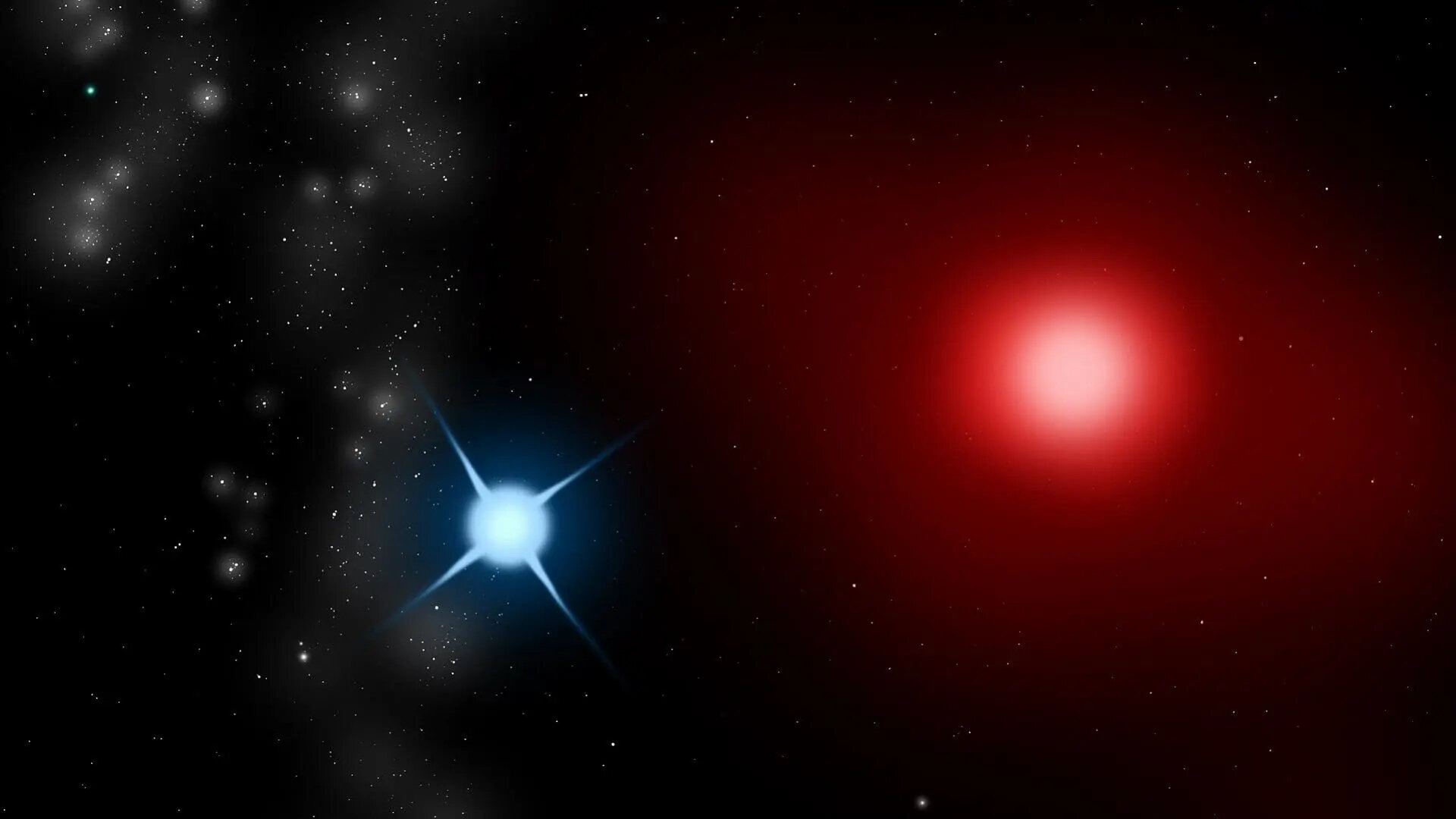
- 02 May 2024
Why is it in the News?
The Bengaluru-based Indian Institute of Astrophysics (IIA) has filmed the passing of the moon in front of Antares, a bright red star.
What is Antares?
- Antares, also known as Alpha Scorpii, is one of the brightest stars in our night sky.
- Located in the constellation Scorpius, Antares has captivated stargazers and astronomers for centuries with its fiery red hue and impressive size.
- The name Antares is derived from the Greek word meaning “rival to Mars” due to its reddish appearance, similar to the planet Mars.
- Ancient cultures associated Antares with various mythological figures, including the Greek god Ares and the Egyptian god Osiris.
- It is also one of the largest known stars, with a diameter estimated to be around 700 times that of our Sun.
- Antares is located approximately 550 light-years away from Earth, making it a relatively close neighbour in astronomical terms.
- It is classified as a red supergiant star, belonging to the spectral type M1.5 Iab-Ib.
- Its surface temperature is about 3,500 Kelvin.
- Antares is a variable star, which means its brightness fluctuates over time.
- Scientists estimate that Antares is approximately 12 million years old.
- As a red supergiant, it is in the later stages of its stellar evolution and is expected to explode as a supernova in the future.
- Antares has a mass estimated to be about 15 times that of our Sun.
- It is primarily composed of hydrogen and helium, with traces of heavier elements.
- Antares has a companion star in a binary system known as Antares B.
- The two stars orbit each other, with a separation of several astronomical units.
- The visual apparent magnitude of Antares is around 1.06, making it one of the 20 brightest stars in the night sky.
- Antares emits a significant amount of infrared radiation, making it a prominent object in infrared observations.
- Antares experiences intense stellar winds, which cause it to lose mass at a rate of approximately one Earth mass every hundred thousand years.
- Antares played a crucial role in ancient navigation, particularly in the Southern Hemisphere, serving as a marker for determining the position of celestial objects.
Booker Prize

- 02 May 2024
Why is it in the News?
The Booker Prize, one of the most prestigious awards in the literary world, has recently come under fire for the historical links to slavery of its original sponsor, Booker Group.
What is the Booker Prize?
- The Booker Prize was founded in 1969, initially just for writers from the Commonwealth, but later opened to writers globally.
- Each year, the prize is awarded to a single work of fiction in the English language.
- In 2004, a separate International Booker Prize was instituted for translated works.
- The prize was co-founded by publishers Tom Maschler and Graham C Greene, and from 1969 to 2001, it was sponsored by, and named after Booker Group Ltd, a British wholesale foods company, established in 1835 as a shipping and trading company, and now owned by Tesco.
- In 2002, British investment management firm Man Group became the prize’s sponsor, and thus it came to be known as The Man Booker Prize.
- After Man Group ended its sponsorship in 2019, American charity Crankstart took over, and reverted the award’s name to its original ‘Booker Prize’.
- Irish author Paul Lynch wins the 2023 Booker Prize for his novel 'Prophet Song'.
About the International Booker Prize:
- The International Booker Prize (formerly known as the Man Booker International Prize) was launched in 2005.
- It was originally awarded every two years to a living author who has published fiction either originally in English or whose work is generally available in translation in the English language.
- It was an award for the body of work of the author, rather than awarded for an individual novel.
- Beginning in 2016, the award changed. It is now given annually to a single book in English translation, with a £50,000 prize for the winning title, shared equally between author and translator.
- Georgi Gospodinov and Angela Rodel have won the International Booker Prize 2023 for the novel ‘Time Shelter’.
- ‘Tomb of Sand’ Geetanjali Shree, translated by Daisy Rockwell Winner 2022 winner.
Nutrient-based Subsidy
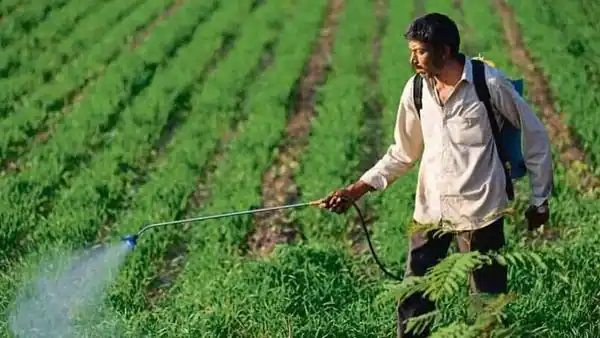
- 01 May 2024
Why is it in the News?
Capping consumption of urea and DAP to correct worsening plant nutrient imbalance is likely to be on the priority list of the government post the Lok Sabha polls.
What is Meant by the Term "Balanced Fertilization"?
- Fertilisers are basically food for crops, containing nutrients necessary for plant growth and grain yields.
- Balanced fertilisation means supplying these primary (N, phosphorus-P, and potassium-K), secondary (sulphur-S, calcium, magnesium), and micro (iron, zinc, copper, manganese, boron, molybdenum) nutrients in the right proportion, based on soil type and the crop’s own requirement at different growth stages.
What is a Nutrient-based Subsidy?
- Nutrient-based subsidy (NBS) is a system started in 2010 to help farmers use the right amount of nutrients in fertilizers.
- Instead of giving a subsidy for each type of fertilizer, the government decided to give subsidies based on nutrients like Nitrogen (N), Phosphorus (P), Potassium (K), and Sulfur (S) in the fertilizers.
- The idea was to encourage farmers to use fertilizers with a balanced mix of nutrients, instead of just focusing on certain types like urea, DAP, and MOP.
- These balanced fertilizers contain a mix of N, P, K, S, and other nutrients in the right amounts.
- At first, this plan seemed to work. Between 2010 and 2012, farmers started using more balanced fertilizers and less of the ones with just one or two nutrients.
- But there was a problem: urea, which is heavily used by farmers, was not included in this plan.
- Since the government controlled the price of urea and only went up a little bit after the NBS was introduced, farmers kept using it more and more.
- This means that even though the NBS helped with other fertilizers, it didn't do much to reduce the use of urea.
Challenges:
- The challenges arise from recent changes in fertilizer pricing and consumption patterns.
- Earlier, companies set prices for non-urea fertilizers, with the government providing subsidies based on their nutrient content.
- However, in the past few years, even non-urea fertilizers have come under price control, especially since January 2024, possibly due to upcoming elections.
- This shift has led to imbalances in nutrient usage.
- For example, the current price of DAP is lower than certain NPKS complex fertilizers, even though it contains less nitrogen and phosphorus.
- As a result, farmers tend to overuse DAP, similar to urea. On the other hand, the price of MOP does not incentivize its use, leading to its reduced incorporation into fertilizers, despite its importance for crop immunity and nitrogen uptake.
- To address these issues, it's crucial to establish a proper price hierarchy among non-urea fertilizers.
- DAP should be priced highest, followed by complexes, with MOP priced the lowest. Additionally, DAP usage should be limited to rice and wheat, while other crops can fulfil their phosphorus needs through complexes and SSP.
- Improving the acceptability of SSP, despite its lower price, can be achieved by marketing it in granular form, which is less prone to adulteration and ensures a slower release of phosphorus without drift during application.
Goldman Environmental Prize
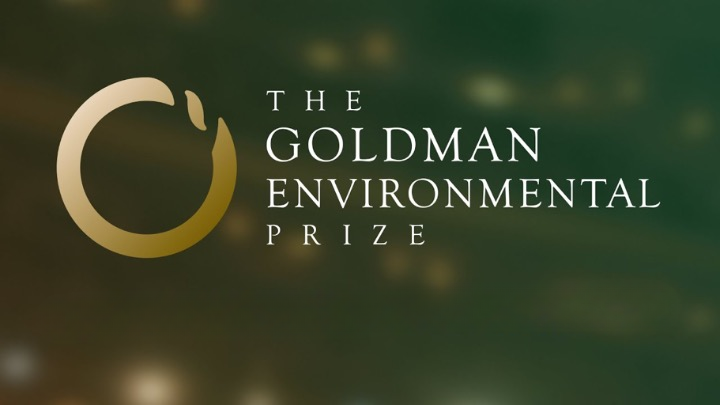
- 01 May 2024
Why is it in the News?
Chhattisgarh-based environment and forest activist Alok Shukla has been honoured with the prestigious Goldman Environmental Prize for his efforts and exemplary community campaign in safeguarding the biodiversity-rich forests in the mineral-rich state.
About Goldman Environmental Prize:
- The Goldman Environmental Prize recognizes grassroots environmental heroes from roughly the world’s six inhabited continental regions:
- Africa
- Asia
- Europe
- Islands & Island Nations
- North America
- South & Central America
- It is also called the Green Nobel.
- The Prize recognizes individuals for sustained and significant efforts to protect and enhance the natural environment, often at great personal risk.
- The Goldman Prize views “grassroots” leaders as those involved in local efforts, where positive change is created through community or citizen participation.
- Through recognizing these individual leaders, the Prize seeks to inspire other ordinary people to take extraordinary actions to protect the natural world.
History:
- Reflecting a lifetime commitment to philanthropy and environmental issues, the Goldman Environmental Prize was founded in 1989 by Richard and Rhoda Goldman.
- The duo envisioned the Prize as a way to demonstrate the international nature of environmental problems and draw public attention to the global need for action.
- By rewarding ordinary individuals for their outstanding environmental achievements, the Goldmans hoped to inspire others to emulate the examples set by the Prize recipients.
- The first Goldman Environmental Prize ceremony took place on April 16, 1990, and it was timed to coincide with Earth Day.
- The recipients of the Goldman Environmental Prize are announced annually in a live ceremony timed to coincide with Earth Day.
- The Prize is awarded in the city of San Francisco, California.
- Prize winners each receive a bronze sculpture in the shape of an Ouroboros.
- Common to many cultures around the world, the Ouroboros, which depicts a serpent biting its tail, is a symbol of nature’s power of renewal.
Patachitra Painting
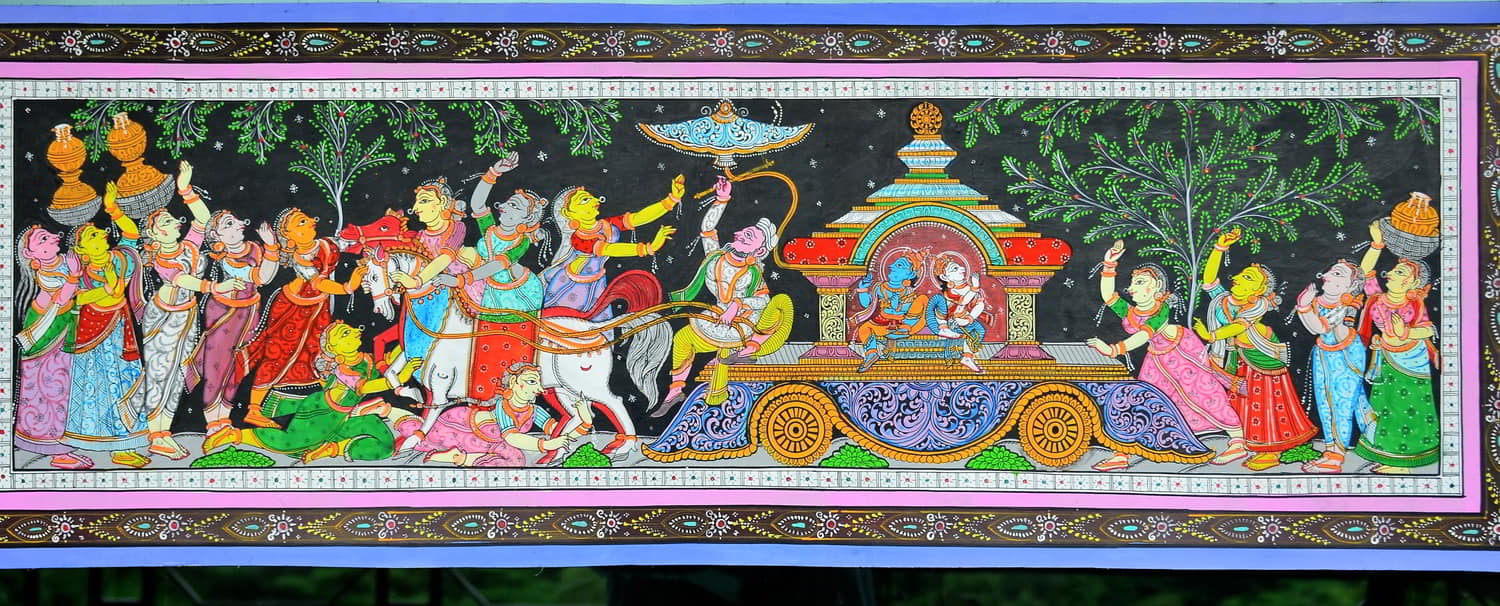
- 01 May 2024
Why is it in the News?
The first-generation women patachitra artists of the village sell their work online & are recognized the world over, encouraging future generations to stay in the profession.
About Patachitra Painting:
- Pattachitra style of painting is one of the oldest and most popular folk art forms of Odisha.
- Pattachitra- literally meaning ‘Picture on cloth canvas’ is a traditional treasure that has mesmerized the common man.
- The Patachitras, the intricate and artistic folk art, of Orissa are icon paintings that include wall paintings, manuscript paintings, palm-leaf etchings, and paintings on cloth, both cotton and silk.
- Pattachitra paintings are made of tussar silk.
- The origin of the paintings is traced to the 8th century A.D., from the fragmented pieces of evidence of cave paintings in Khandagari, Udaigiri, and Sitabhinji.
- Having a reference in the earliest known treatise on a painting called ‘Chitralakshana’, this art form finds its strong roots in the traditions of Lord Jagannath, the presiding deity of Odisha.
- These paintings have a ritualistic significance even to this day.
- The picturesque village of Raghurajpur, on the banks of river Bhargavi is well known for this artistry, along with its neighbours Puri, Dandasahi, and Khasposak.
- The Pattachitra artists are called ‘Chitrakaars’ (Painters), mainly belonging to the Maharana and Mahapatra castes.
- The creation of the Pattachitra paintings is a disciplined art form, and the chitrakars maintain rigidity in their use of colours and patterns, restricting the colours to a single tone.
Making of Paintings:
- Preparing the paints is perhaps the most important part of the creation of Pattachitra, engaging the craftsmanship of the chitrakars in using naturally available raw materials to bring about indigenous paints.
- The gum of the Katha tree is the chief ingredient and is used as a base for making different pigments, on which diverse raw materials are mixed for diverse colours.
- Powdered conch shells, for instance, are used for making a white pigment, while lamp soot is used for a black pigment.
- The root of the keya plant is usually used for making the common brush, while mouse hair is used on the requirement of finer brushes, to be attached to wooden handles.
Street Vendors (Protection of Livelihood and Regulation of Street Vending) Act, 2014
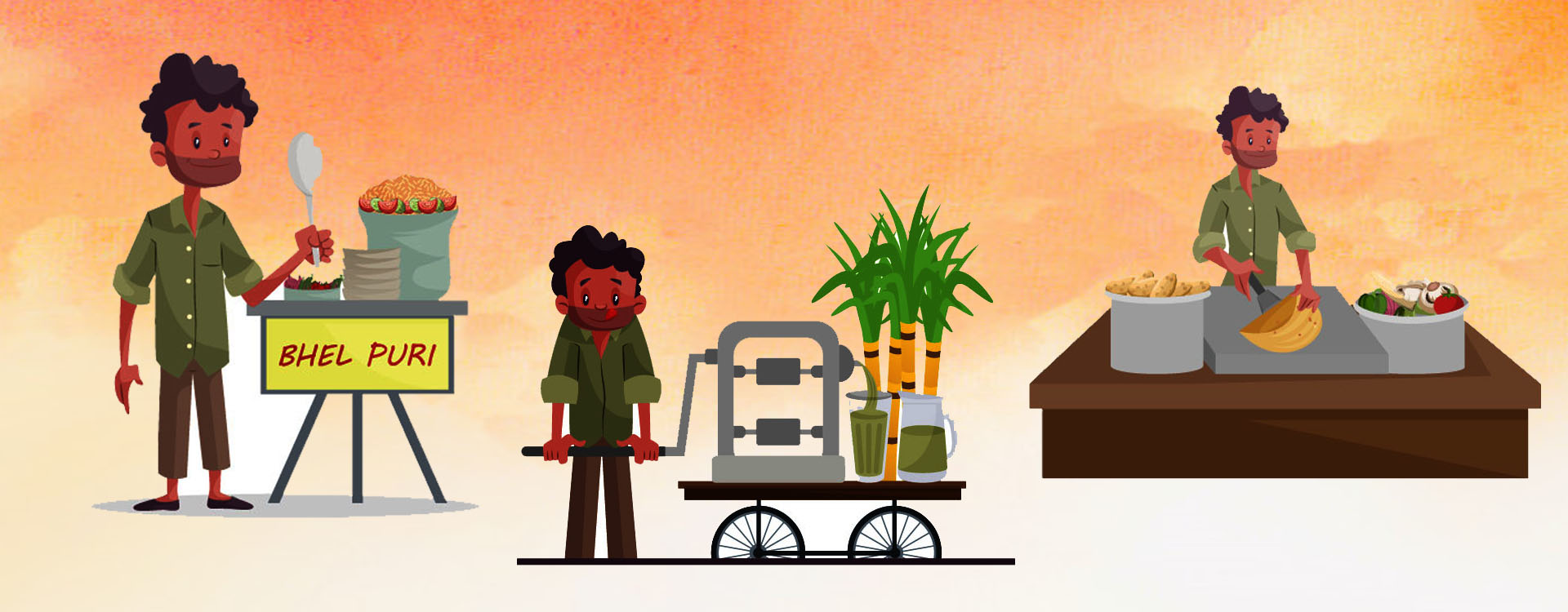
- 01 May 2024
Why is it in the News?
Enacted on May 1, 2014, after decades of advocacy, the Street Vendors Act has achieved progress yet faces implementation challenges in safeguarding vendors' livelihoods.
About Street Vendors (Protection of Livelihood and Regulation of Street Vending) Act, 2014:
- The Street Vendors (Protection of Livelihood and Regulation of Street Vending) Act, 2014 was enacted to legitimize the rights of street vendors (SVs) and regulate their activities.
- It is implemented by respective States/UTs by framing Rules, schemes, Bye-laws and Plan for Street Vending as per provisions of the Act.
- It seeks to safeguard and manage street vending in urban areas, with State-level regulations and initiatives overseen by Urban Local Bodies (ULBs) through the formulation of by-laws, urban planning, and regulatory measures.
- The Act clearly defines the roles and obligations of both vendors and various levels of government.
- One of the primary objectives of the Act is to ensure the inclusion of all "existing" vendors within designated vending zones by issuing vending certificates (VCs).
- It establishes Town Vending Committees (TVCs) as a mechanism for participatory governance, with street vendor representatives comprising 40% of the committee members, including a sub-representation of 33% for women SVs.
- These committees are tasked with overseeing the allocation of vending spaces and ensuring the representation of all existing vendors within vending zones.
- Moreover, the Act provides mechanisms for addressing grievances and disputes, proposing the establishment of Grievance Redressal Committees chaired by a civil judge or judicial magistrate.
- Additionally, it mandates that States/ULBs conduct surveys to identify street vendors at least once every five years, ensuring an updated understanding of the street vending landscape and facilitating effective regulatory measures.
Look Out Circulars (LOCs)
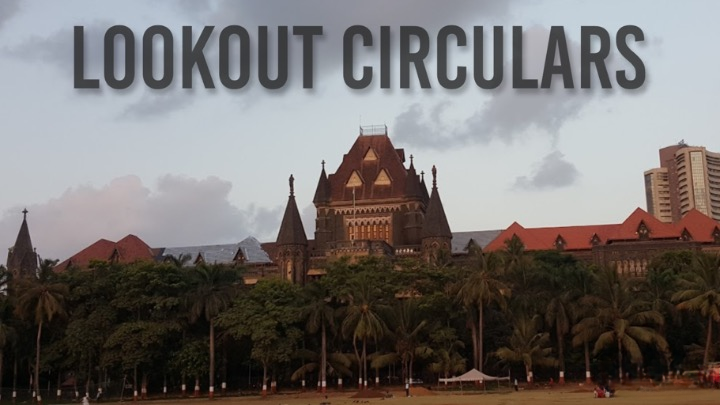
- 01 May 2024
Why is it in the News?
The Bombay High Court has held that public sector banks (PSBs) cannot recommend or request the issuance of Look Out Circulars (LOCs) against loan defaulters and has set aside the provisions of the central government’s Office Memoranda (OM) that empowered PSBs to do so.
What are Look Out Circulars (LOCs)?
- Look Out Circulars (LOCs) is a governmental directive to immigration authorities, instructing them to regulate and restrict the physical movement of individuals.
- Law enforcement agencies utilize them to prevent individuals wanted by the police or under suspicion from leaving or entering the country through designated ports of entry, including land, air, and sea ports.
- Typically issued by police, intelligence agencies, or other authorized government bodies under the Ministry of Home Affairs (MHA), LOCs are not explicitly backed by legislation but are governed by executive directives, such as the Office Memorandum issued by the MHA in 2021.
- This memorandum outlines consolidated guidelines for opening LOCs against both Indian citizens and foreigners.
- The guidelines dictate that LOCs can only be opened in criminal or penal cases, with the reason for the circular clearly indicated.
- However, in exceptional circumstances, LOCs may be issued for reasons detrimental to the sovereignty, security, or integrity of India, bilateral relations with other states, or the strategic and economic interests of India.
- Basic details, including name, parentage, passport number, and date of birth, must be available before issuing an LOC, and the process requires constant monitoring to minimize inconvenience to genuine travellers.
- Additionally, agencies responsible for requesting LOCs must review their requests quarterly and annually, with the results reported to the MHA.
- While the legal consequences of issuing an LOC lie with the originating agency, the power to issue such directives is derived from The Passports Act, 1967, which governs the grant of passports, travel documents, and endorsements to travellers during emigration or immigration processes.
